The architectural landscape of Asia features a tapestry of designs that span centuries and encompass a wide range of styles, purposes, and cultural significance. In India, the Taj Mahal symbolizes enduring love and architectural perfection. Angkor Wat in Cambodia, the largest religious monument in the world, showcases classical Khmer architecture with Hindu and Buddhist influences. The Great Wall of China represents ancient Chinese military architecture and strategy. The Petronas Twin Towers in Malaysia combine Islamic motifs with modern skyscraper aesthetics. The Bagan Temples in Myanmar showcase a blend of Mon, Pyu, and Indian architectural styles. The Forbidden City in China is the world’s largest palace complex. Taipei 101 in Taiwan, once the world’s tallest building, is known for its postmodern style and sustainability features. The Meiji Shrine in Japan, dedicated to Emperor Meiji, features traditional Japanese architecture and faces challenges in preserving wooden buildings and the forest environment. The Grand Palace in Thailand, a former royal residence, blends traditional Thai architecture with European influences. The Burj Khalifa in Dubai, the world’s tallest building, is a landmark of modern architectural engineering. The Kuwait Towers, iconic modernist structures, represent Kuwait’s oil wealth and face restoration challenges due to saltwater corrosion. Petra in Jordan, an ancient city, reflects Nabatean architecture with Hellenistic, Egyptian, and Mesopotamian influences. The Ruins of St. Paul’s in Macau, remnants of a 17th-century church, represent East-meets-West architecture and face weathering challenges. The Lotus Temple in India, a Bahá’í House of Worship, is known for its expressionist lotus flower shape. The Konark Sun Temple in India, dedicated to the sun god Surya, showcases the Kalinga style of Hindu architecture. In Asia, a continent rich in diverse architectural styles, Brutalist architecture stands out for its raw, geometric forms and extensive use of exposed concrete. The Shri Ram Centre for Art and Culture in New Delhi, India; the Tanglin Shopping Centre, The Tokyo Metropolitan Government Building in Japan; the Philippine International Convention Center in Manila; St. John’s Cathedral in Hong Kong; the San Sebastian Church in Manila, Japan’s Meiji Mura Chapel in Inuyama, The Basilica of the Sacred Heart of Jesus in Pondicherry, India, Thailand’s Cathedral of the Immaculate Conception in Chanthaburi, and Our Lady of Lourdes Church in Tiruchirappalli. Asia’s architectural history is also marked by its influential architects. Kenzo Tange of Japan, I.M. Pei of China, Balkrishna Vithaldas Doshi of India, Arata Isozaki of Japan, and Tadao Ando. Asia is home to several leaders in innovation and design. Nikken Sekkei of Tokyo, Japan, WOHA from Singapore. MAD Architects from Beijing, China, SANAA from Tokyo, Japan; The Bjarke Ingels Group, with offices in Copenhagen and Hong Kong; and Herzog & de Meuron from Switzerland, with a presence in Hong Kong, are also influential firms contributing to Asia’s architectural landscape.
1. Taj Mahal
The Taj Mahal in Agra, India, is one of the world’s most famous and iconic architectural landmarks. It is constructed entirely of white marble, lush gardens, interior decorative elements, and a domed structure housing the imperial couple’s tombs. It is designated a UNESCO World Heritage Site, and it annually attracts over 7 million visitors who admire its perfection and enduring romantic symbolism. The Taj Mahal was constructed over 22 years from 1632 to 1654 by order of Mughal Emperor Shah Jahan. The site preparation, foundations, imperial buildings, and mausoleum structure containing the tombs were all completed gradually based on the original design. The Taj Mahal was designed by Mughal imperial architect Ustad Ahmad Lahauri and numerous architects and artisans. Lahauri integrated styles from Persian and Mughal architecture. Thousands of artisans and craftsmen were recruited from across India, Central Asia, and the Islamic world over two decades under the patronage of Shah Jahan to realize the ambitious vision.
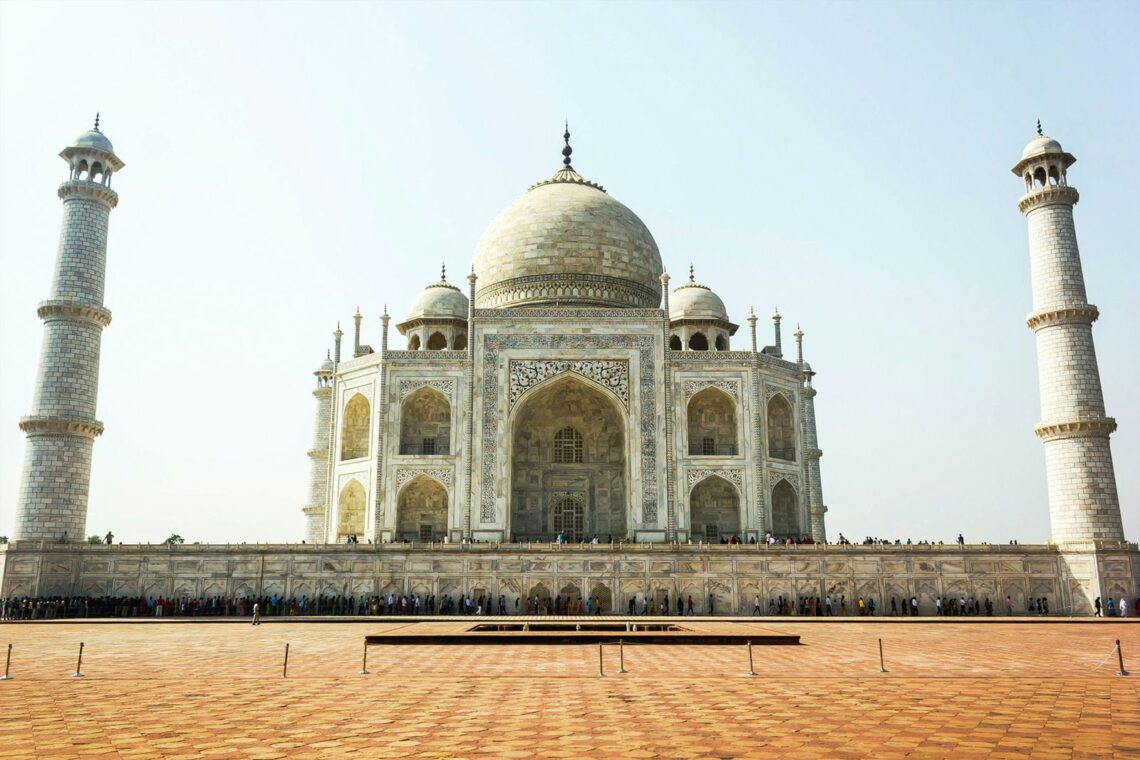
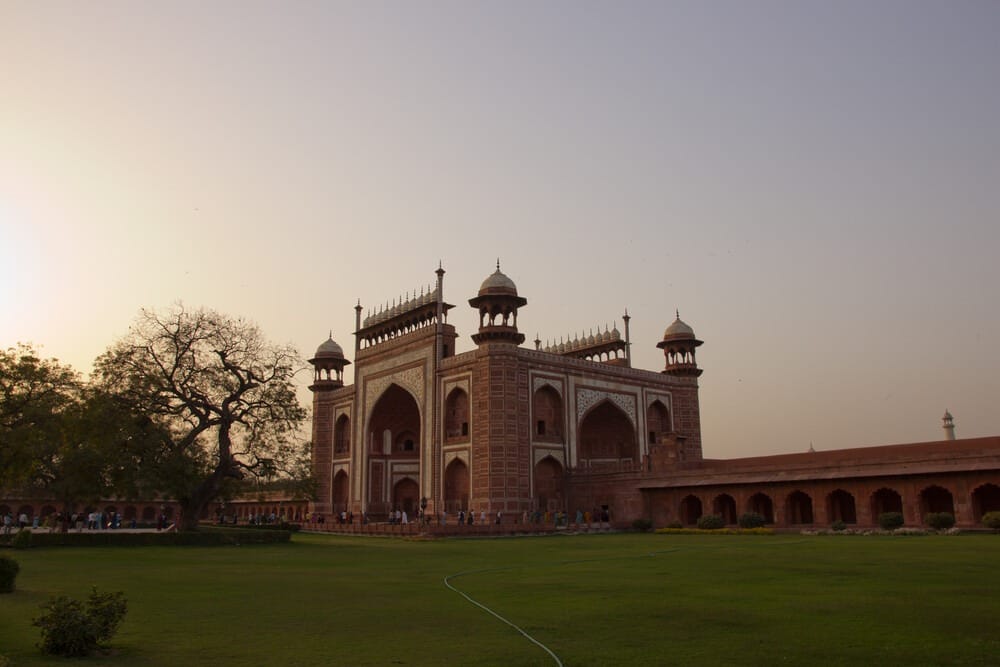
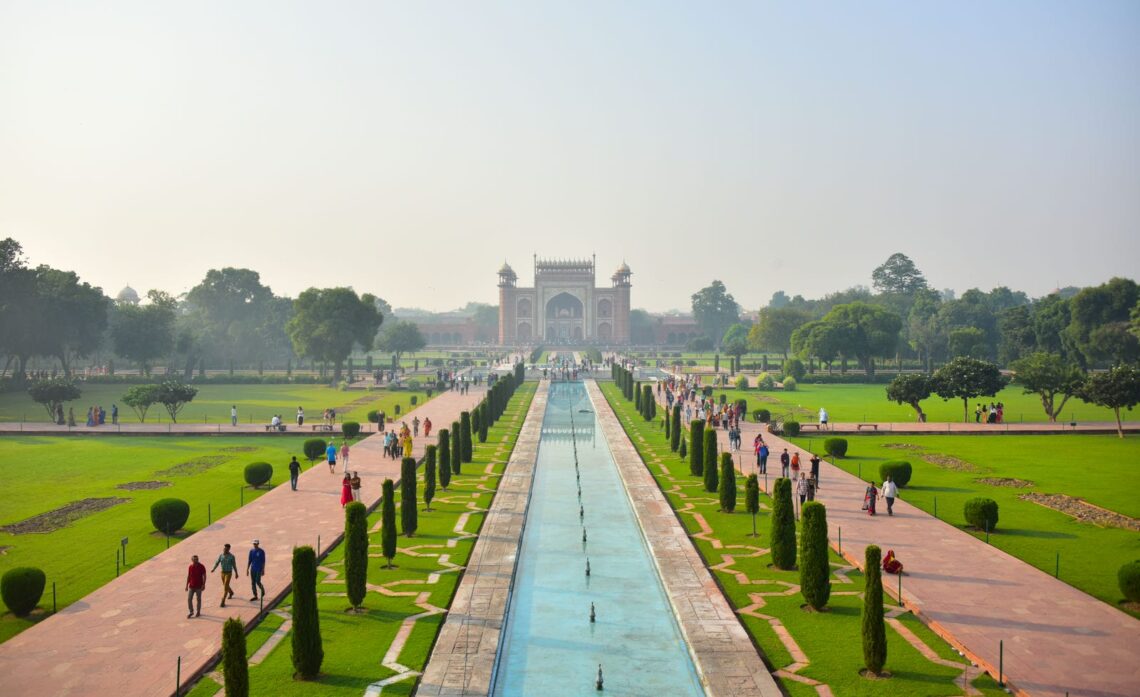
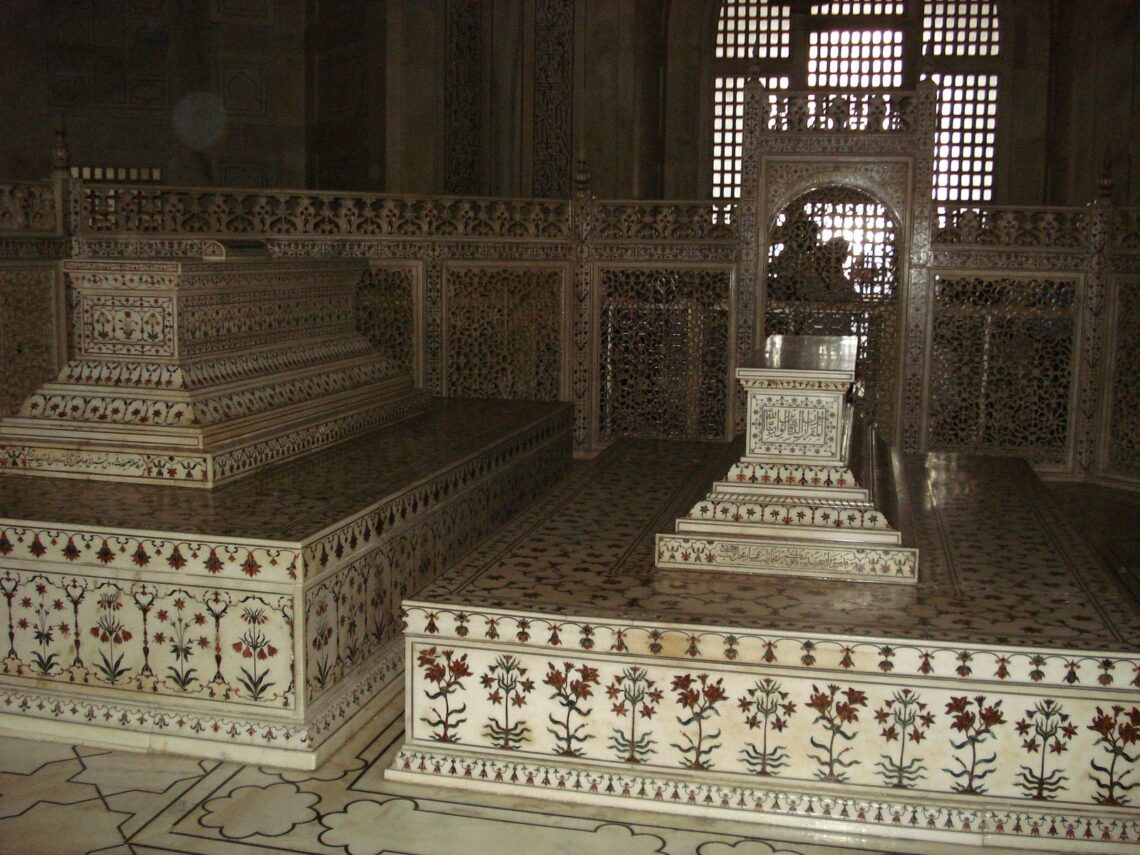
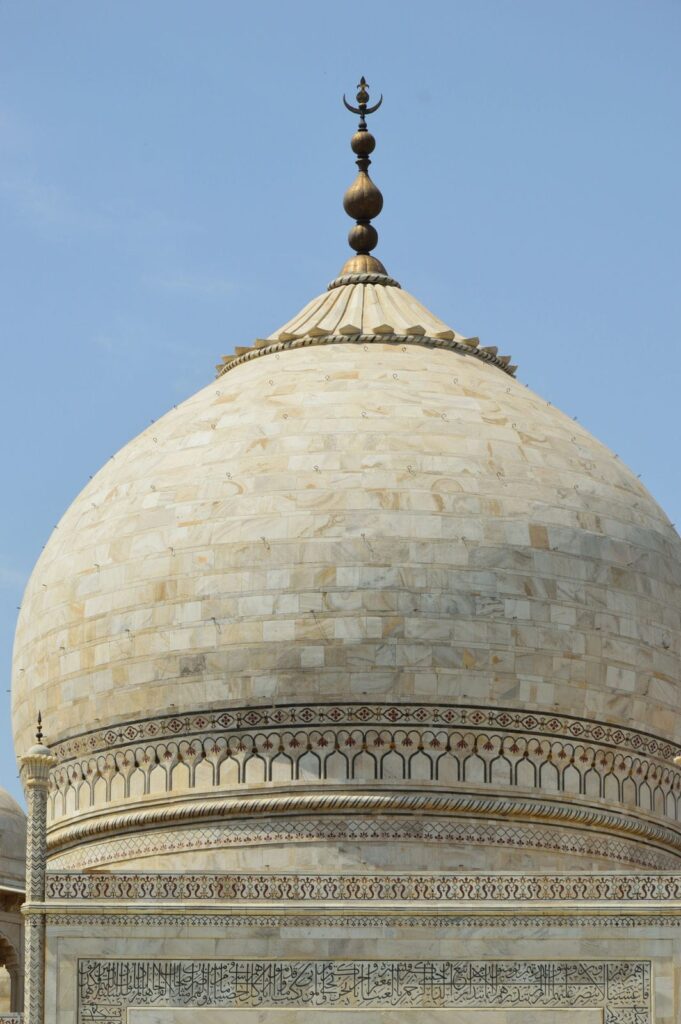
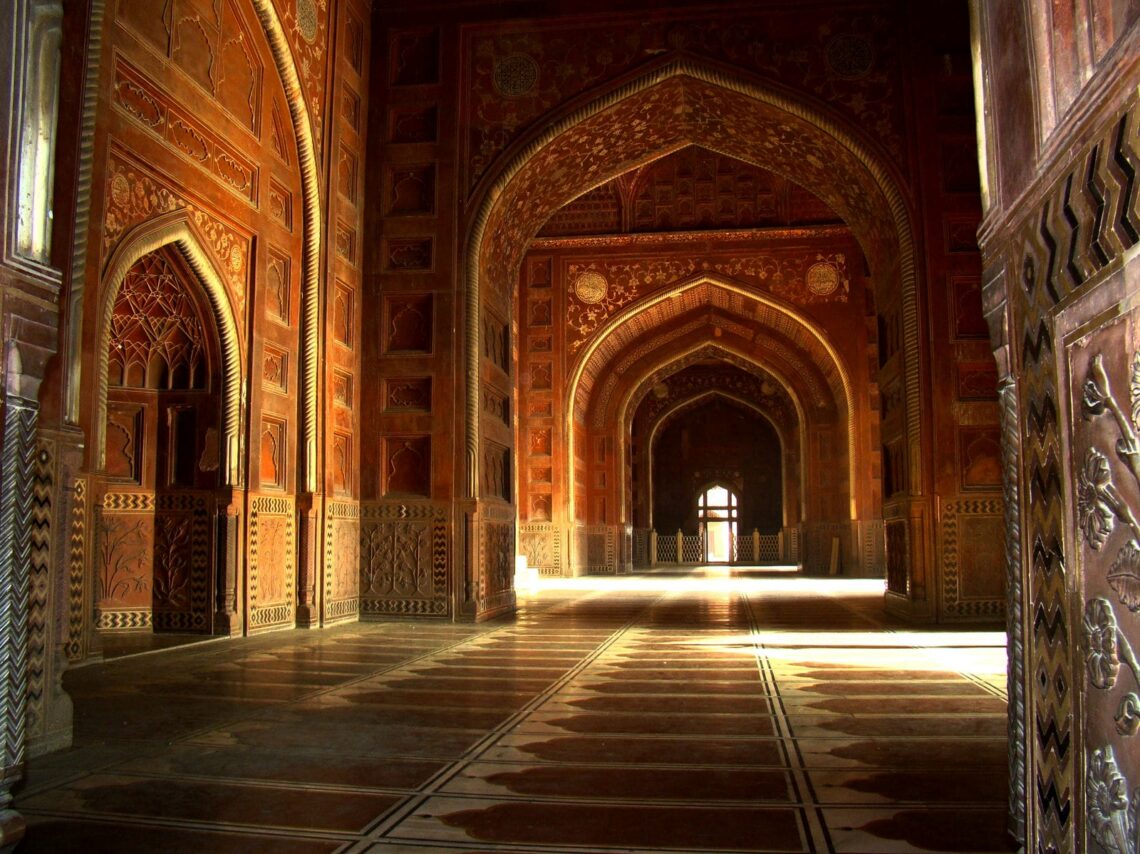
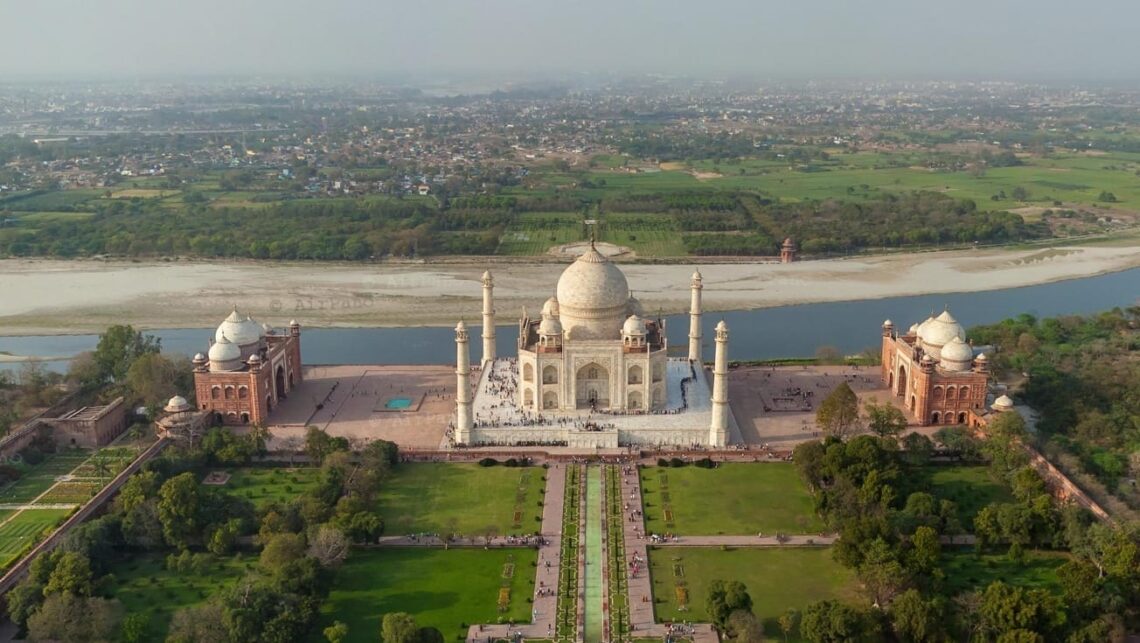
The Taj Mahal integrates characteristics of Mughal architecture like the Charbagh gardens, minarets, arches, and extensive decorative elements while reflecting Persian Timurid architecture’s influence in its large dome, structural symmetry, and floral ornamentation. The Taj Mahal strongly reflects the aesthetics and design priorities of the Mughal architectural style and some borrowed elements from antecedent Persian and Indian architecture. As an architectural jewel commissioned by a Mughal emperor for his wife in the 17th century, the Taj Mahal reflects the opulence, sophistication, and cultural syncretism of the Mughal Empire at its apex. The Taj Mahal represents the pinnacle of Mughal architecture, marked by symmetry, gardens, arches, minarets, and ornate elements that characterize structures built under Mughal patronage.
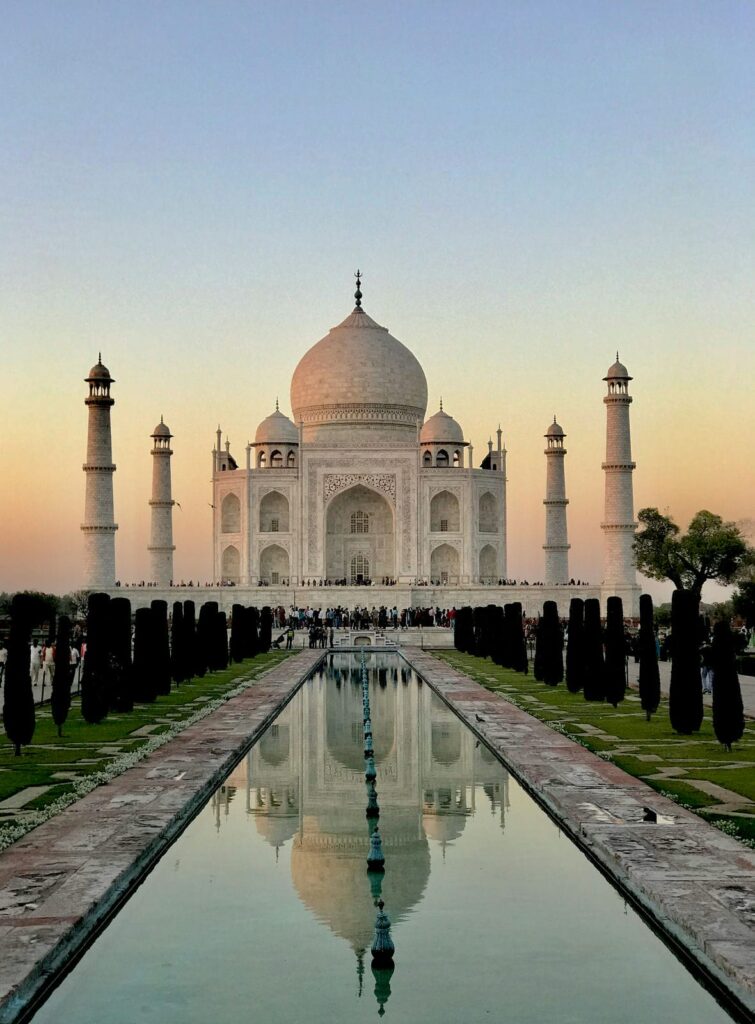
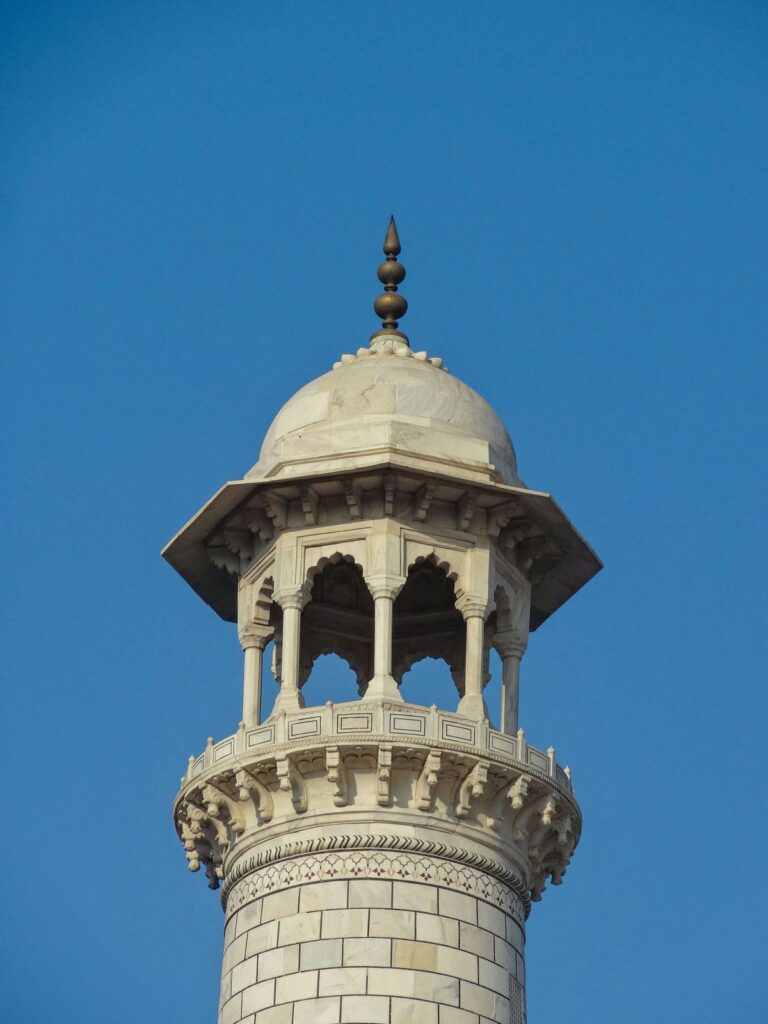
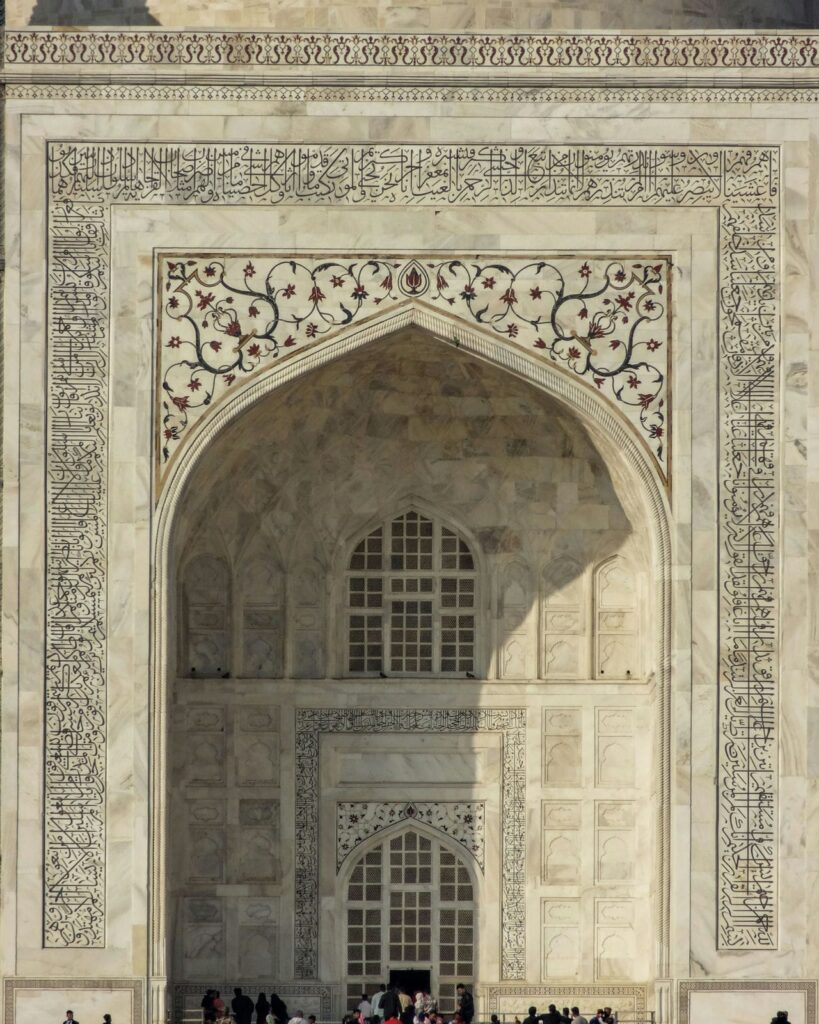
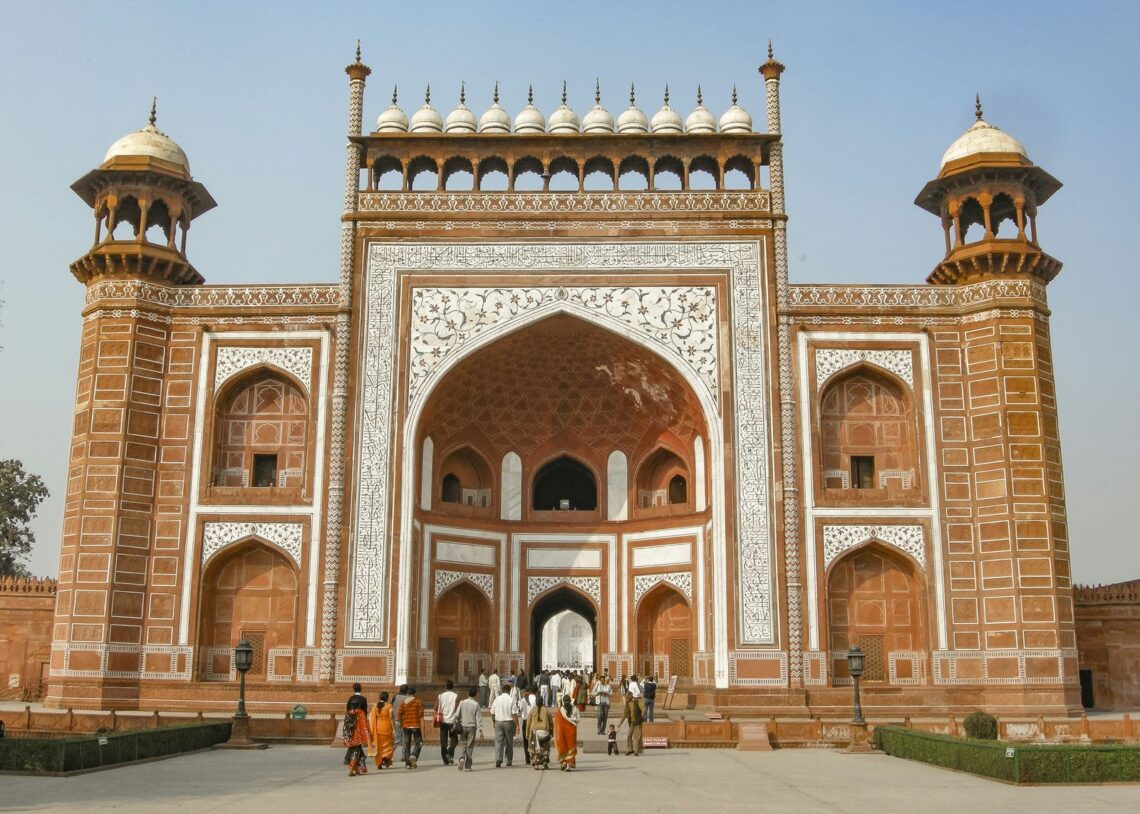
The preservation of the 370-year-old Taj Mahal poses challenges like combating air pollution, discoloring the marble as discussed online, regulating foot traffic through the mausoleum, repairing weather damage, and undoing some problematic prior restorations. The government oversees ongoing conservation efforts through scientific analysis and planning to sensitively restore the UNESCO site consistent with international standards for cultural heritage. The Taj Mahal has basic facilities like emergency medical services, rest areas, ramps, wheelchairs, and accessible garden pathways. More improvements are gradually being introduced to assist disabled visitors and enhance the experience. Many tour providers like Viator offer specialized private Taj Mahal tours tailored specifically for architects, design students, engineers, or architectural enthusiasts. These tours focus on structural design, construction techniques, geometry, measurements, materials, decorative details, and engineering innovations that enabled the Taj Mahal’s construction.
2. Angkor Wat
Angkor Wat, located near Siem Reap, Cambodia, is the largest religious monument in the world, according to UNESCO. Its three-level central temple is surrounded by a massive moat and a complex of temples, libraries, pavilions, and entrance gates enclosed within an expansive outer wall. The Angkor Wat temple complex is located within the Angkor Archaeological Park just north of the main access road between Siem Reap and the Tonle Sap Lake. Angkor Wat construction began around 1113 AD under the direction of King Suryavarman II. The main temple infrastructure and most bas-relief carvings were largely completed by the king’s death about 40 years later, around 1150 AD. Later rulers like Jayavarman VII added structures and decorations over the following century as the complex evolved. Angkor Wat was chiefly designed and constructed under the oversight of Khmer King Suryavarman II, who commissioned the state temple to serve as his funerary monument. Thousands of Khmer architects, engineers, sculptors, and construction workers labored on the temple complex for almost 40 years. After Suryavarman’s death, successors like Jayavarman VII continued embellishing Angkor Wat with their additions.
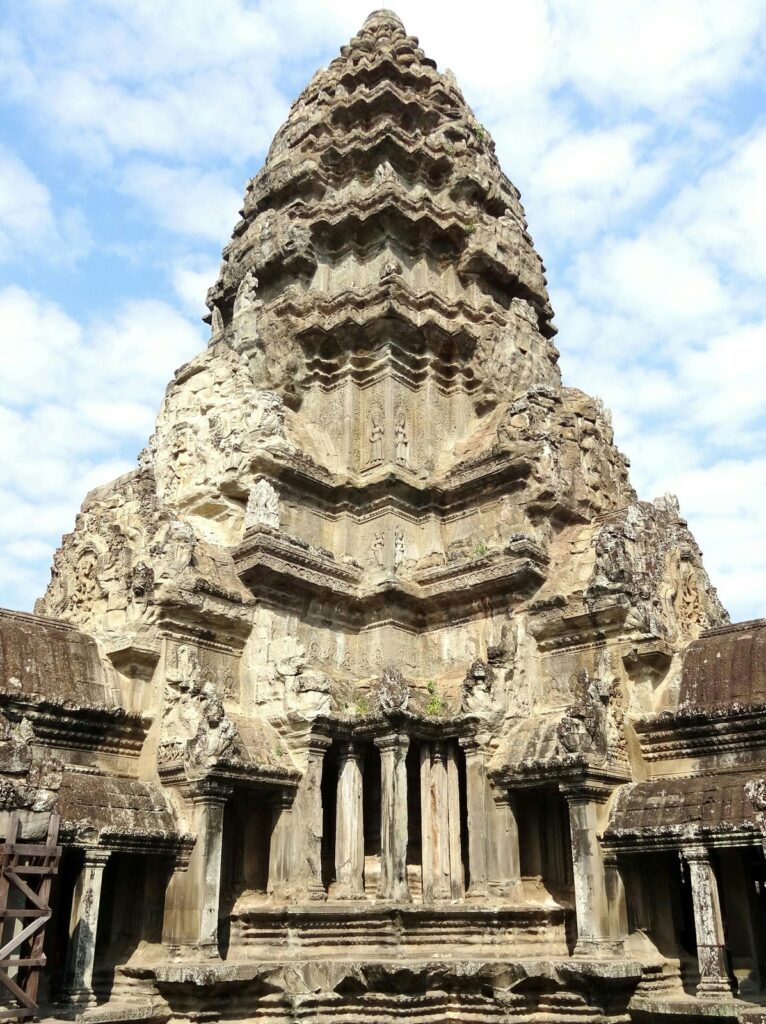
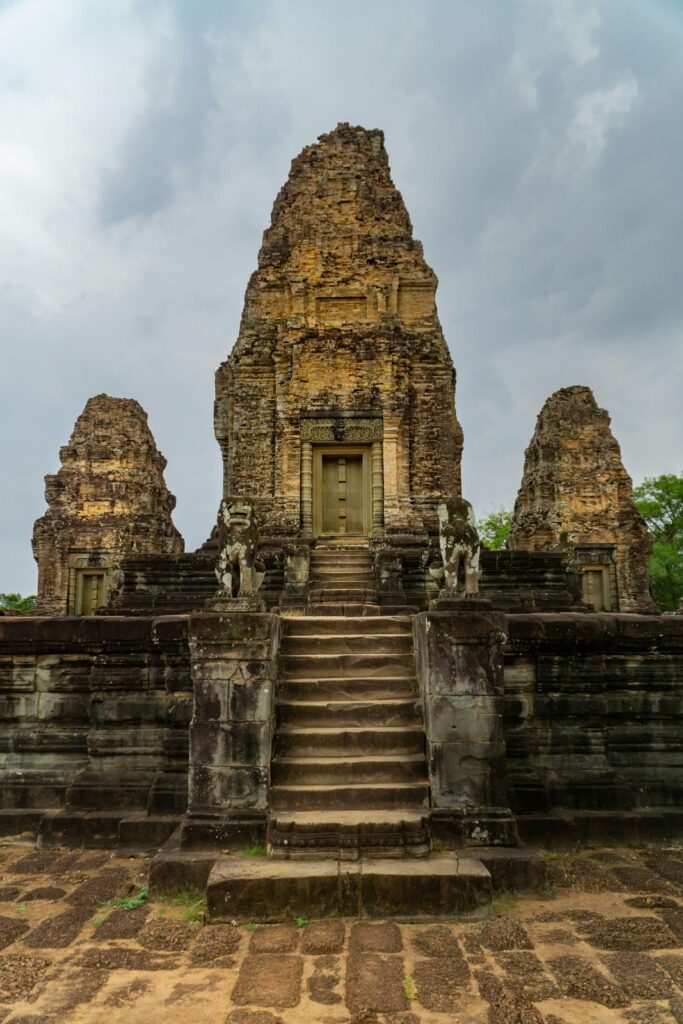
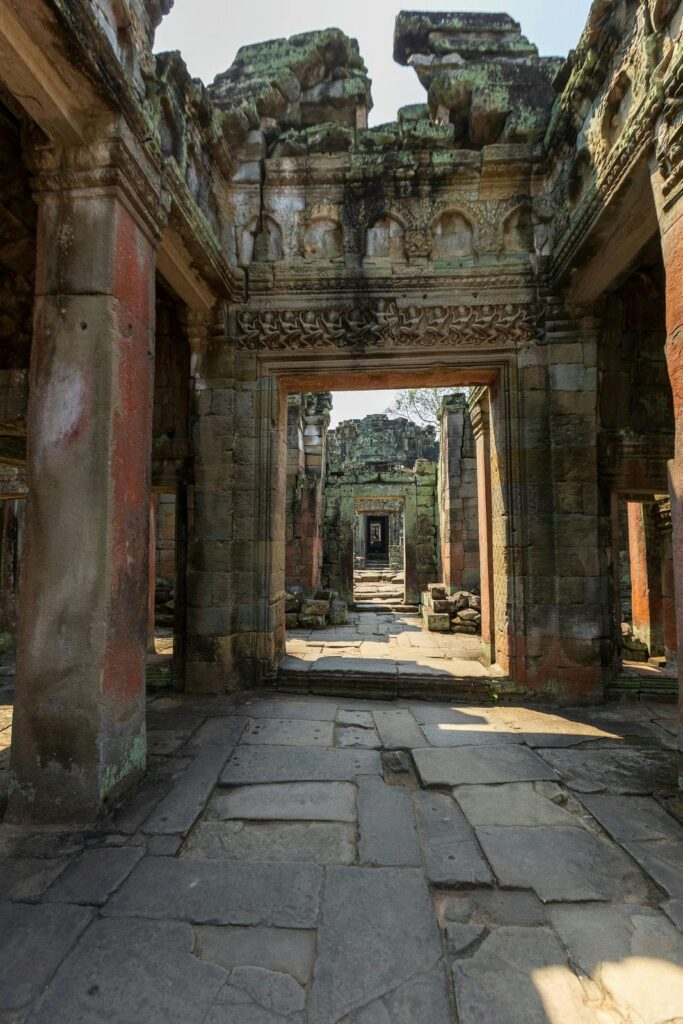
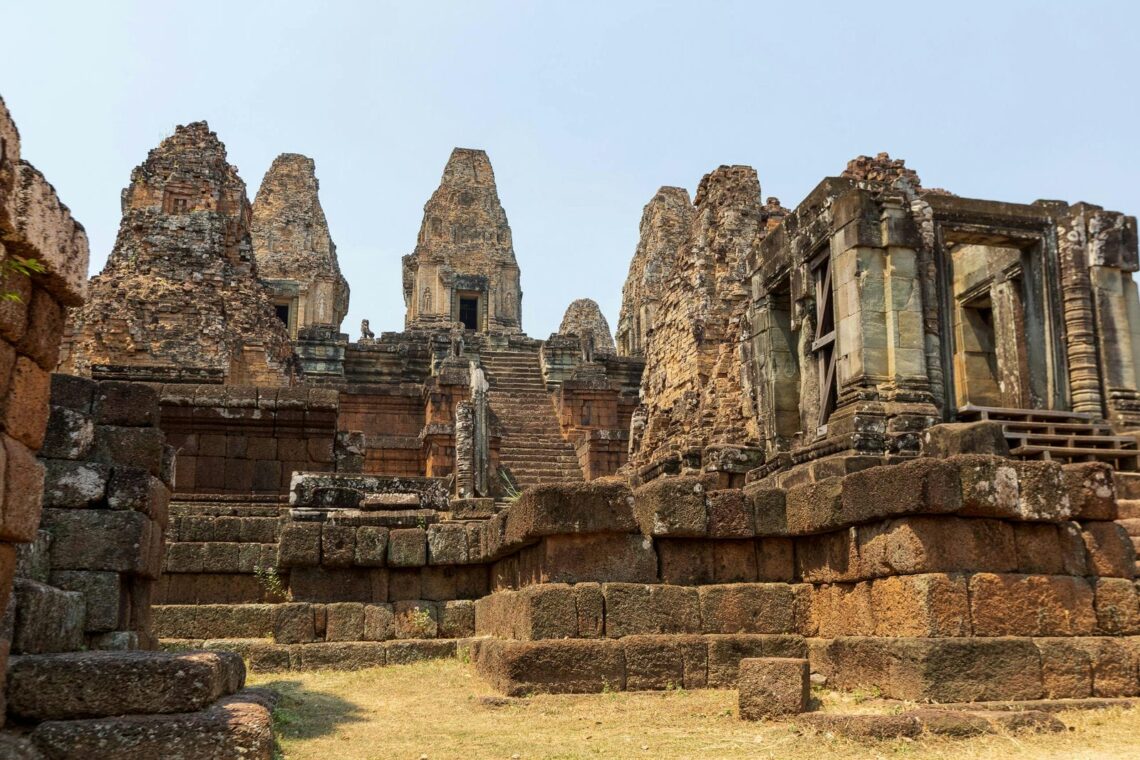
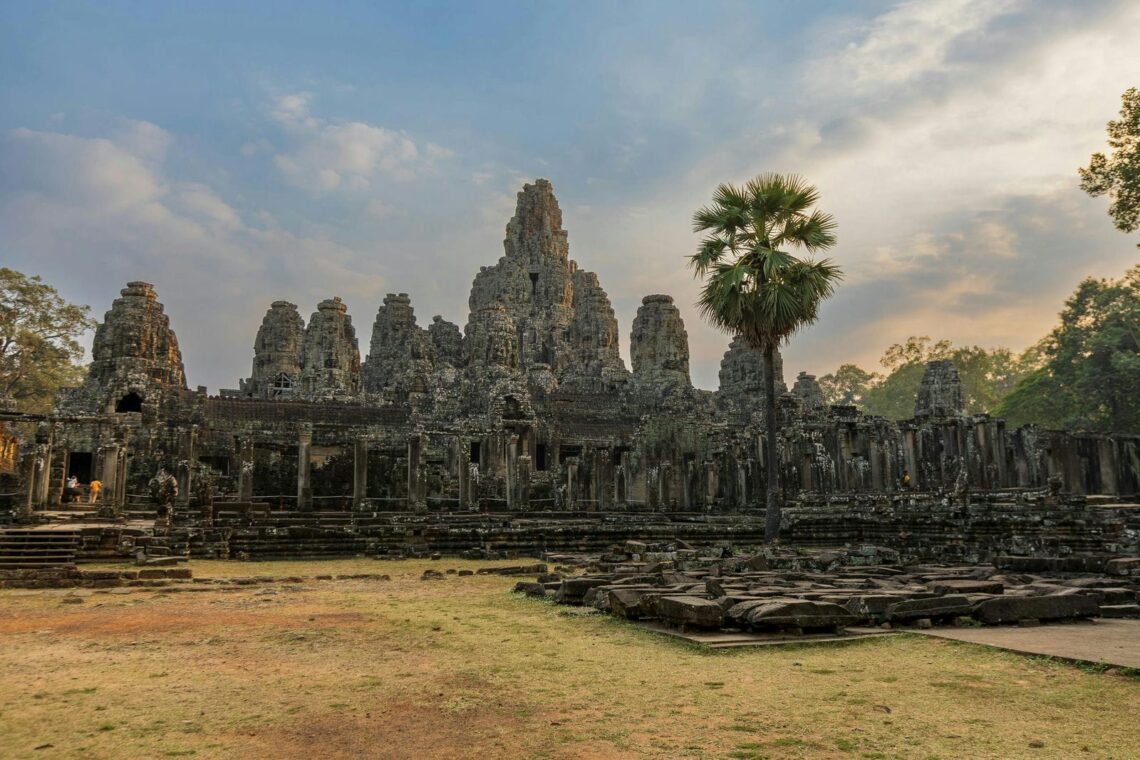
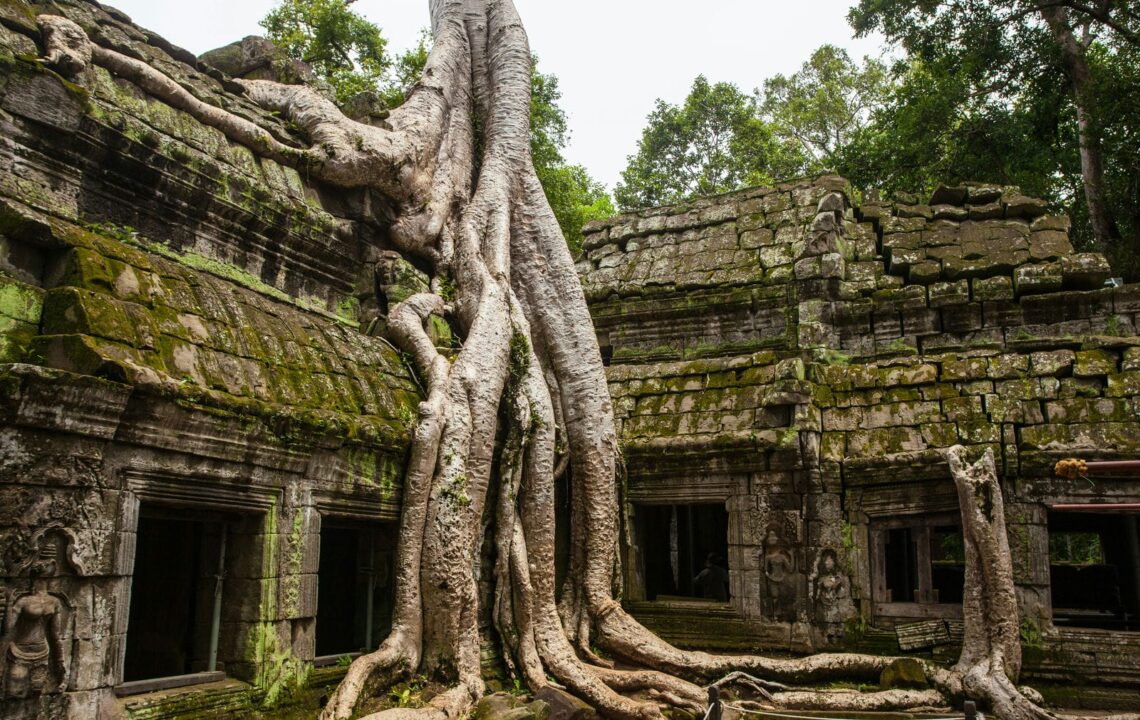
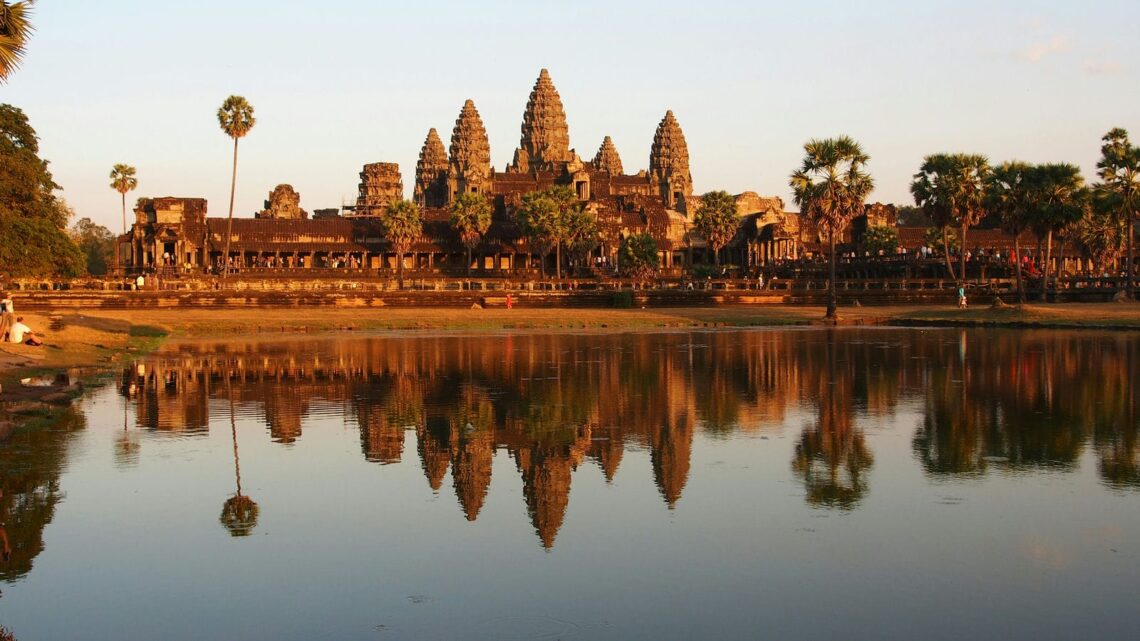
Angkor Wat is considered one of the finest remaining examples of classical Khmer temple architecture, integrating elements of Hindu and Buddhist religious structures, as analyzed by scholars. Distinctive features include the three-level pyramidal central layout representing Mount Meru, extensive bas-relief carvings, concentric enclosures, soaring towers shaped like lotus buds, and ornately decorated columns, roofs, and porticos. Angkor Wat synthesizes influences from Hindu cosmology, as seen in its symbolic layout, Dravidian stonemasonry techniques evident in the artistic stone carvings, and Javanese architectural themes shown by features like its towers and entrance gates, as described by researchers. Incorporating Indic and Southeast Asian architectural elements demonstrates the Khmer Empire’s cultural syncretism. Angkor Wat represents the great power, prosperity, and cultural synthesis of art and architecture achieved under imperial patronage, as explained by guides. Its symbolic Hindu-Buddhist iconography and orientation reflect religious practices. Angkor Wat represents the pinnacle of classical Khmer architecture and stonemasonry.
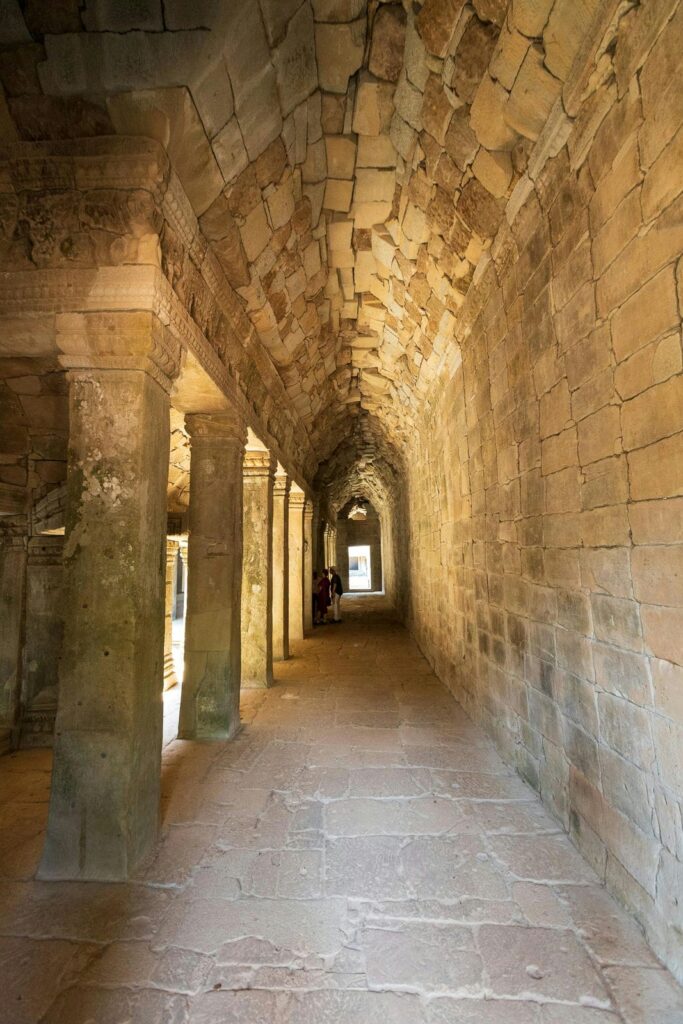
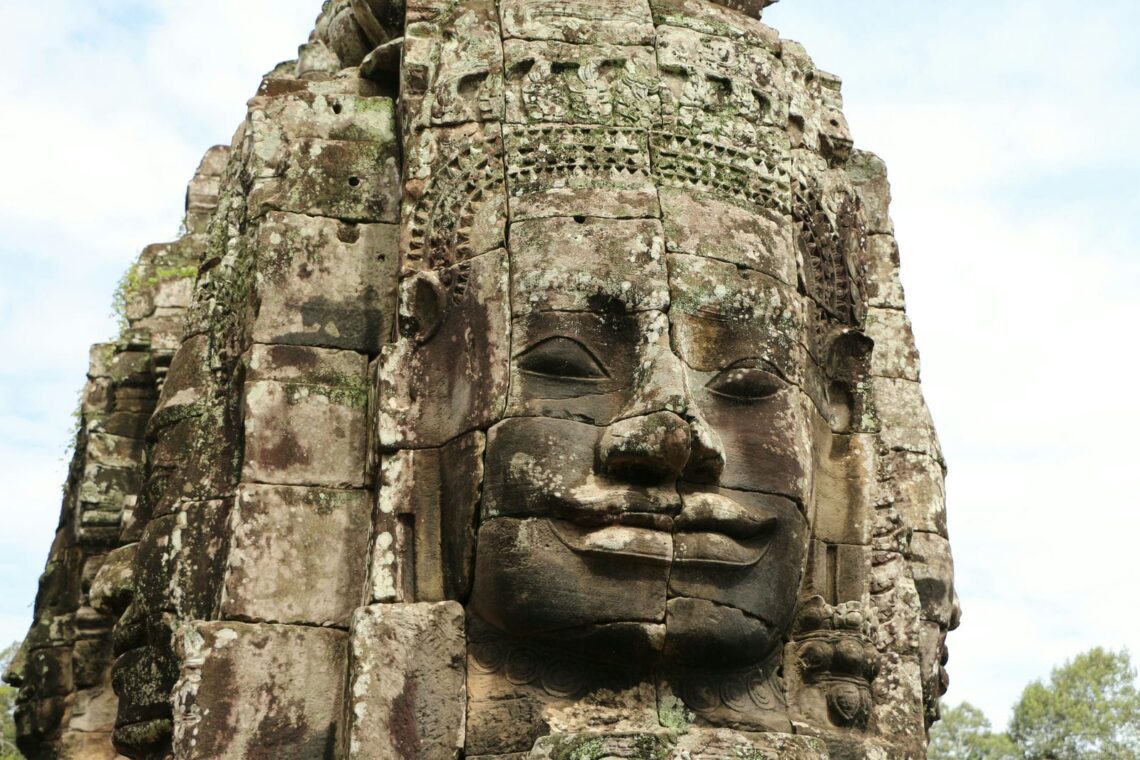
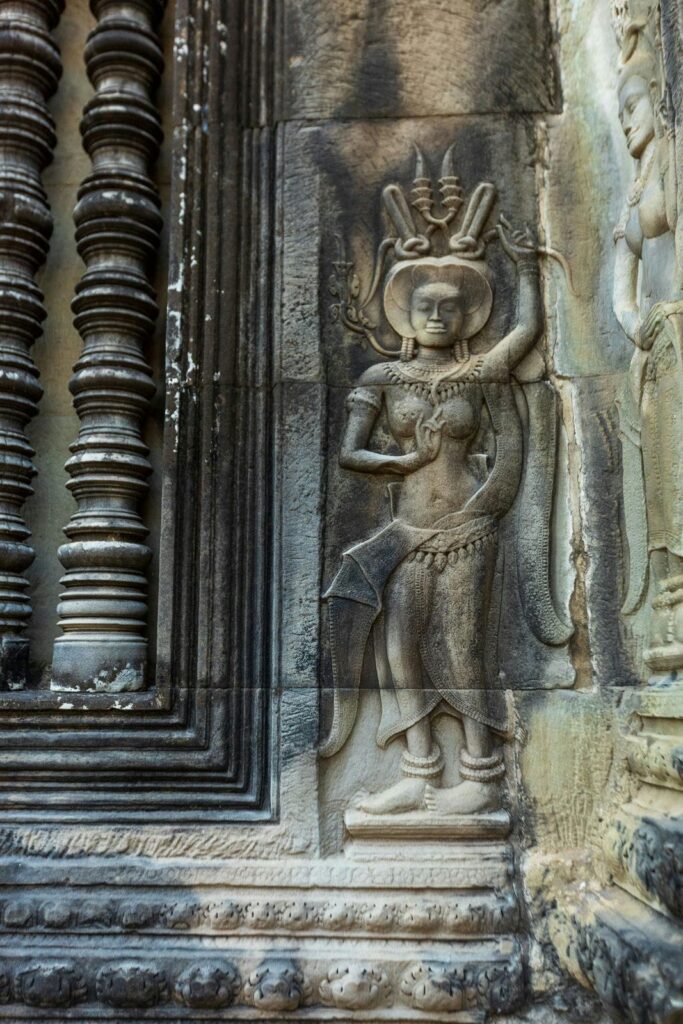
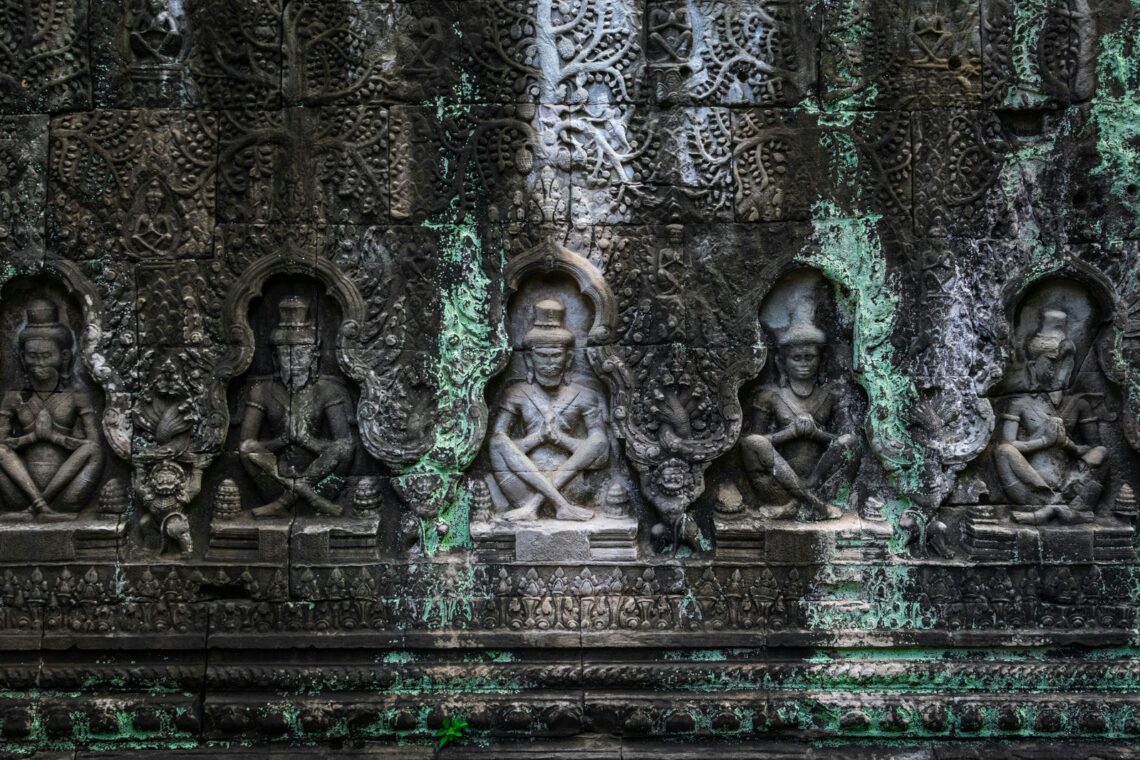
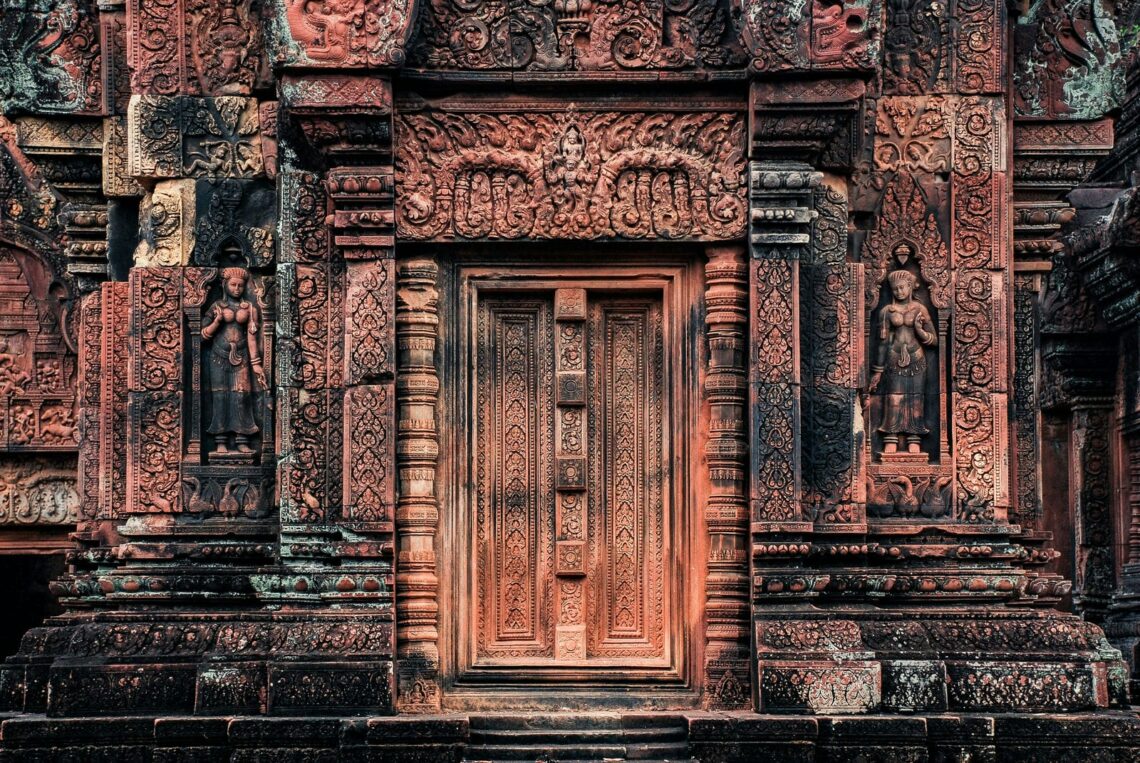
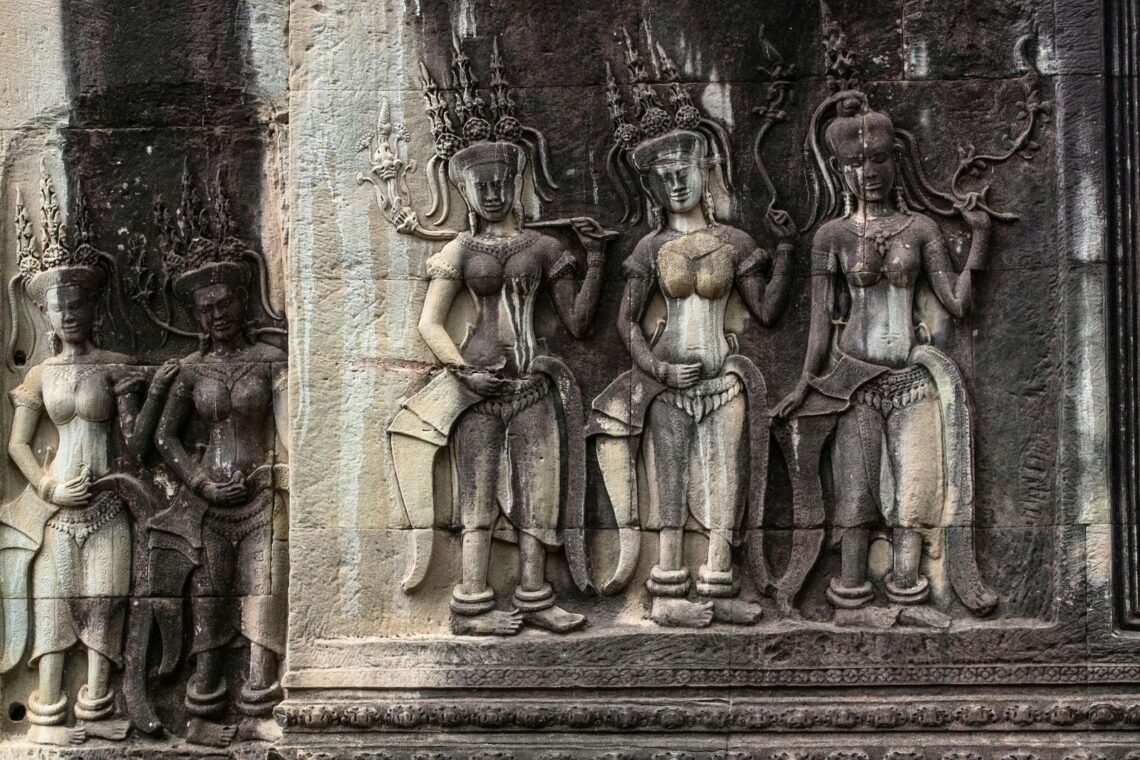
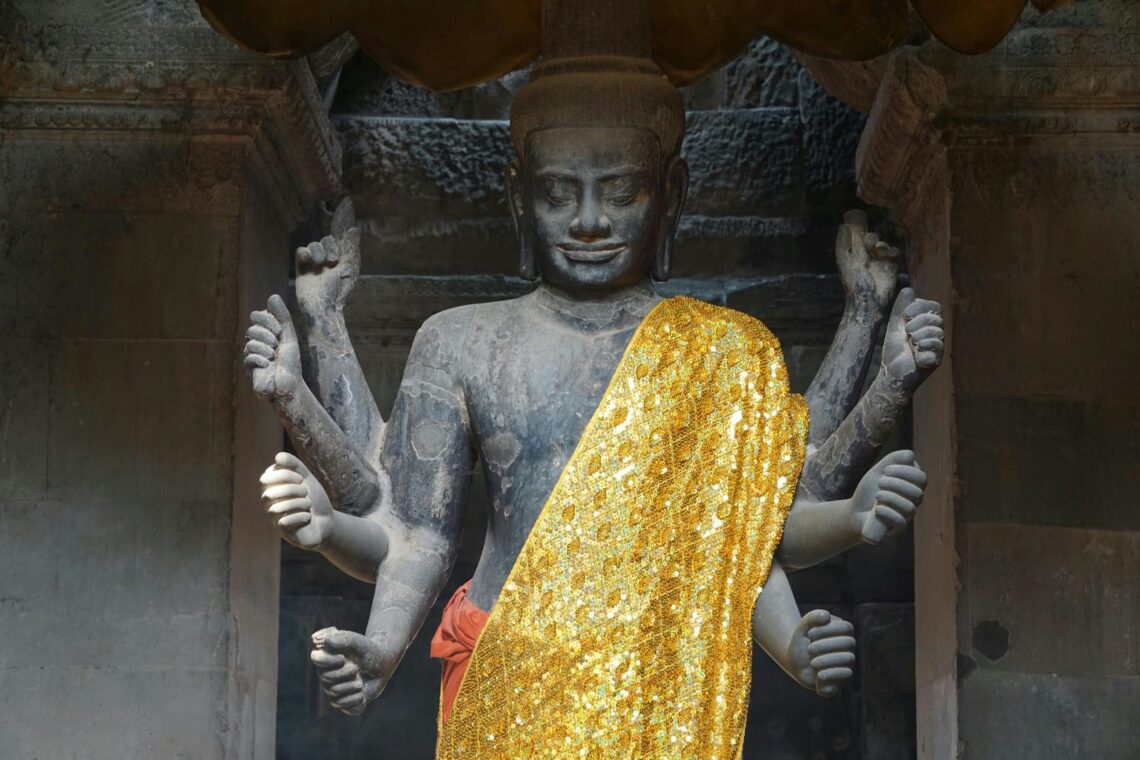
Experts involved in Angkor Wat’s ongoing restoration cite issues like securing adequate funding and resources, balancing preservation with modern functionality, protecting delicate stonework and bas-reliefs from weathering, preventing further structural damage from tourism, and regular maintenance of the expansive complex as recurring challenges. Political instability has disrupted conservation efforts in the past as well. n recent years, wooden staircases have been constructed to facilitate visitor access, along with metal handrails and non-slip surfacing. Safety signage in multiple languages helps tourists navigate the sprawling site. Many Siem Reap tour companies, like Royal Angkor Tours, offer private guided tours of Angkor Wat tailored specifically for architects, engineers, design professionals, and architecture students. These specialized tours provide an in-depth examination of structural engineering, construction techniques, architectural layout, decorative design features, and restoration efforts from expert local guides with architectural knowledge.
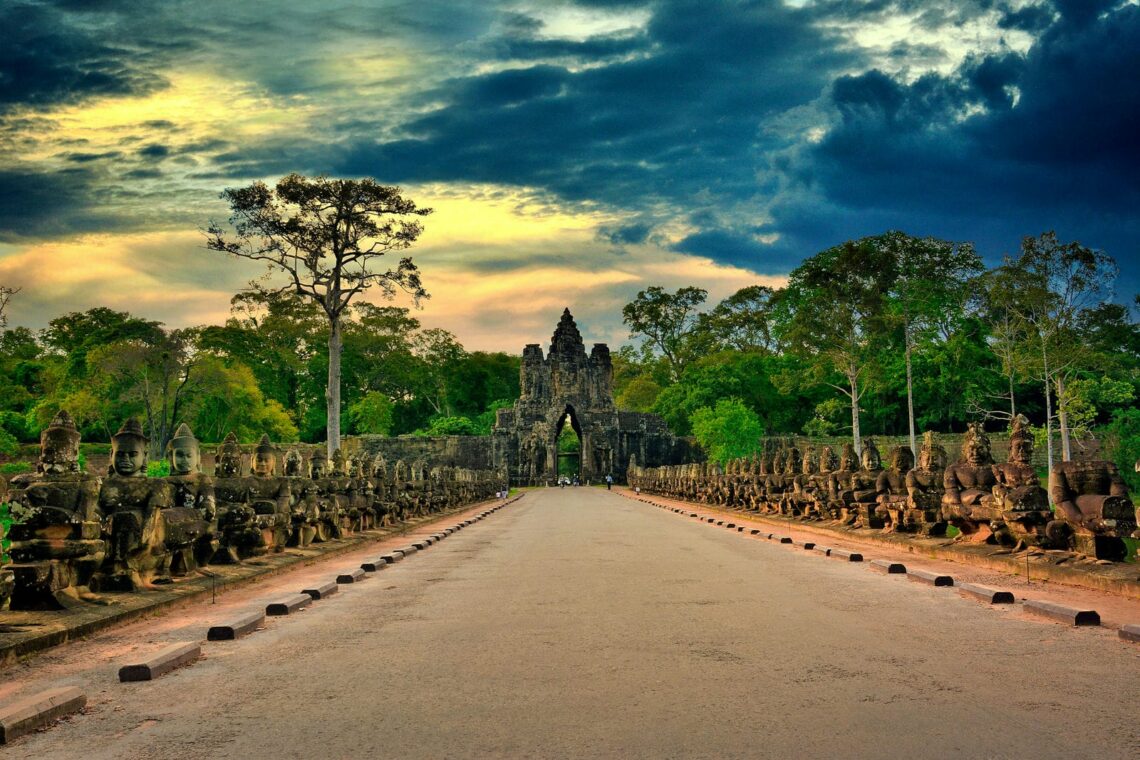
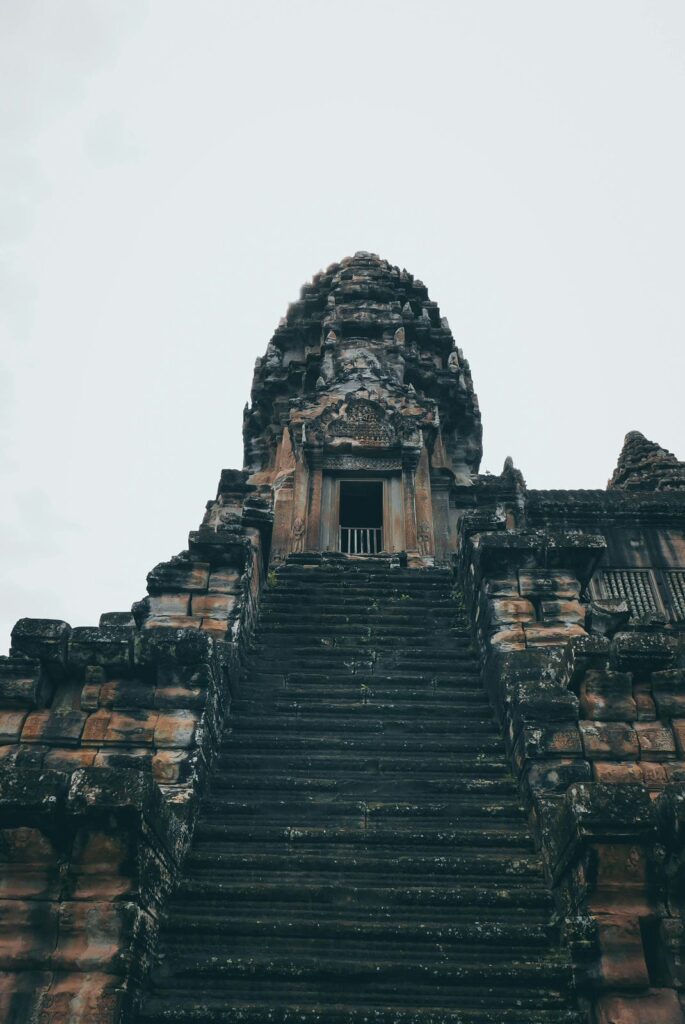
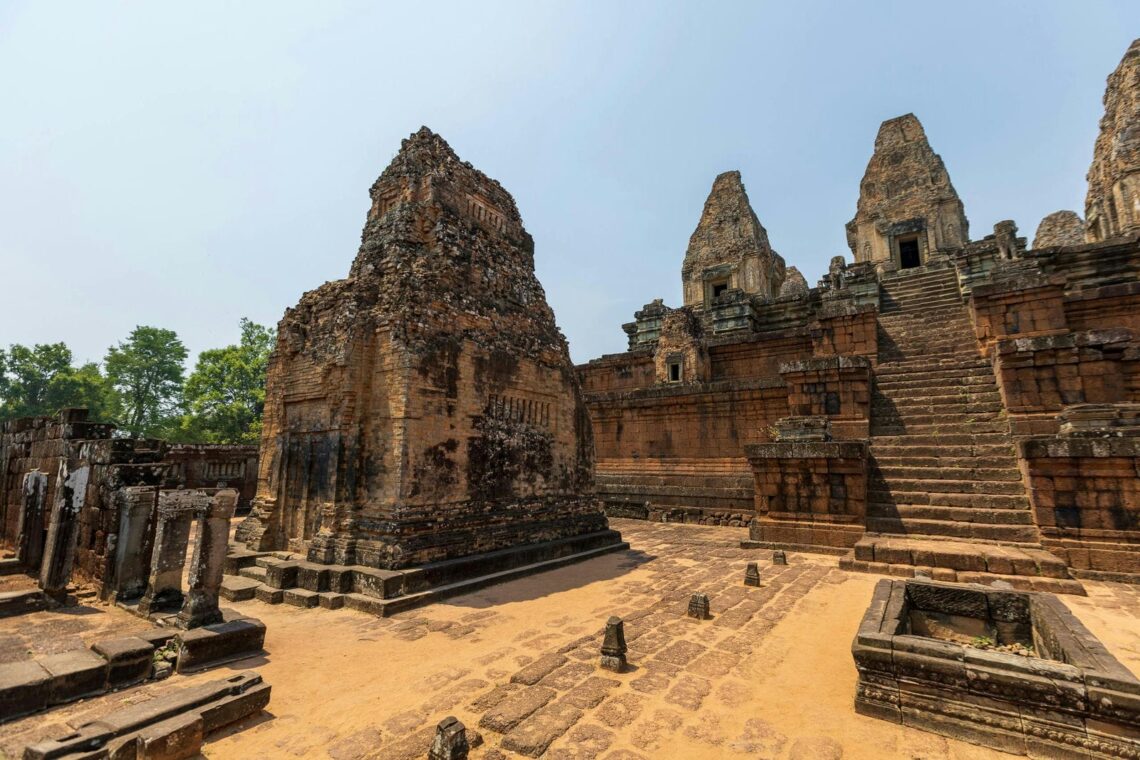
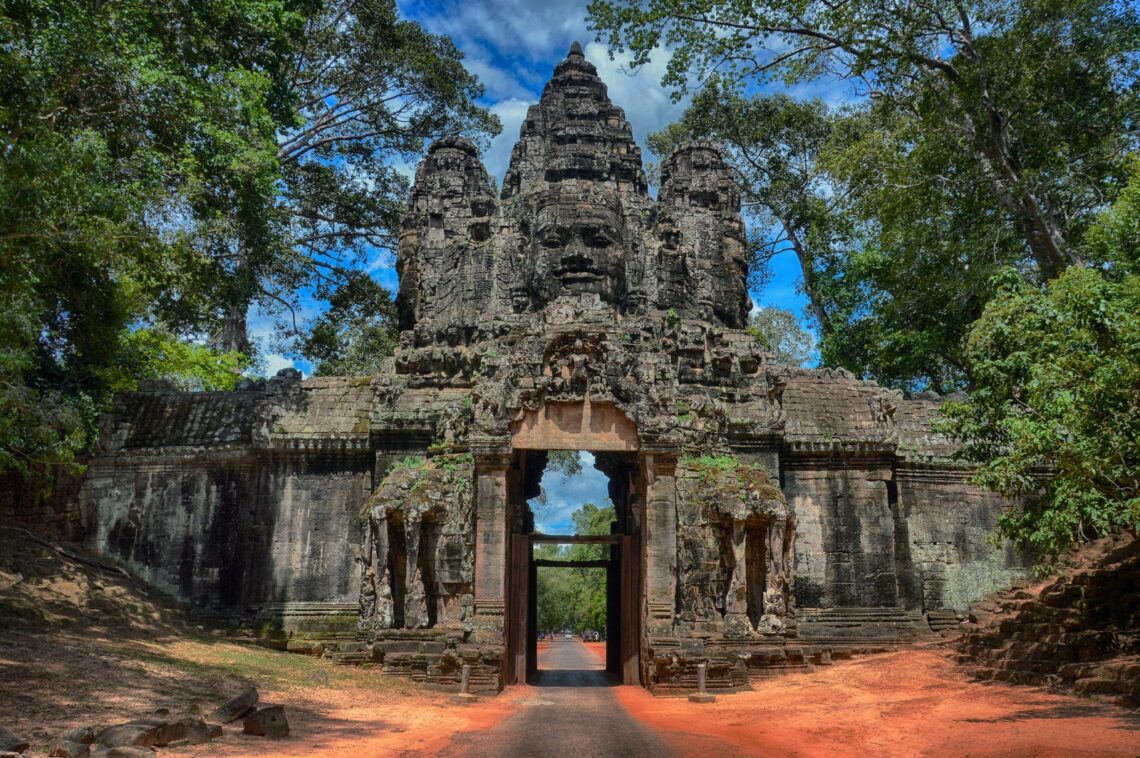
3. Great Wall of China
The Great Wall of China is one of the World’s New Seven Wonders. The Great Wall traverses 15 provinces and cities in northern and northwestern China. Key sections are located outside Beijing, like Badaling and Mutianyu, in mountain passes with views of the capital region. The Great Wall was constructed in phases over 2,000 years by successive dynasties like the Qin, Han, Sui, and Ming. It started in the 7th century BC by various Chinese dynasties, the Great Wall stretches over 13,000 miles across northern China, making it the longest fortification in history. Originally built to protect Chinese states from nomadic invaders, the stone and brick watchtowers, garrison stations, and defensive walls came to symbolize Chinese civilization. Chinese emperors ordered the Great Wall’s construction by conscripting peasants, soldiers, criminals, and artists into labor corps numbering hundreds of thousands. Overseen by architects and engineers, these laborers manually quarried and transported material, fused bricks, and stones into walls, dug trenches, and built guard towers along fortification lines shielding northern China for over 2,000 years.
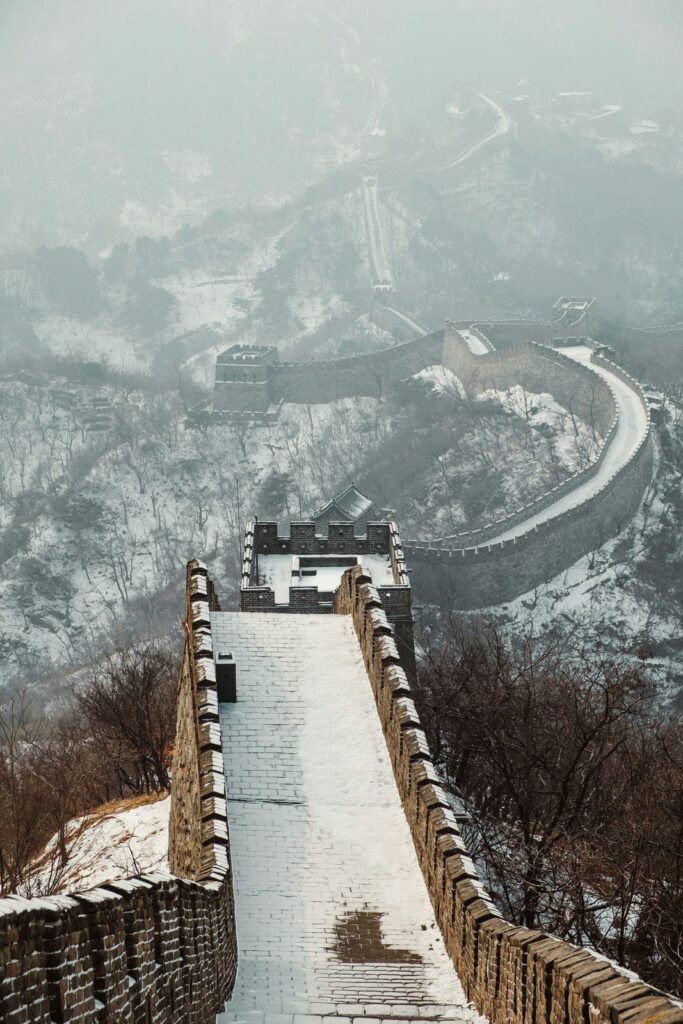
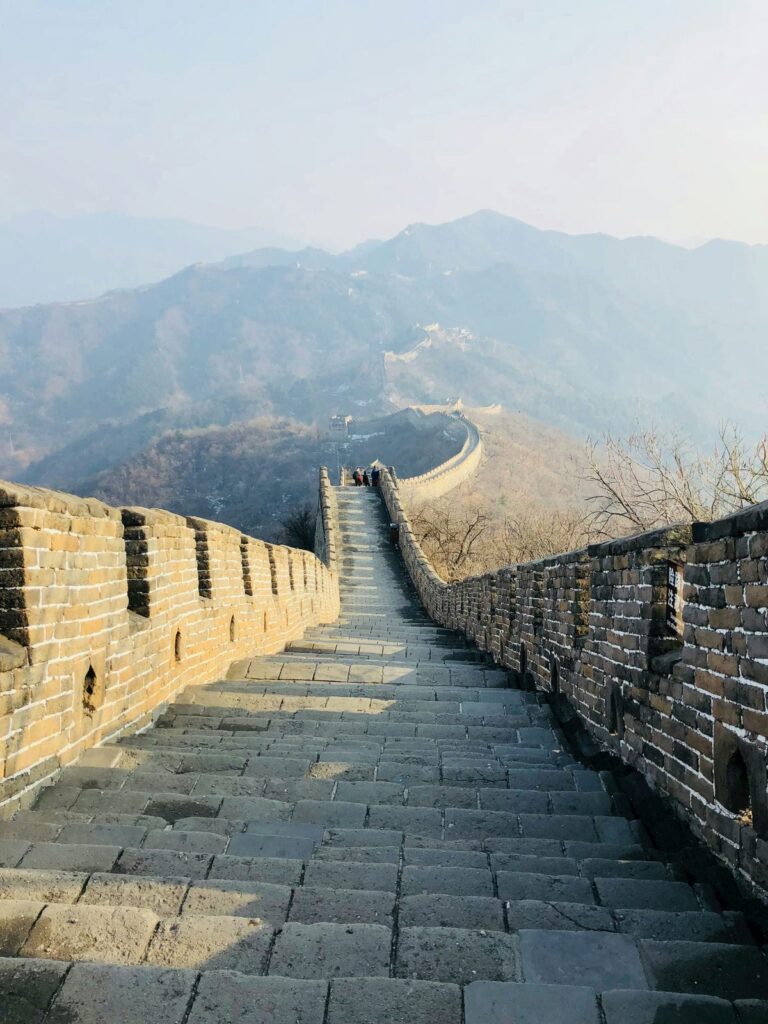
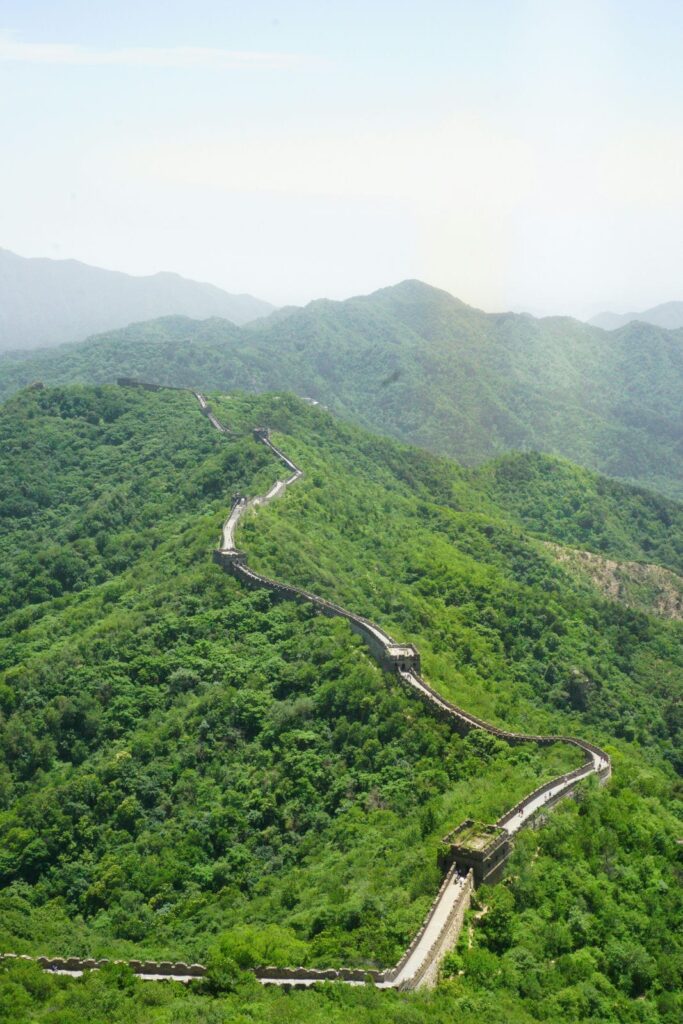
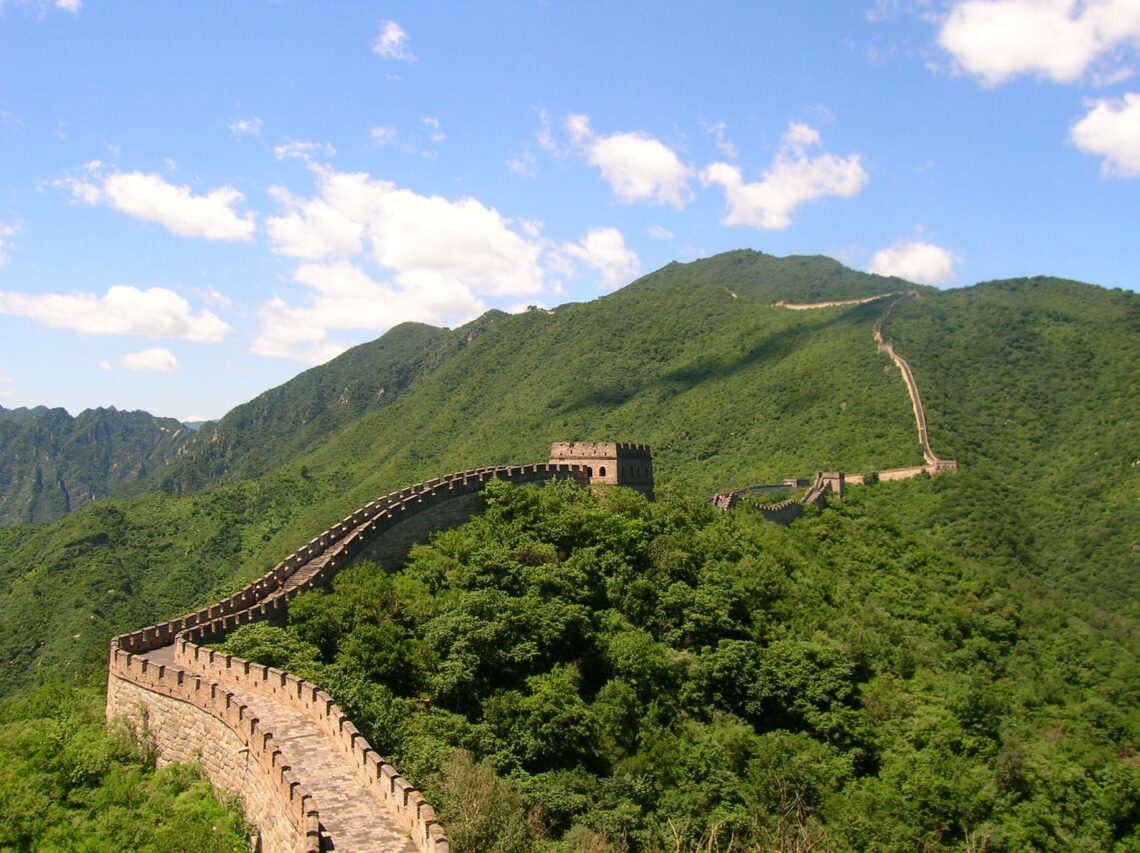
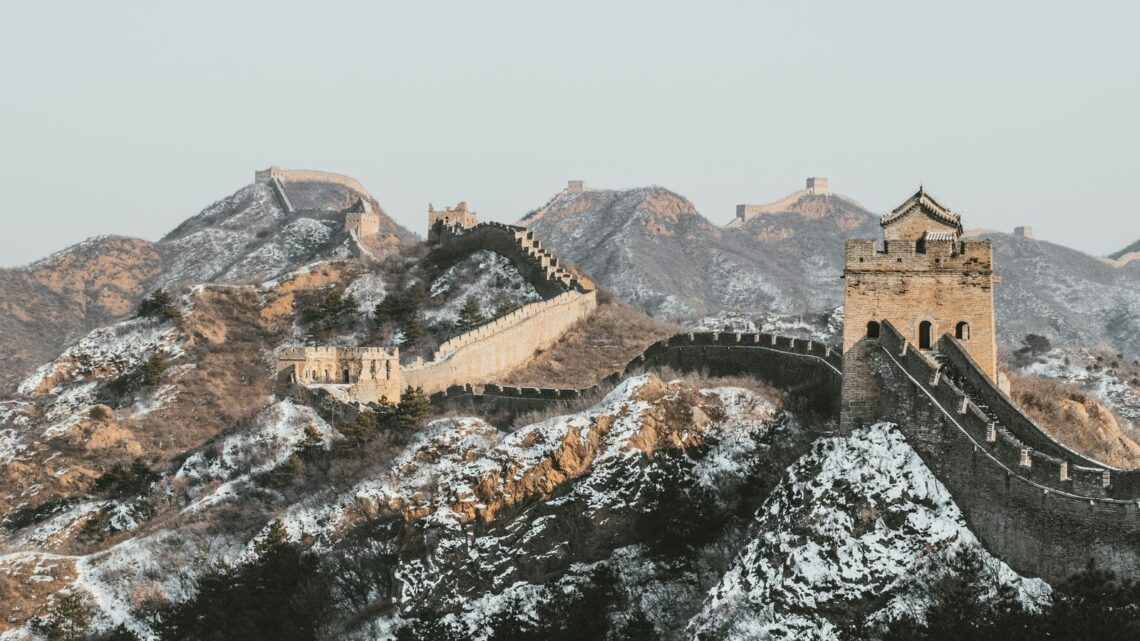
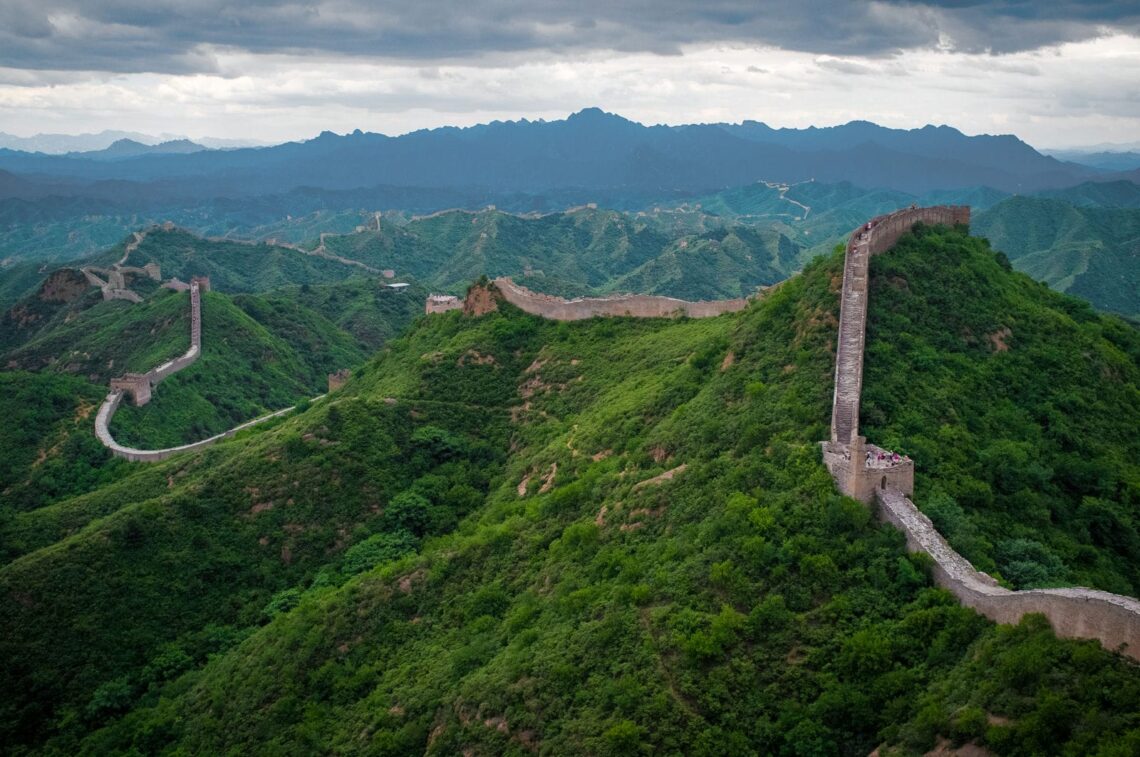
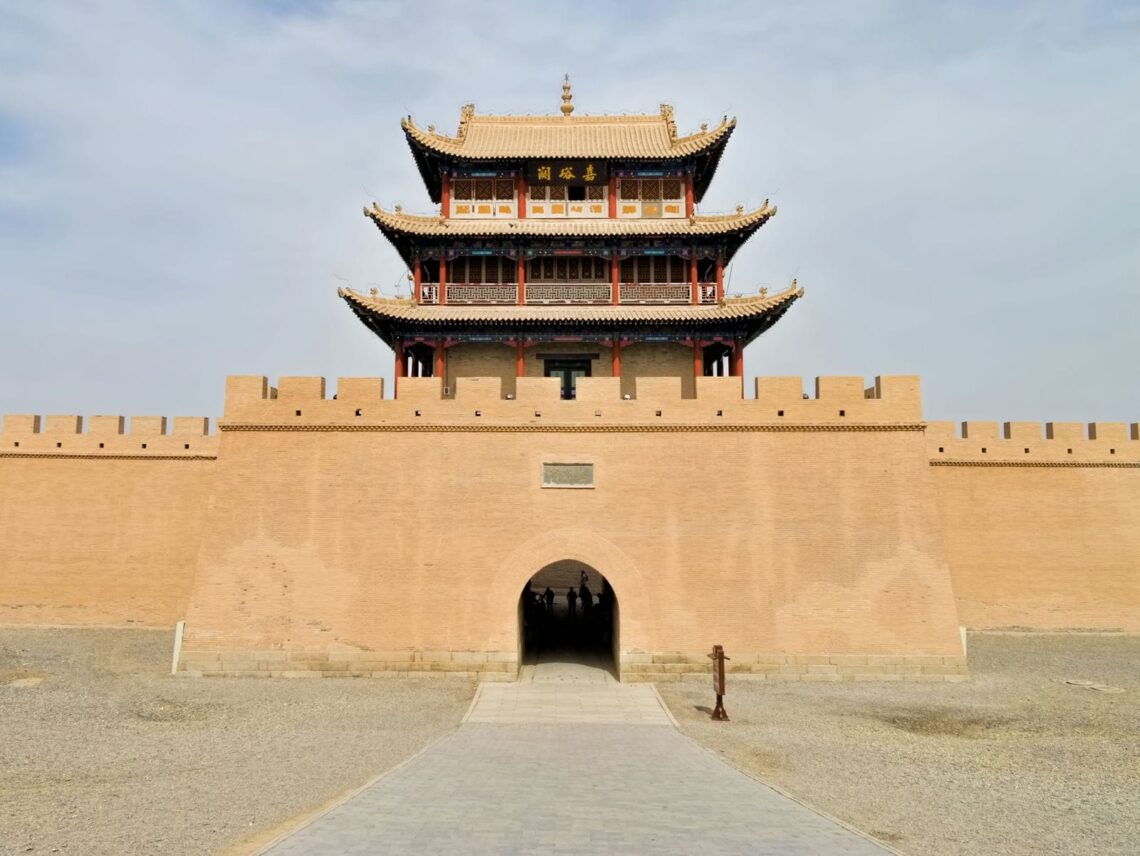
The 7th-century BC early Great Wall of China sections show a rammed earth structural style. At the same time, later brick and stone fortifications demonstrate traditional Chinese architectural aesthetics with crenelated parapets, multi-eaved watchtowers, and decorative elements like cloud and dragon motifs in line with the imperial culture of dynasties like the Ming. The Great Wall integrates defensive fortification elements like crenels, embrasures, ramparts, beacon towers, and passes designed for visibility and communication across networks of barricades, reflecting ancient Chinese military architecture as analyzed by historians. The Great Wall takes advantage of natural contours and settings for defense, with sections following ridges, peaks, and spurs for tactical visibility. Constructed for border defense by imperial Chinese dynasties, the Great Wall embodies China’s historical identity and prosperity, leading to its status as an iconic national symbol. The Great Wall represents historic Chinese building innovations.
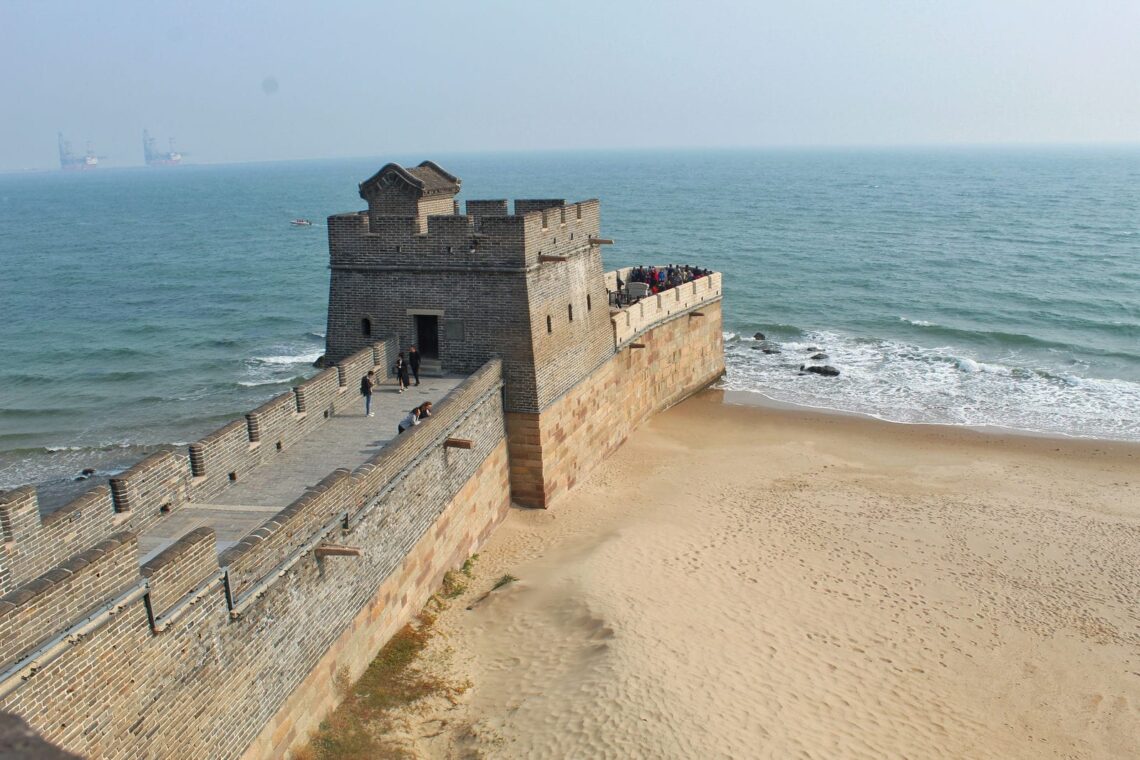
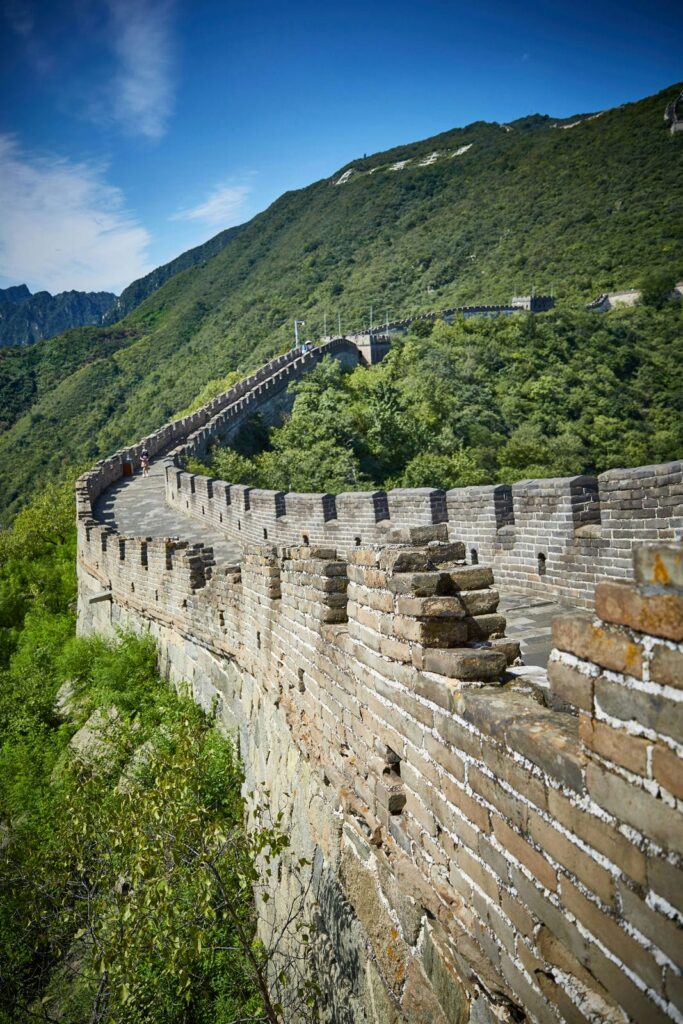
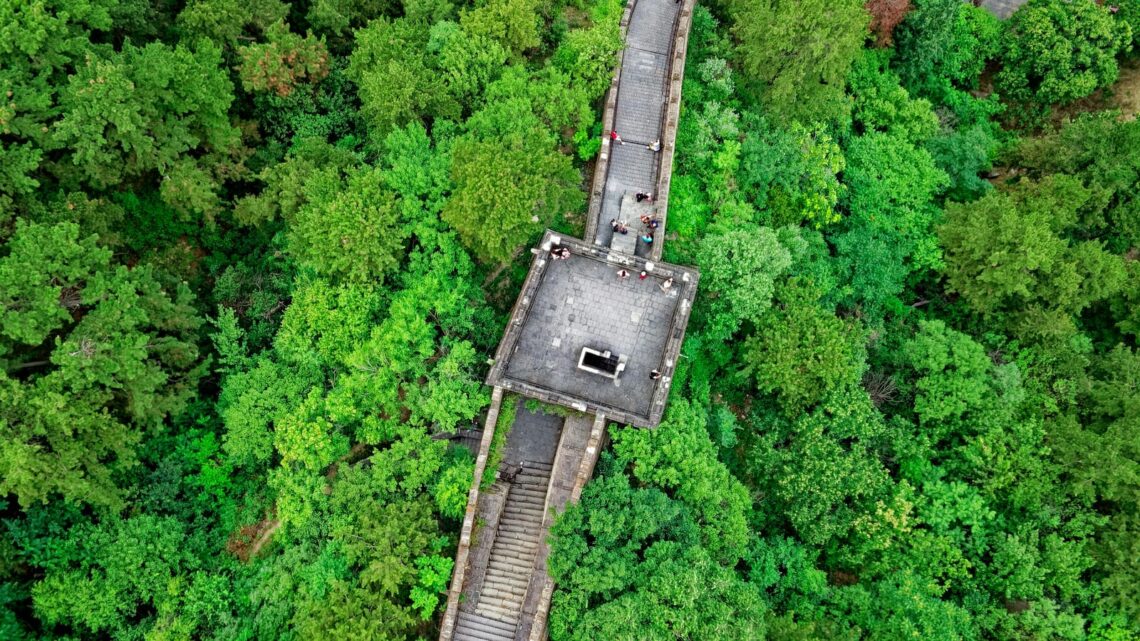
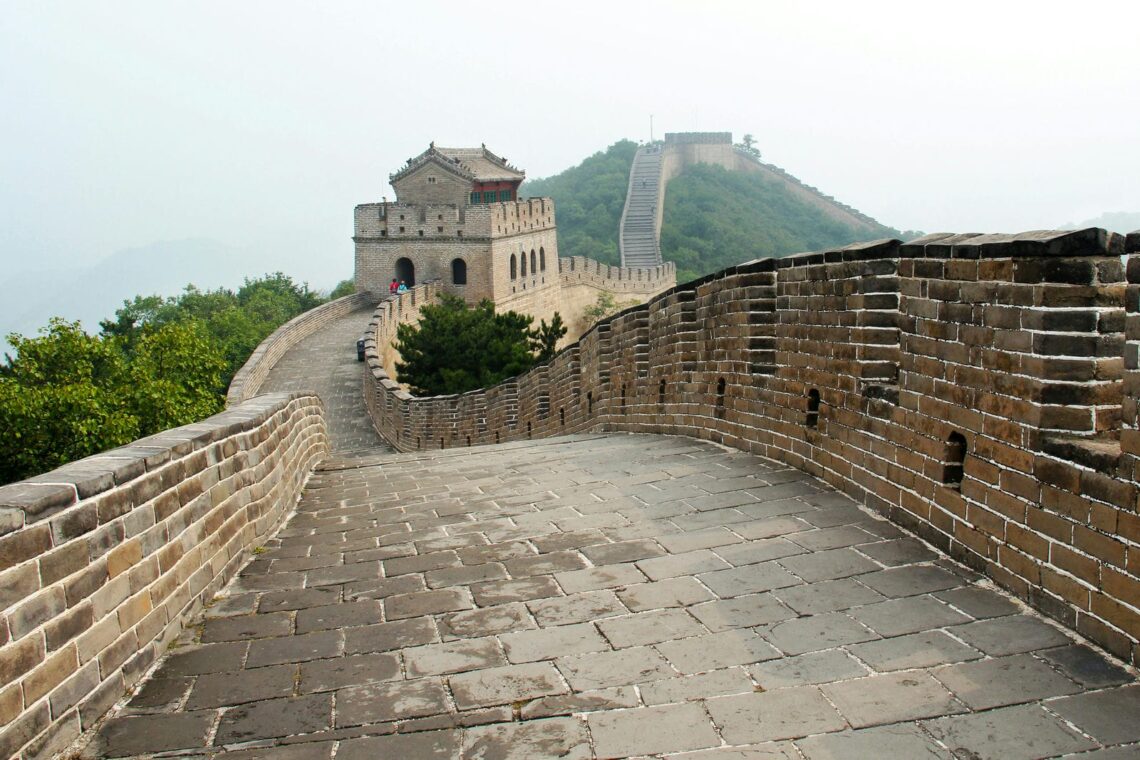
Experts involved in Great Wall of China conservation cite issues like natural weathering of brick and stonework, erosion damage, graffiti, and vandalism, regulating tourism foot traffic, securing stable funding streams for ongoing repairs, retaining historical integrity amidst modern upgrades, and site accessibility as recurring challenges during restoration projects. In recent decades, accessible paths have been constructed along the Wall near Beijing, along with safety rails, warning signs, visitor centers with amenities and medical services, and population limitations to prevent overcrowding. Guides must accompany climbers of steep, exposed sections. Many China tour companies like Art & Architecture Tours offer private Great Wall excursions tailored for architects, design professionals, and architecture students to examine unique structural elements, building materials, and restoration efforts. These specialized tours focus on architectural insights from expert guides with engineering knowledge of the Wall’s construction across various dynasties and terrains.
4. Petronas Twin Towers
The Petronas Twin Towers in Kuala Lumpur, Malaysia, is a famous iconic landmark consisting of two identical 88-story skyscrapers joined on the 41st and 42nd floors by a two-story Sky Bridge. The towers anchor the Kuala Lumpur City Centre (KLCC) commercial development on Jalan Ampang right along Jalan Kia Peng near the Klang River running through the capital. As one of the tallest buildings globally, the Petronas Towers house the prominent state-owned oil company PETRONAS, along with offices, shops, and restaurants that attract over 1.5 million annual visitors. Construction of the Petronas Twin Towers began in 1993 and was completed in 1998 after almost 6 years under the direction of architect Cesar Pelli and engineers Deejay Cerico and Thornton Tomasetti. The Sky Bridge linking the towers was installed in 1995. The towers officially opened on August 31, 1999, ushering Malaysia into the 21st century as a global economic player. The Petronas Twin Towers were chiefly designed by famous Argentine-American architect Cesar Pelli and engineers Deejay Cerico and Thornton Tomasetti. They were commissioned by Petronas, the Malaysian state-owned oil company, as part of the Kuala Lumpur City Centre development. Over 13,000 local workers helped construct the towers under lead contractor Samsung C&T Corporation.
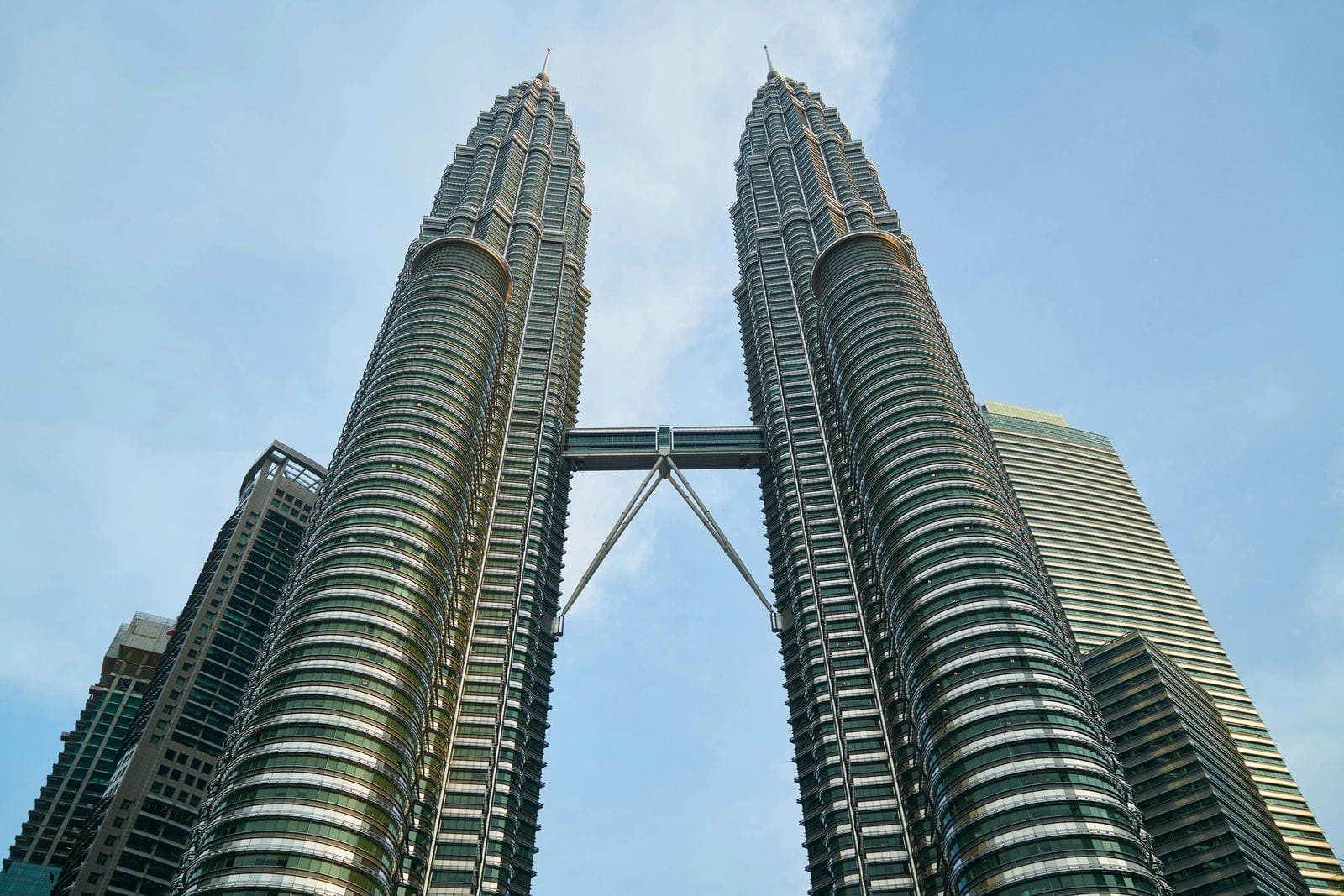
The Petronas Twin Towers feature a postmodern style integrating Islamic geometric motifs in the eight-pointed star shape and traditional Malaysian craft elements visible in the Sky Bridge design and decorative batik patterns. The sleek, tapered shape exemplifies modern skyscraper aesthetics. Significant lighting features include the beacon on Tower One, which projects a 50-mile visibility range, and the 30-mile visible aircraft warning lights per the description. The Sky Bridge has theatrical lighting for special events. The towers are illuminated by nearly 30,000 light sources that create dynamic lighting displays at night. Sunshading helps reduce glare and heat gain. As record-setting modern skyscrapers, the Petronas Towers exemplify contemporary high-rise trends and postmodern architectural style, fusing regional and global aesthetics.
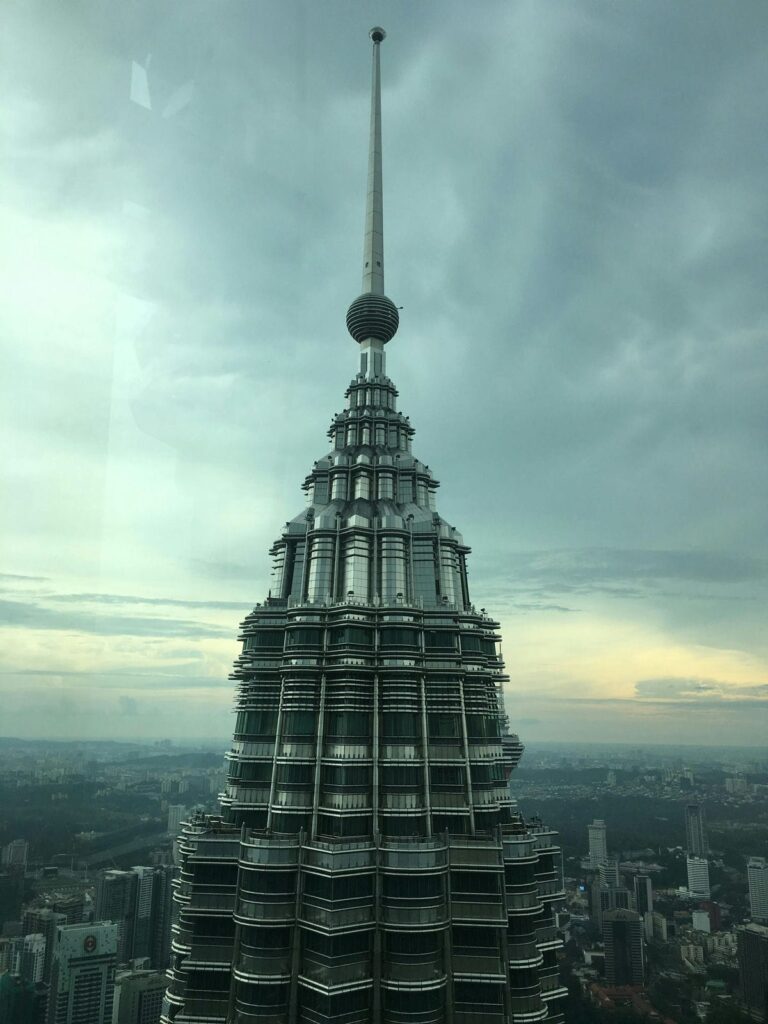
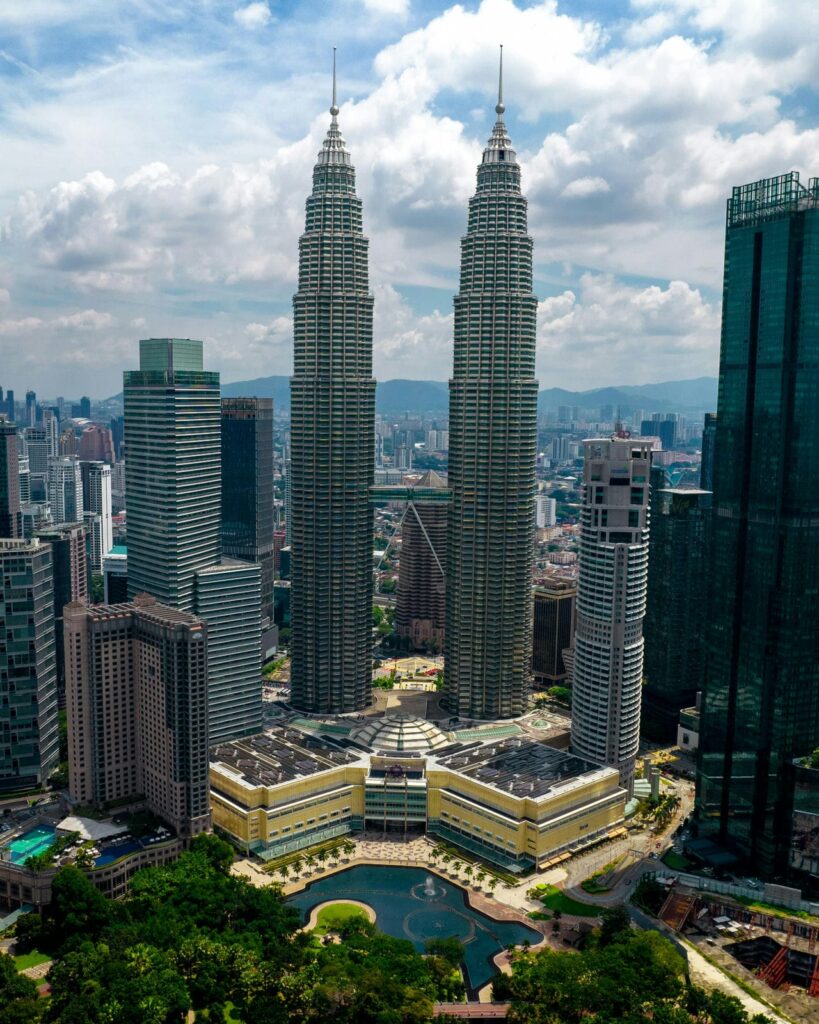
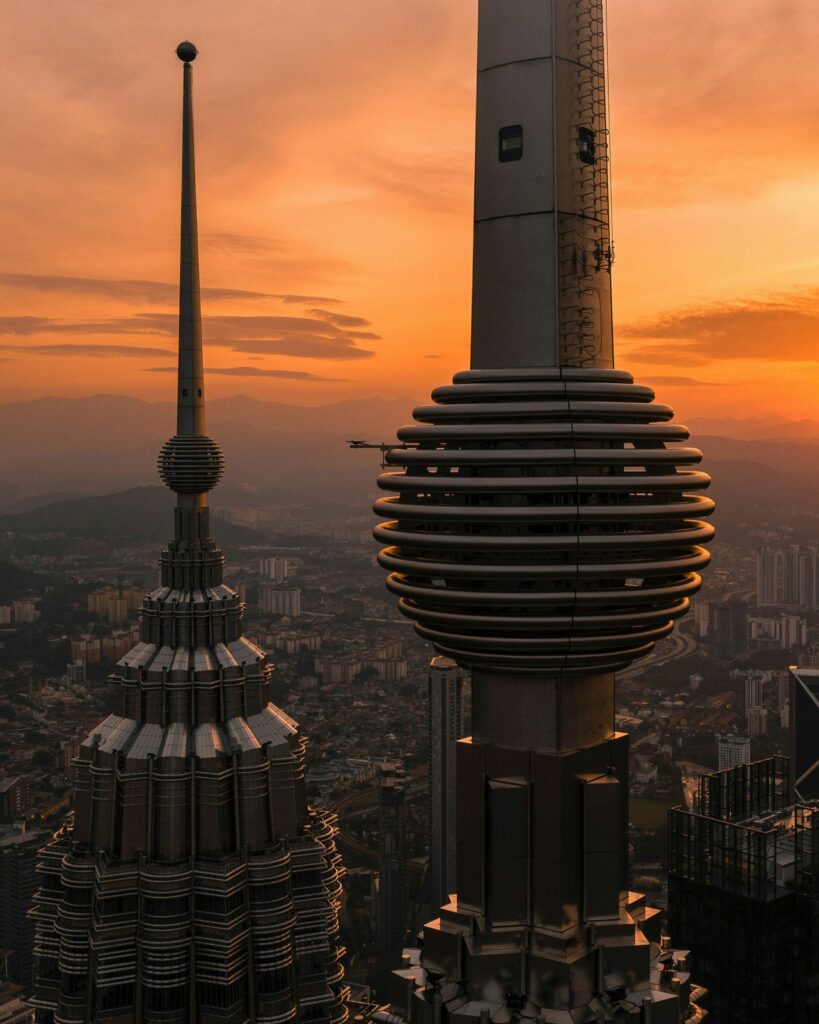
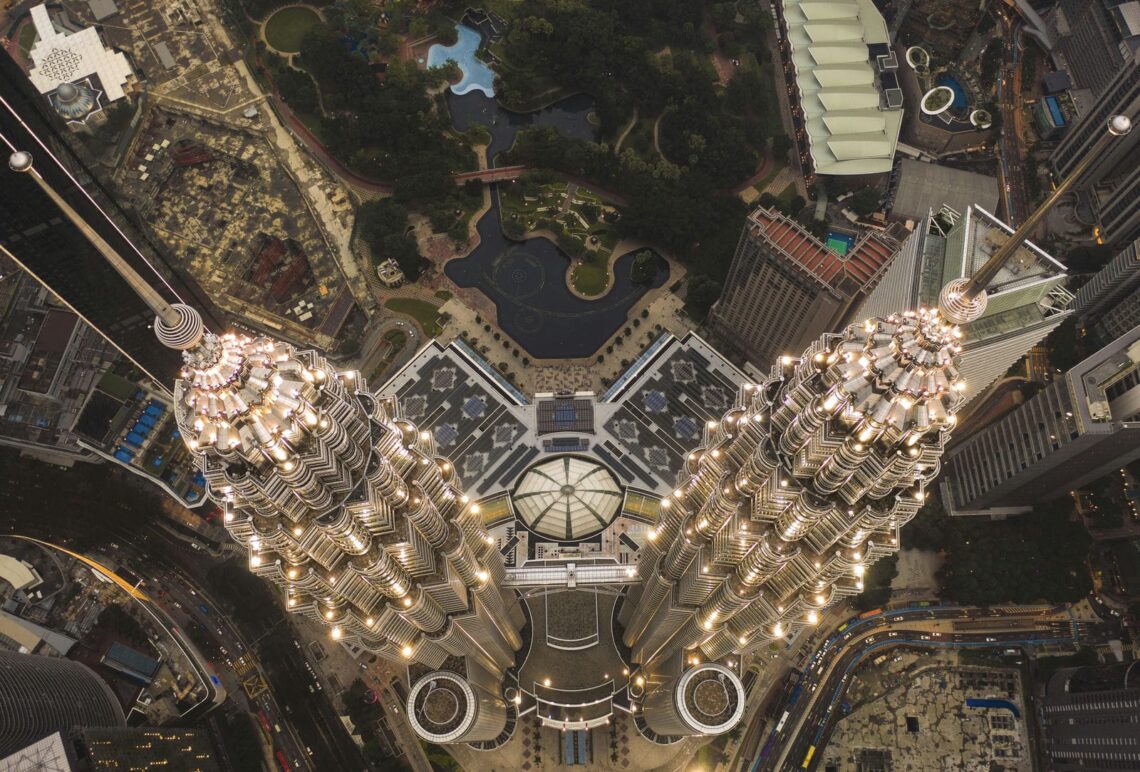
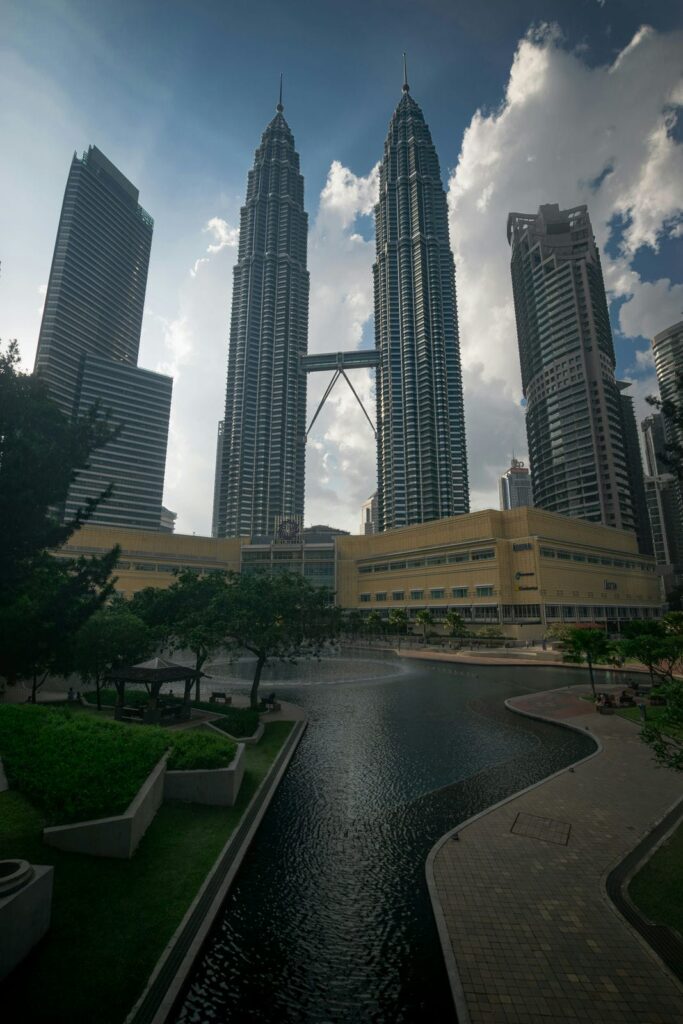
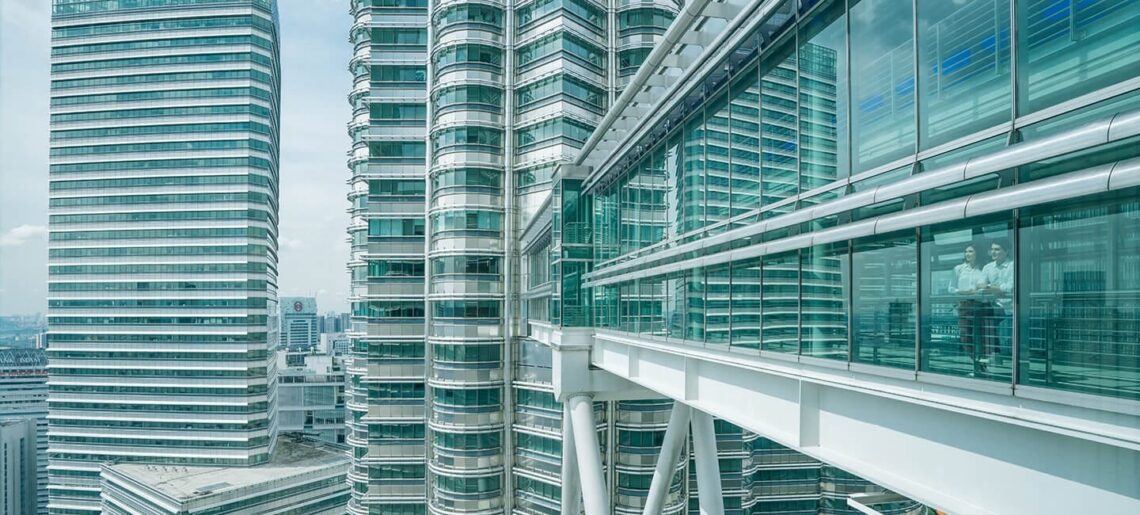
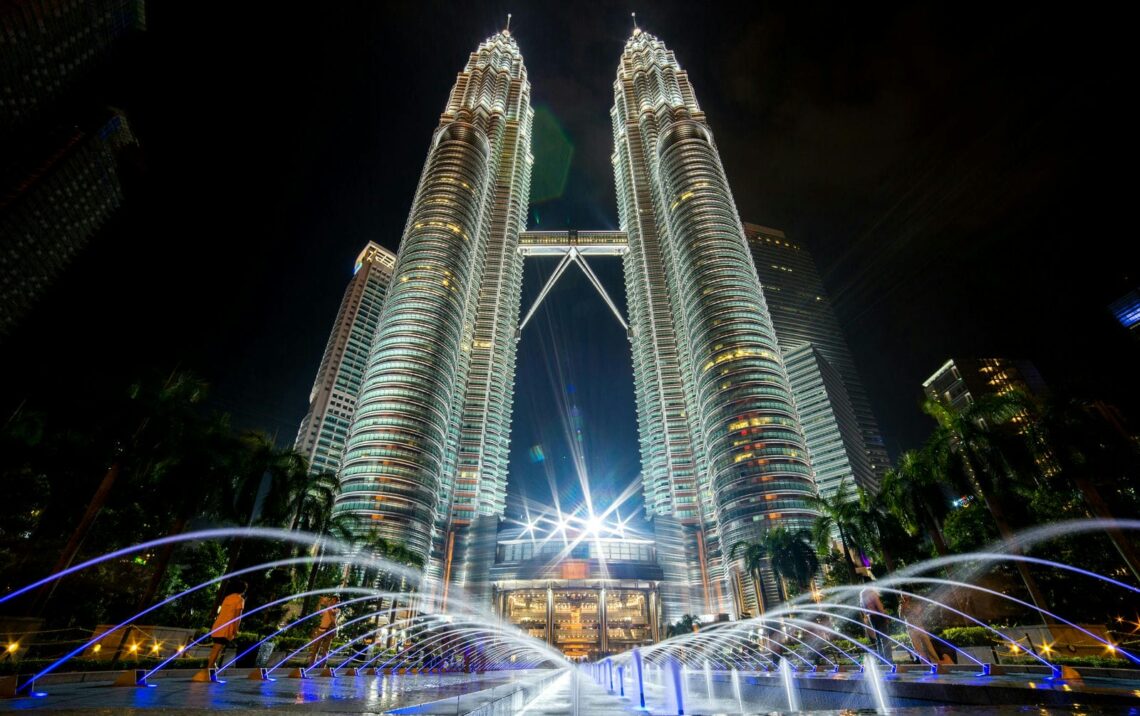
The Petronas Towers have required minimal restoration beyond routine upkeep and facility renewal to maintain state-of-the-art amenities. Potential long-term challenges include modernizing aging mechanical systems, accommodating transportation upgrades like rail links, refreshing dated decor, and retaining tenant mix viability within the office towers. The towers incorporate safety features like fire alarms, sprinklers, 24/7 security, and emergency evacuation procedures. For accessibility, they offer wheelchair-friendly entrances, elevators, restrooms, and retail spaces. The Observation Deck and Sky Bridge also accommodate wheelchair-bound visitors needing assistance. Safety barriers line open-air levels. Architecture-focused private tours of the Petronas Towers are available through various tour providers like Viator Tours. These cater to architects, engineers, design students, and building experts by providing special access to structural elements and behind-the-scenes technical areas while explaining the innovative architecture, structural systems, and engineering feats accomplished in constructing the iconic towers.
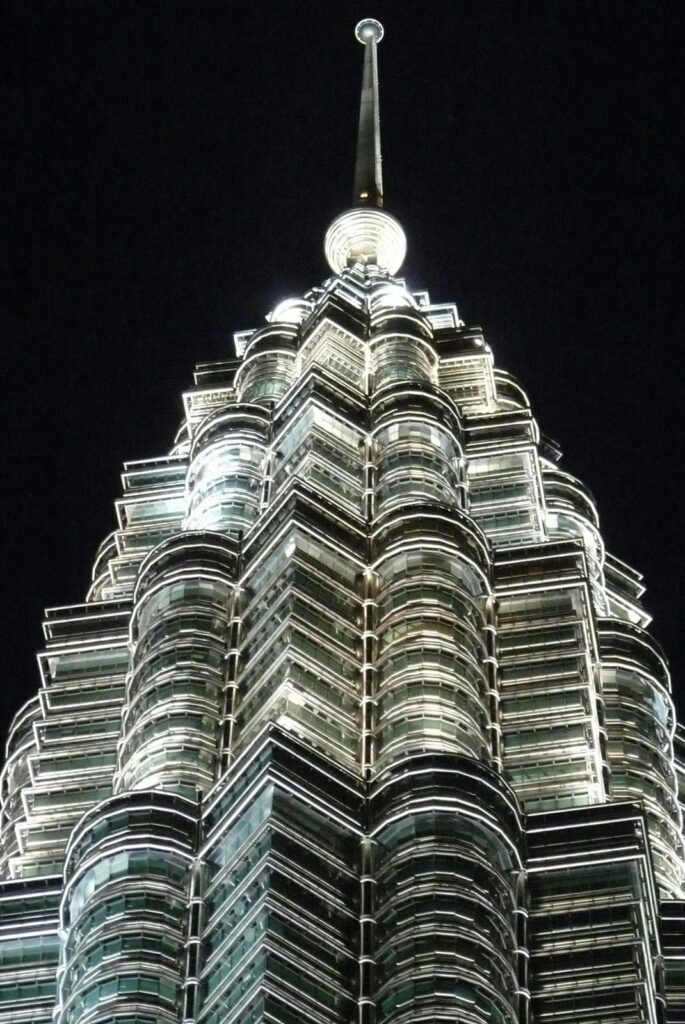
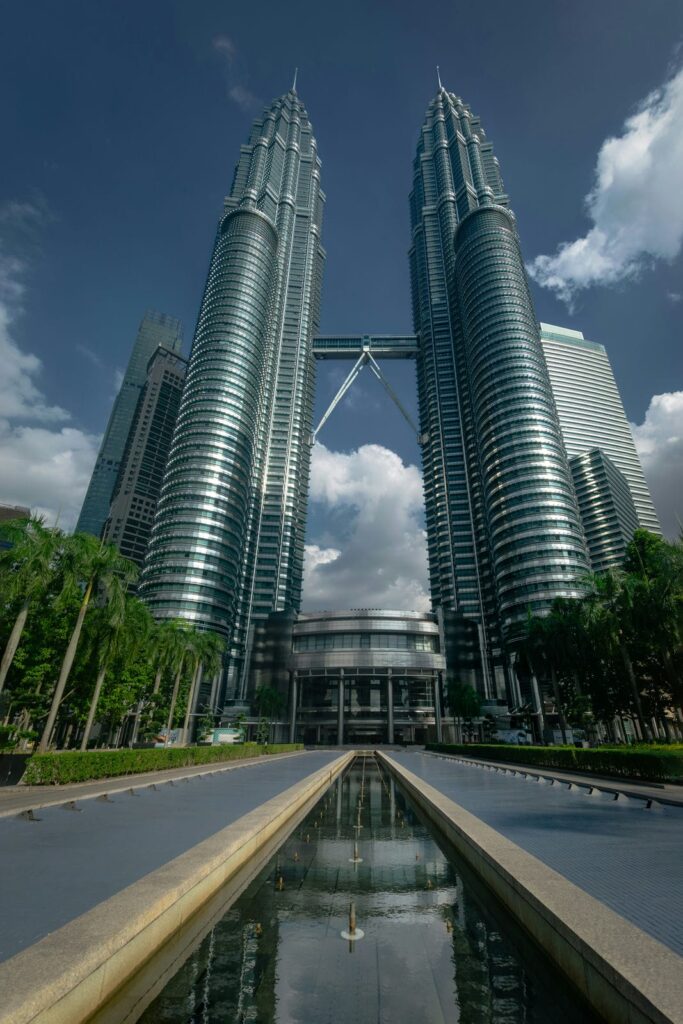
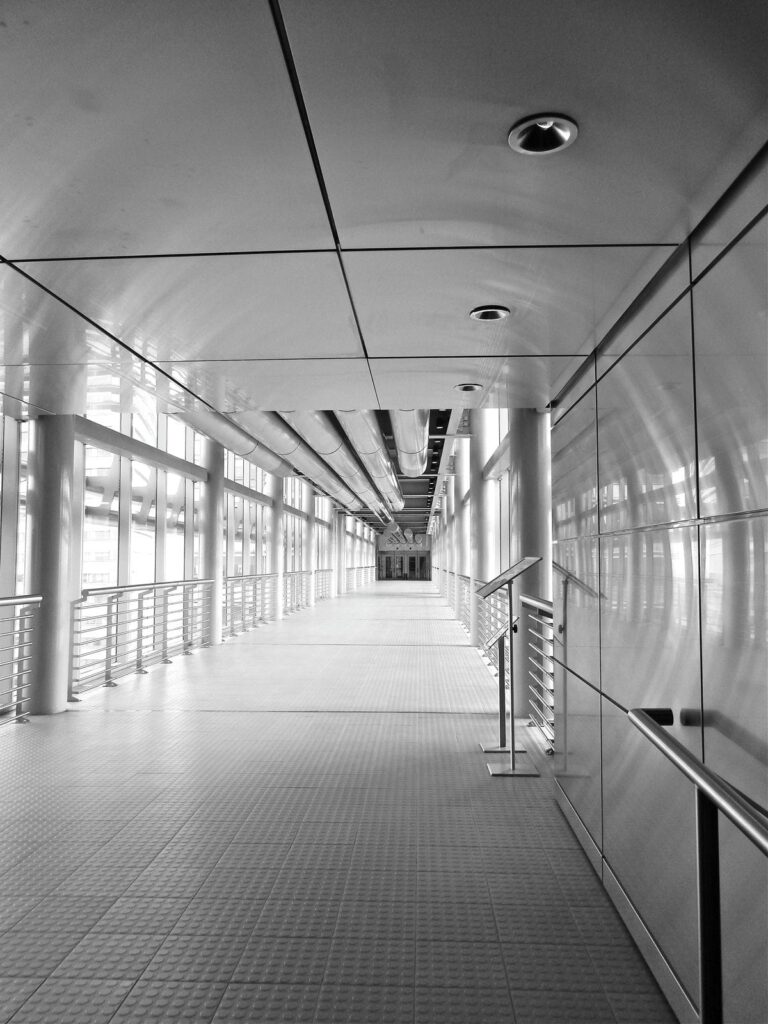
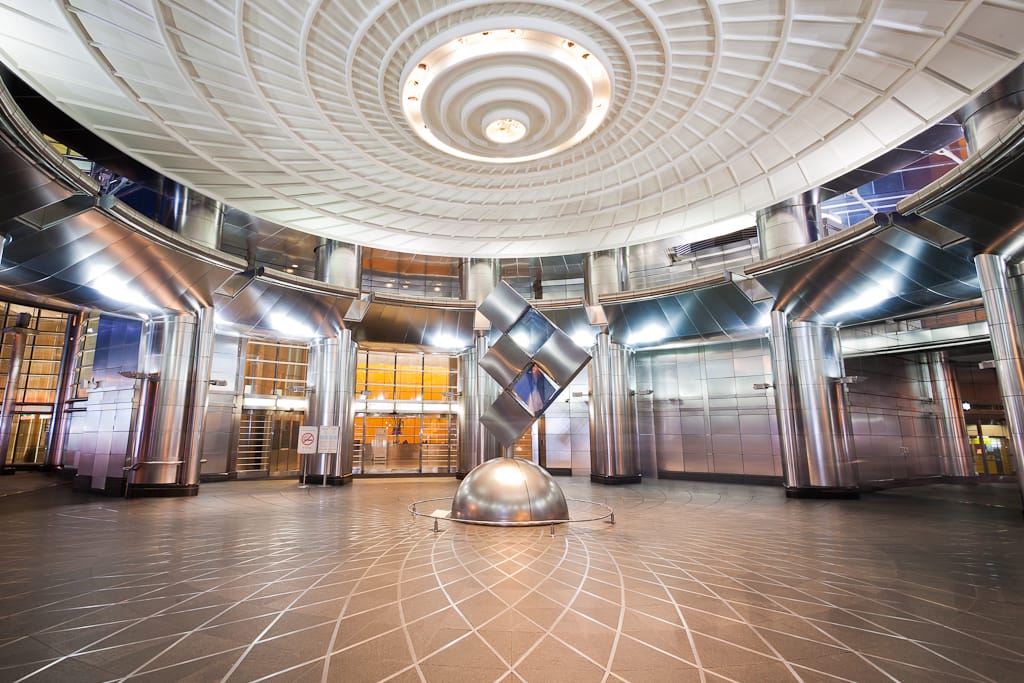
5. Borobudur Temple
The Borobudur Temple is a 9th-century Mahayana Buddhist temple in Magelang, in the southern part of the Kedu Plain, in the province of Central Java. It comprises six square platforms topped by three circular platforms, decorated with 2,672 relief panels and 504 Buddha statues. Considered one of the greatest Buddhist monuments, Borobudur exemplifies Indonesian art and architecture. Borobudur Temple was constructed around 800 CE during the reign of the Syailendra Dynasty. The monumental project took approximately 75 years to complete during the 8th and 9th centuries. There remains some ambiguity, but scholars believe the temple was likely commissioned by the Syailendra kings, belonging to the Buddhist Mahayana tradition. King Samaratungga, or Pramodhawardhani, was completed by King Samaratungga’s stepbrother and successor, Rakai Pikatan. Borobudur Temple integrates early Javanese Buddhist architecture and design influences from the Gupta Empire of India, where Buddhist architecture flourished.
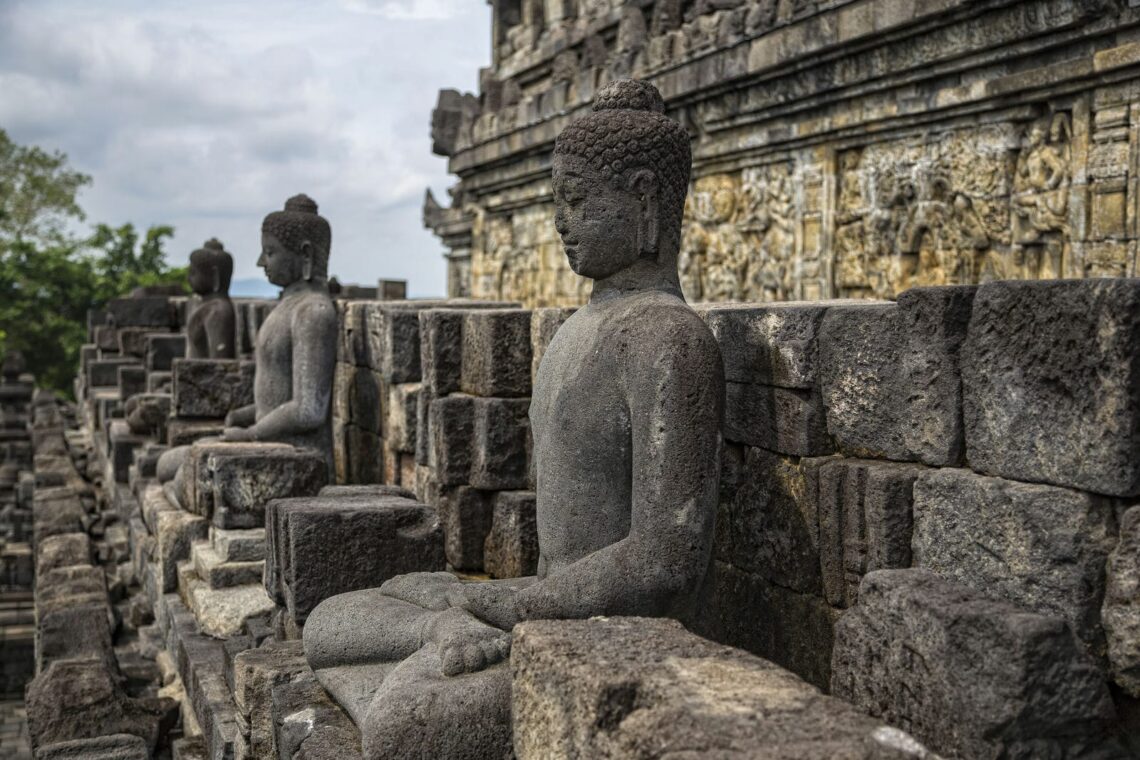
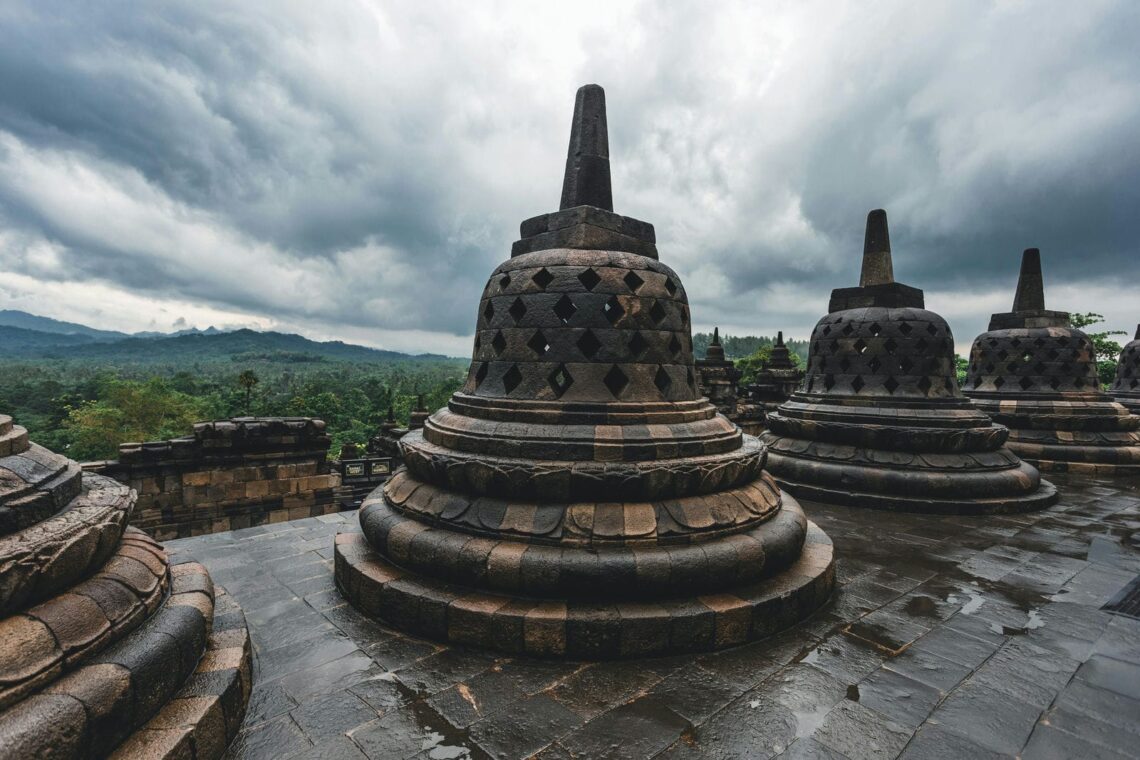
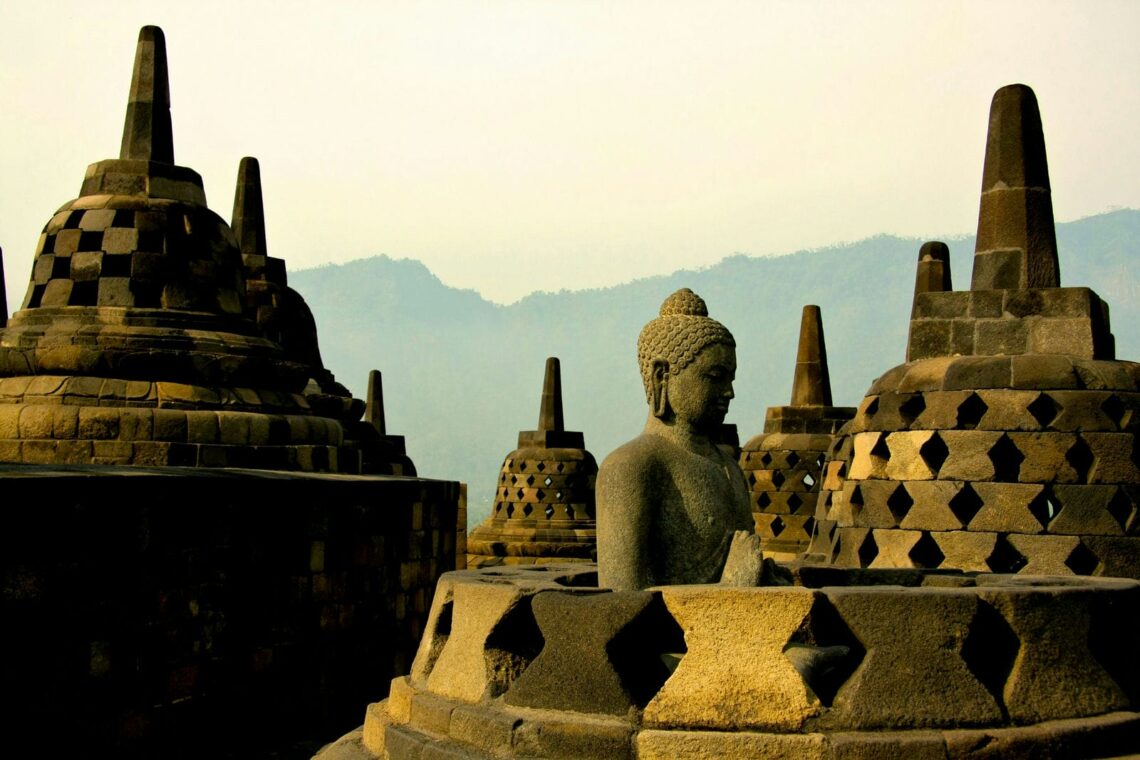
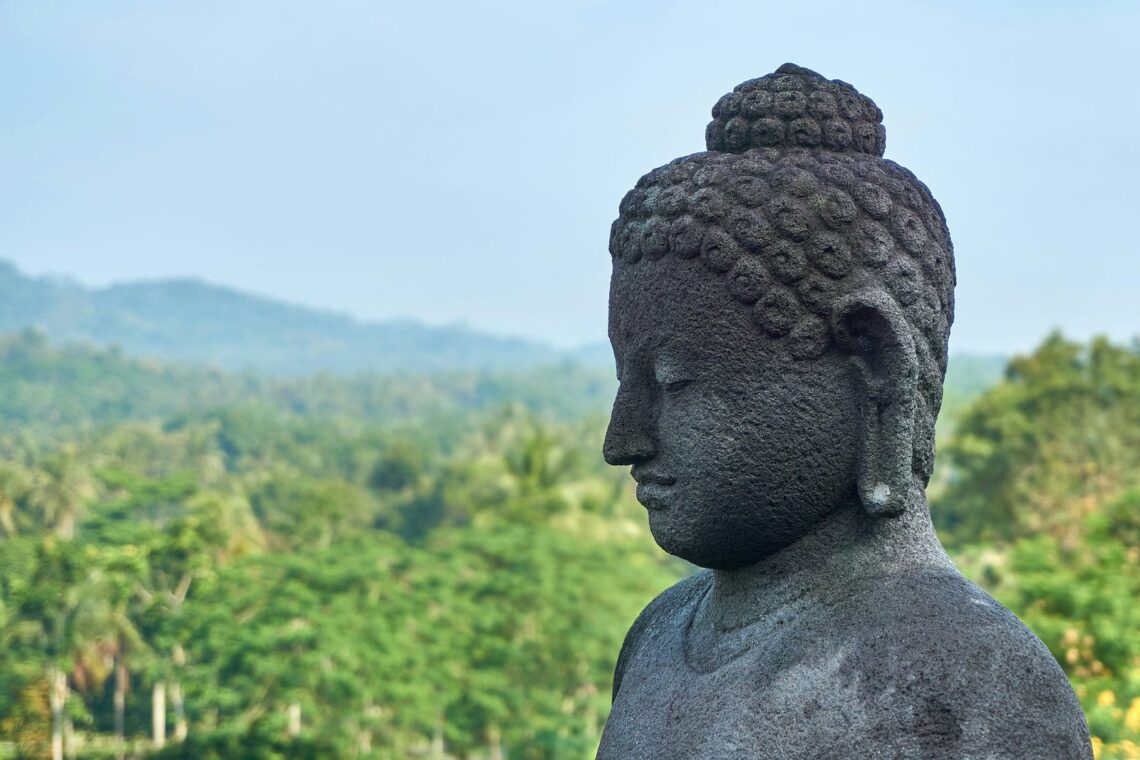
Borobudur architecture integrates Javanese style with Gupta-era Indian influence, seen in features like its stepped pyramid structure, stupas, and elaborate narrative relief carvings depicting Buddhist cosmology and teachings based on the Tibetan Vajrayana text. Strategic architectural design elements control lighting and shading across the monument. As a Buddhist monument, Borobudur reflects the religious significance of Buddhism in Java during the 8th and 9th centuries. It remains an important pilgrimage site for modern Buddhists. Its symbolic architecture pays homage to Buddhist cosmology. Positioned within an agricultural valley between volcanic peaks, it integrates the natural context and life cycles essential for rice cultivation. Its design concept integrating religious symbolism and natural context represents important trends in Buddhist architecture and structural engineering that influenced Southeast Asian temples.
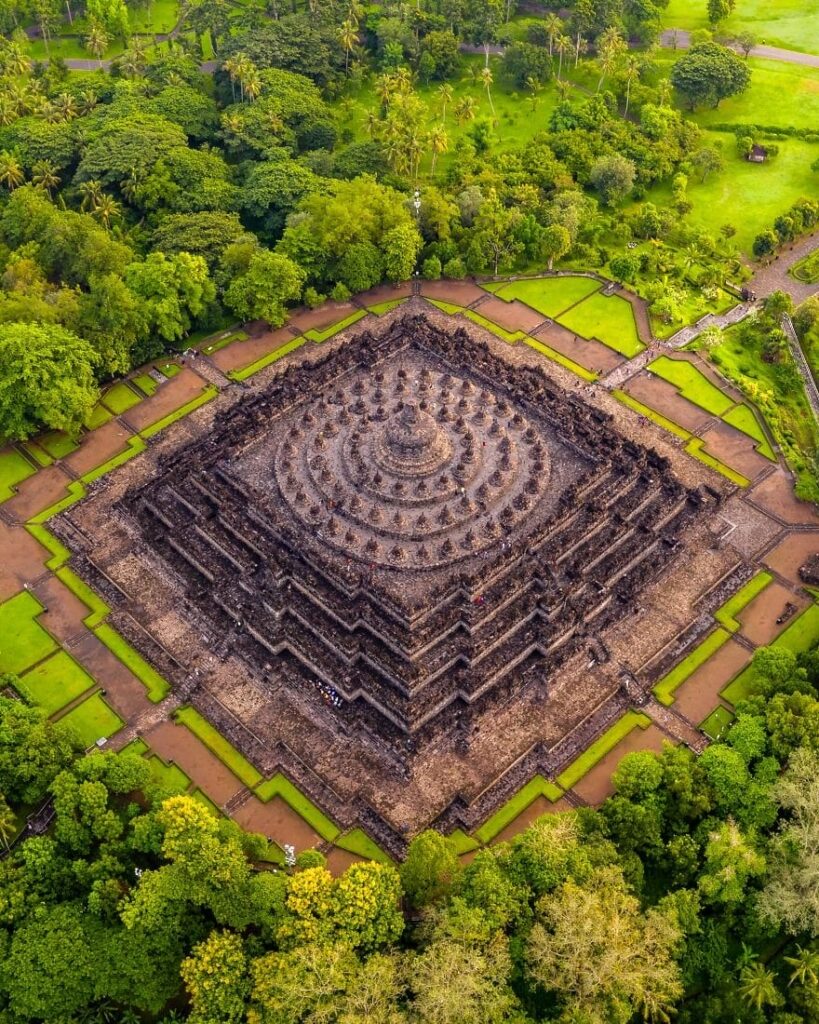
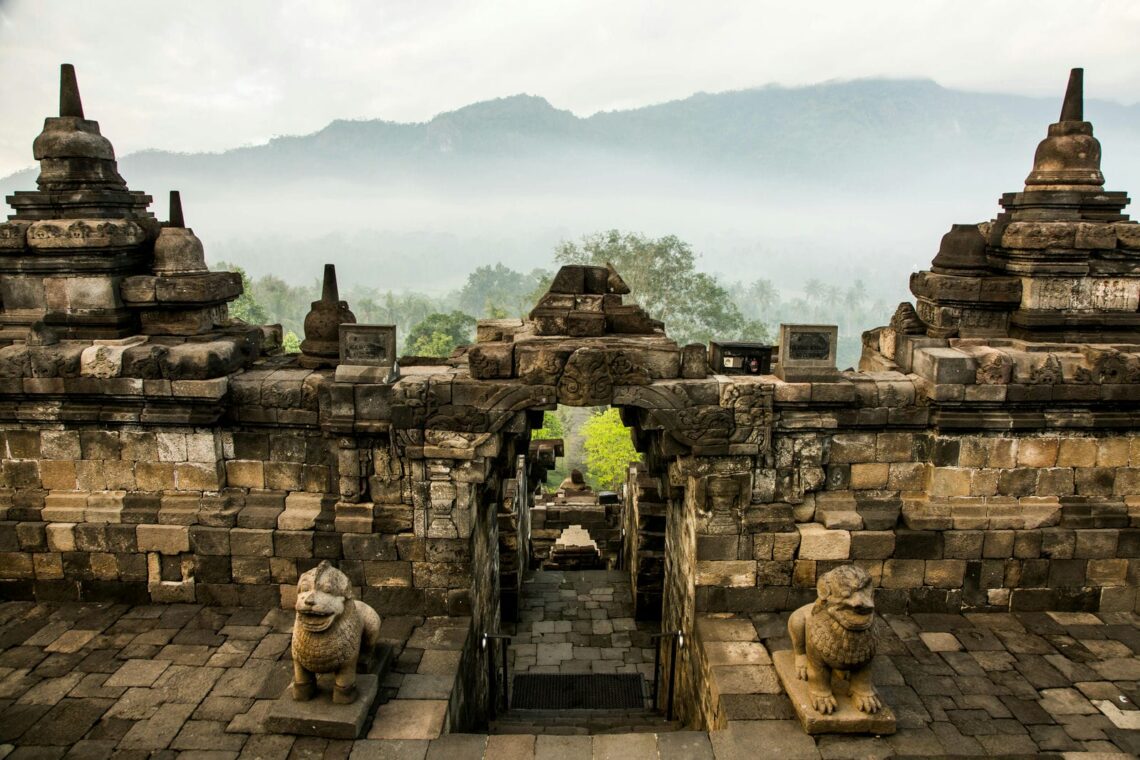
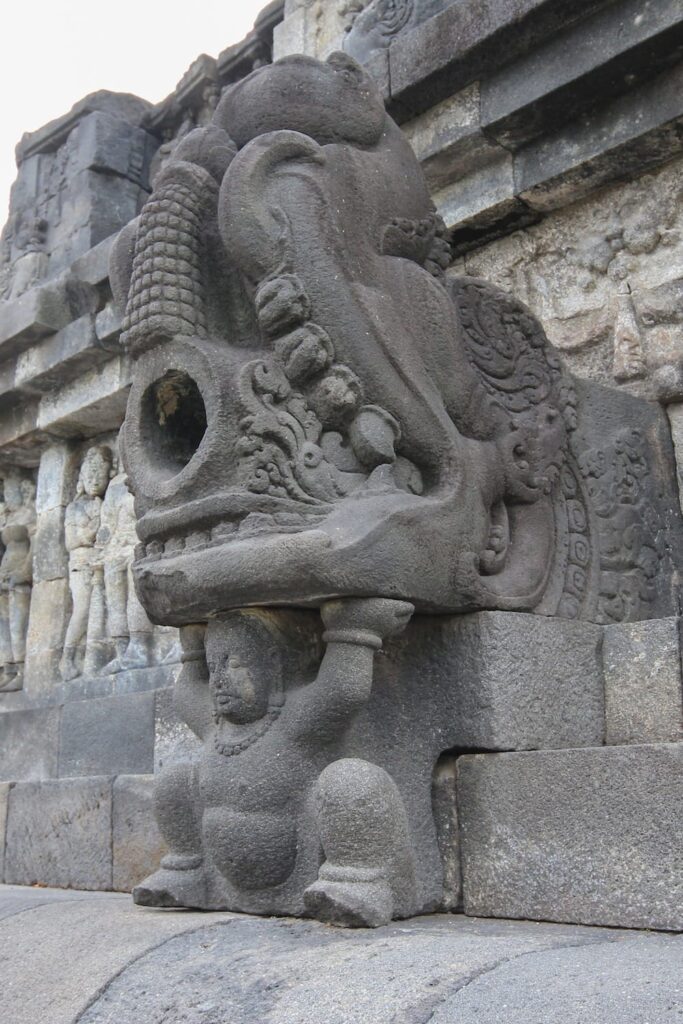
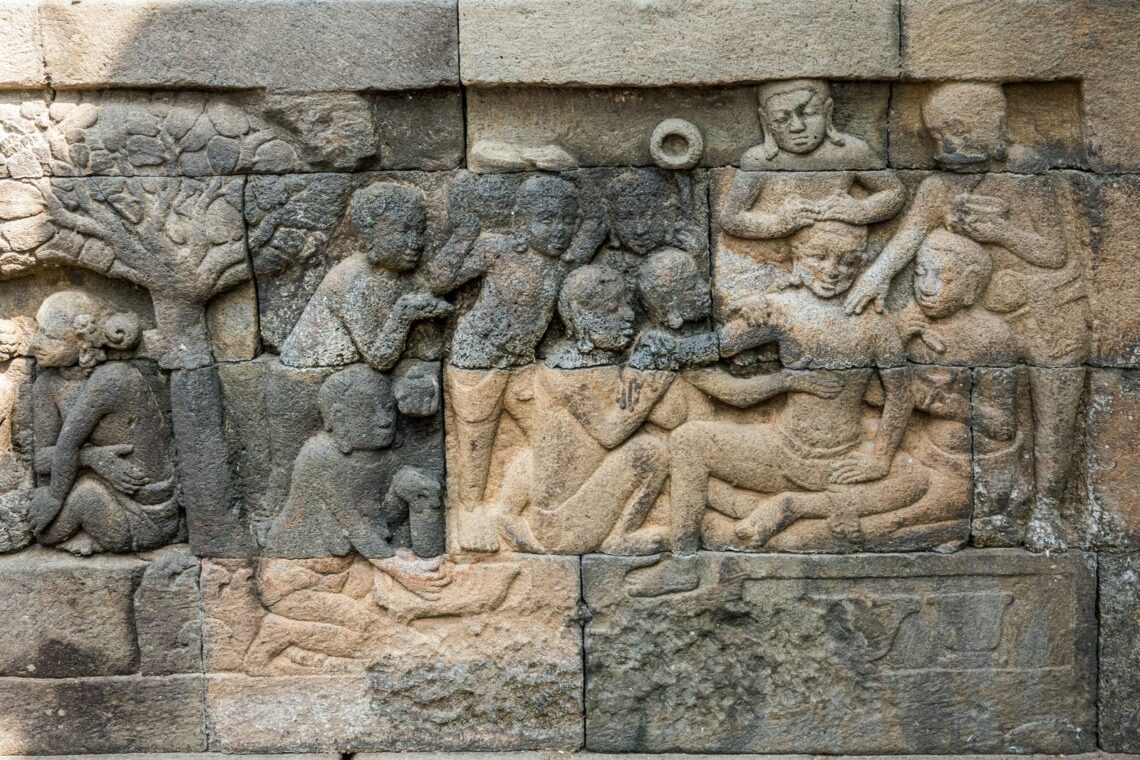
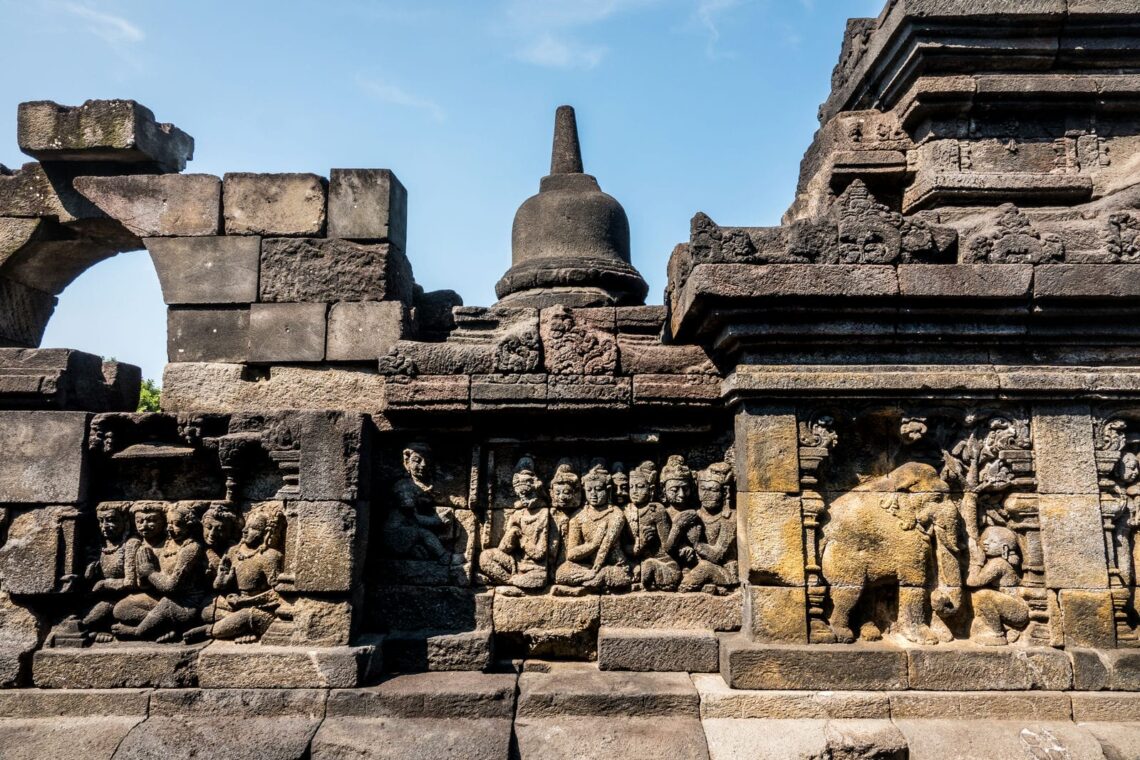
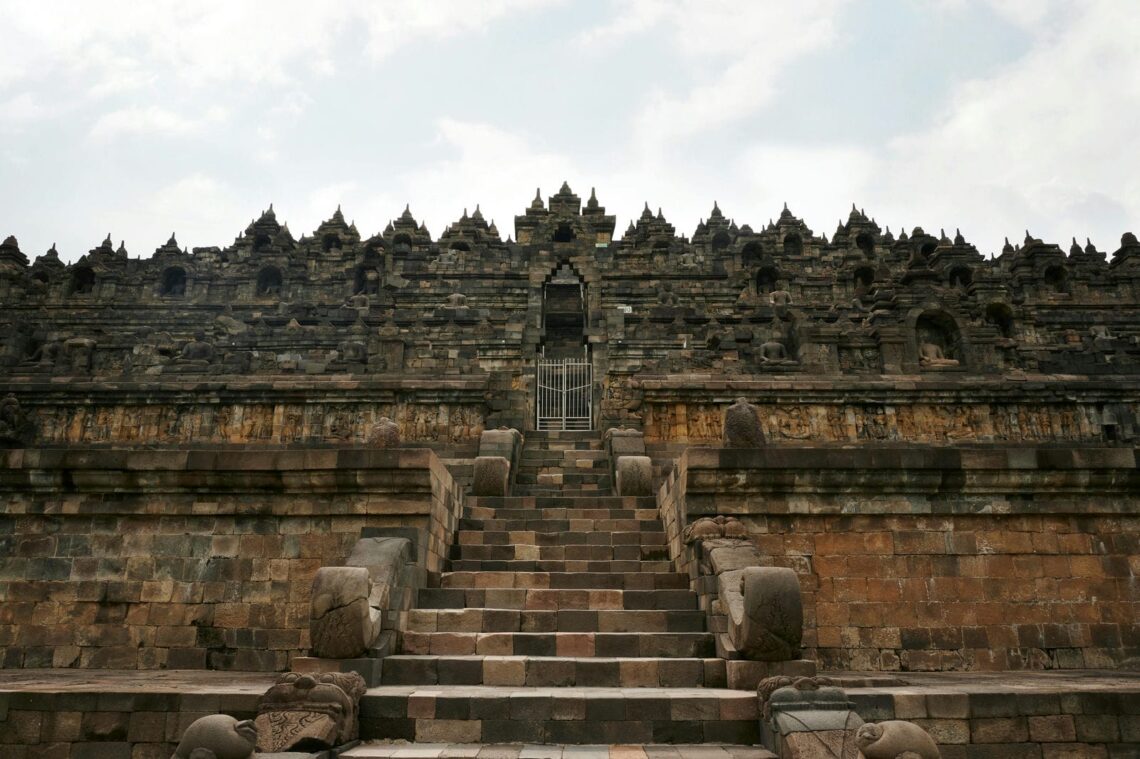
According to UNESCO records, major 20th-century restoration challenges in Borobudur Temple include tackling damage from weathering, volcanic ash deposits, vegetation, and earthquakes over ten centuries. Archaeologists carefully dismantled, salvaged, and reassembled the temple based on 1900s photographic documentation to restructure, realign, and restore the intricate stonework. The Borobudur Conservation Project included modern visitor amenities like paths, lighting, signage, a visitor center, and observation posts. Strict visitor rules protect delicate stonework. Security systems counter vandalism. Indonesian tour companies like Asia Tours offer customized Borobudur tours catering to architects, design professionals, and architecture students. These specialized tours elucidate temple architecture, design symbolism, engineering techniques, and restoration processes in-depth from expert local guides well-versed in architectural details.
6. Bagan Temples
The Bagan Temples refer to over 3,000 ancient Buddhist temples, pagodas, and monasteries built in Bagan, an ancient city in central Myanmar. The sacred sites showcase ornate stupas, mural paintings depicting Buddhist scriptures, and intricate stone carvings. Scattered across a vast 26 square miles (67 square kilometers) plain, the high density of preserved temples makes Bagan an unparalleled archaeological wonder. Over 2,200 structures remain, dominating the archaeological zone and surrounding farmland. Bagan temples were constructed in phases during the city’s golden era between the 11th and 13th centuries when Bagan rulers commissioned the structures. The first temple-building period spanned the 11th century, followed by expansive development in the 12th century under King Anawrahta, while later 13th-century rulers like Narathihapate continued adding temples before the kingdom’s decline. The temples were commissioned by various Bagan rulers like Anawrahta and Narathihapate as acts of spiritual merit.
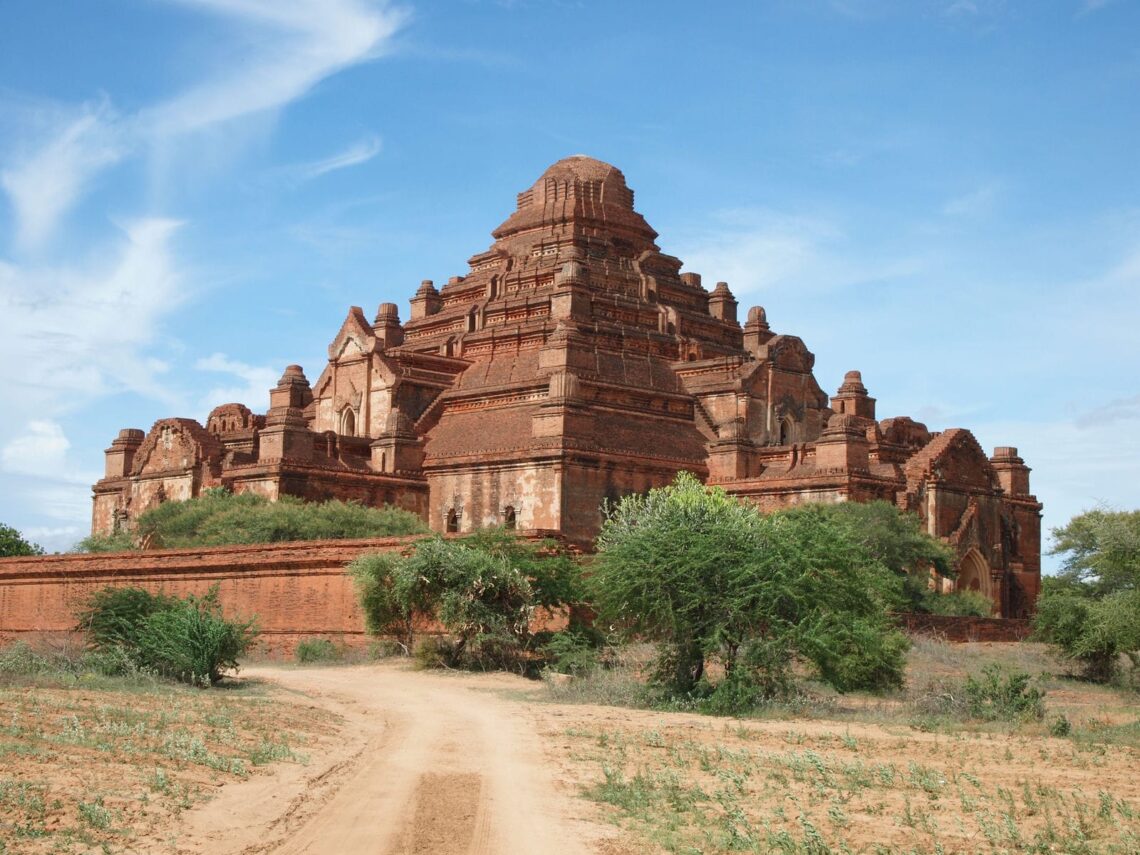
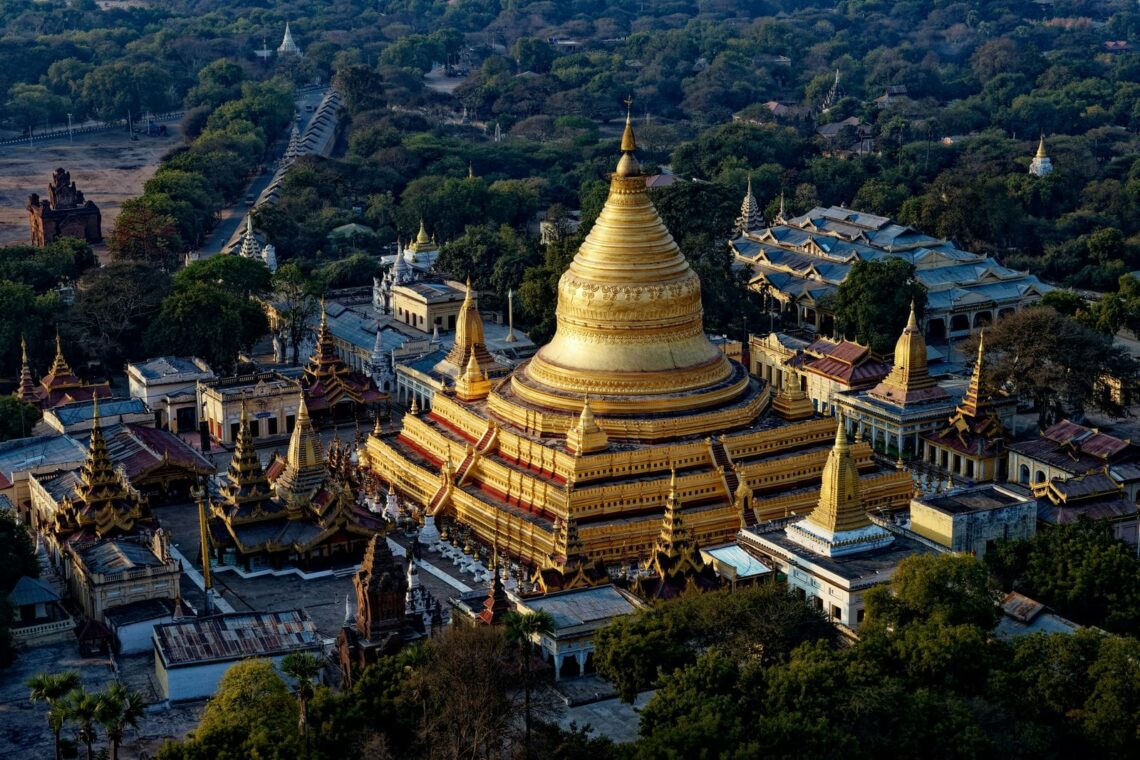
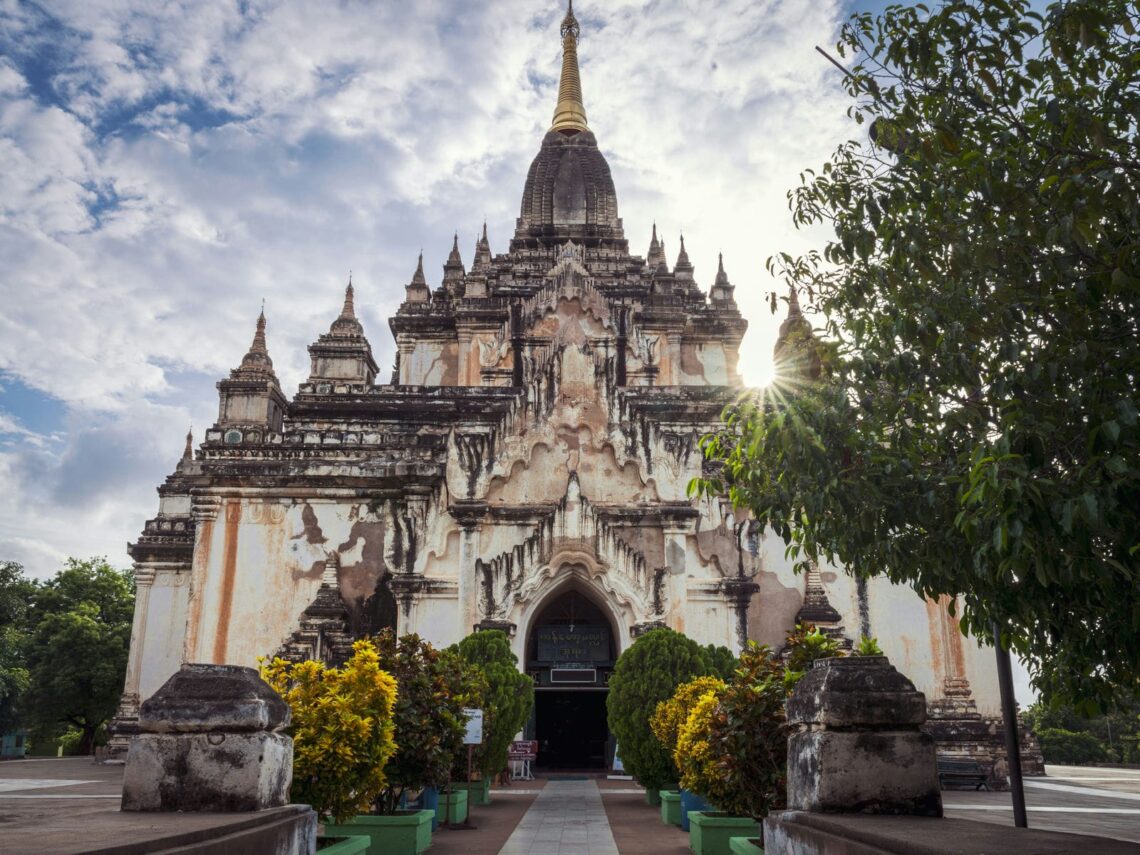
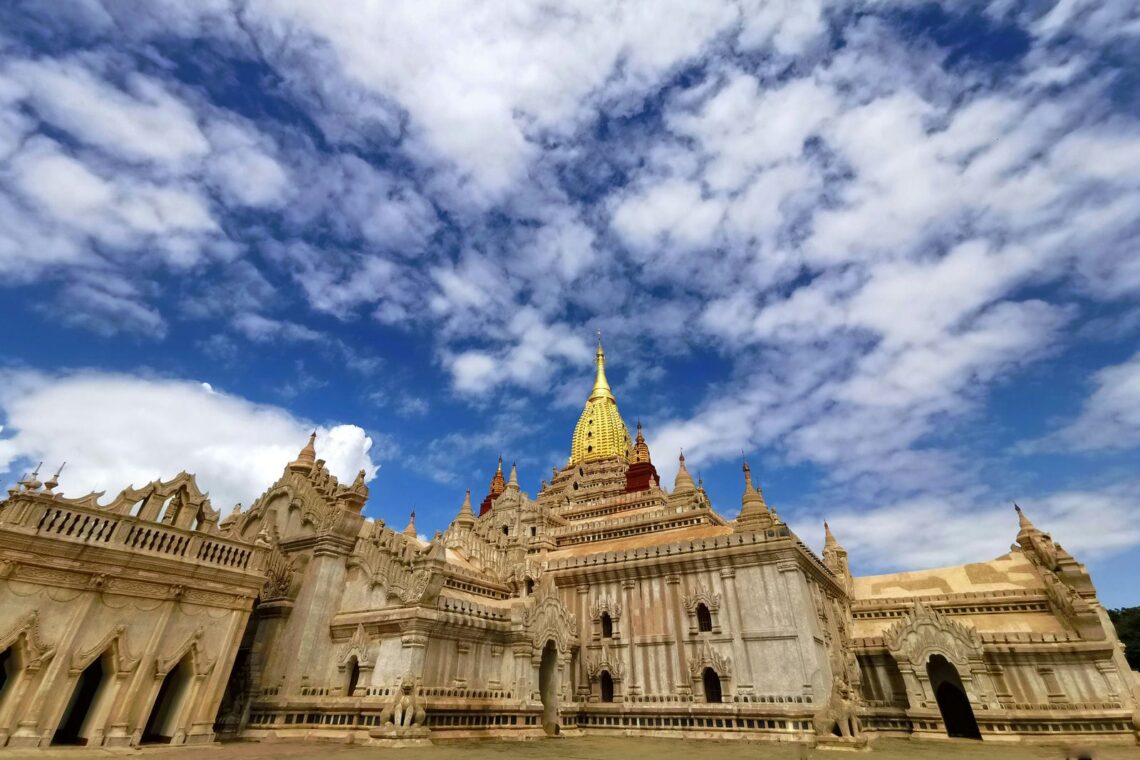
The Bagan temples blend the precursor Mon and Pyu architectural styles with North Indian-influenced features, creating a distinctive regional style marked by soaring curved stupas, terraced platforms, interior murals, exterior stucco ornamentation, and structural techniques like corbelled arches, vaults, and passageways. The mural paintings also demonstrate artistic lineages passed from the Pyu. Brick and stucco construction and vaulted and stepped interior spaces represent inherited structural techniques reimagined at a monumental scale. The temples incorporate long, dark entrance passages leading to central shrines illuminated by clerestory windows or lanterns per descriptions, creating atmospheric light reveals. As devotional offerings, the temples’ Buddhist iconography, paintings, and reliquaries directly reflect religious customs. Brick and curved profiles suit the hot climate and seismic activity. Bagan also signifies cultural convergence between Mon and Burman ethnic groups under royal patronage.
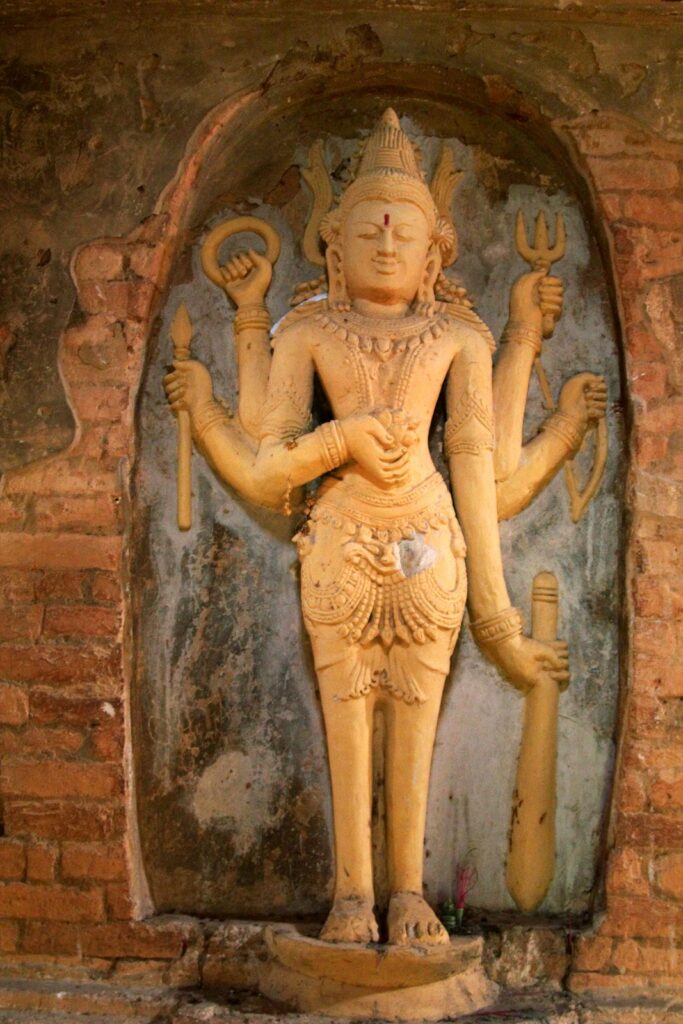
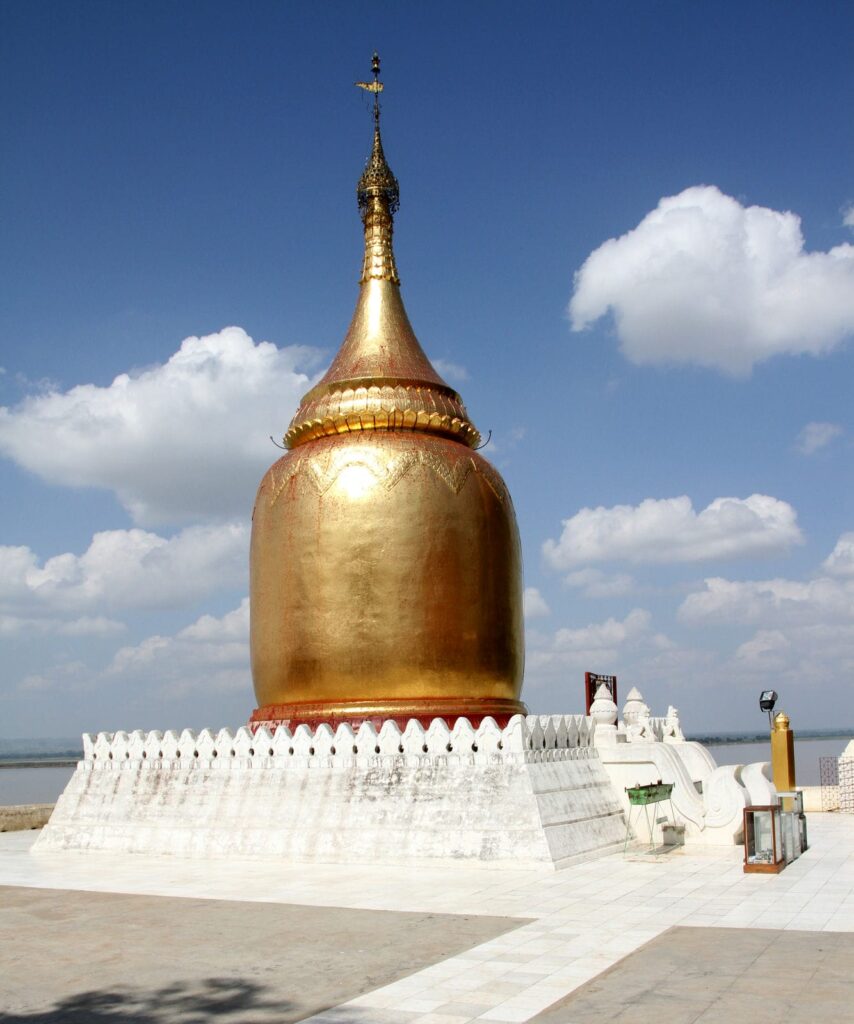
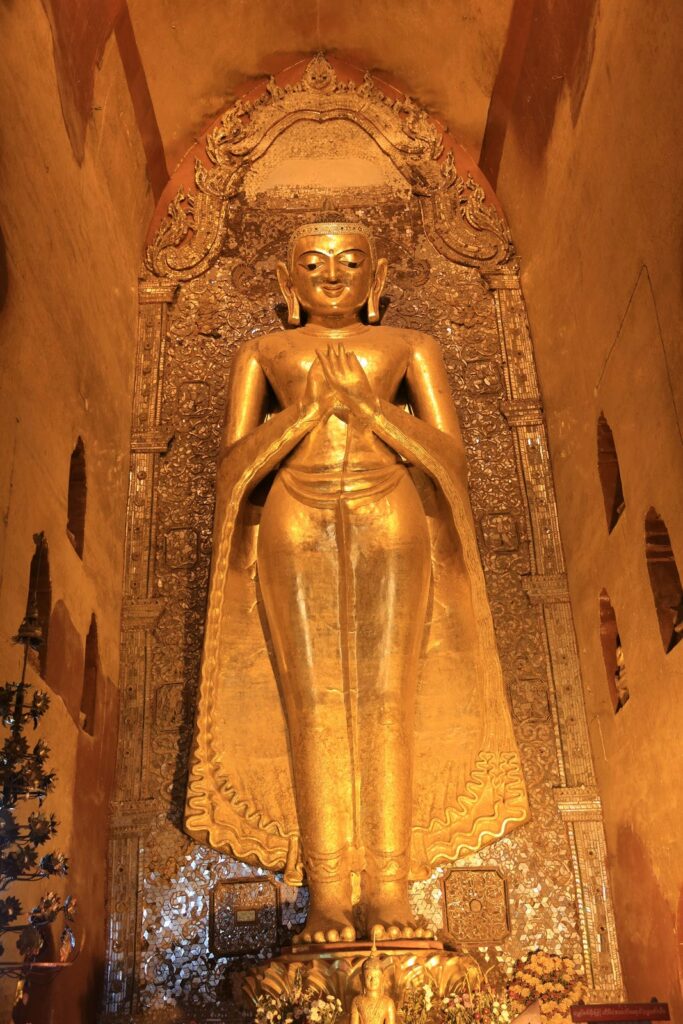
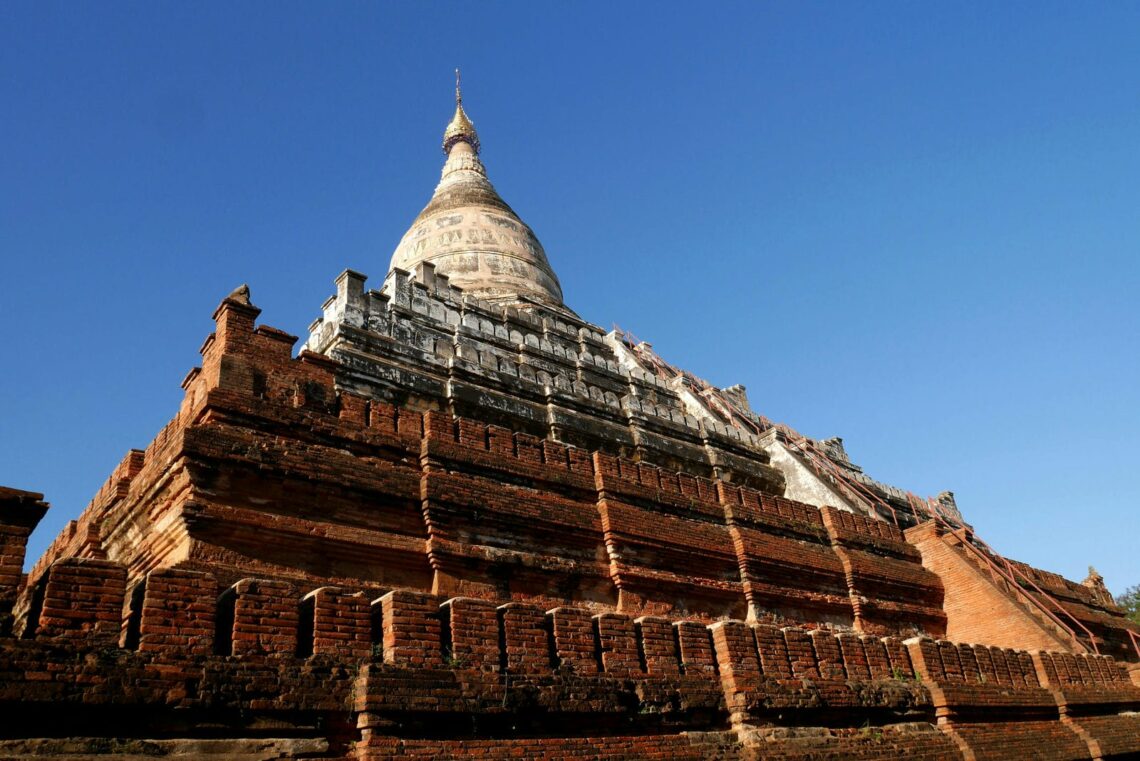
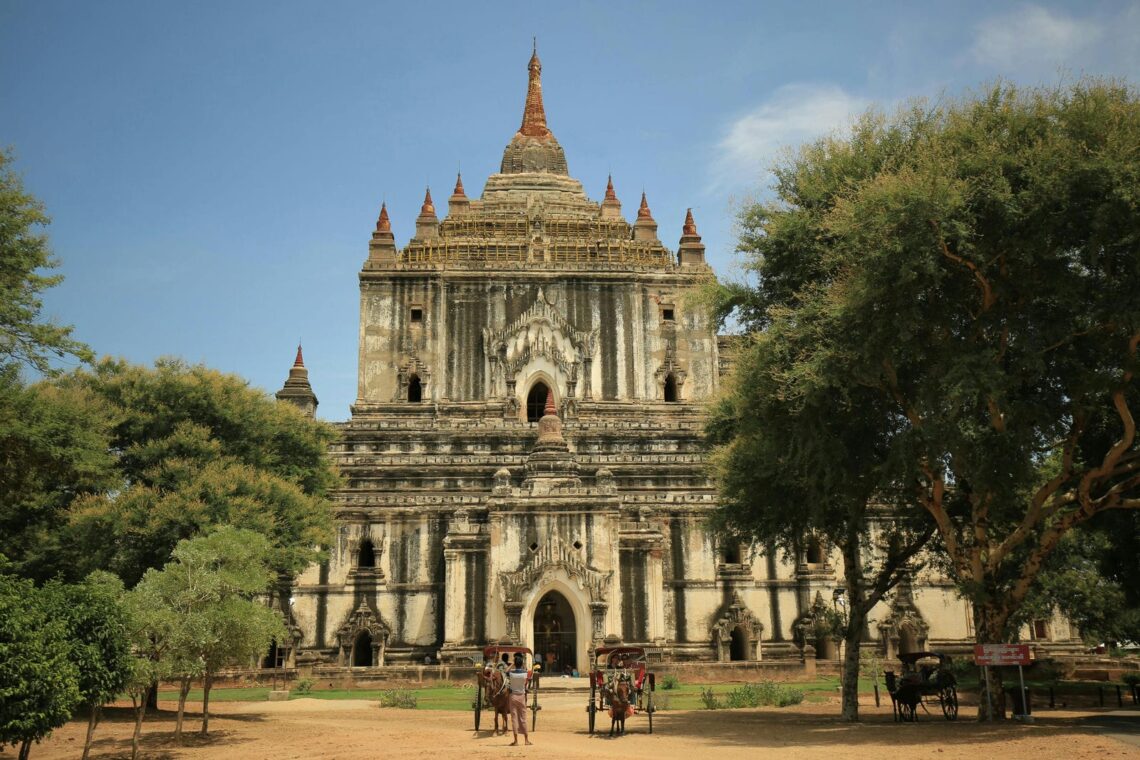
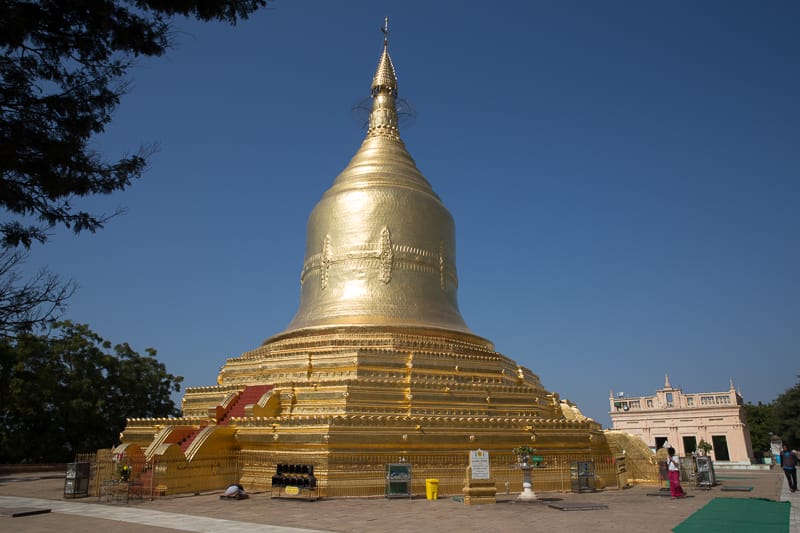
Experts involved in ongoing Bagan temple repairs cite issues like brick deterioration, damage from heavy rains and floods, vegetation overgrowth threatening foundations, retaining structural integrity in earthquakes, visitor impact on fragile murals and ornamentation, and funding shortages for regular maintenance of the vast archaeological zone as recurring challenges according to sites. Recent conservation efforts introduced visitor circulation controls, alarm systems, fire prevention, and security patrols. Ramp construction remains limited by preservation rules against altering the monuments. Accessibility also suffers from uneven terrain and lack of transportation infrastructure. Myanmar tour agencies like Go Myanmar Tours offer customized temple tours catering to architects, design professionals, and architecture students. These specialized excursions elucidate architectural styles, structural engineering, construction materials, and decorative techniques in-depth alongside spiritual iconography and history with expert local guides.
7. Forbidden City
The Forbidden City in Beijing, China, was the Chinese imperial palace complex constructed in the early 15th century during the Ming Dynasty to house the emperor and seat of government. It sits on the central north-south axis of Beijing behind Tiananmen Square, with the palace complex taking up an entire city block between Tiananmen Gate and Qianmen Gate to the south. It is the world’s largest palace complex, containing over 800 buildings and 9,000 rooms. After the fall of imperial China, the Forbidden City was opened to the public and became a museum showcasing Chinese art, architecture, and imperial history. Designated as a World Heritage Site, it receives over 19 million visitors annually as one of China’s most famous landmarks. Construction of the Forbidden City began in 1406 under the Yongle Emperor of the Ming Dynasty, taking about 15 years to complete around 1420 as the imperial capital, according to records. The Forbidden City was built by hundreds of thousands of artisans and workers from across China and East Asia, who were brought to Beijing for the ambitious project under the commission of Emperor Yongle, the third ruler of the Ming Dynasty, around 1400 AD. The design is credited to architect Kuai Xiang, along with imperial administrators.
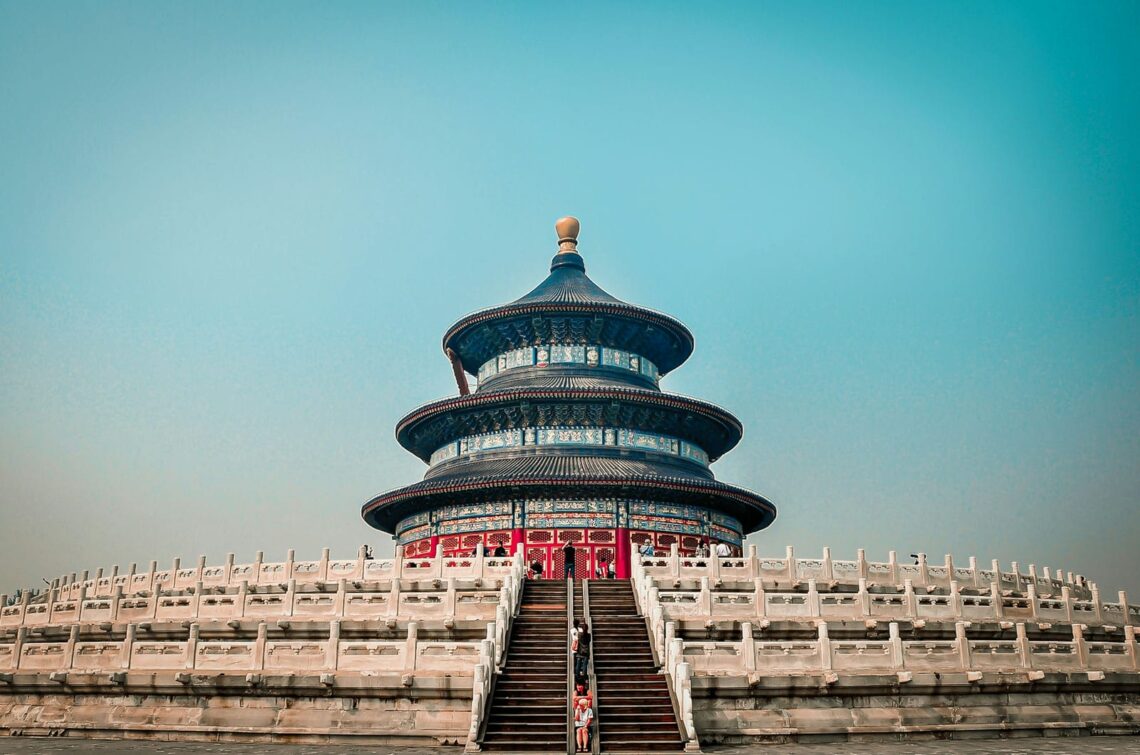
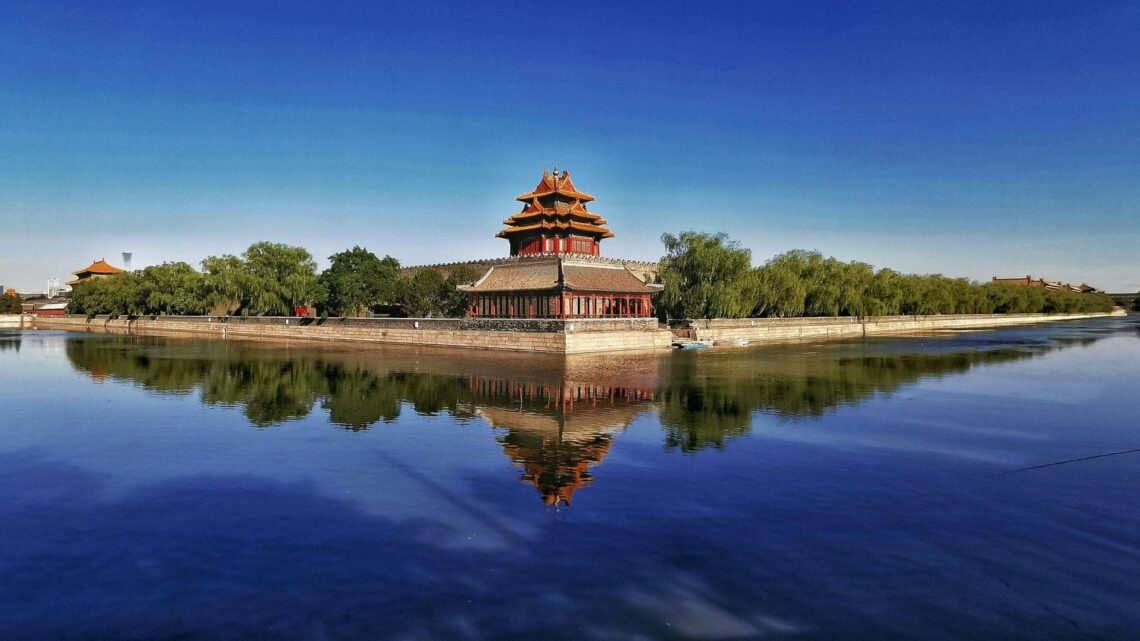
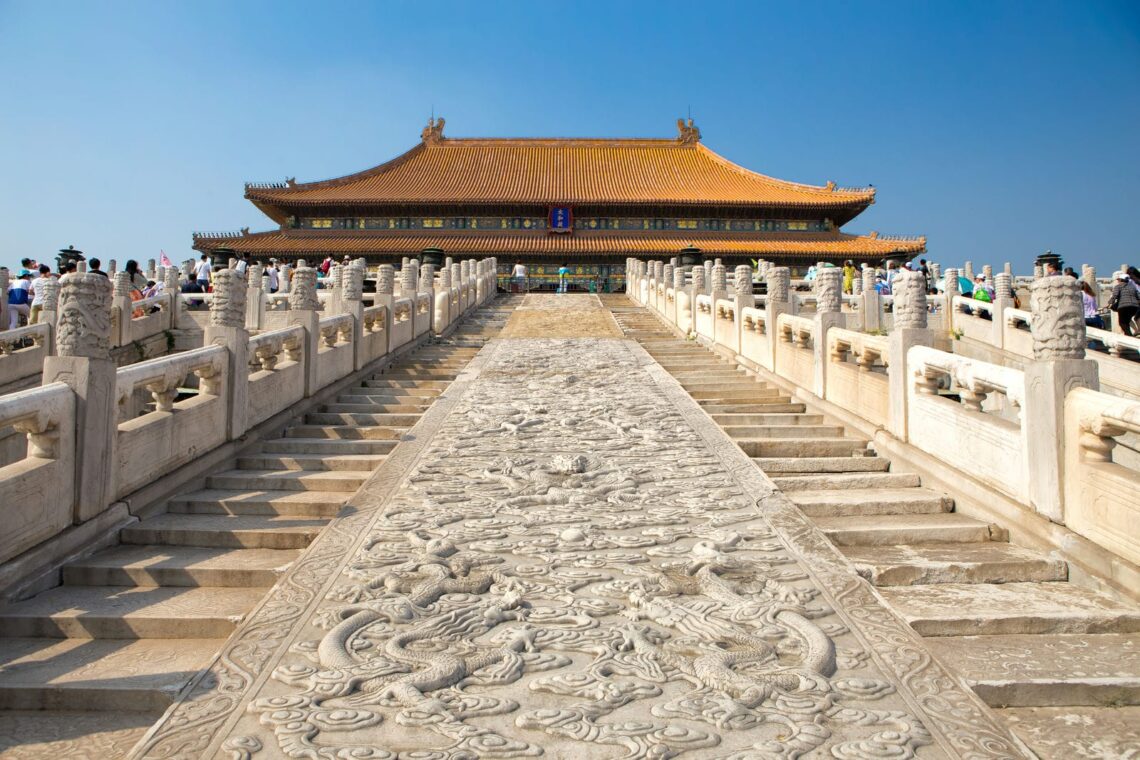
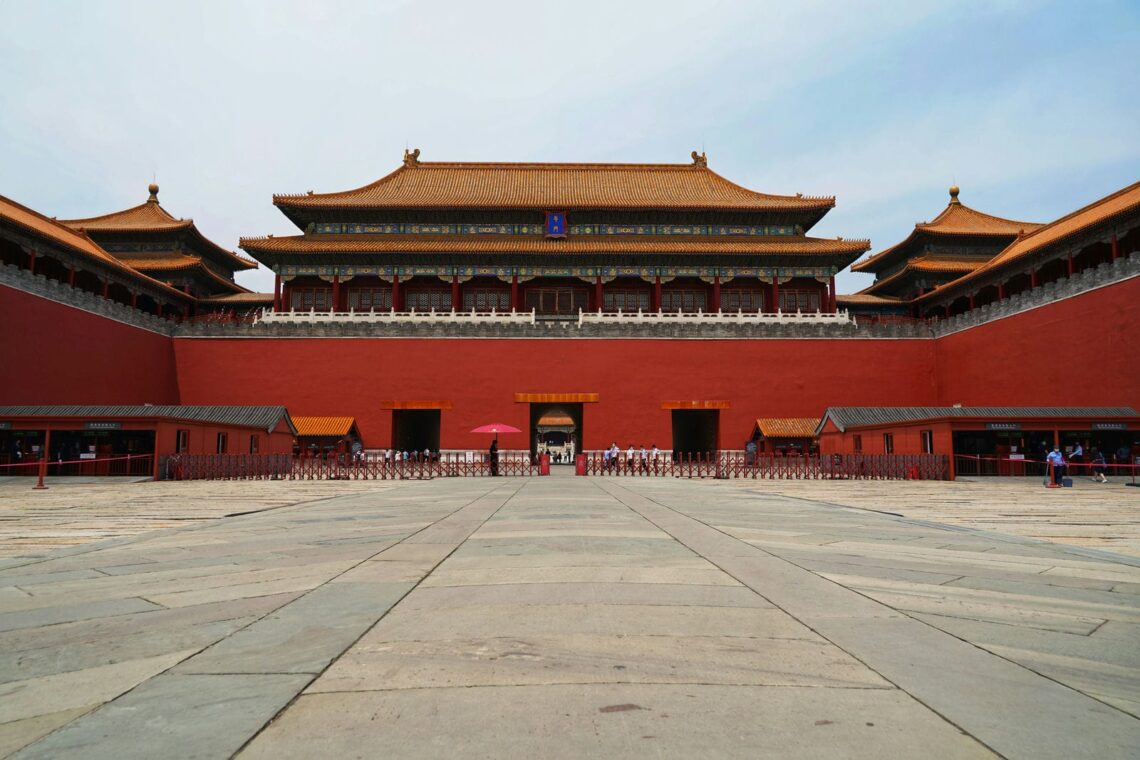
The Forbidden City exemplifies traditional Chinese palatial architecture on an immense scale, integrating stylistic elements like courtyards, halls, gates, and pavilions arranged symmetrically along a central north-south axis by philosophies about sacred geometry as noted by sites. The Forbidden City’s layout reflects ancient Chinese principles about spatial organization, harmonious proportions, and cosmic symbolism guiding imperial constructions for over 2,000 years. The Forbidden City incorporates open courtyards and halls oriented to maximize natural sunlight throughout the complex, with glazed tiles to amplify luminosity. Its structures feature large overhanging eaves, colonnades, and latticework that provide shade along walkways. The Forbidden City directly manifests the cosmological beliefs, political hierarchy, and architectural tastes of successive dynasties. It signifies historic design achievements that influenced buildings across China and East Asia for centuries through its harmonious integration of style, materials, layout, and philosophical principles. It remains an iconic example of Chinese architecture.
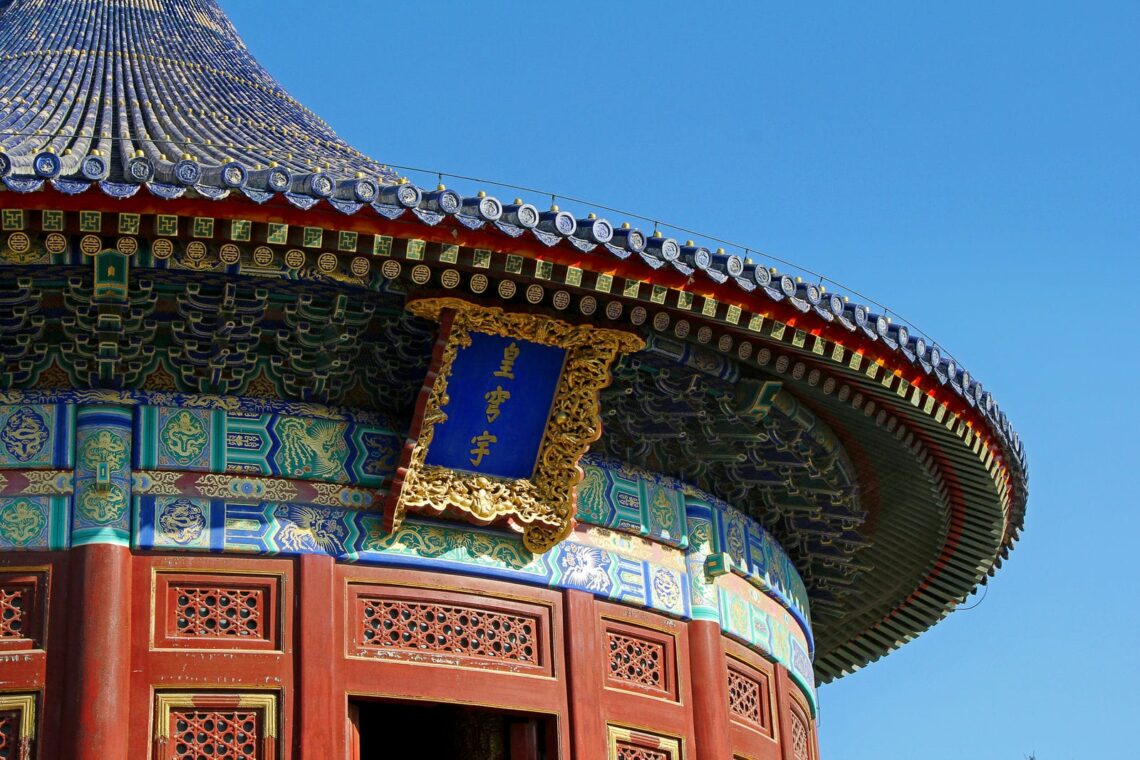
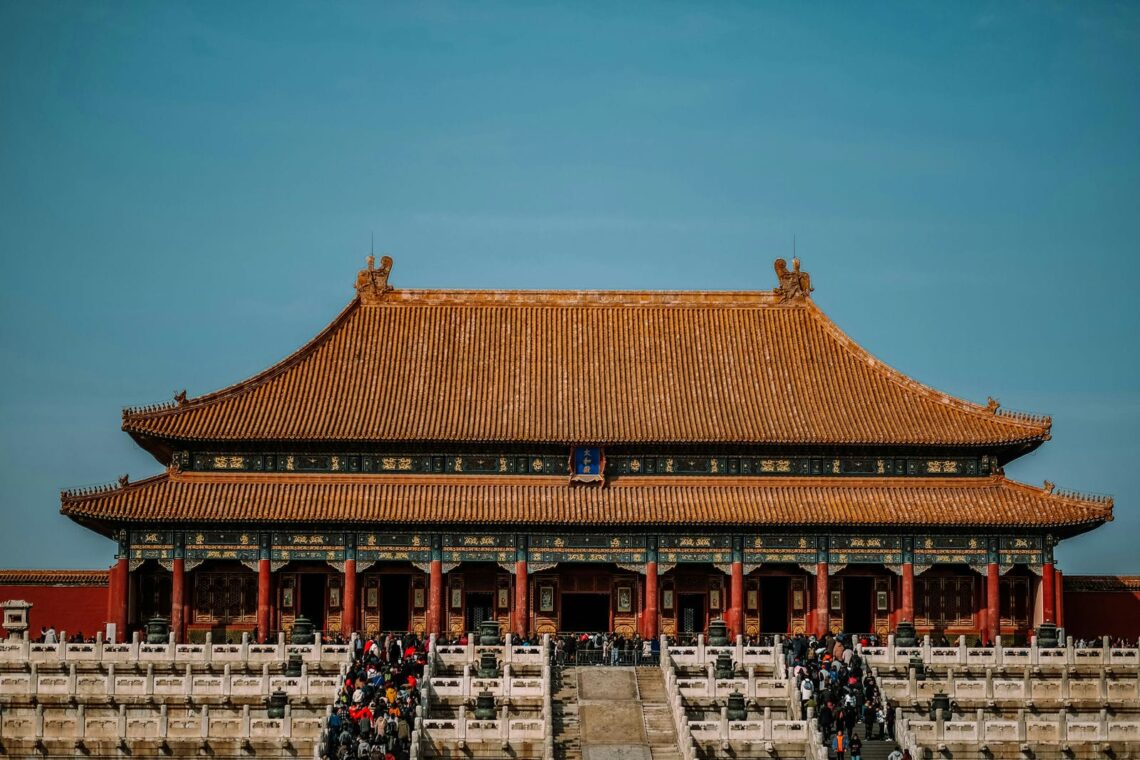
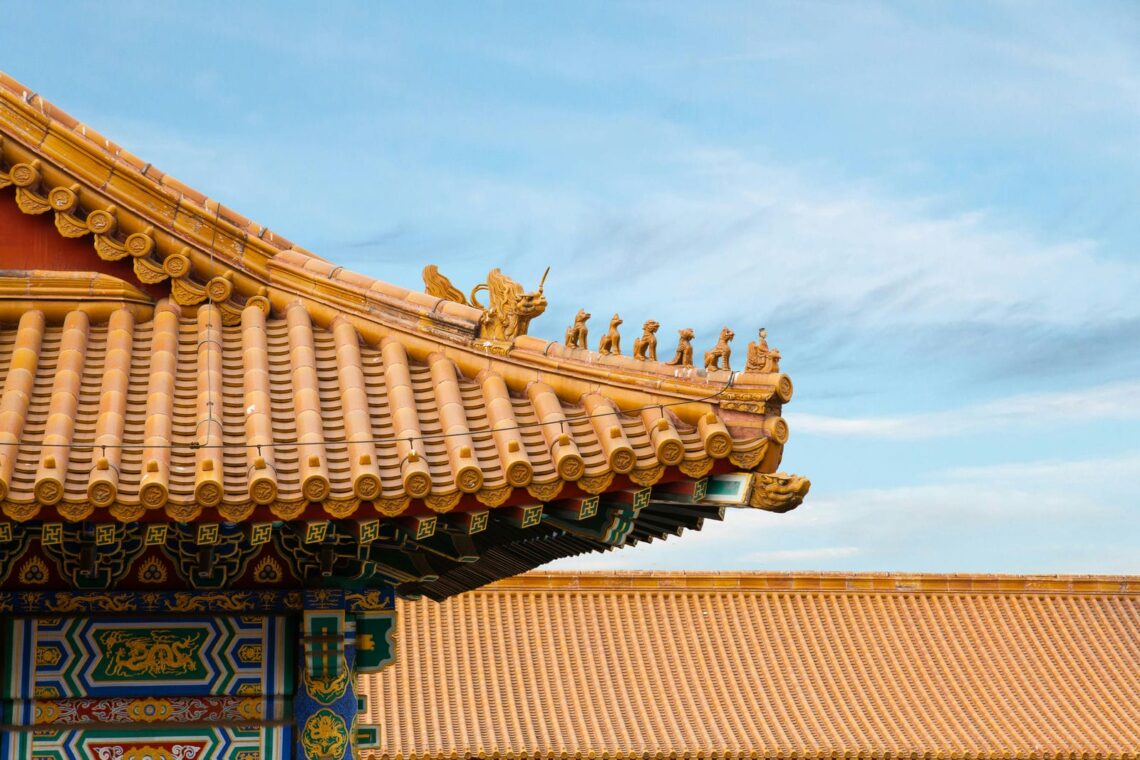
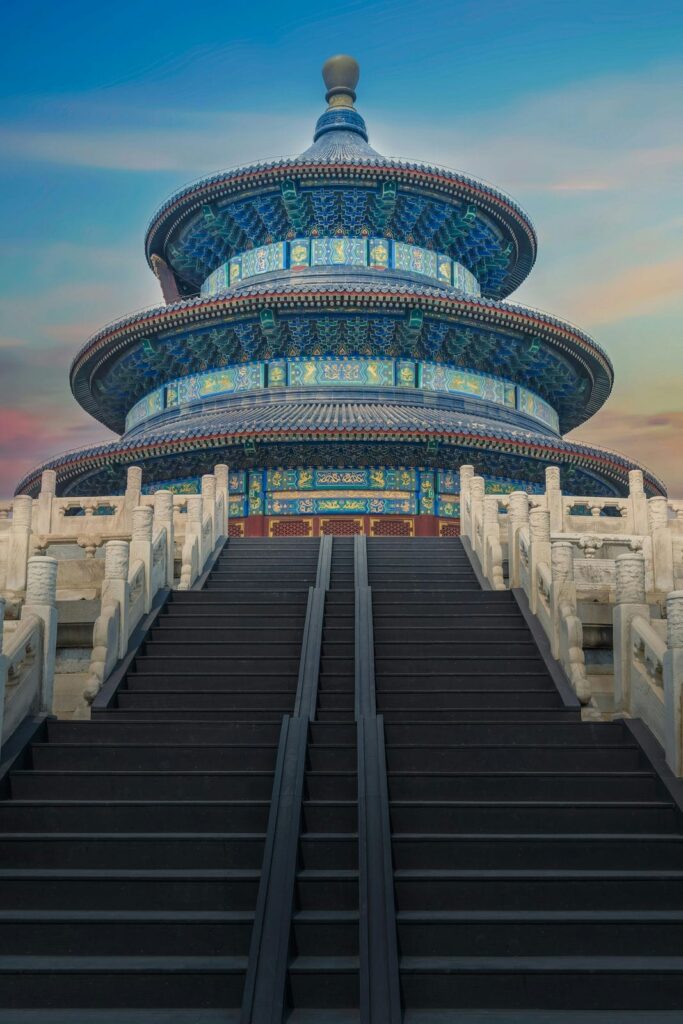
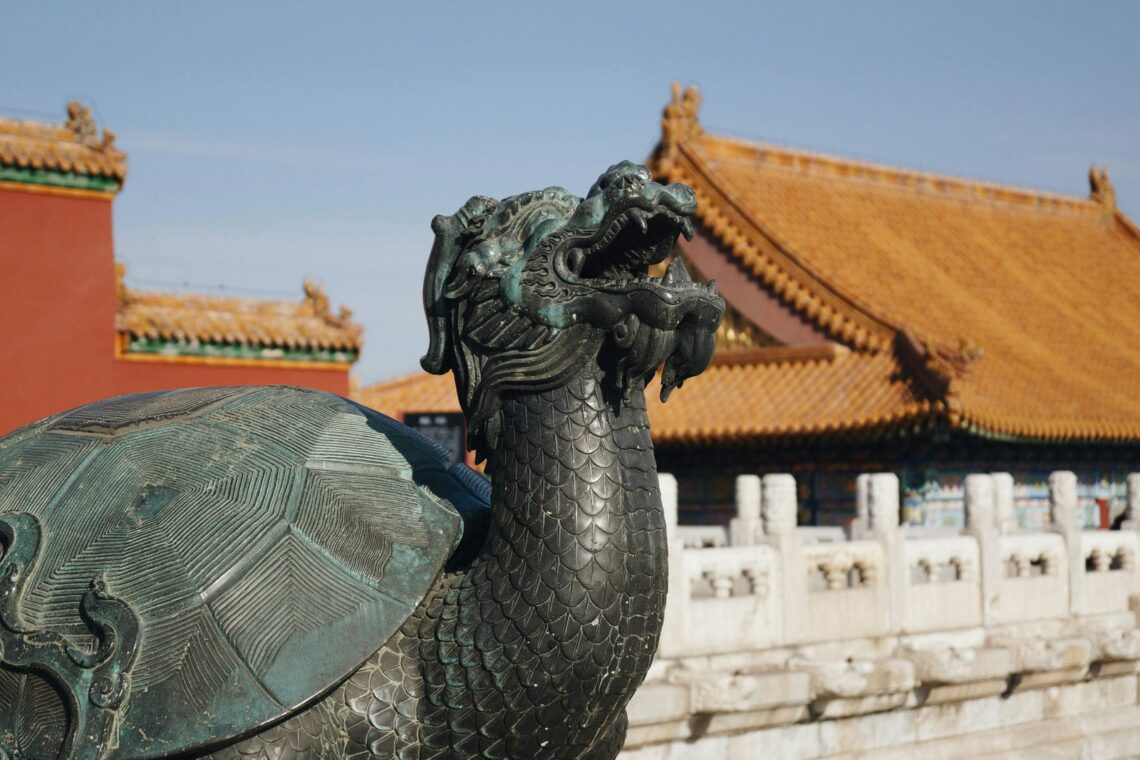
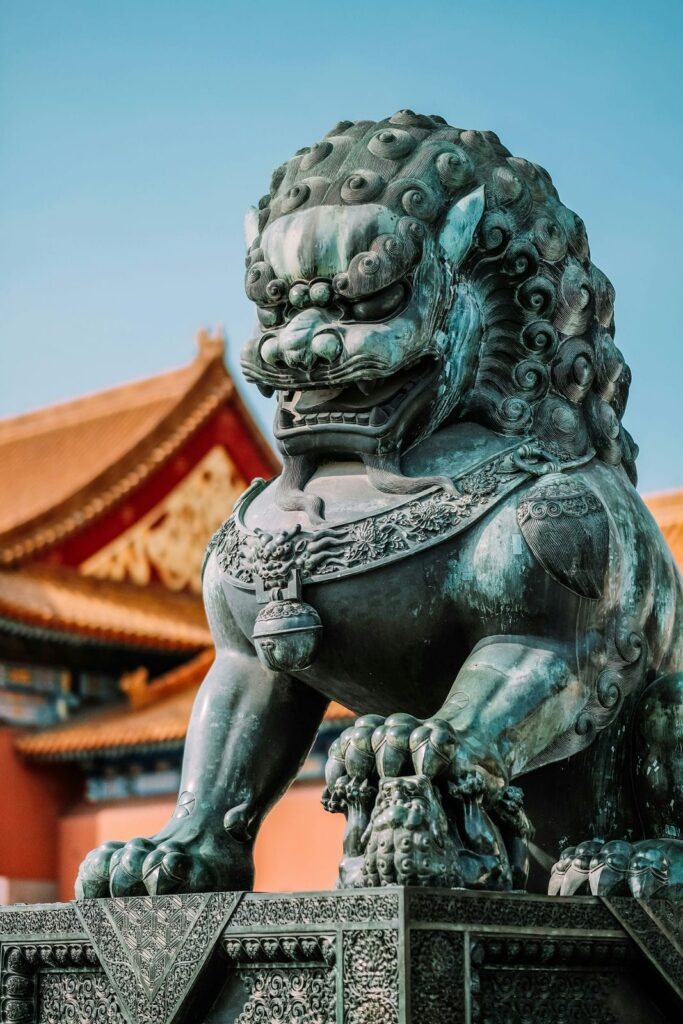
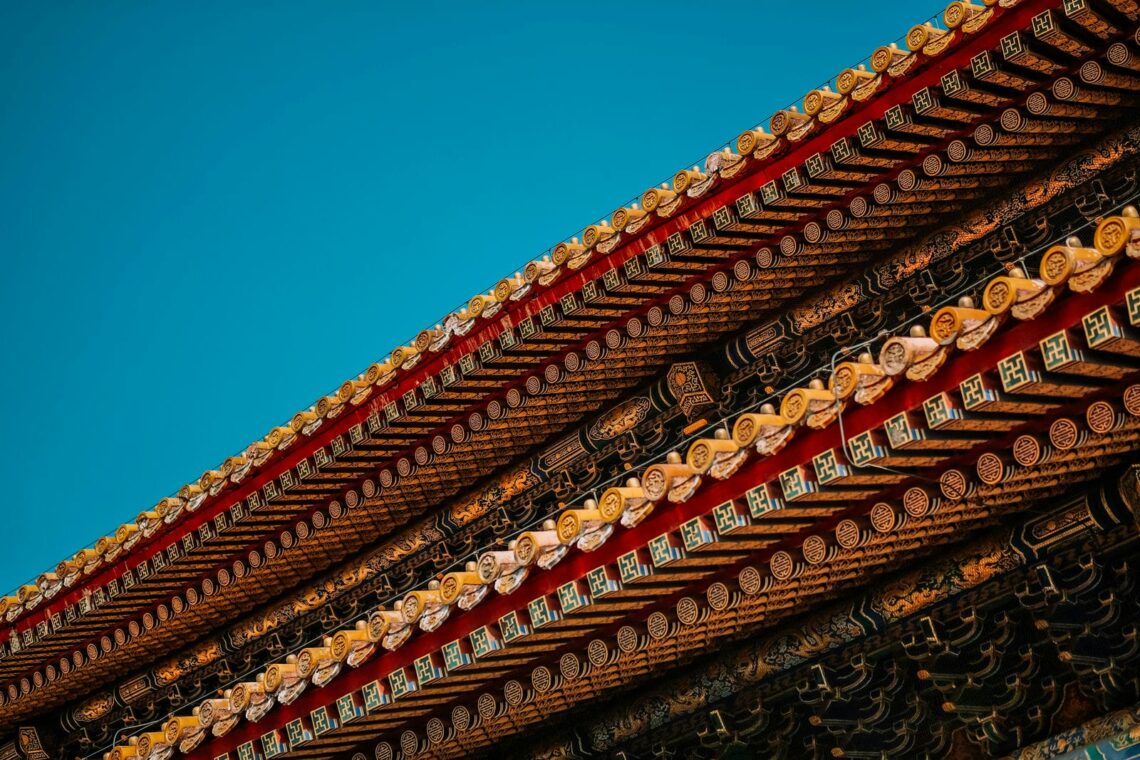
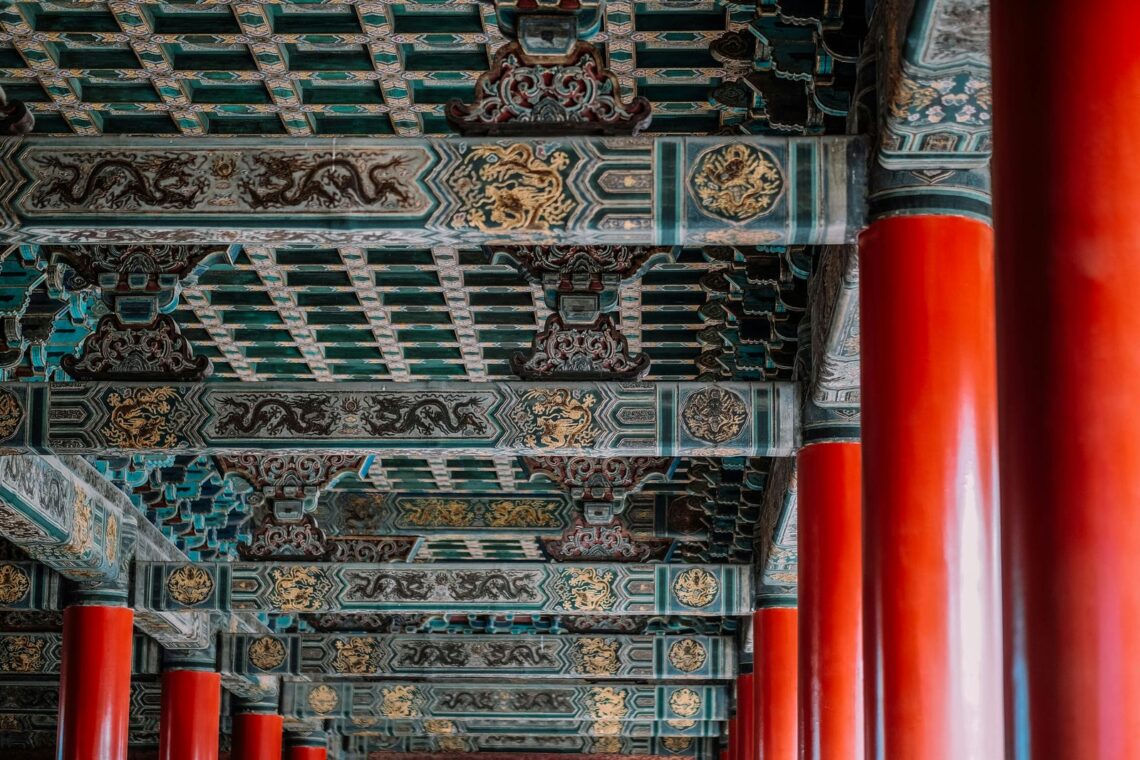
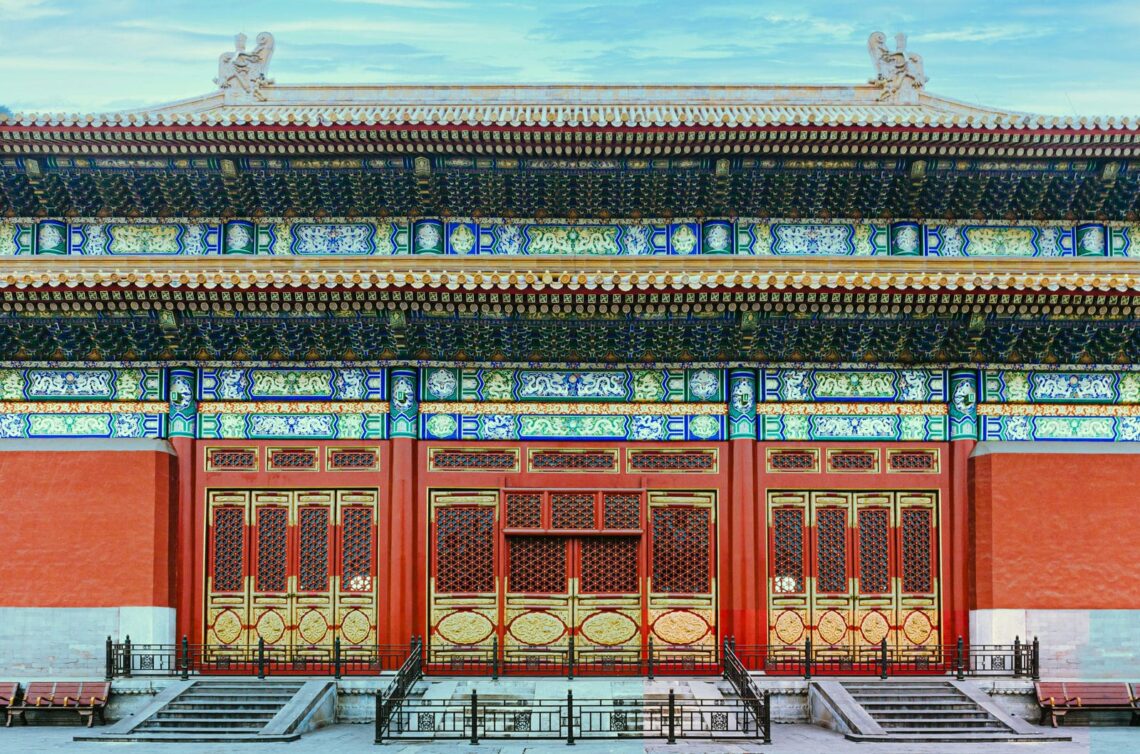
As a largely wooden complex over 600 years old, regular restoration efforts in Forbidden City tackle the deterioration of pillars, beams, walls, and roof frameworks along with maintenance issues like drainage and stonework repairs mentioned on sites. Strict regulations aim to prevent over-commercialization. Accessibility has been enhanced by adding wheelchair ramps, elevators, accessible restrooms, and assisted listening devices, according to travel sites. For safety, there are video surveillance systems, regular structural monitoring, defined emergency exits, fire prevention systems, and personnel to direct visitor flow. Tour providers like Viator offer specialized private Forbidden City tour options tailored for architects, design professionals, and architecture students as advertised. These tours elucidate the layout, design elements, and construction techniques from expert guides while exploring usually restricted areas and historic chambers reserved for architectural interest groups.
8. Taipei 101
Taipei 101 is located in Xinyi District, Taipei, Taiwan. It is a 101-story skyscraper that held the title of the world’s tallest building from 2004-2010. It integrates offices, a shopping mall, and indoor and outdoor observatories into one towering structure reaching 1,667 feet (508 meters) high. Notable features include the tuned mass damper stabilizing the tower against wind and earthquakes, eight symbolically shaped sections, and a multi-level shopping mall. Over 2 million annual visitors enjoy panoramic views, dining, and shopping at Taipei 101. Construction of Taipei 101 began in 1999 and finished in 2004, taking five years to complete the record-setting skyscraper through intricate engineering. It was formally opened to the public and unveiled to worldwide acclaim on New Year’s Eve 2004, ushering in an advanced era for Taiwan. Taipei 101 was chiefly designed by Taiwanese architect C.Y. Lee & Partners with engineers Thornton Tomasetti. It was developed by Taipei Financial Center Corporation, which oversees the mixed-use complex. Construction was carried out by Samsung C&T and KTRT Joint Venture, comprising over 2,000 skilled workers.
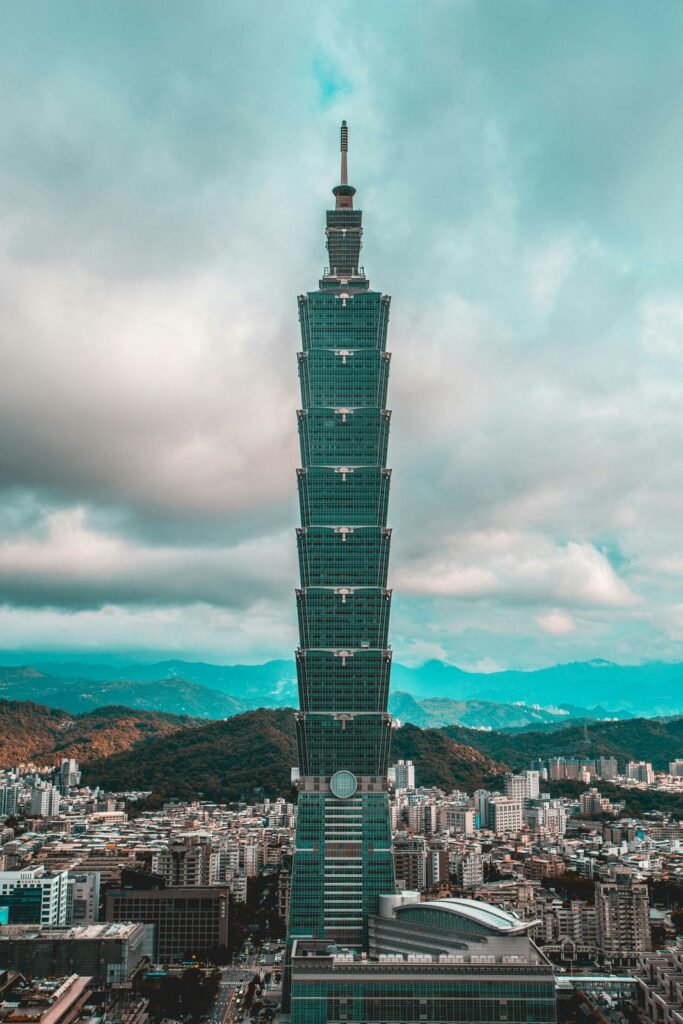
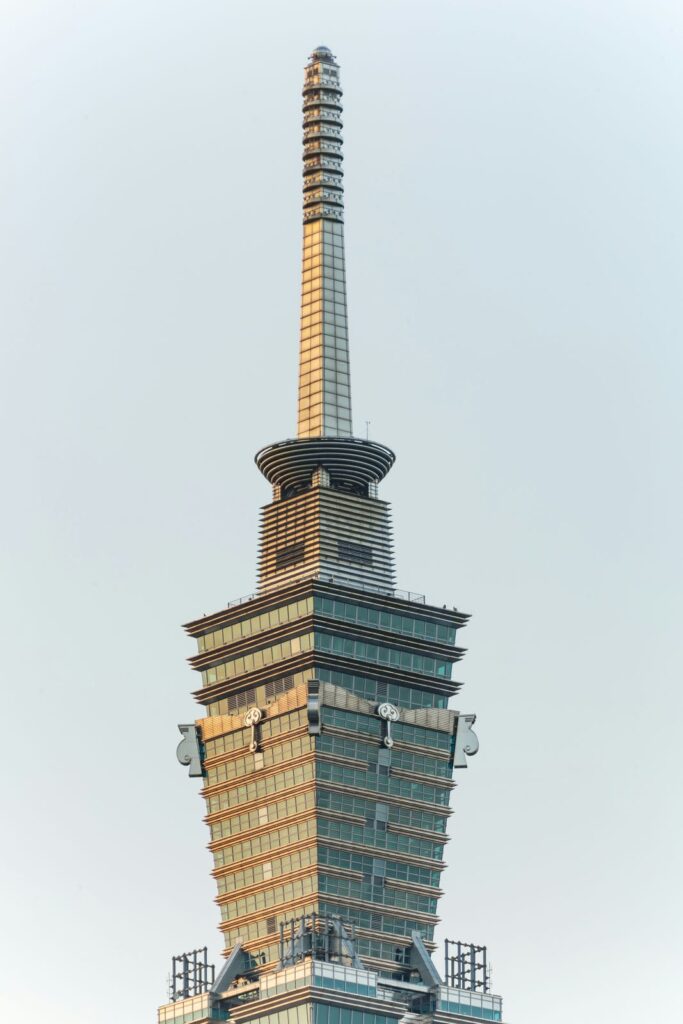
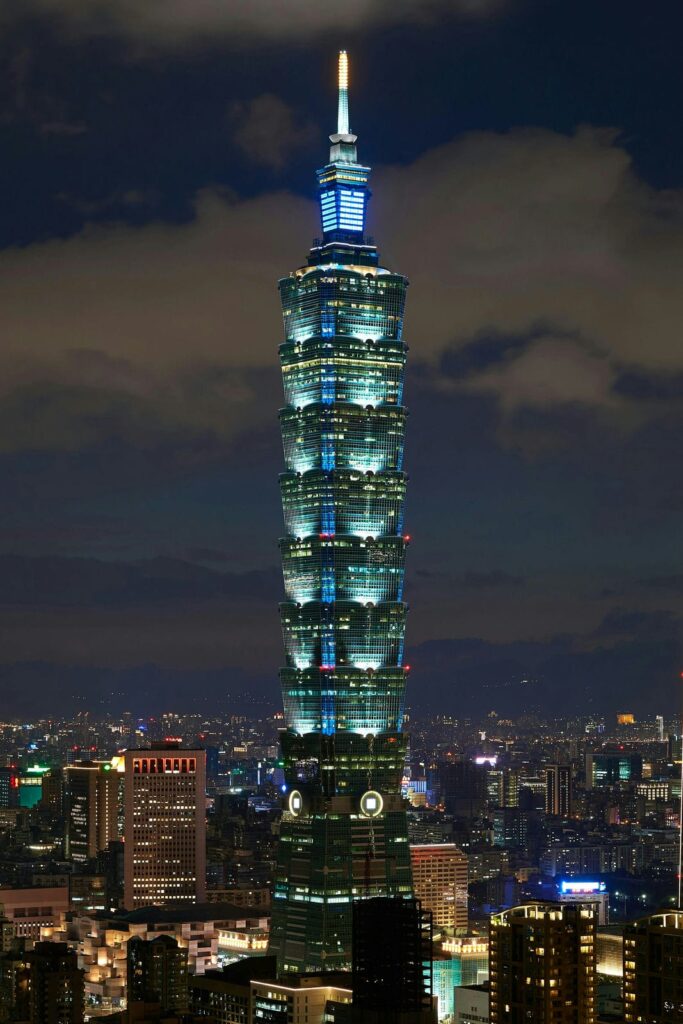
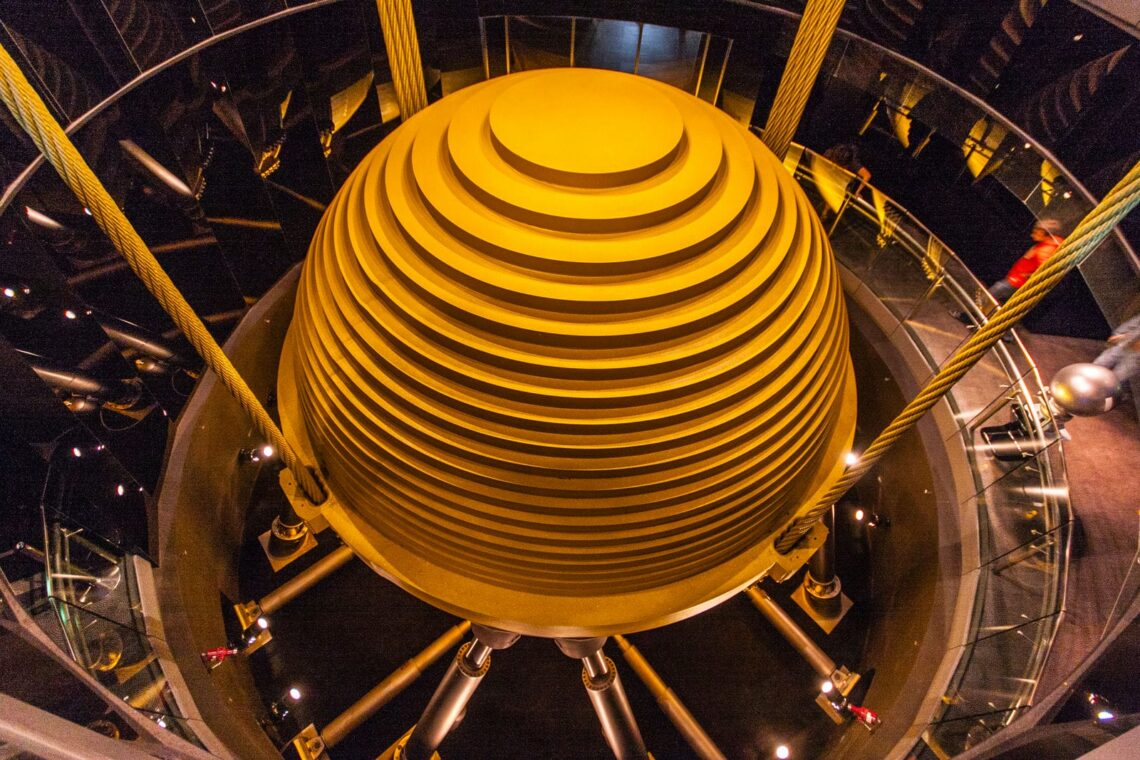
Taipei 101 features a postmodern architectural style, integrating traditional Eastern design influences like pagoda-style segmented sections and a tall central spire with modern interpretations like its sleek glass facade, tuned mass damper, and mix of office, retail, and leisure spaces. Taipei 101’s pagoda-like form and segments reference traditional Chinese architecture. The eight distinct sections represent prosperity in Chinese culture. Its extensive use of glass for transparency echoes modern skyscraper trends. Taipei 101 has an LED system with changing displays, creating dynamic nighttime cityscape scenes. The beacon at the top also projects light design. Exterior sunshades block harsh daylight and glare. The tower itself provides shade in outdoor plazas. Taipei 101 directly engages the local context through its flexibility against seismic activity, typhoons, and dense urban sites. Chinese numerological and architectural references link cultural meaning. Public transit connections, open retail spaces, and the Sky Garden integrate community life. The fusion of Eastern and postmodern aesthetics created a new architectural style.
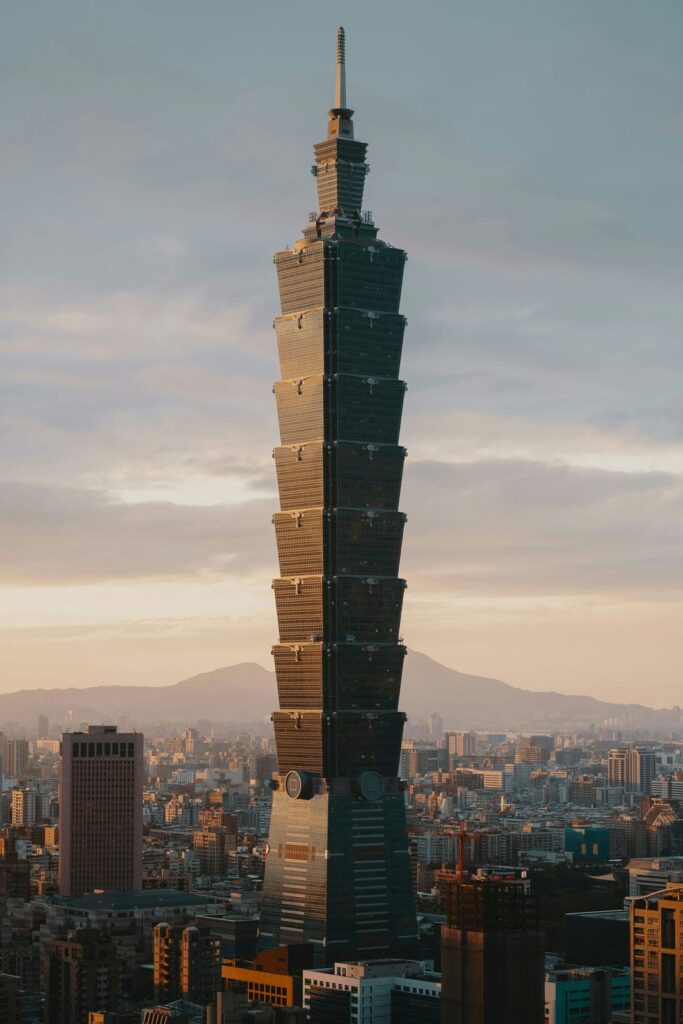
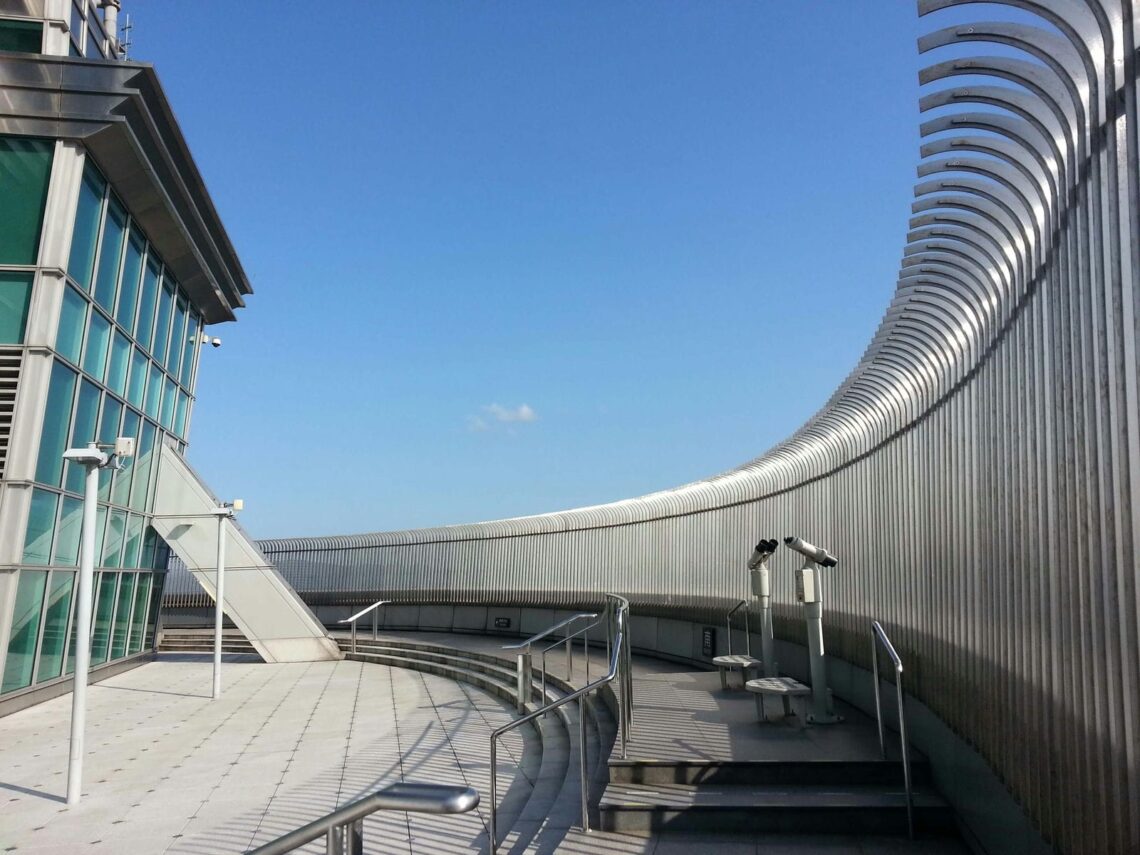
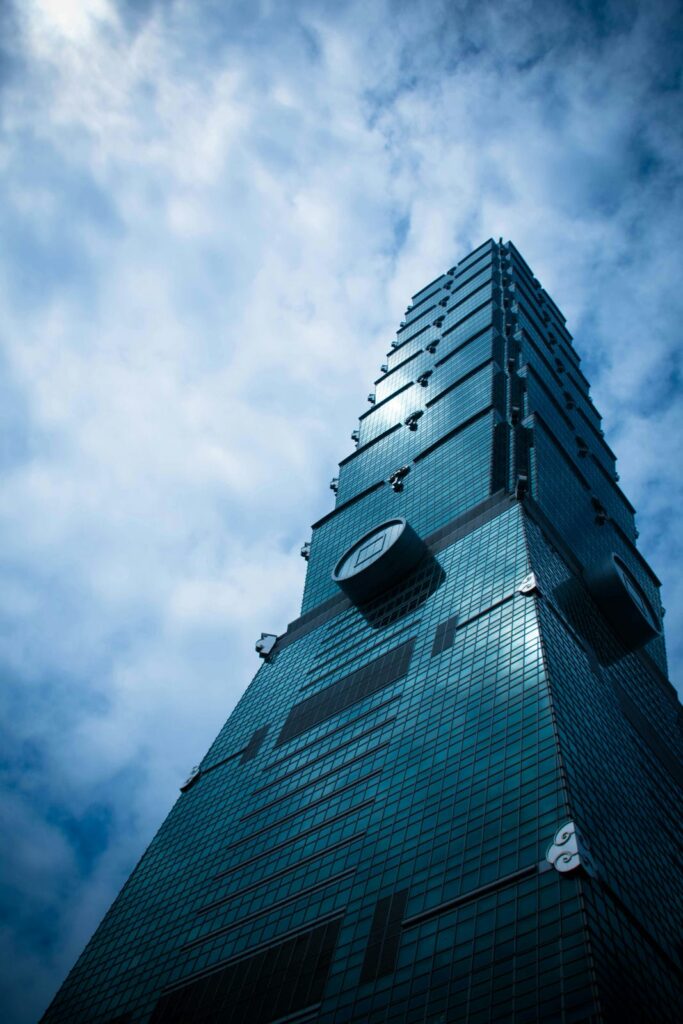
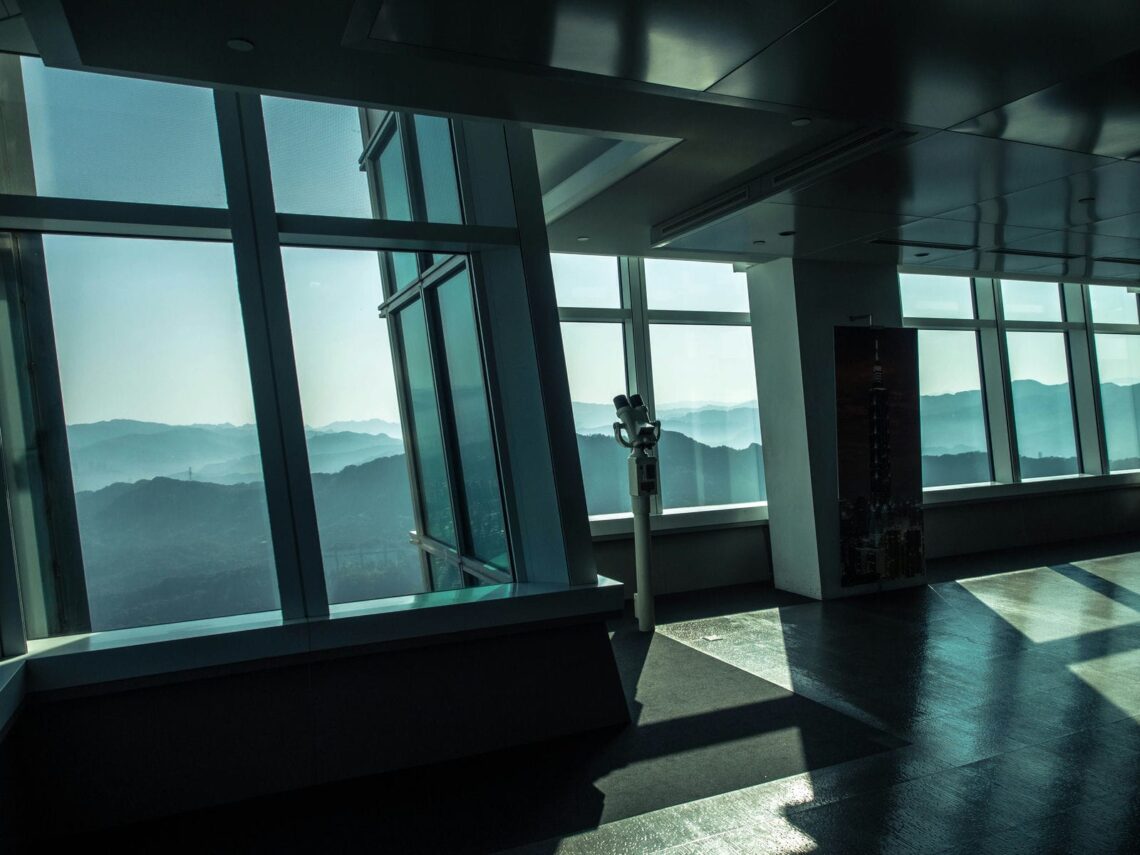
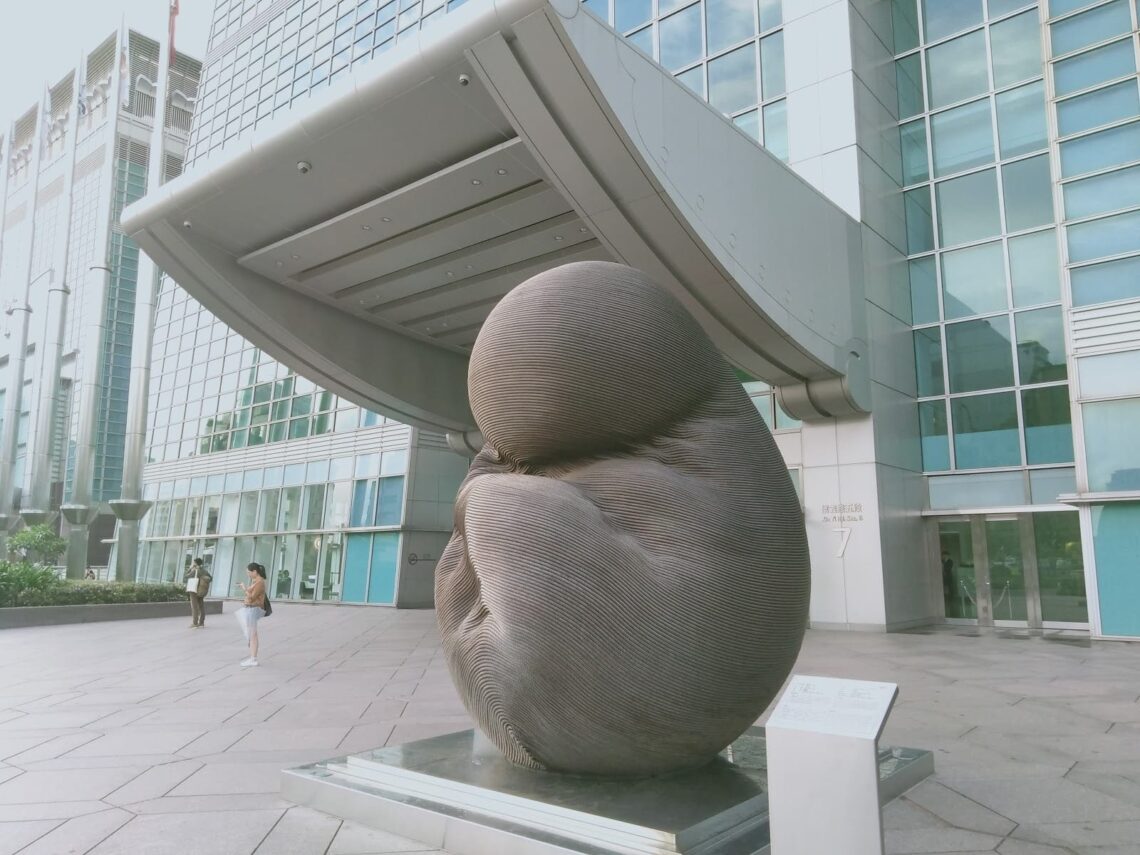
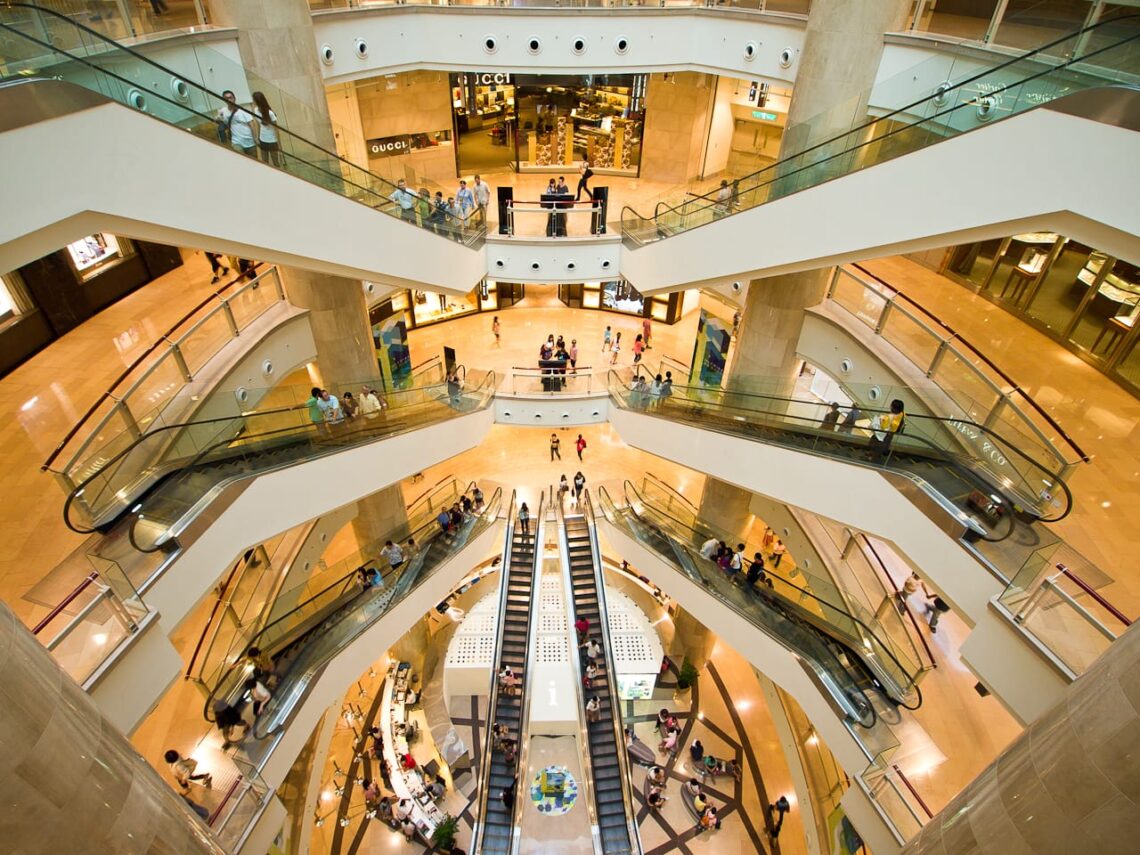
Taipei 101 has required minimal restoration beyond routine upkeep and amenities renewal to maintain state-of-the-art systems. Potential long-term challenges include upgrading aging mechanical equipment, accommodating transportation links, keeping the retail mix viable, and preserving structural resilience against weathering and earthquakes over time. Taipei 101 has 24/7 security systems, fire prevention, emergency broadcasts, evacuation procedures, and earthquake monitors. For accessibility, there are wheelchair routes, elevators, accessible restrooms, and Sky Garden entry. Ramps, railings, and non-slip flooring enable safe visitor circulation. Taipei 101 offers private guided tours tailored specifically for architects, engineers, design students, and building aficionados. These cater to architectural interests by elucidating innovative structures, façade details, advanced systems, and seismic resistance measures from expert local guides.
9. Meiji Shrine
The Meiji Shrine, located in Tokyo, Japan, is a Shinto shrine complex dedicated to the deified spirits of Emperor Meiji and his wife, Empress Shōken. It is in central Tokyo’s large forested part of the Shibuya district. The expansive shrine grounds feature the main shrine buildings, auxiliary shrines, a treasure museum, extensive forested areas with over 100,000 trees, and various other structures that attract over 3 million visitors annually for cultural events and New Year celebrations. Construction on the Meiji Shrine began in 1915 and was completed in 1926. It was formally dedicated to Emperor Meiji and Empress Shōken in 1920, eight years after the emperor’s passing and six years after the empress died. Though the original shrine was destroyed during WWII, it was rebuilt in 1958, faithful to the original design. The Meiji Shrine was commissioned by the Emperor in 1915 before his death. The design is attributed to architect Endo Chuta, who oversaw initial construction along with other Japanese architects like Itō Chūta and Chōkichi Kawamoto when rebuilding late.
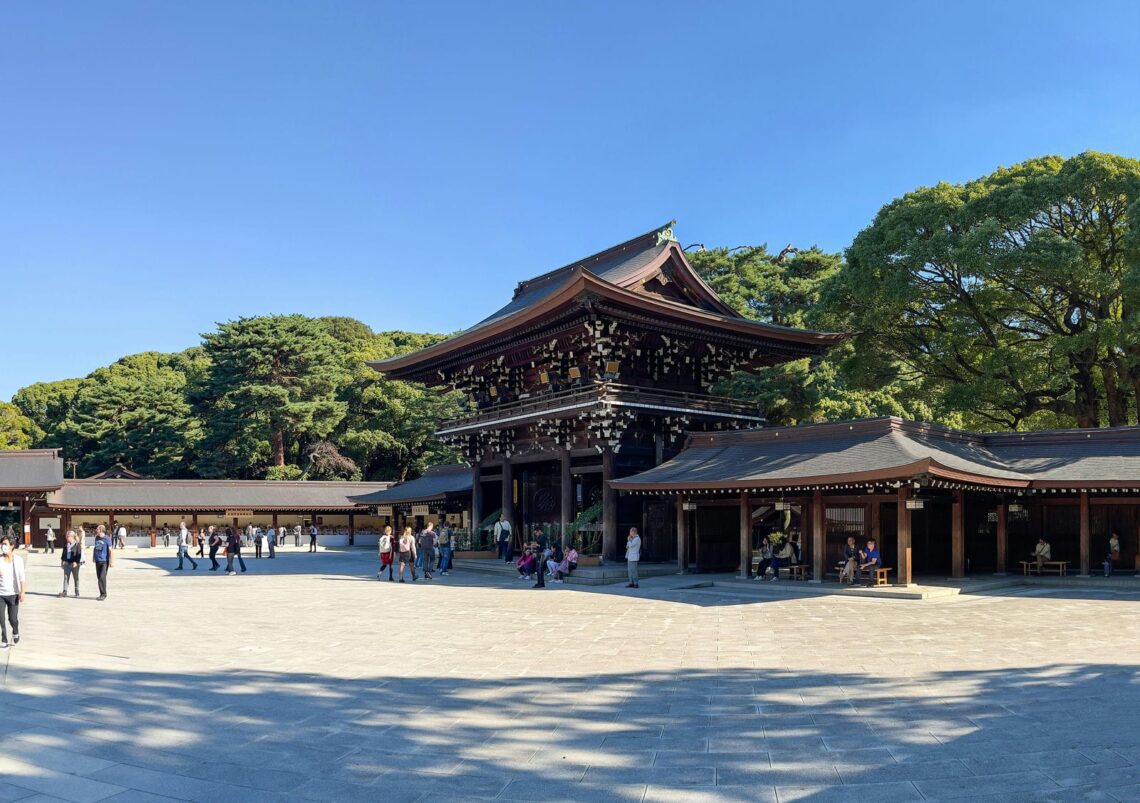
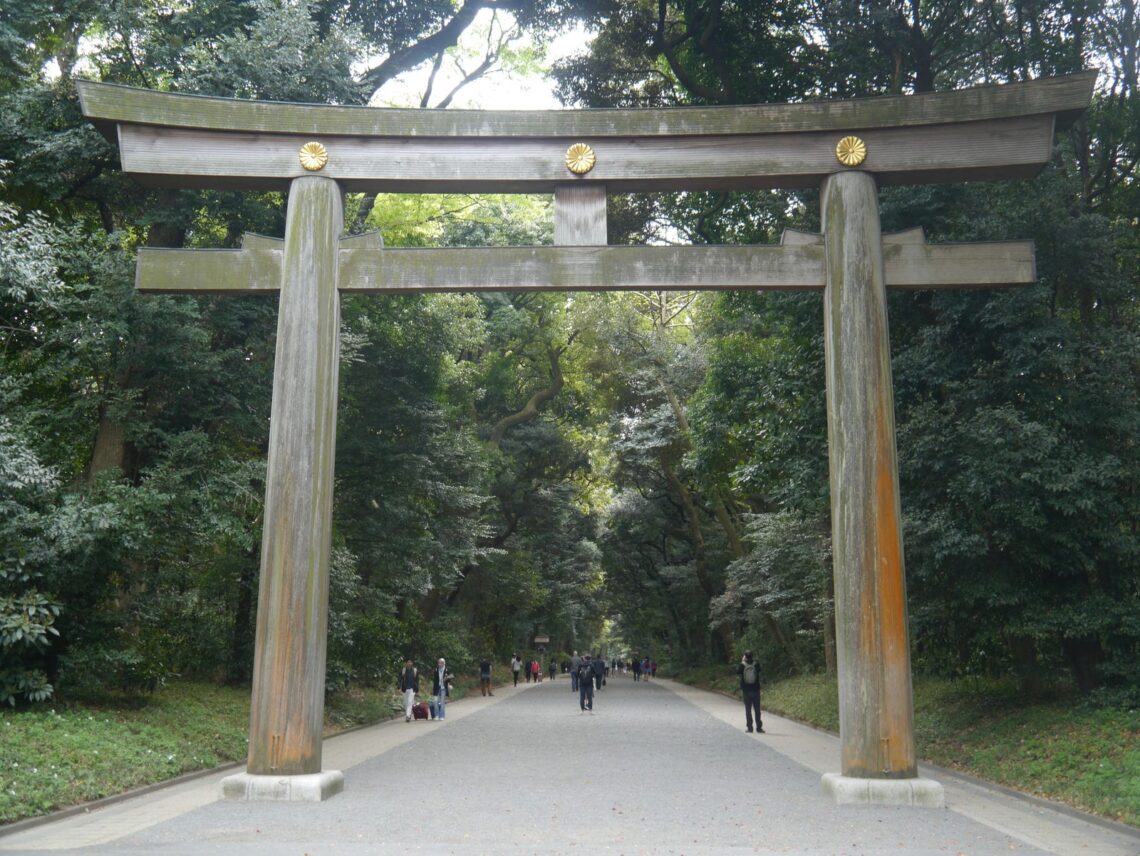
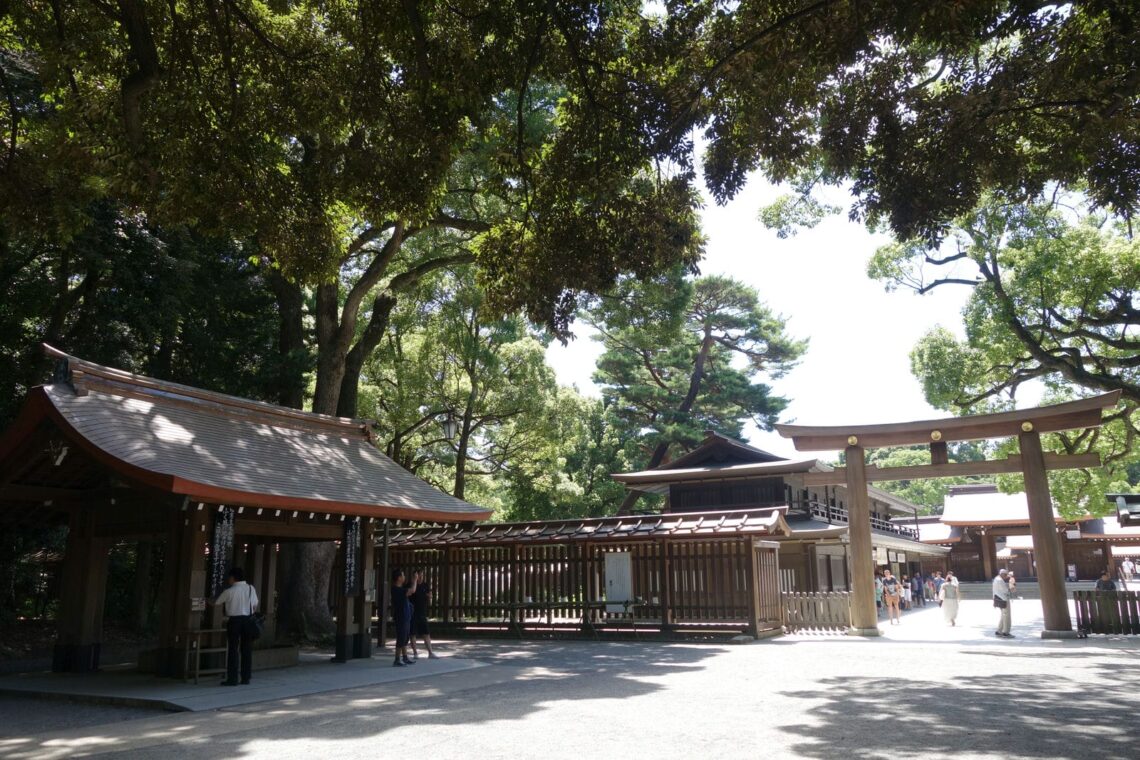
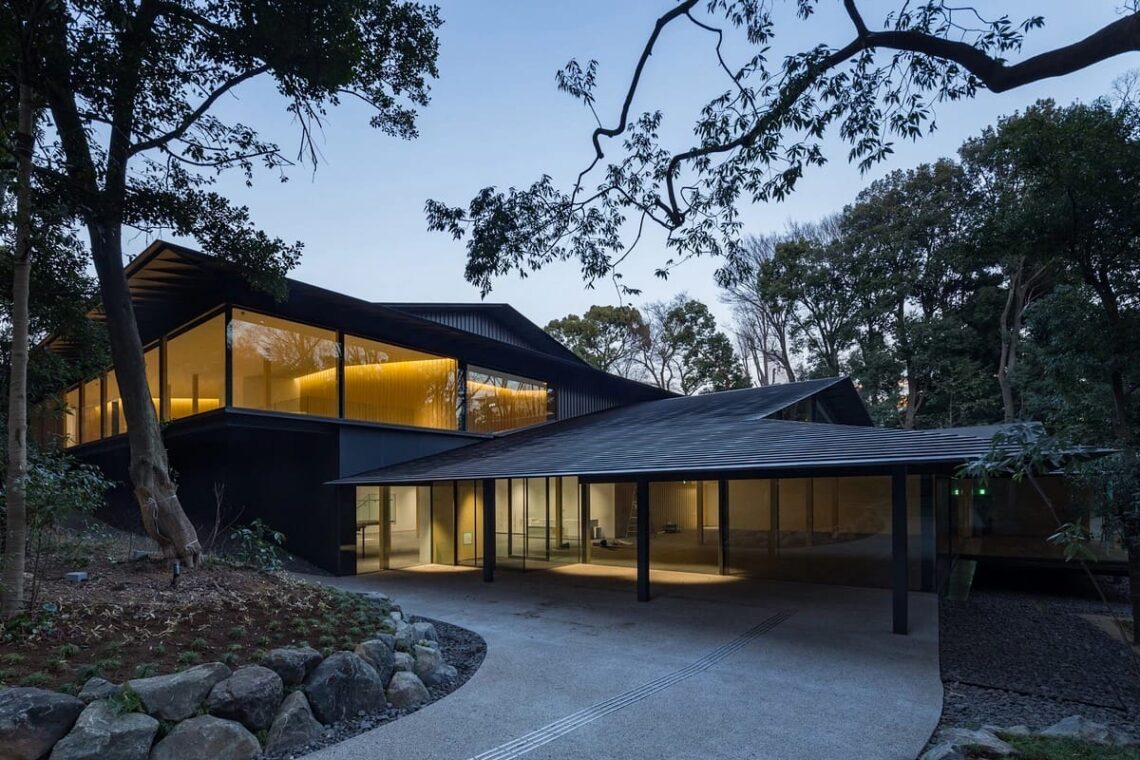

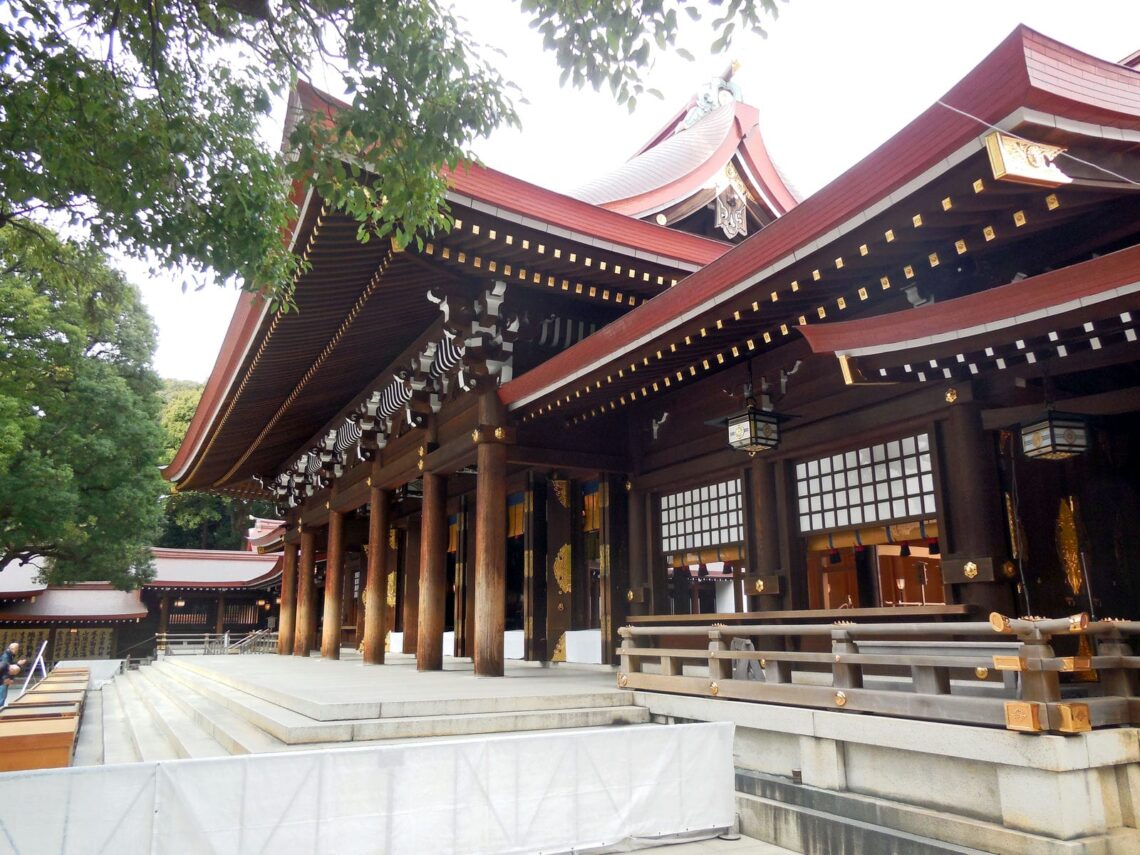
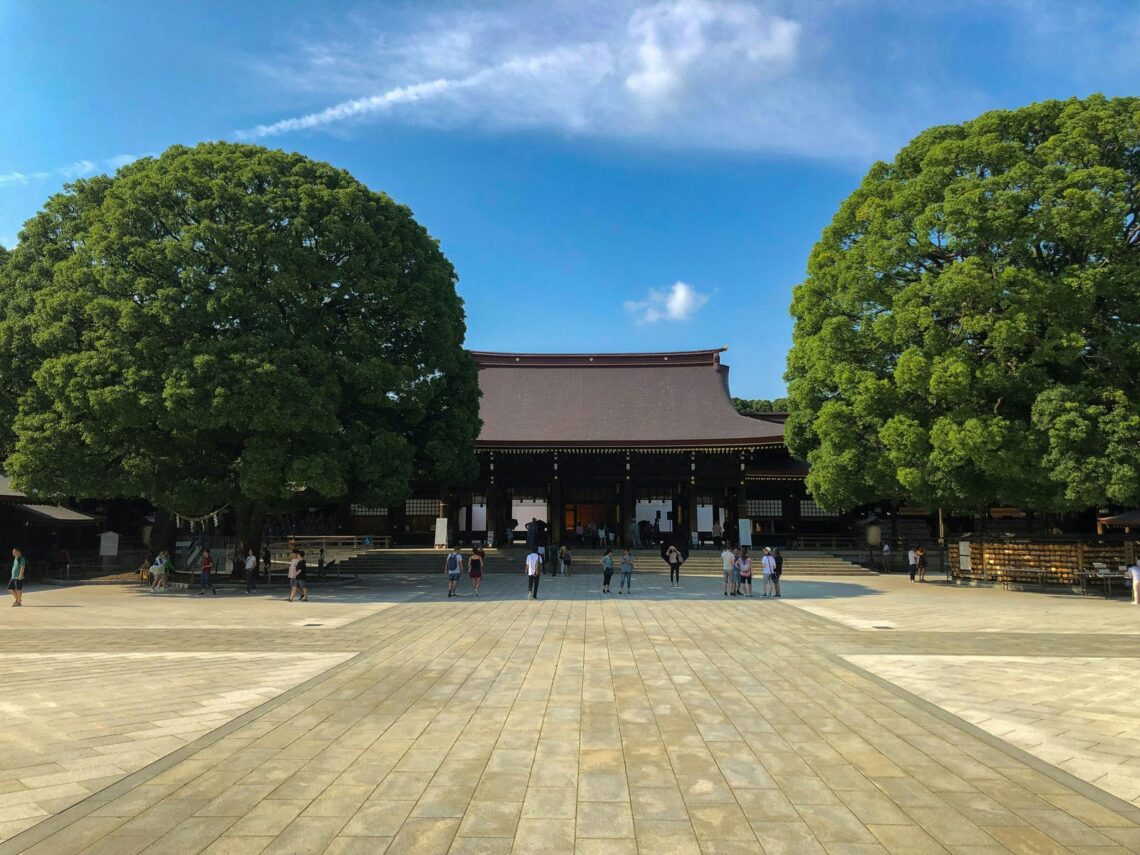
The buildings of the Meiji Shrine complex feature traditional Japanese architectural styles used for important Shinto shrines. Hallmarks include elevated thatched roofs, extended eaves, verandas, wooden columns, cypress bark rooftop decorations, and bright lacquered surfaces contrasting the natural forest setting. The Meiji Shrine’s traditional Japanese architectural style reflects enduring imperial influences. In keeping with traditional techniques, the Meiji Shrine buildings use natural lighting from shoji screen windows during the day and adjustable lanterns at night. Covered colonnade walkways provide shade around structures. The forested landscape offers dappled light and shadow patterns across grounds while illuminating sanctuaries. Controlled lighting protects fragile artifacts when displayed. The Meiji Shrine represents a Japanese sensibility toward design, spatial understanding, refined craftsmanship, and connection to nature, influencing temples and modern structures across Japan and globally.
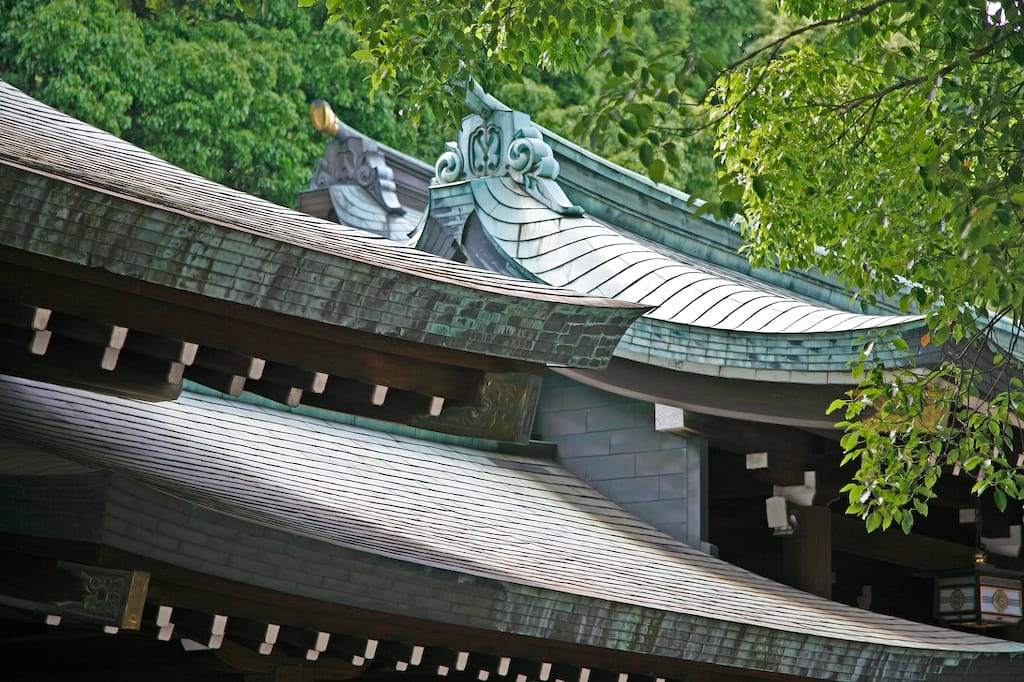
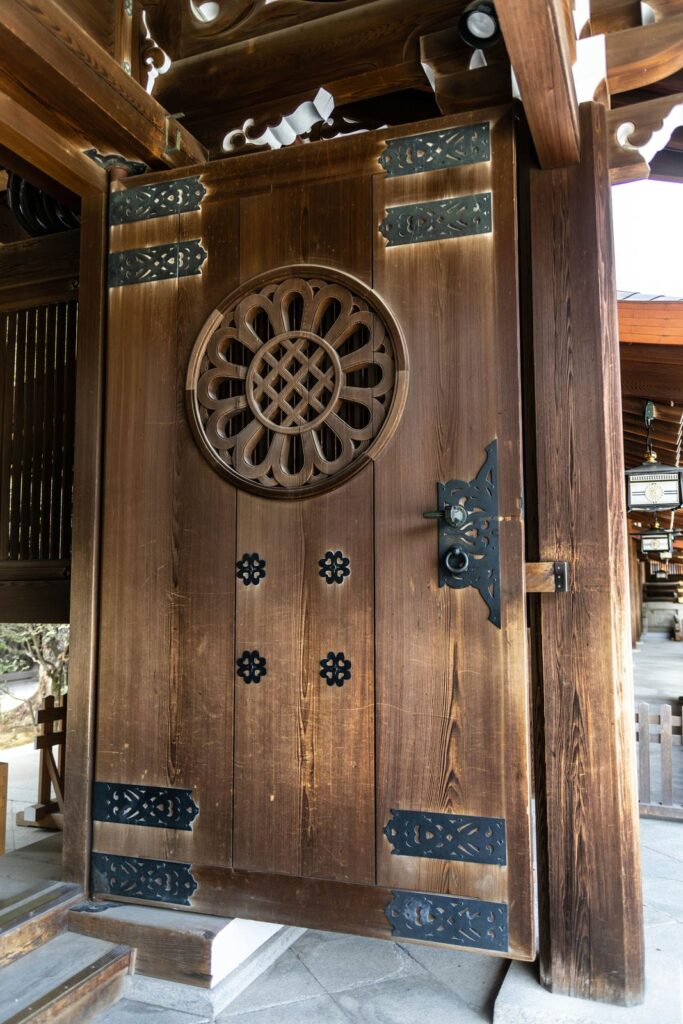
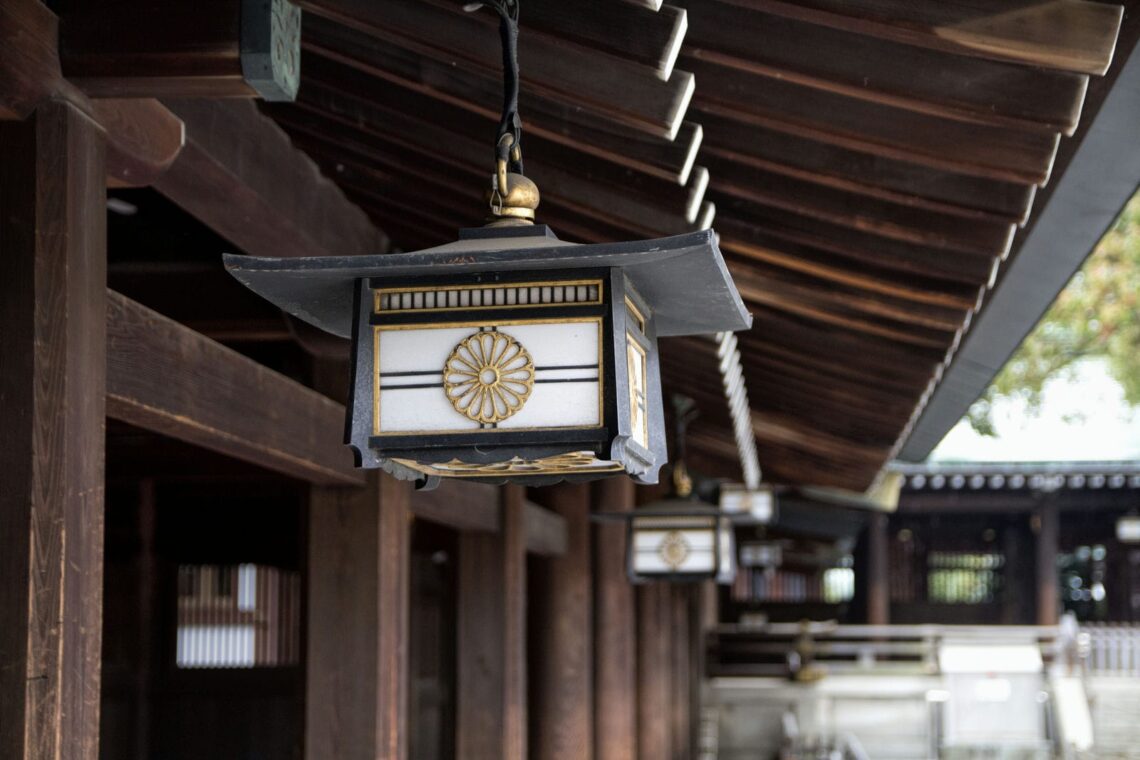
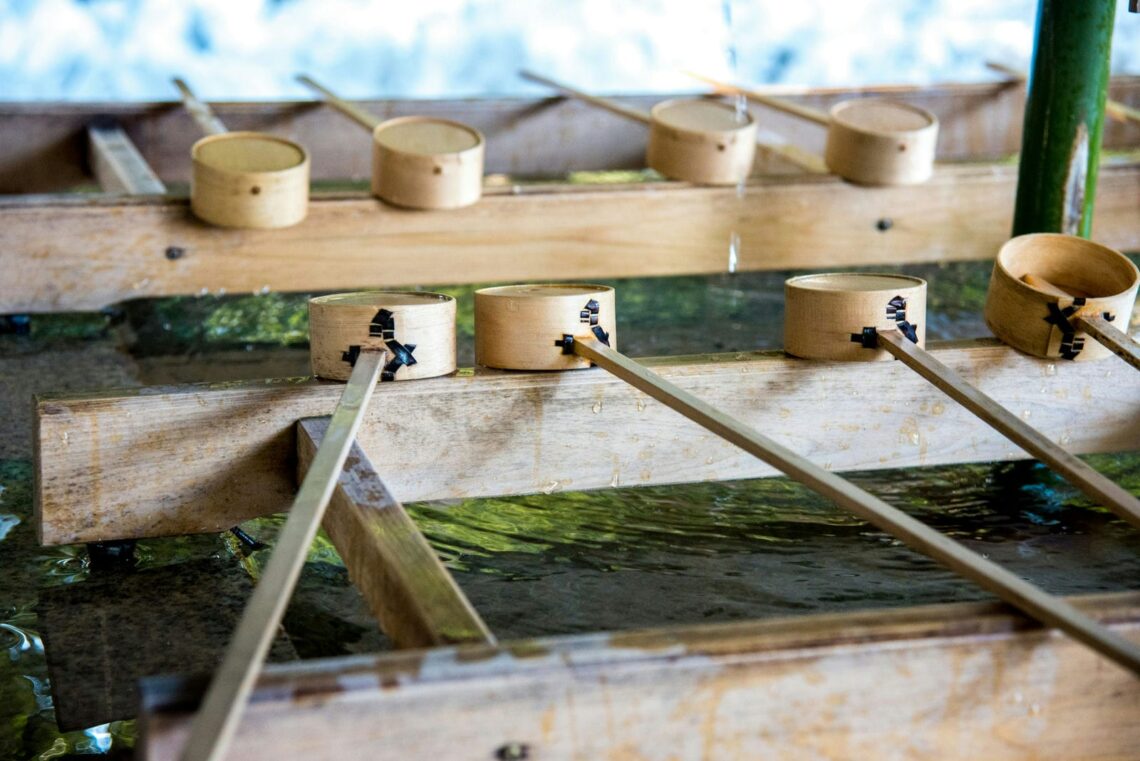
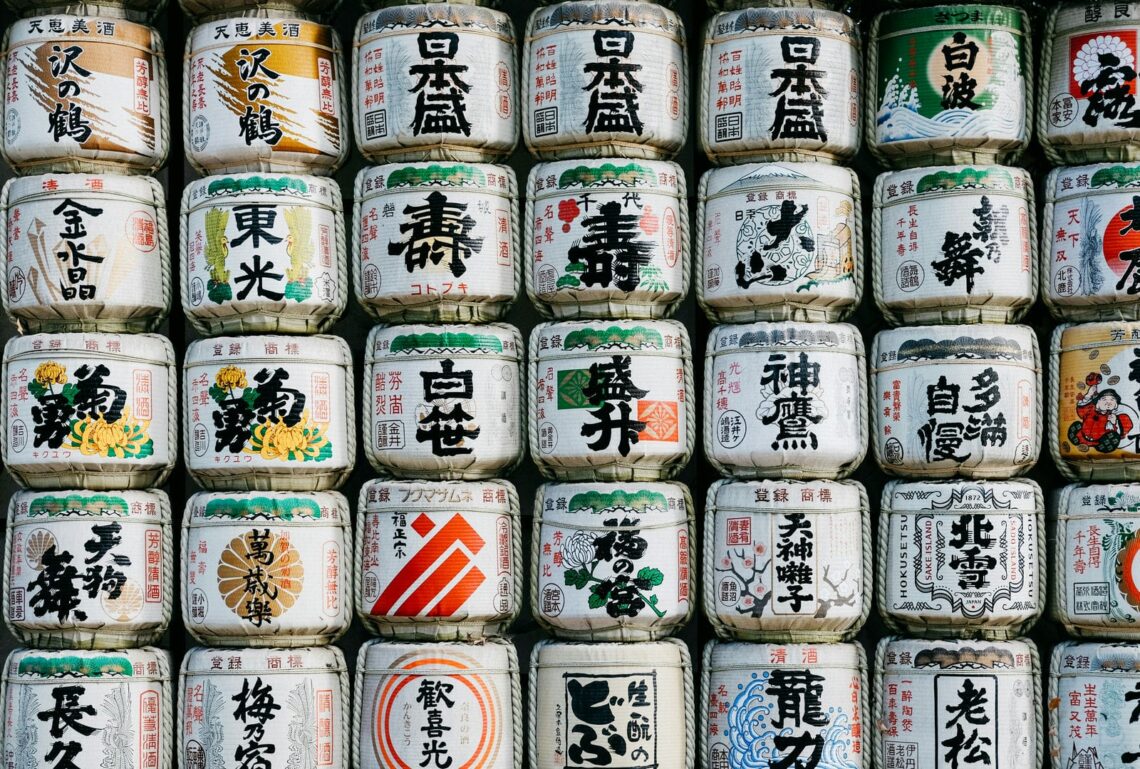
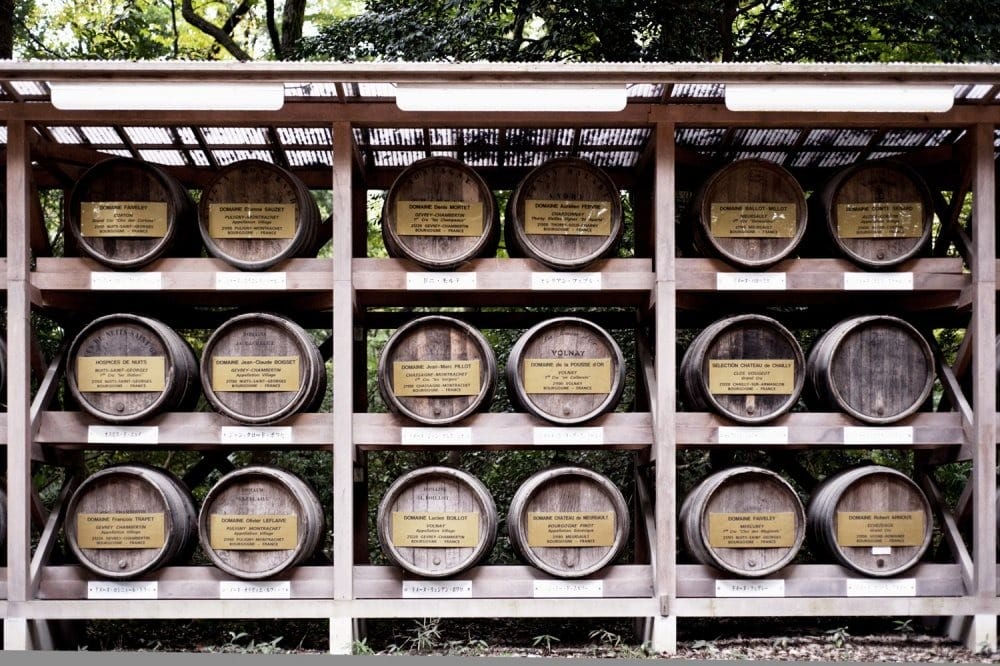
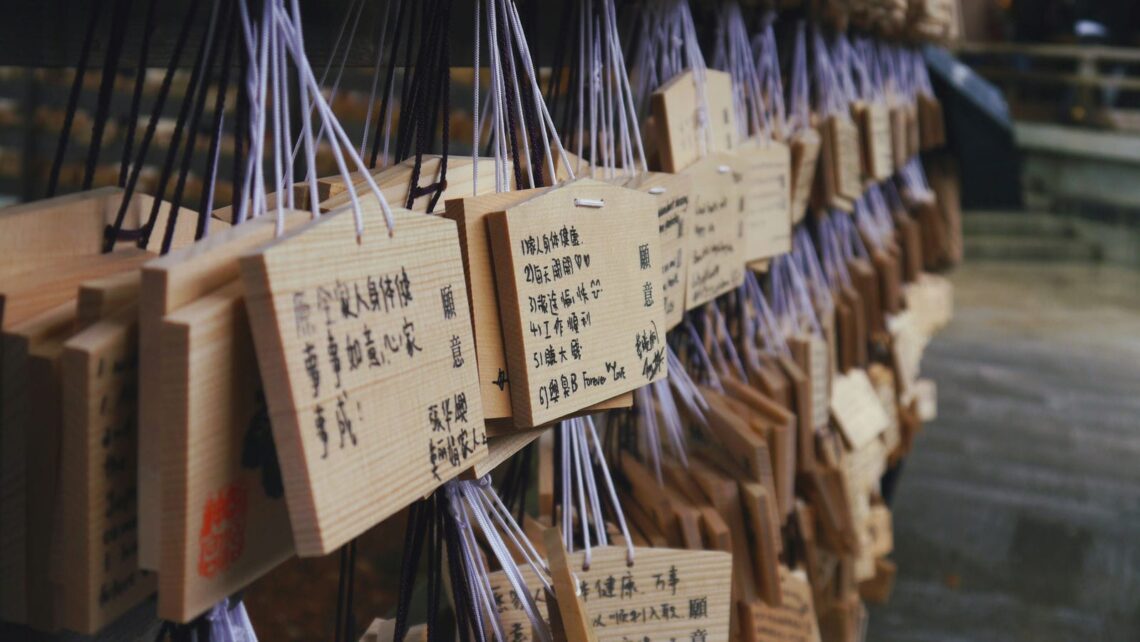
The primary ongoing challenges for conservation experts in Meiji Shrine involve protecting the wooden buildings and forest environment from weather damage and deterioration from pollution and insects, preserving delicate artifacts, and maintaining visitor accessibility with minimal structural impact. The shrine has basic precautions like fire extinguishers, emergency broadcasting, and visible emergency directional signage as described by travel sites. For accessibility, there are gravel paths, ramps for the mobility impaired, elevator access, and accessible restrooms. Various tourism companies like Context Travel offer private walking tours of the Meiji Shrine tailored specifically for architects, design professionals, and students to provide insightful architectural discussion of the structures and design in the context of Japanese aesthetic history from expert local docent guides.
10. The Grand Palace
The Grand Palace is a historic complex of royal buildings in the heart of Bangkok, Thailand. The complex contains the king and court’s former royal residences, throne halls, government ministry buildings, temples, and pagodas like the Temple of the Emerald Buddha (Wat Phra Kaew). It exemplifies traditional Thai architecture and royal history. Construction of the Grand Palace began in 1782, shortly after King Rama I established Bangkok as the new Siamese capital. It served as the royal residence for around 150 years, with additions made by successive Chakri dynasty kings. The initial Royal Palace buildings and Temple of the Emerald Buddha were completed by 1784 in highly ornate Thai styles. The Grand Palace complex was master planned and constructed under the commission of King Rama I, the founder of the current Chakri dynasty of the Rattanakosin Kingdom.
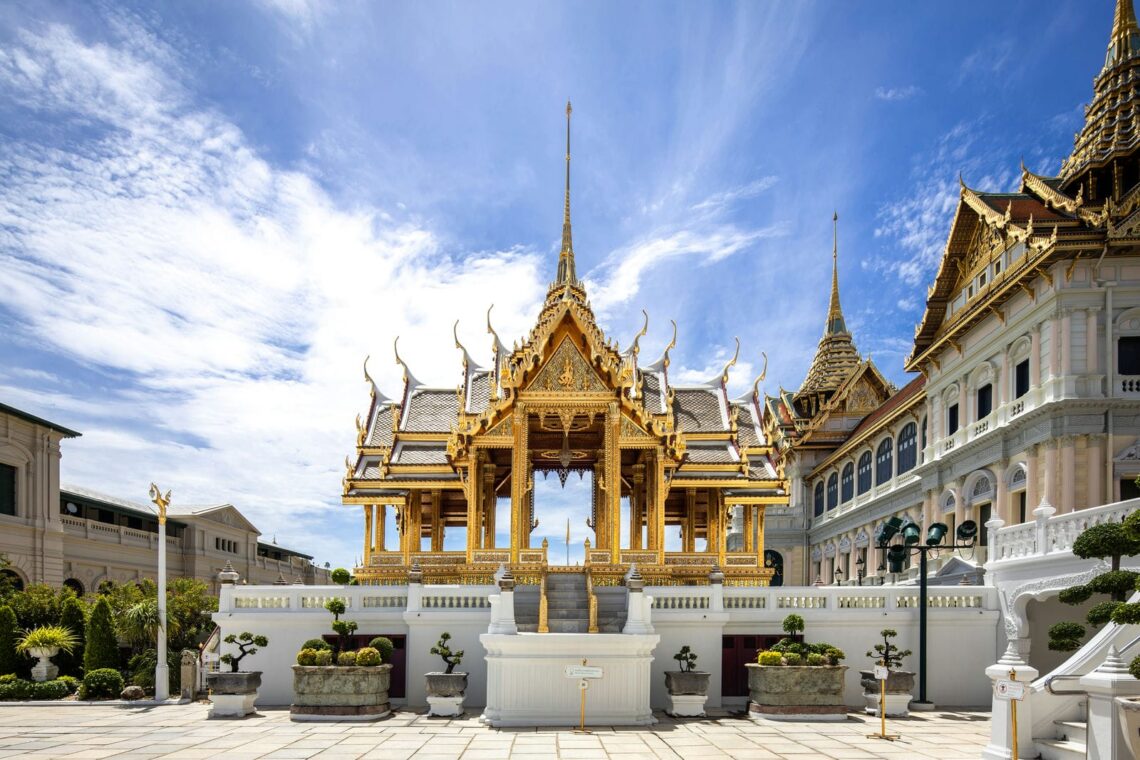
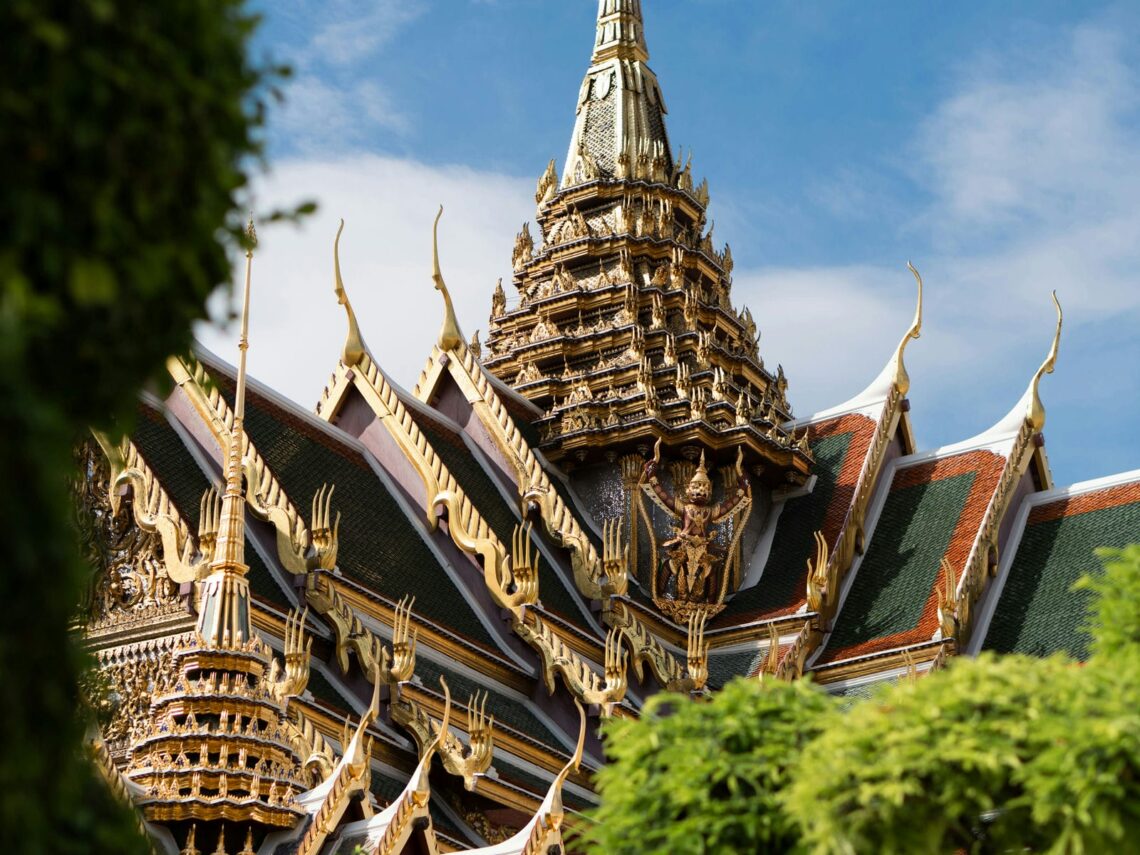
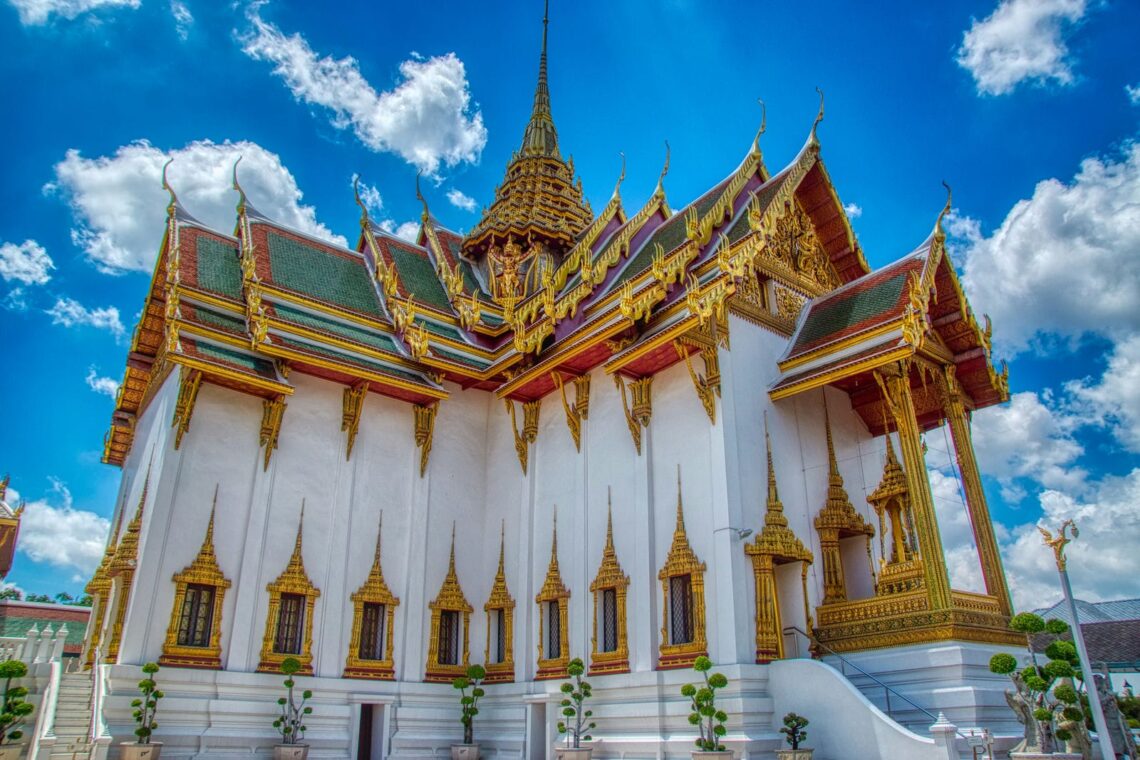
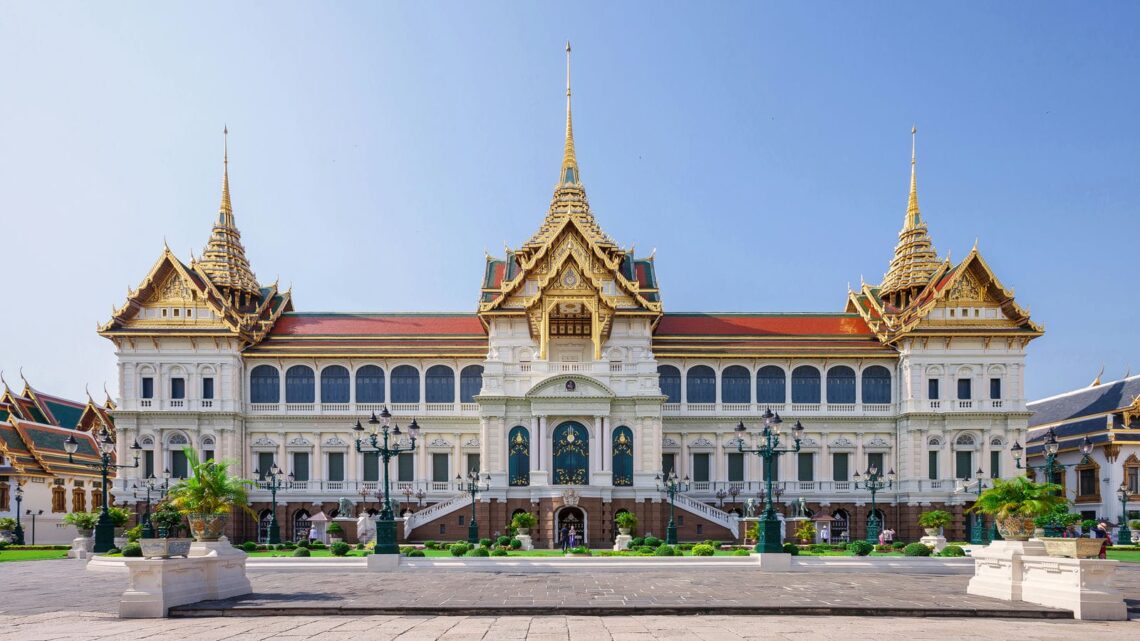
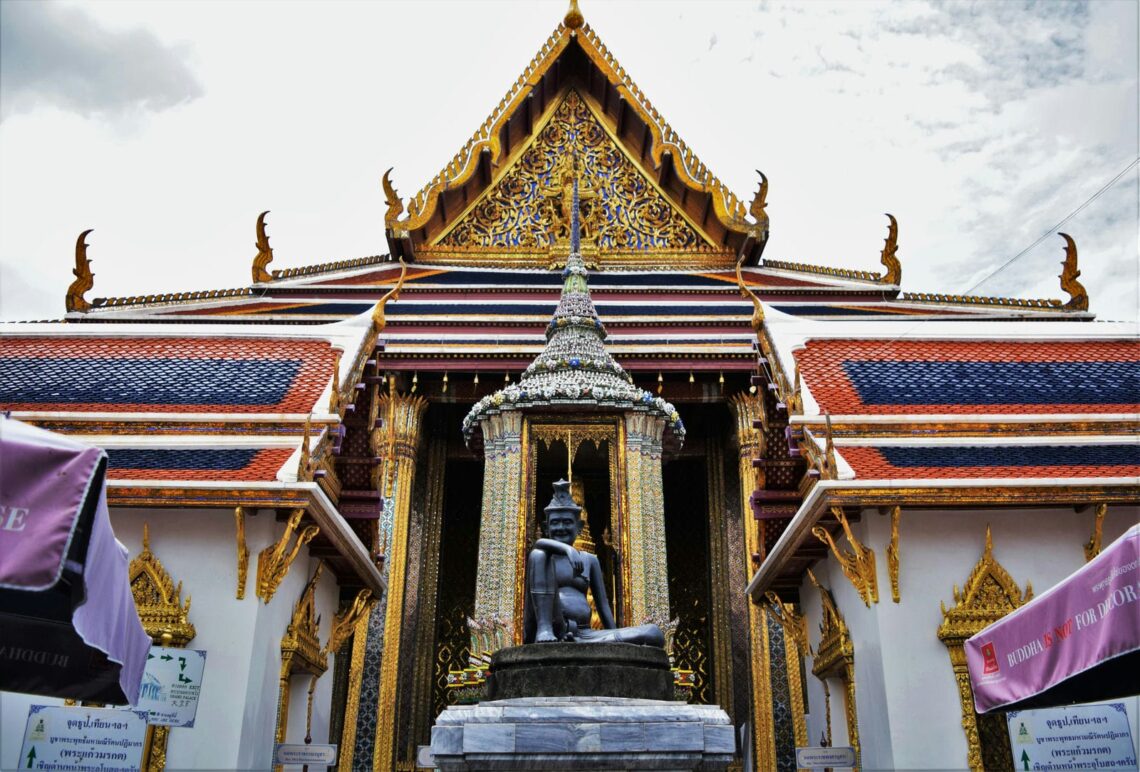
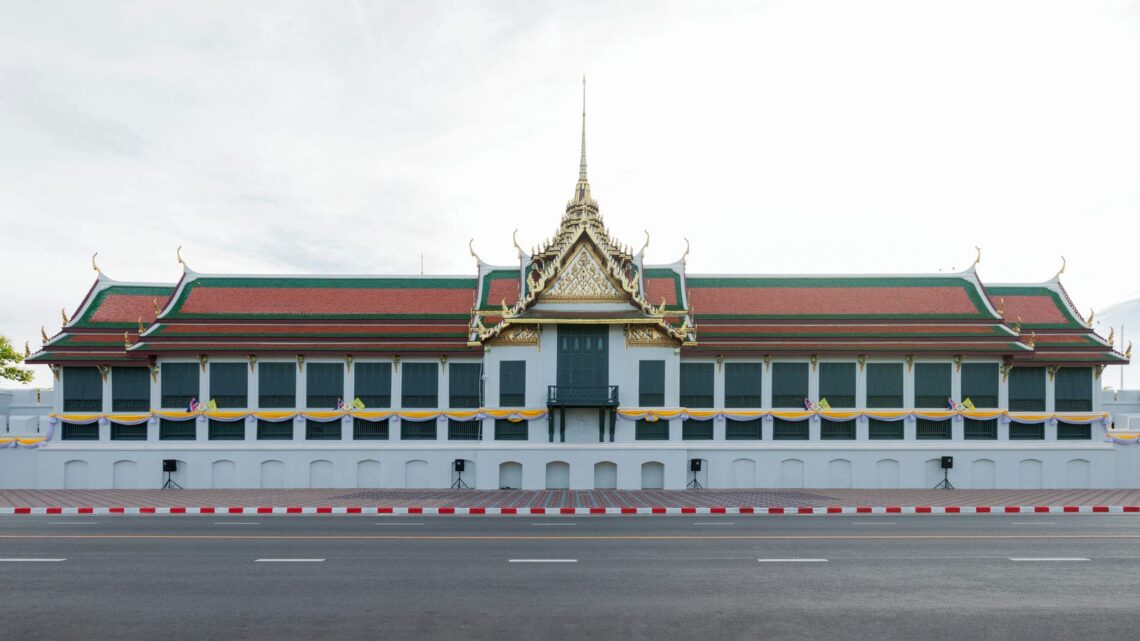
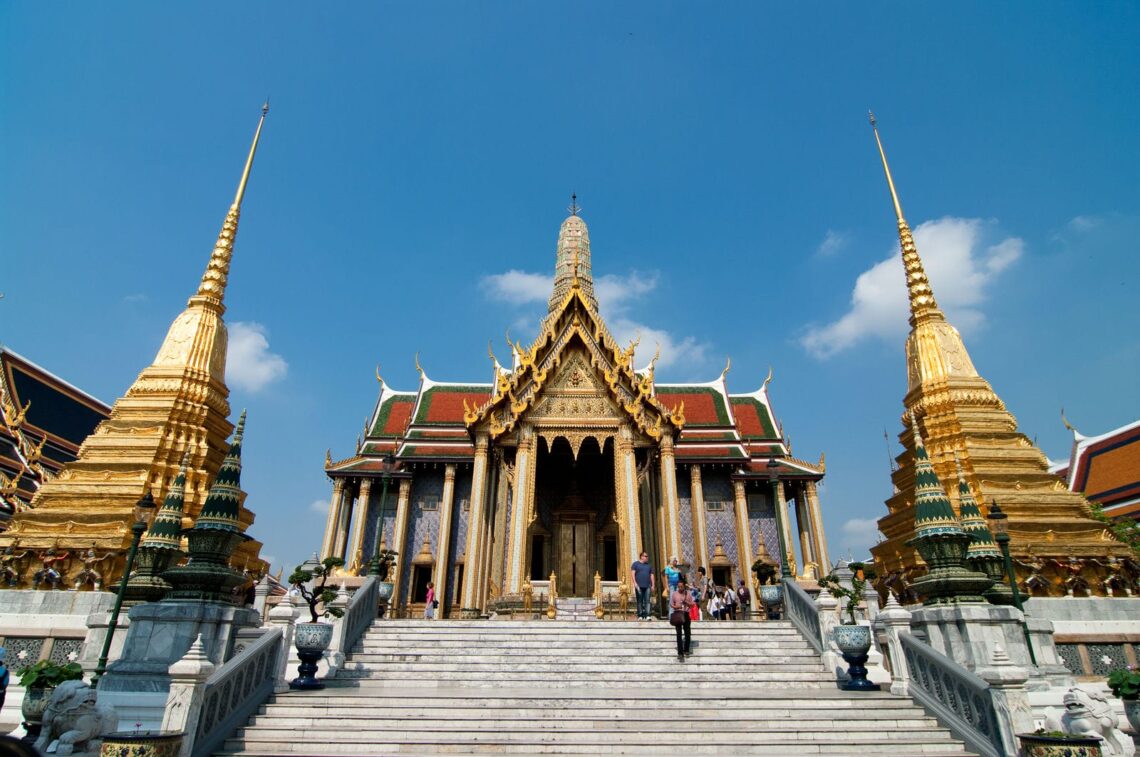
The Grand Palace blends elements of traditional Thai architecture like pointed roofs, tiered spires, mosaic ornamentation, and Buddhist temple layouts with some Chinese, Cambodian, and European influences. As a historic royal complex, the Grand Palace integrates distinctive features of earlier Thai temple architecture, like multi-level tile roofs with nagas, garudas, Buddhas, and traditional motifs as symbols of protection, status, and spirituality. Some structures also reflect Portuguese and Chinese styles adopted through trade and diplomacy over centuries. The tiered roofs, colonnades, and cloisters of buildings provide shaded walkways between structures. Temples and palaces contain openings at upper levels and reflective tiles to allow natural light. As the royal seat displaying Thai history, prestige, and sovereignty for 150 years, the Grand Palace embodies the cultural priorities, architectural tastes, and courtly customs of Siam’s rulers.
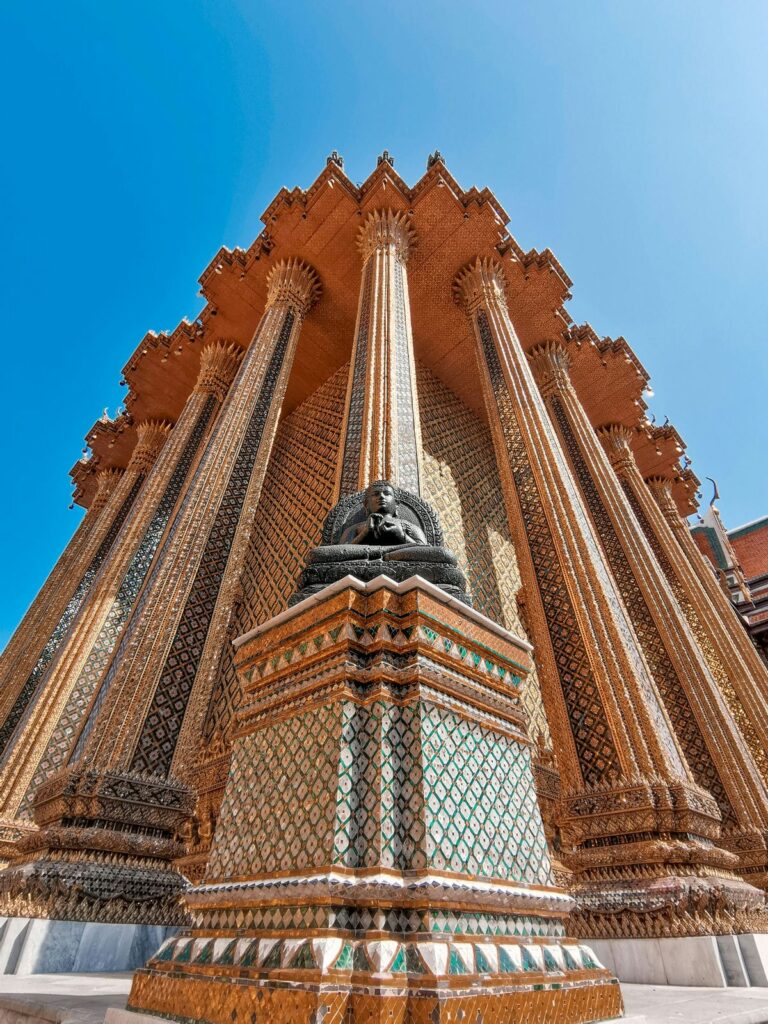
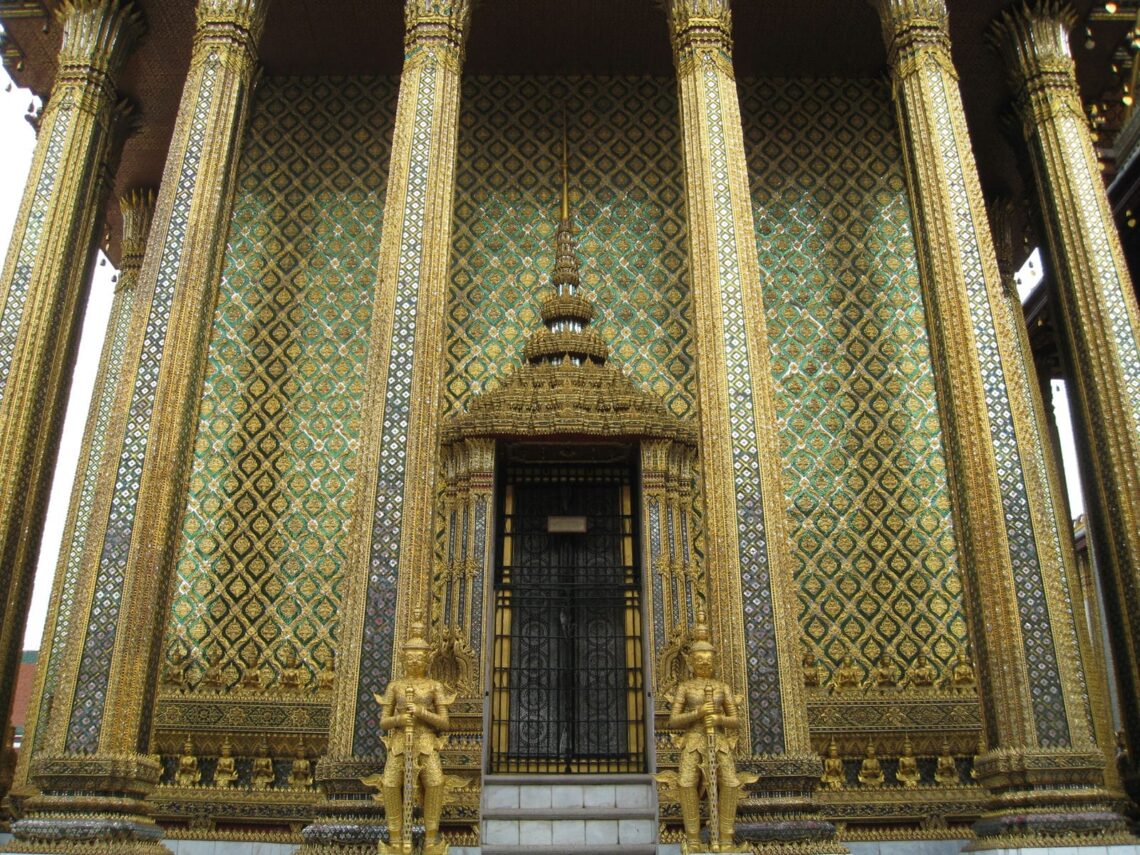
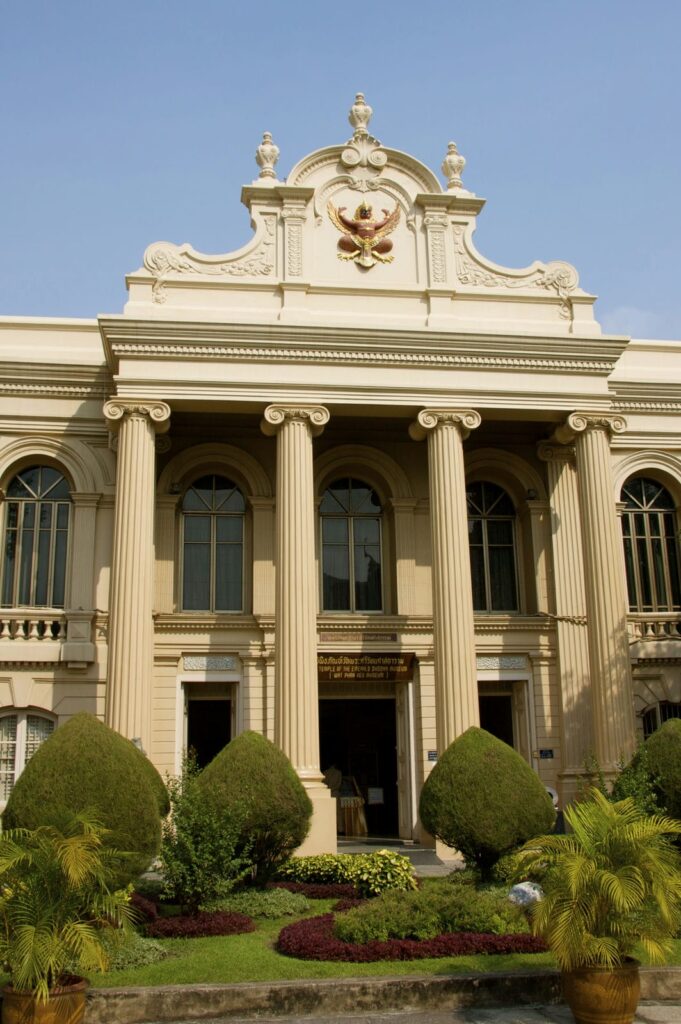
Regular restoration efforts in the Grand Palace aim to repair weathering damage on intricate wood, stucco, ceramic, and stone elements requiring conservation without altering original materials. Controlling vegetation growth, modernizing infrastructure discretely for visitor facilities, regulating heavy foot traffic, and coordinating access around court events pose challenges, too. Gradual upgrades like ramps, elevators, wheelchairs, and golf carts for onsite transport have enhanced accessibility, but navigation remains challenging given the sprawling complex layout with narrow temple steps. Many Bangkok tourism companies like Viator offer specialized Grand Palace tours catering to architects, design professionals, and building aficionados as advertised. These tours provide in-depth architectural discussion regarding Thai design influences, ornamentation symbolism, structural engineering, and restoration principles from expert local guides.
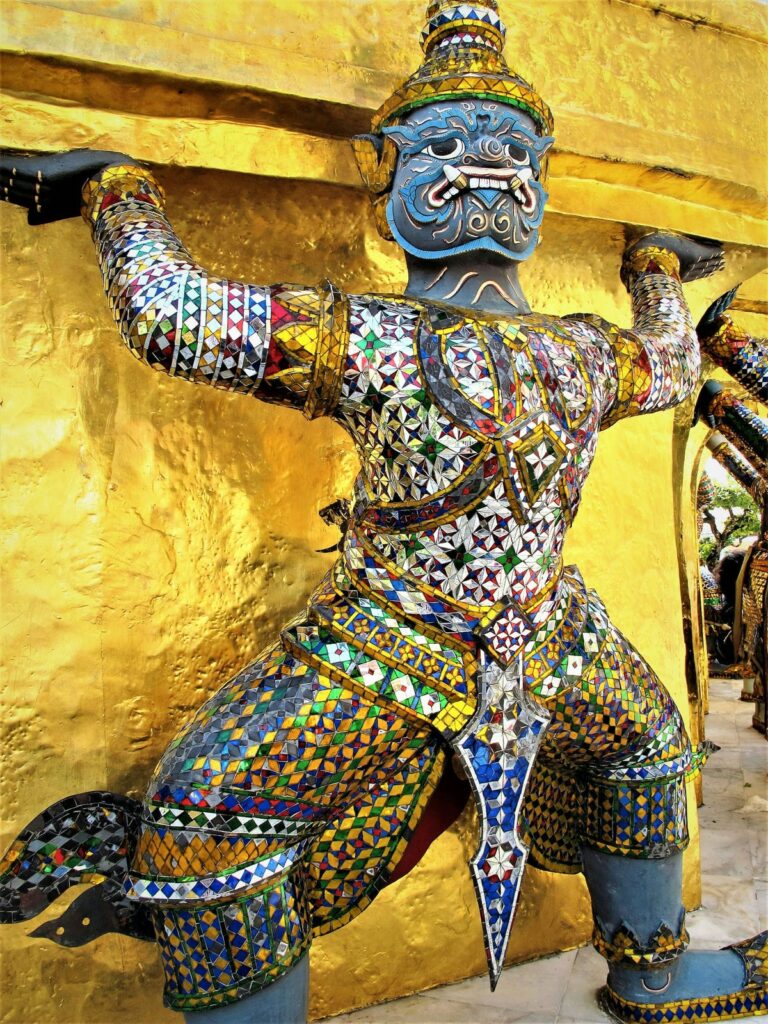
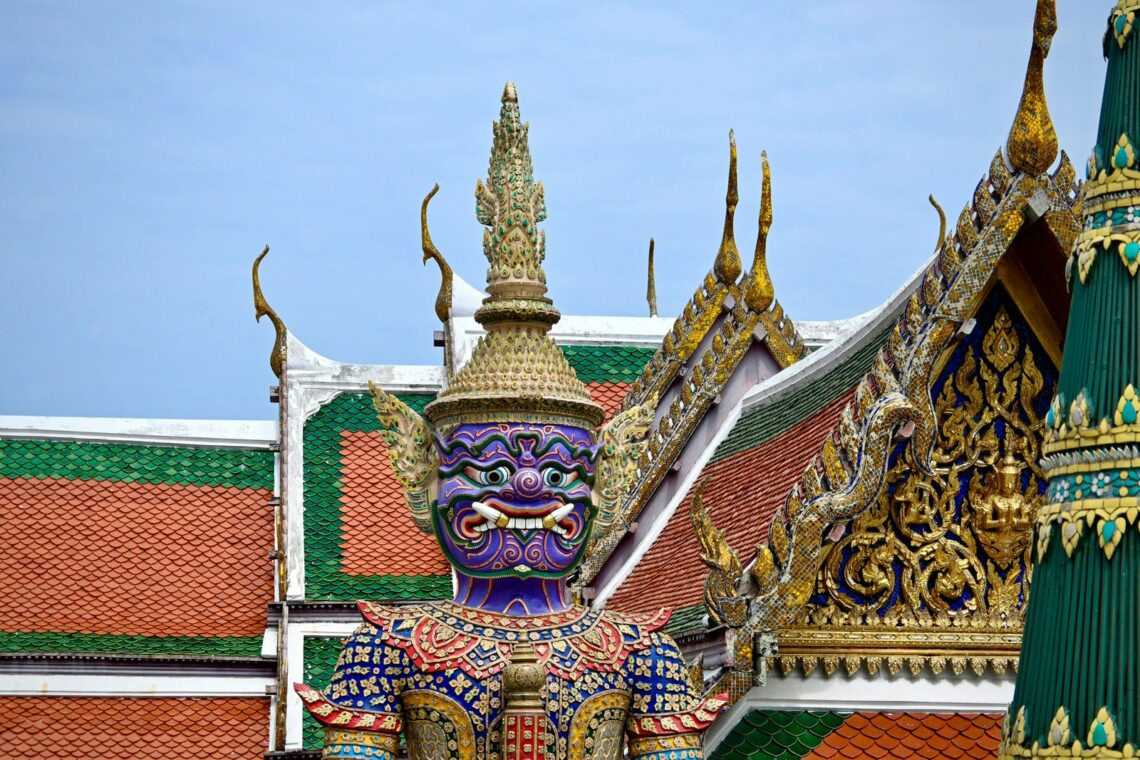
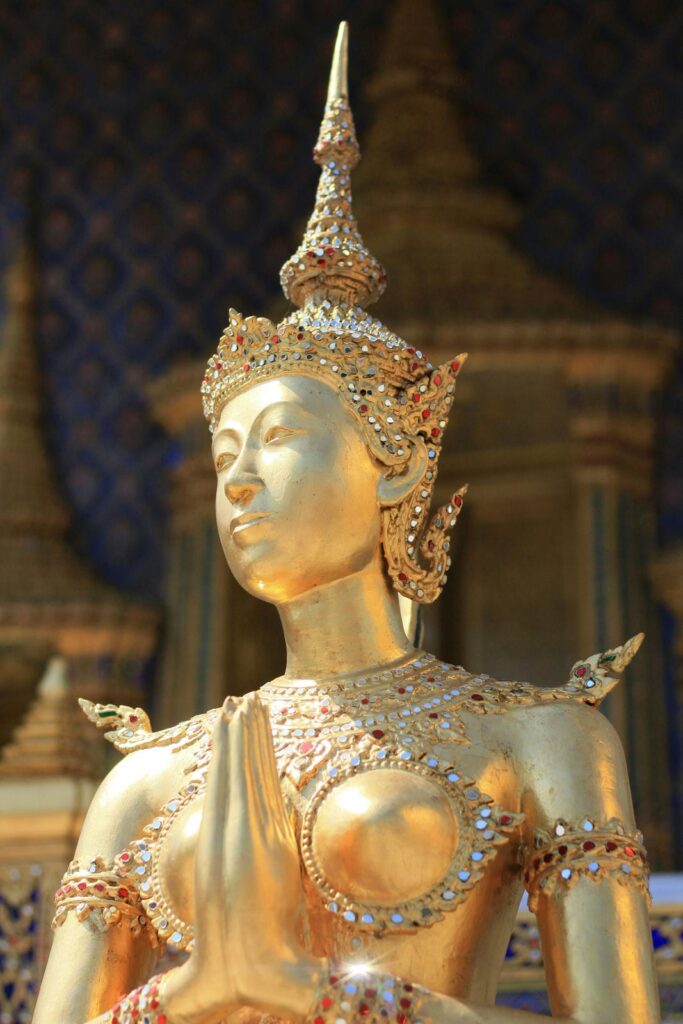
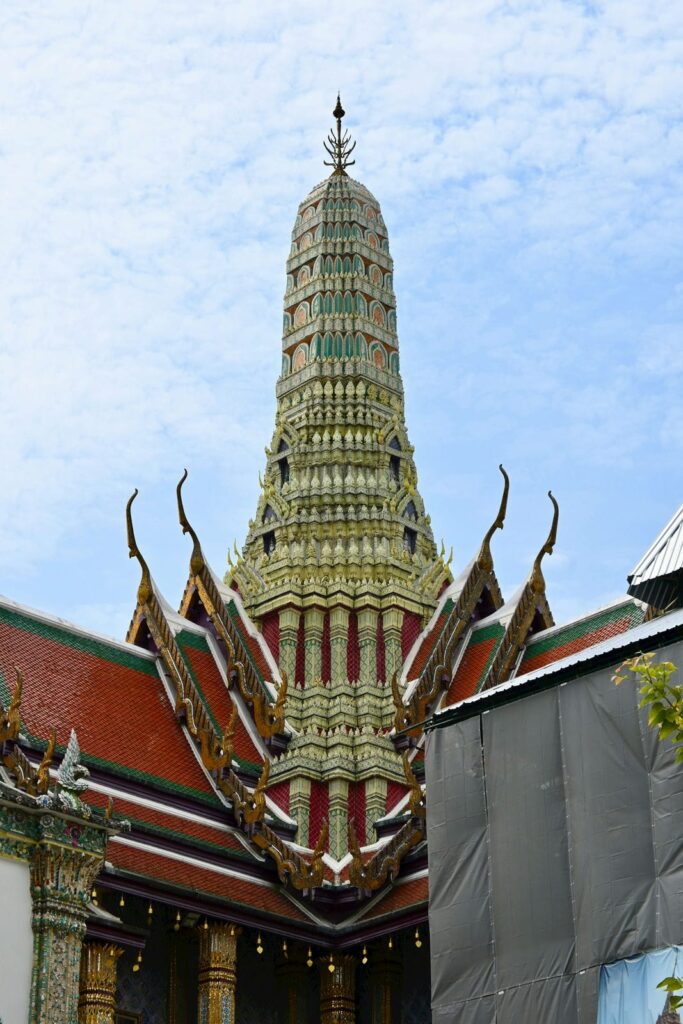
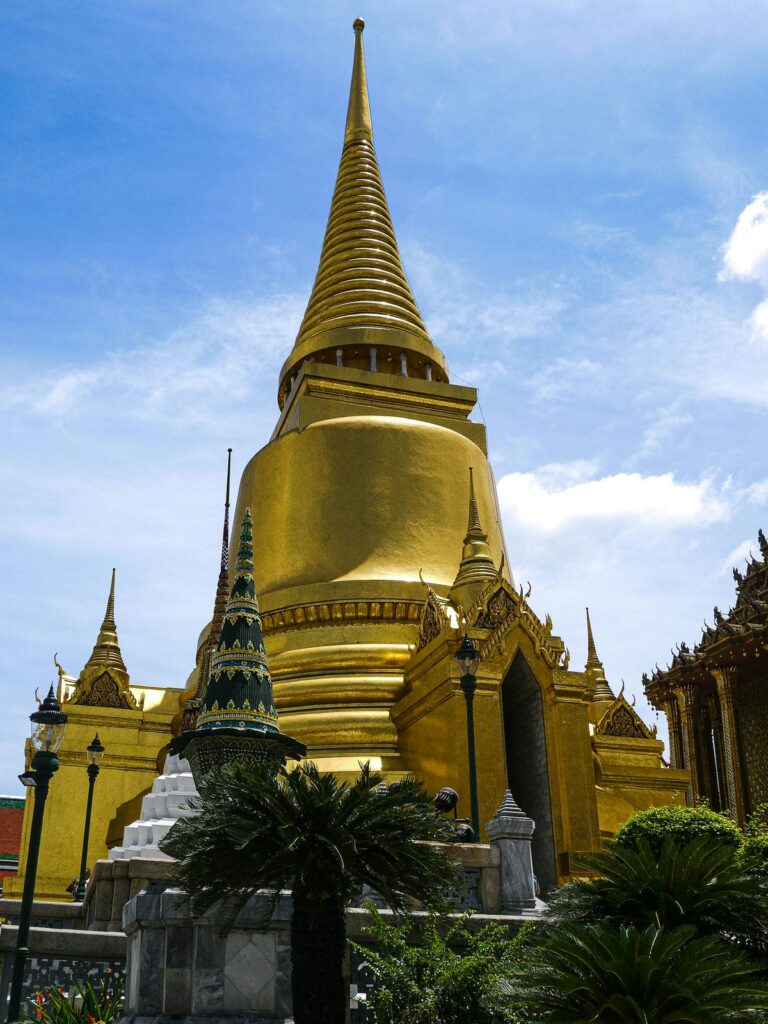
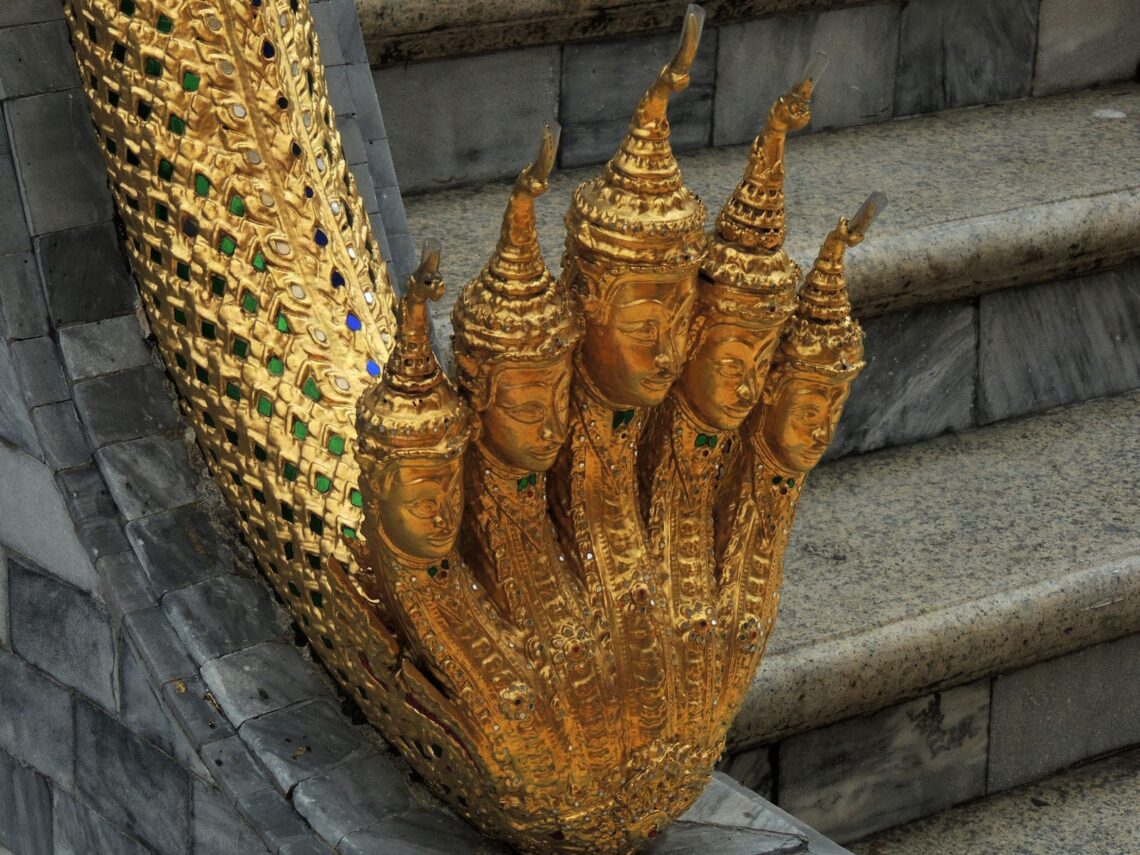
11. Sheikh Zayed Grand Mosque
The Sheikh Zayed Grand Mosque in Abu Dhabi, UAE, sits on the Persian Gulf’s southeast tip of Abu Dhabi Island. It is the largest mosque in the country and a famous architectural landmark. This expansive complex integrates Mameluke, Ottoman, and Fatimid design influences with intricate marble ornamentation, gold embellishments, reflective pools, gardens, and a capacity for over 40,000 worshippers. Construction of the Sheikh Zayed Grand Mosque began in 1996 and was completed in 2007, taking over ten years to finish the sprawling complex. It was commissioned by the late UAE President Sheikh Zayed bin Sultan Al Nahyan, who wished to establish a national architectural treasure and Islamic spiritual center. The mosque finally opened in his memory following his 2004 passing. The principal architect was the Syrian Yusef Abdelki, who designed the mosque along with a British-Emirati engineering team featuring contributions from architects like Vladimir Djurovic. Over 3,000 skilled artisan workers helped realize the design by combining various Islamic styles. The mosque was built by the national construction firm Al-Habtoor Engineering and funded by the late Sheikh Zayed.
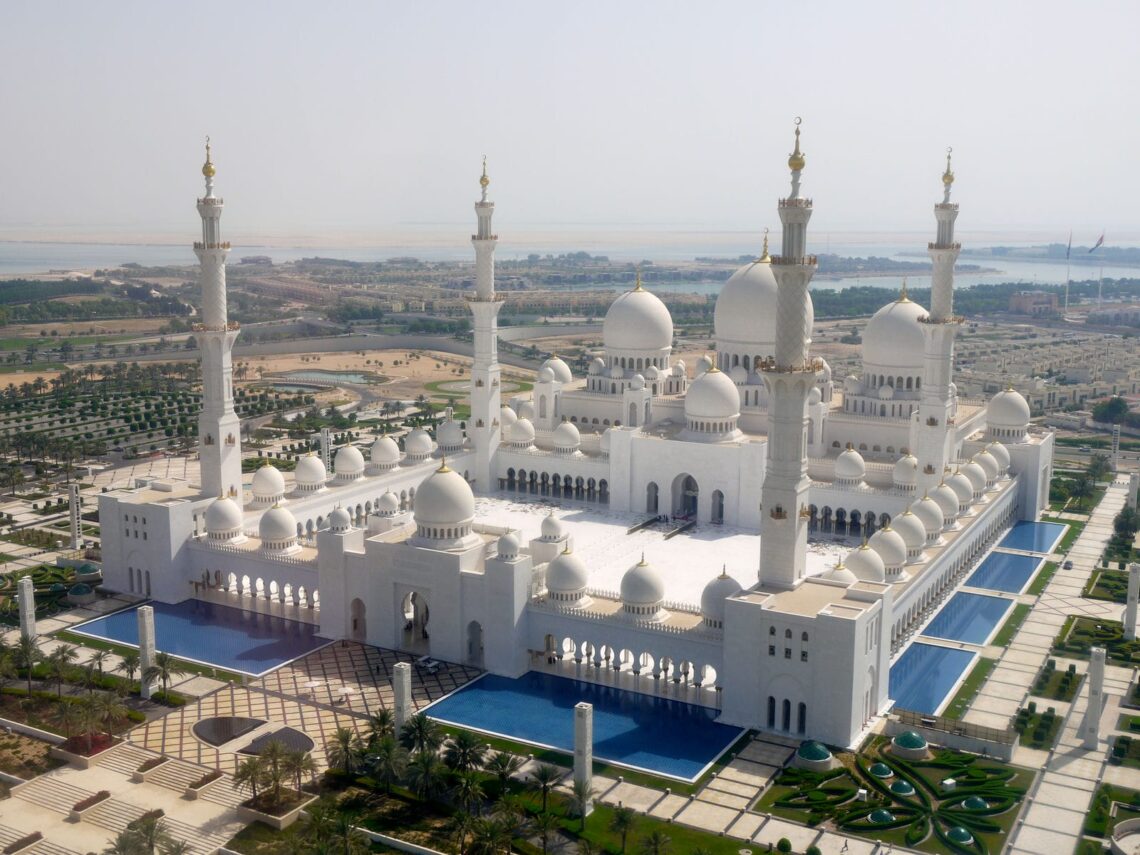
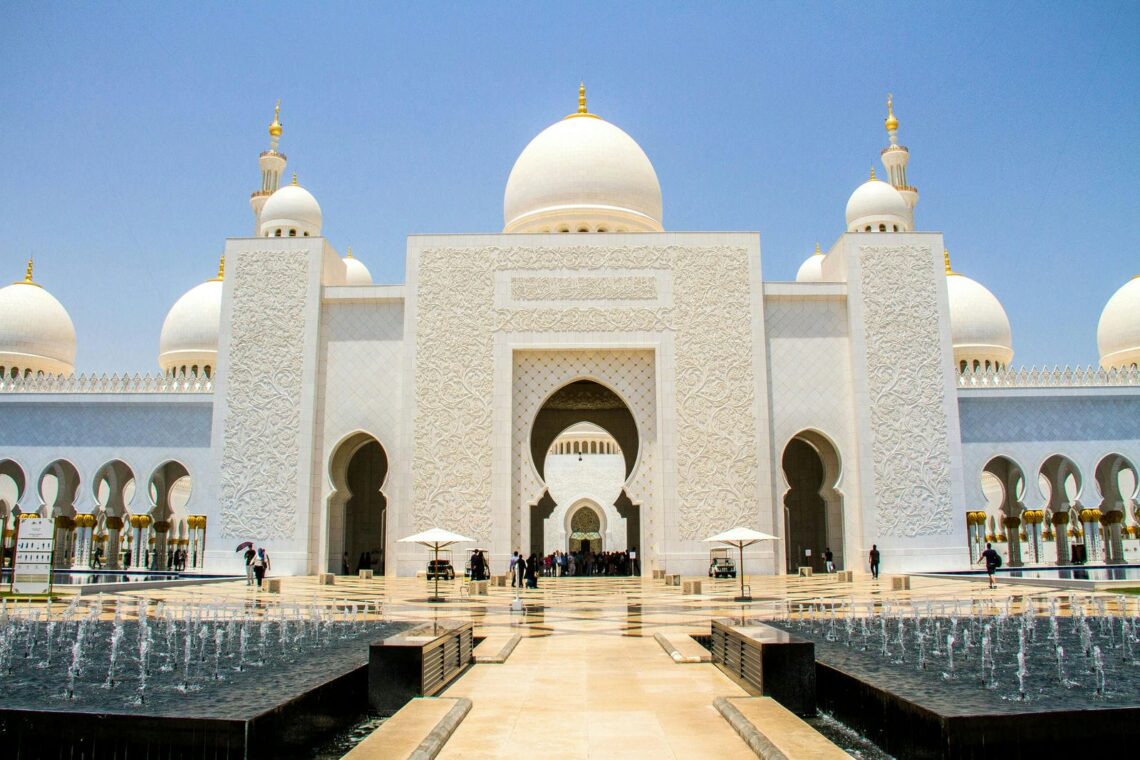
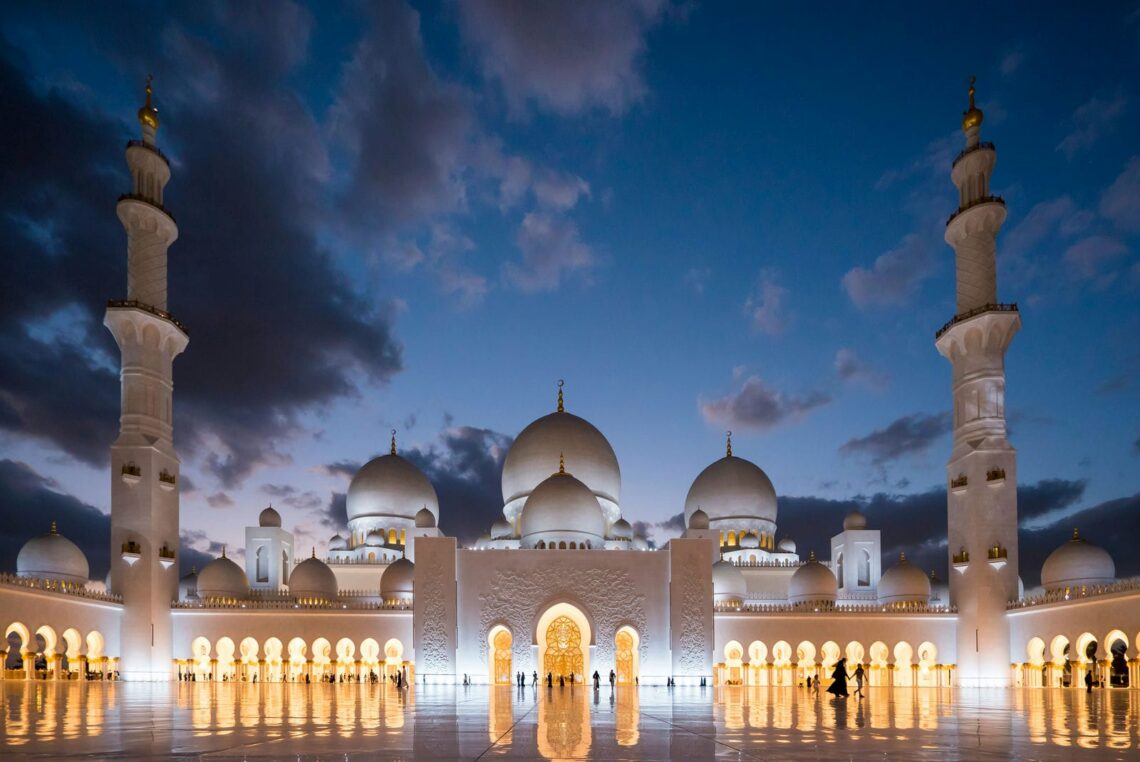
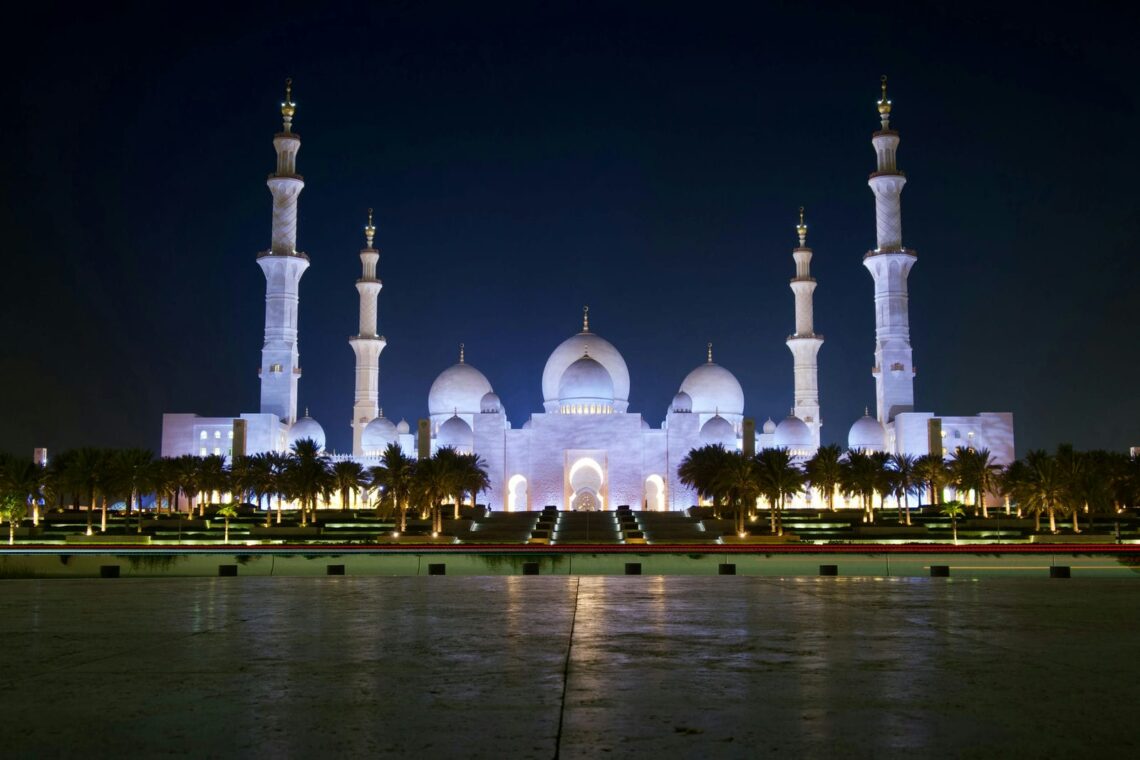
The Sheikh Zayed Grand Mosque features a modern Islamic style with elements borrowed from Mameluke, Ottoman, and Fatimid architectural traditions, including elaborate columned prayer halls, domes, geometric ornamentation, and extensive use of marble, semi-precious stone, gold leaf gilding, glass mosaics, and chandeliers. These classic features link the contemporary design with architectural traditions spanning centuries, reinterpreted in a modern context. This landmark integrates design influences and materials from the Islamic world, reflecting the country’s cultural diversity, spiritual values, and artistic sophistication. Its capacity promotes social cohesion, while the serene gardens suit the arid context. Education centers link tradition with modern learning. The mosque represents a contemporary evolution of Arab architectural tradition, exemplifying the ambitions of the UAE itself as a rising cultural capital bridging history with cutting-edge innovation.
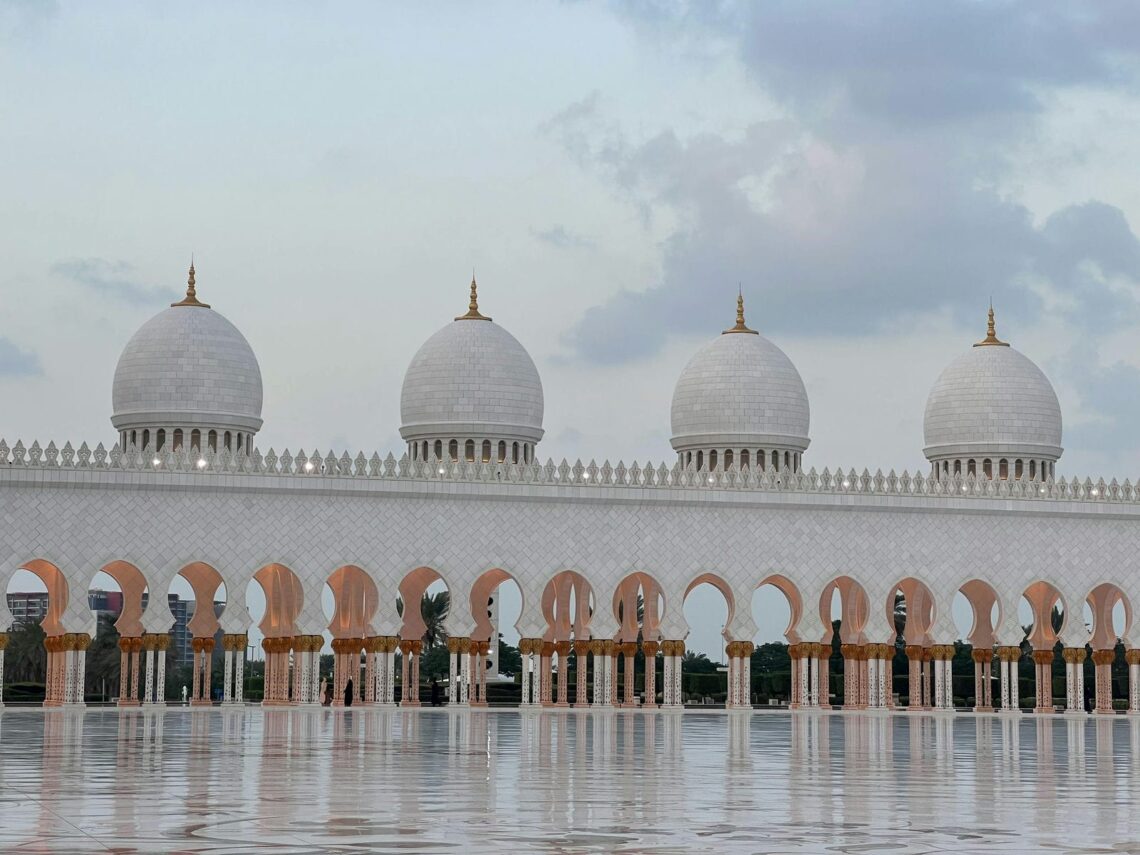
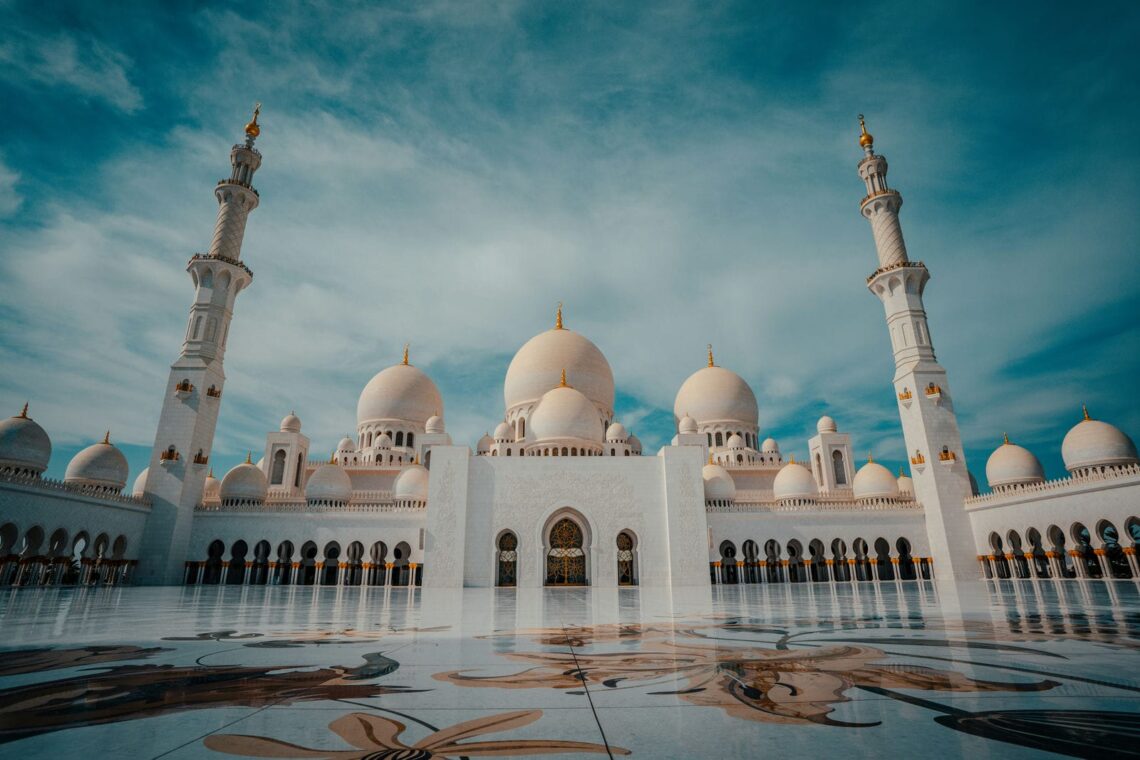
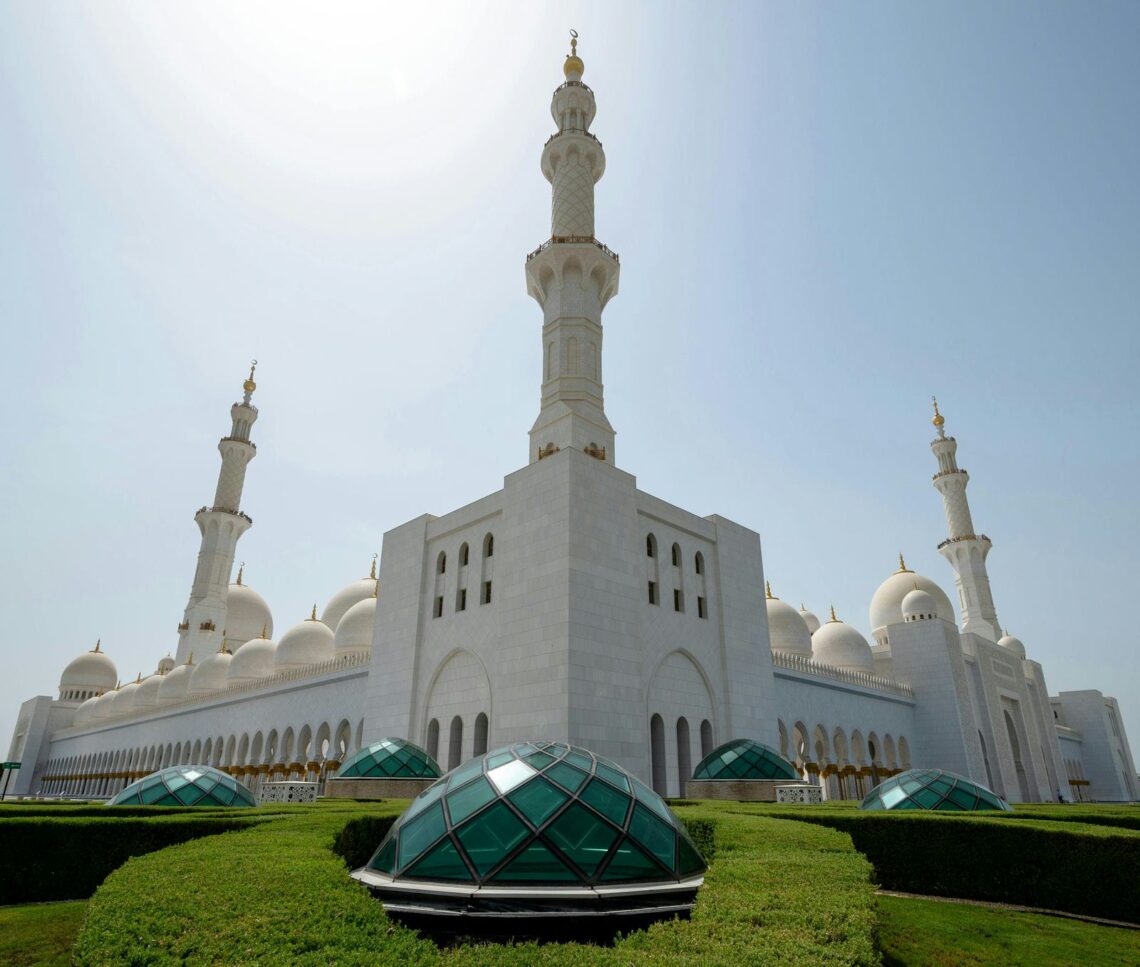
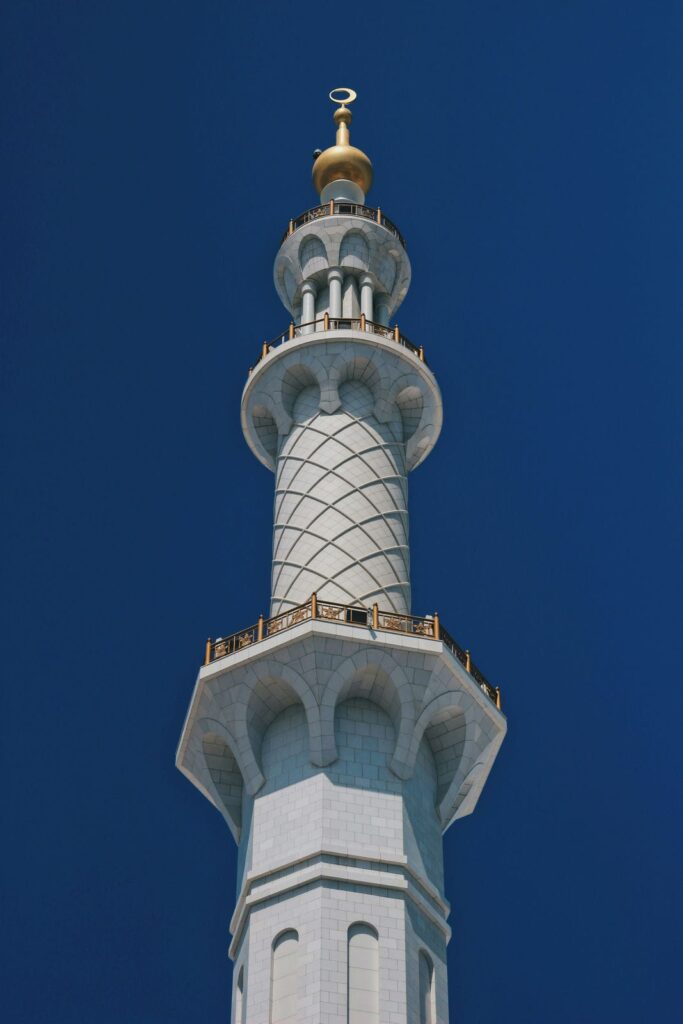
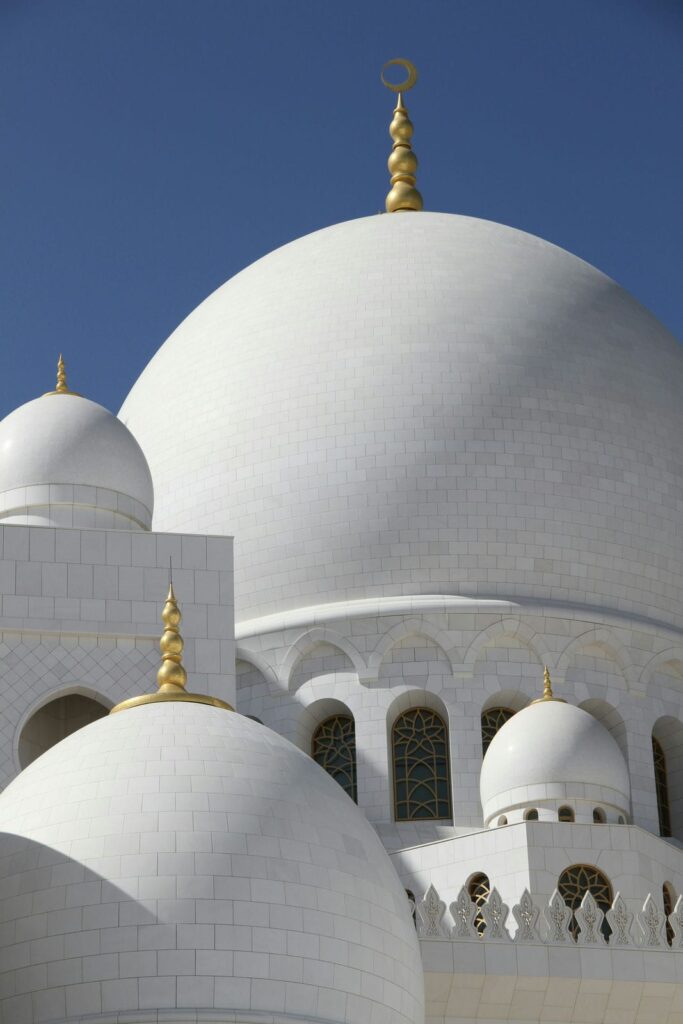
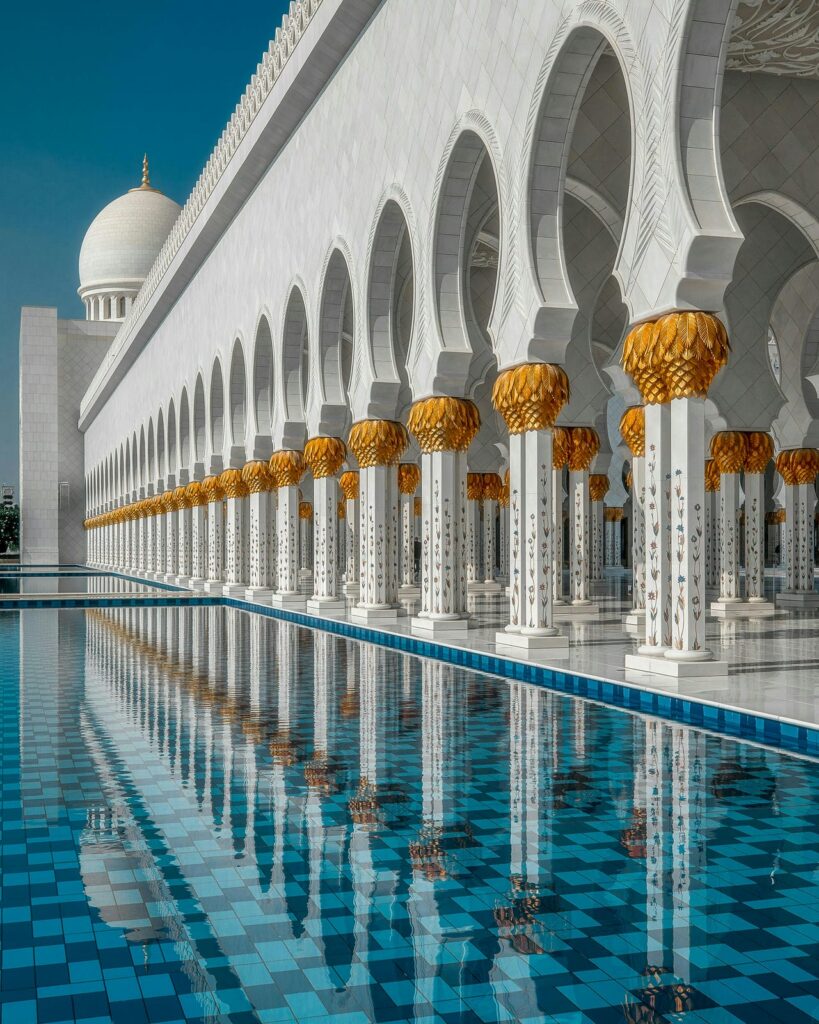
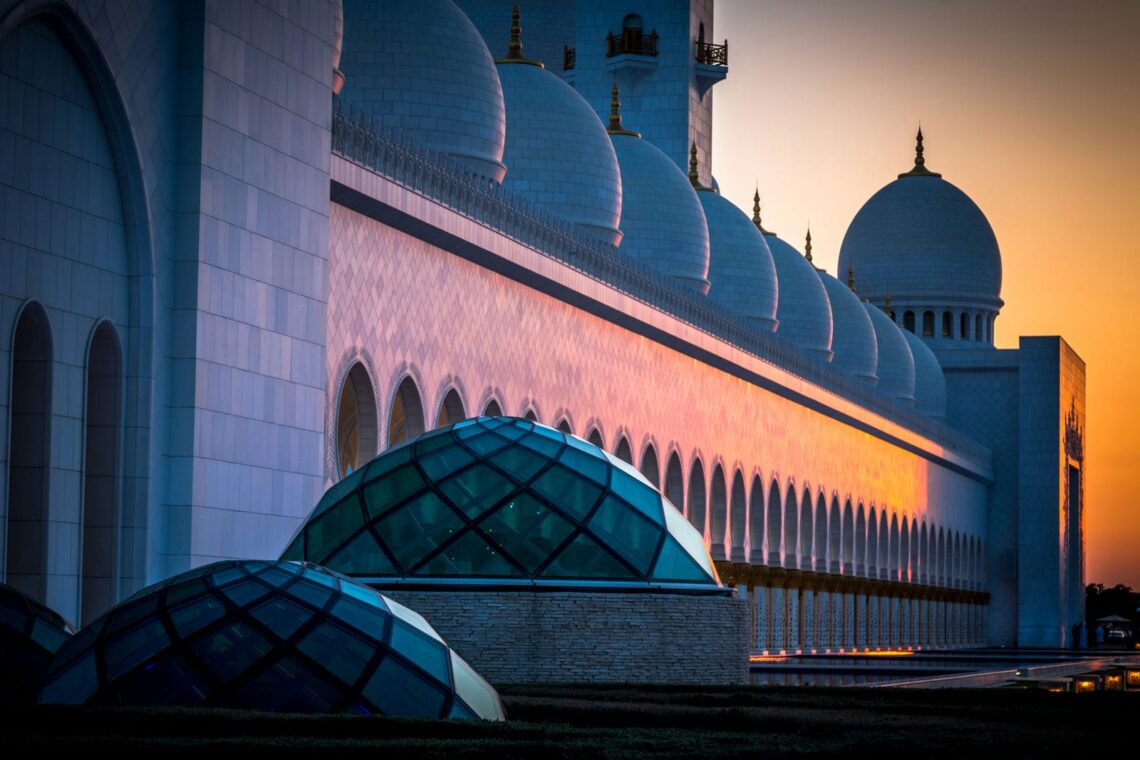
As a contemporary building finished in 2007, the Sheikh Zayed Grand Mosque has required minimal restoration beyond routine upkeep of its expansive marble floors, gold and mosaic elements, and facilities improvements. Potential long-term challenges include discreetly upgrading aging infrastructure, preservation funding, and retaining design intent with any enhancements. The mosque has fire prevention systems, emergency exits, warning signs, security screening, and patrols. For accessibility, it provides wheelchairs, walking aids, and tactile guidance paths and trains staff to assist visitors with special needs. Multi-lingual guides also aid navigation and interpretation for foreigners. Recent upgrades better accommodate large crowds at major events, too. The mosque offers specialized tours tailored for architects, design professionals, and engineers to provide an insightful discussion of innovative construction, structural engineering, and stylistic fusion by expert guides according to travel sites.
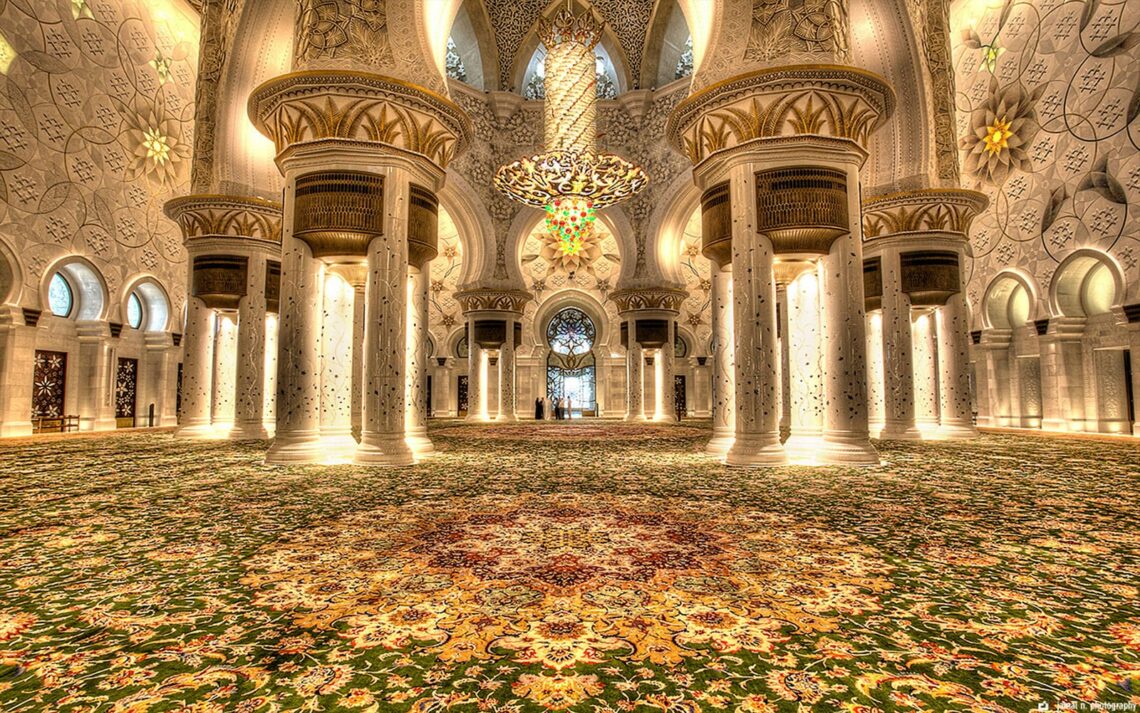
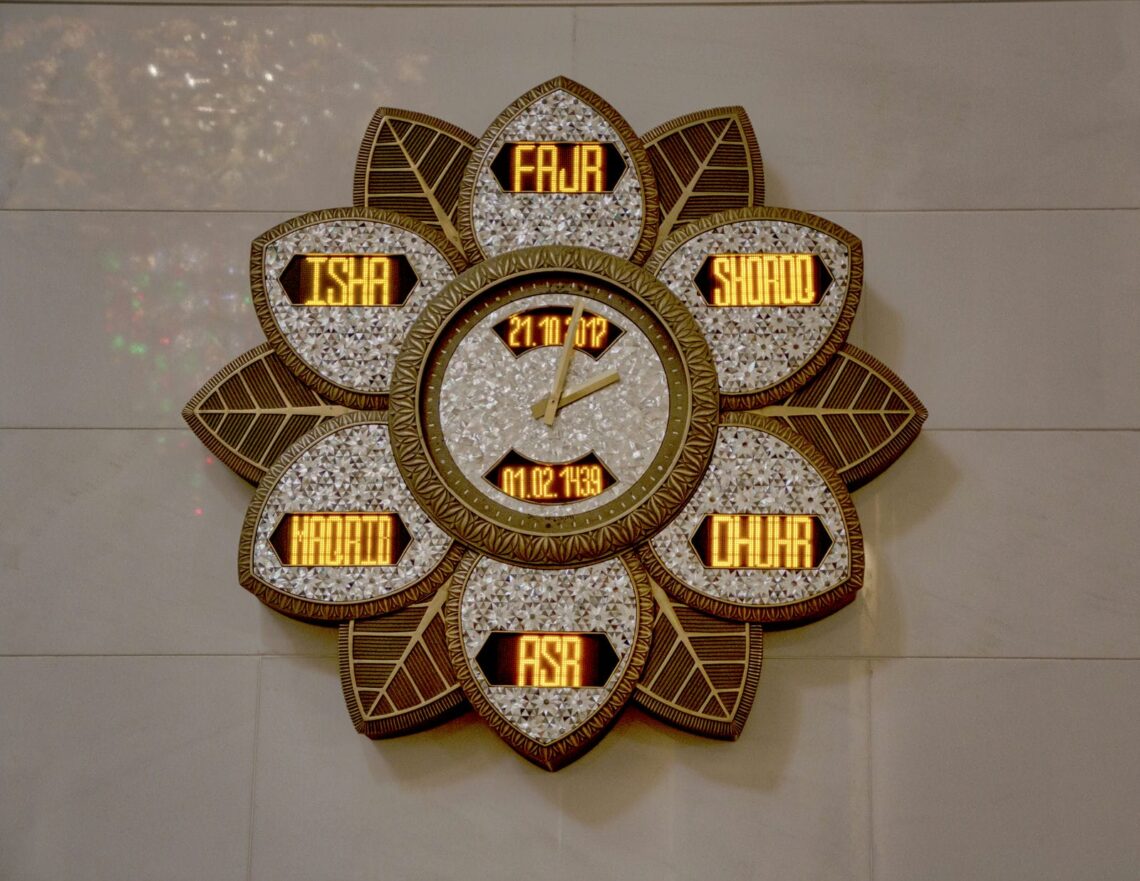
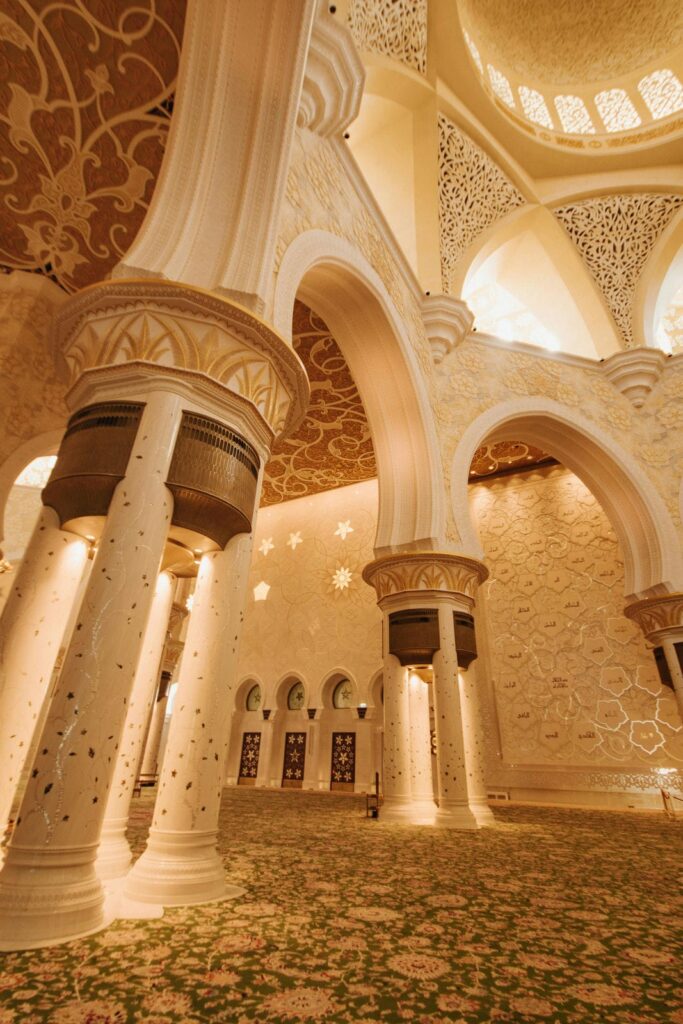
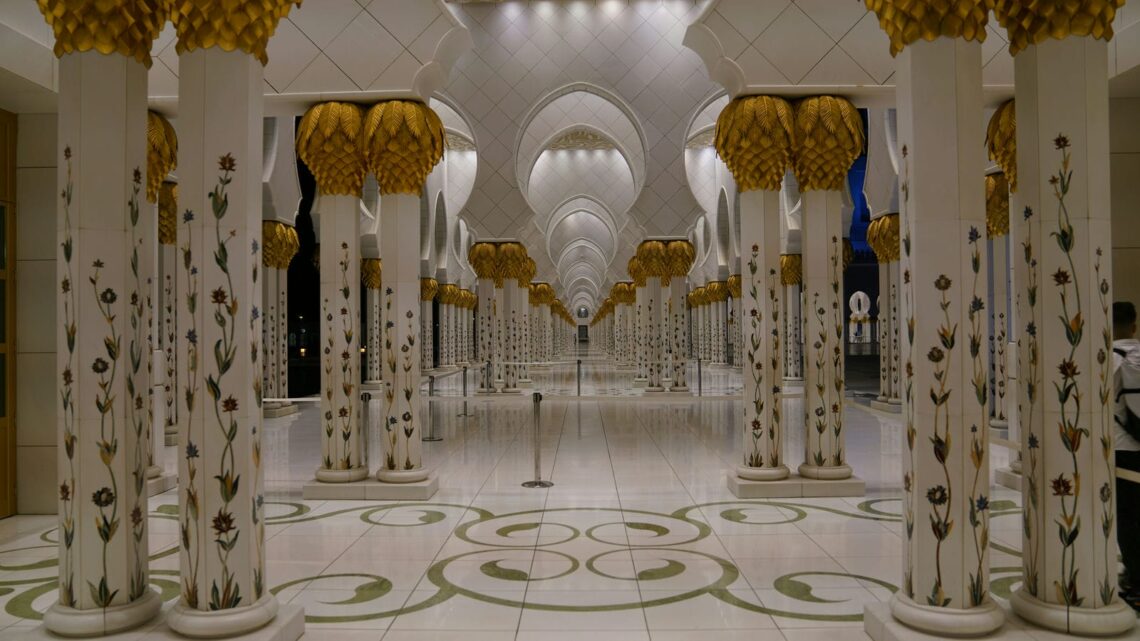
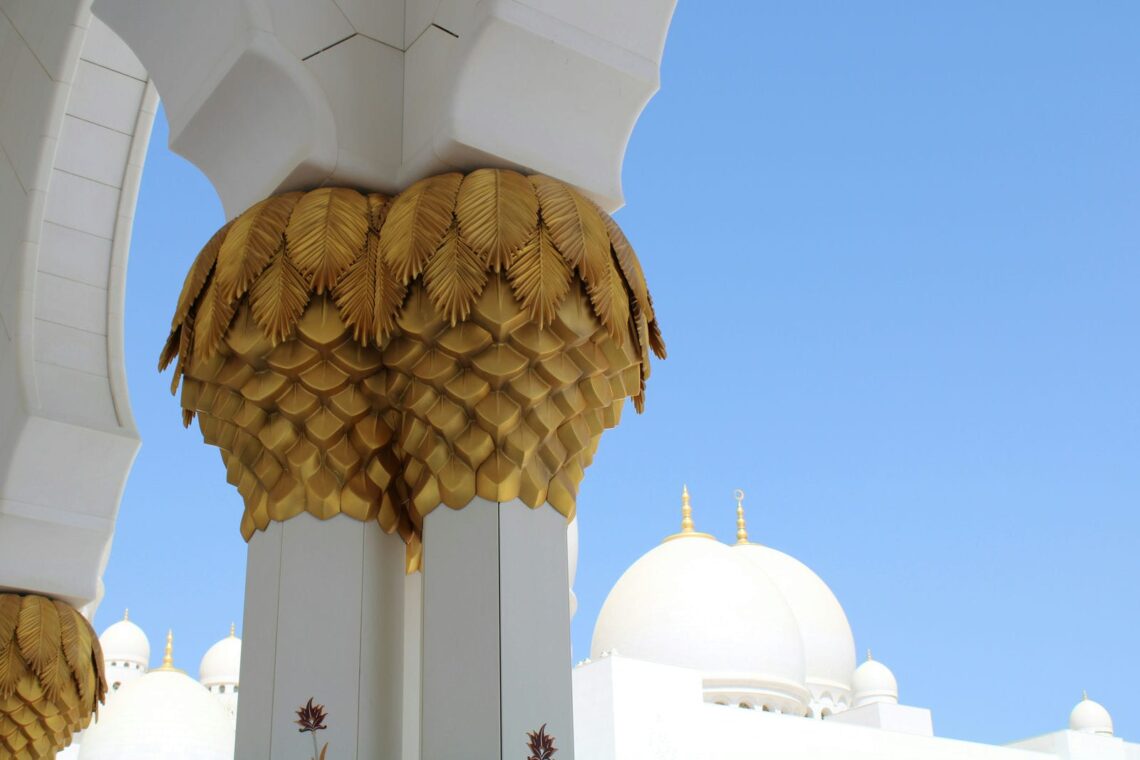
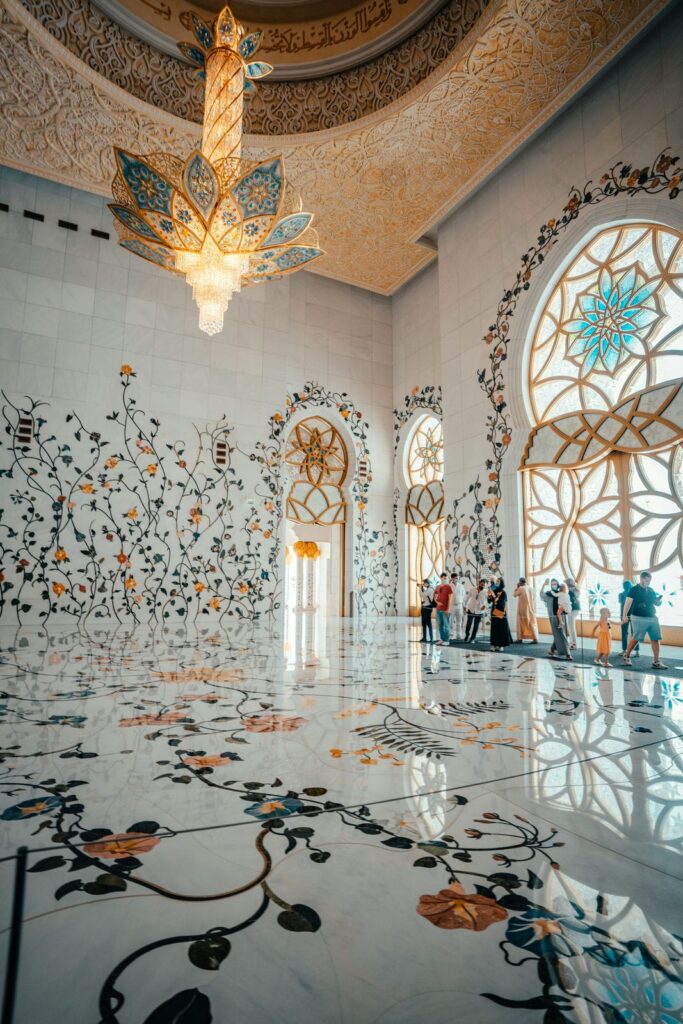
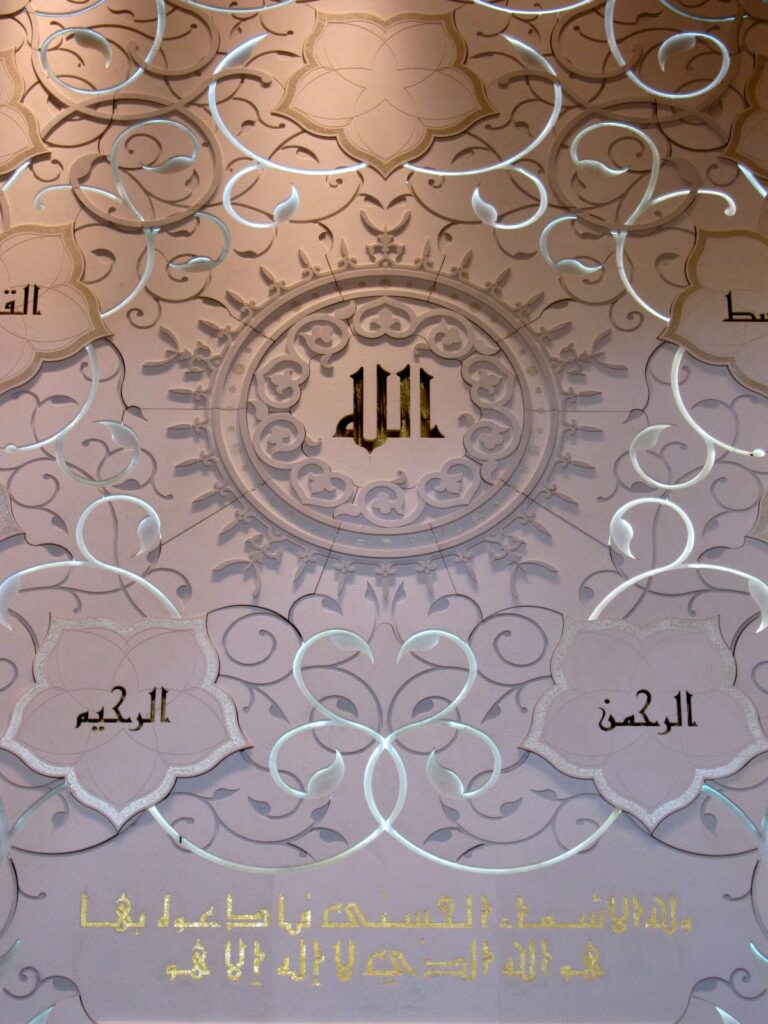
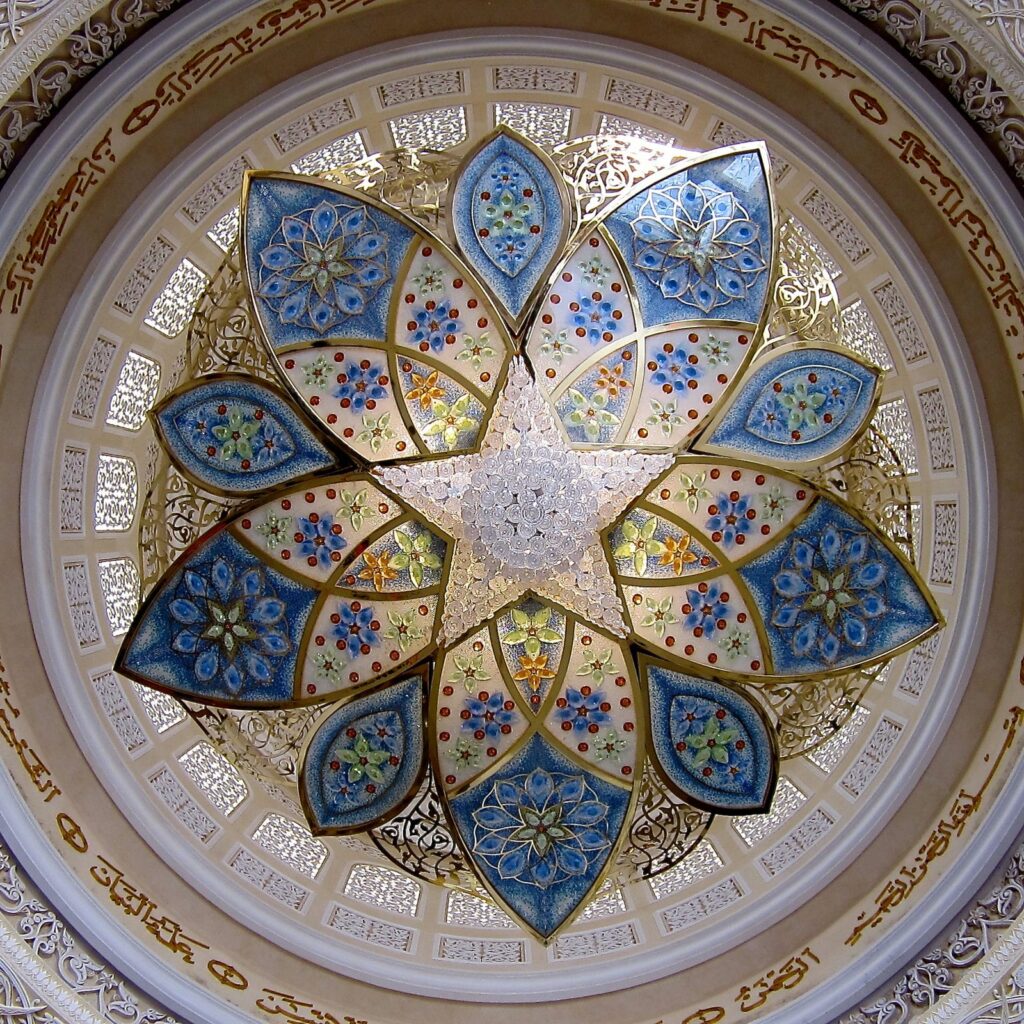
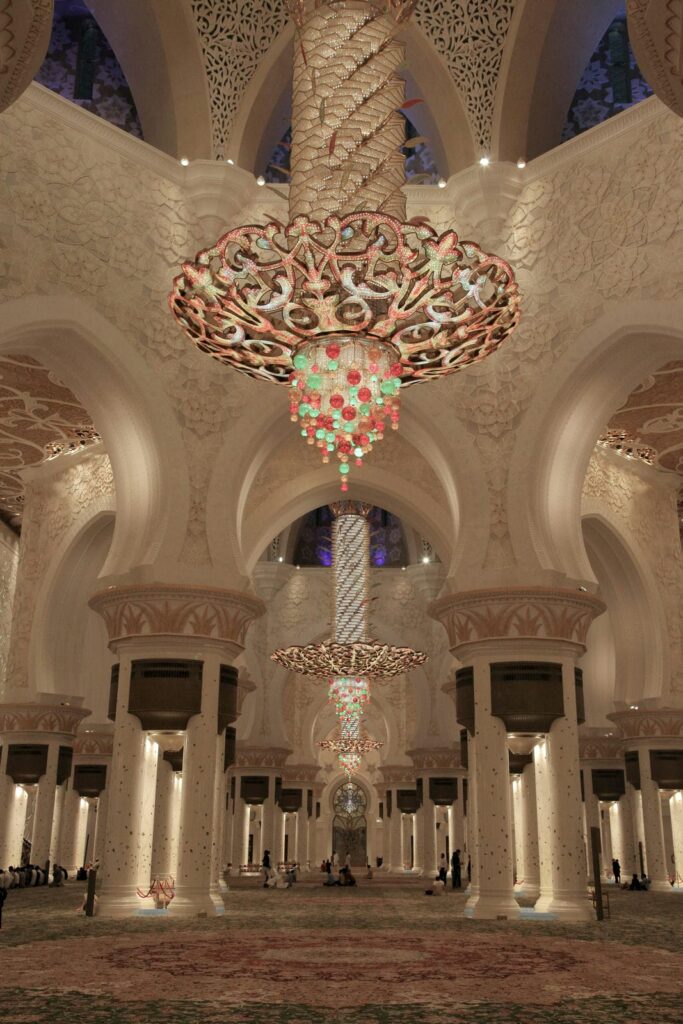
12. Gardens by the Bay
Gardens by the Bay is a nature park and horticultural attraction in central Singapore adjacent to Marina Bay. It comprises three distinct waterfront gardens – Bay South, Bay East, and Bay Central. Major highlights include the cooled Flower Dome and Cloud Forest conservatories showcasing plants from temperate and tropical regions, respectively. The Supertree Grove features 16-story vertical gardens connected by an aerial walkway offering panoramic views of the gardens and city skyline. Since opening in 2012, Gardens by the Bay has become an iconic Singaporean landmark and leading tourist destination. The Bay South Garden opened first in 2011, followed by the cooled conservatories and Supertree Grove in 2012. British architecture practice Grant Associates designed Gardens by the Bay, while the conservatories and Supertrees were created by specialist WilkinsonEyre Architects. Local Singaporean architect Robin Tan oversaw the architectural team and building works carried out by a consortium of developers and contractors, including Besix, Chin Koon Construction, and Gaylin Construction Group. Funding came from the Singaporean government alongside corporate sponsors.
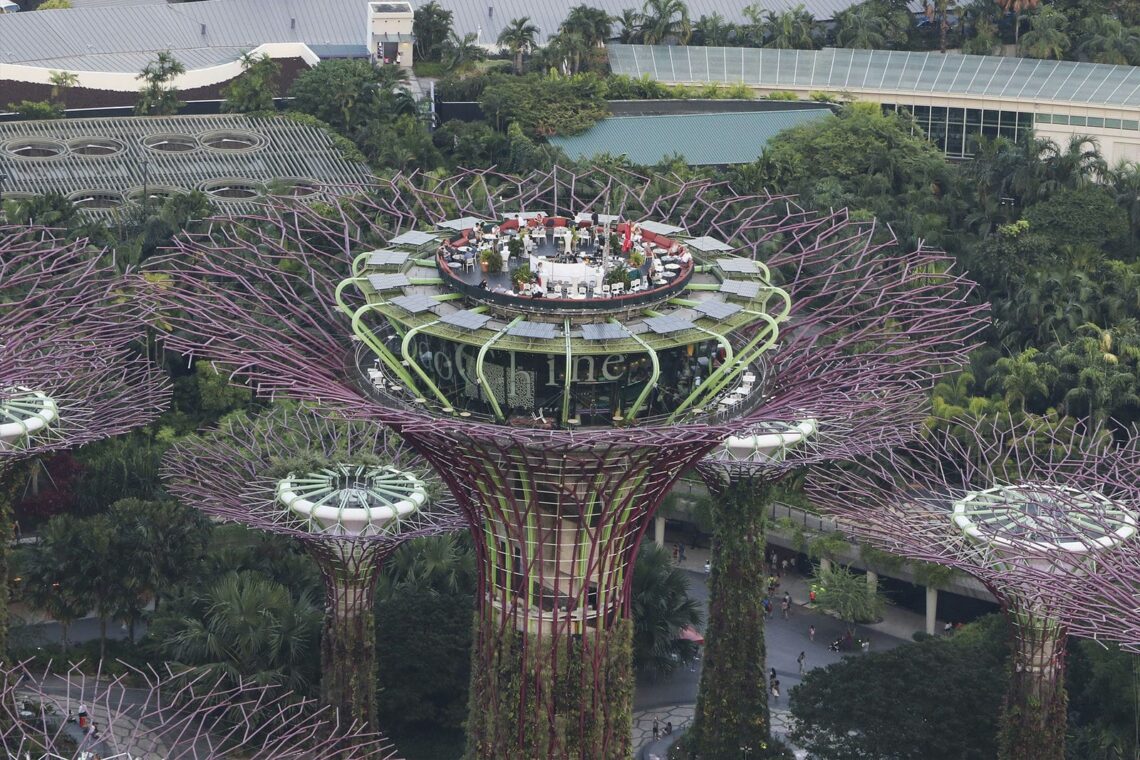
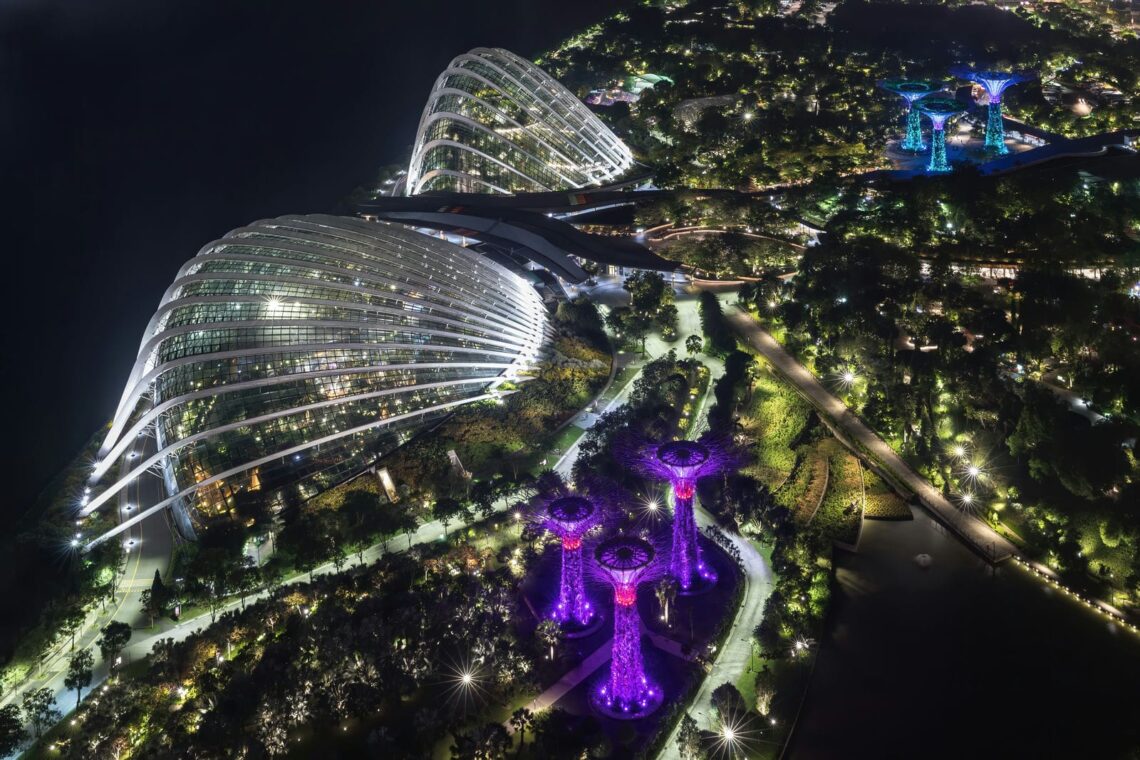
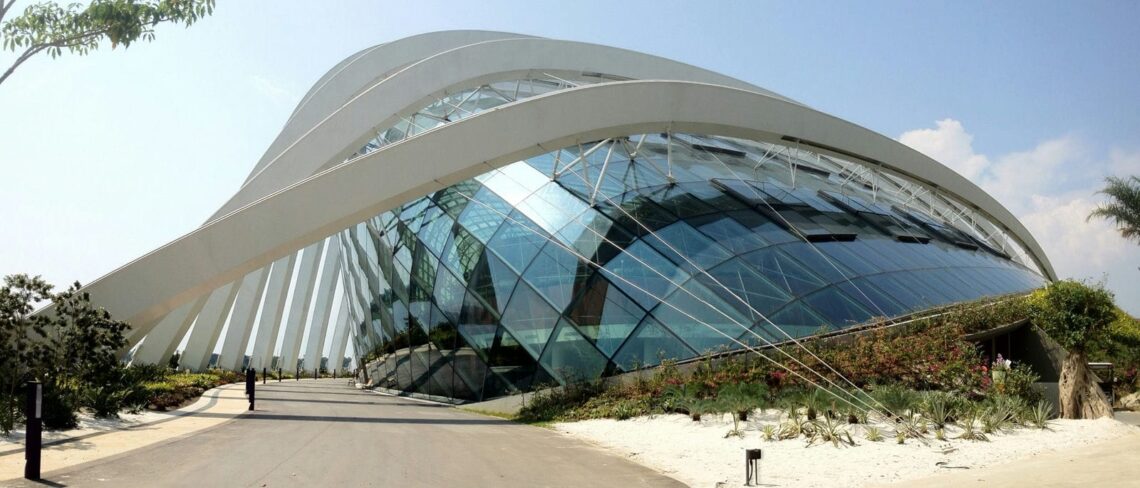
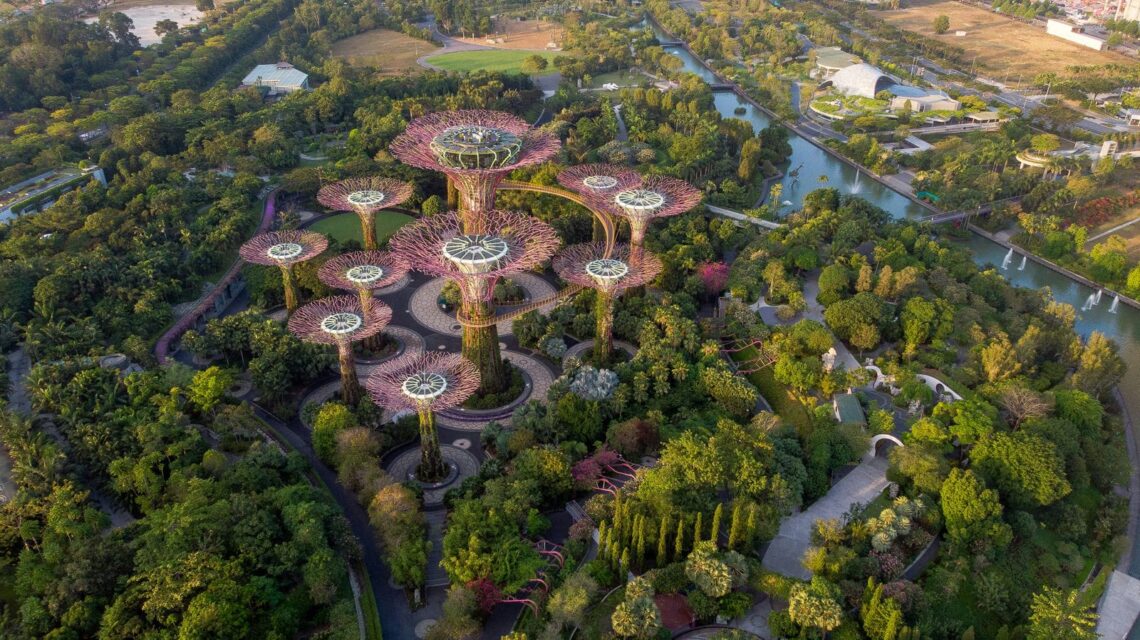
The Gardens by the Bay showcases a contemporary style with sustainable features and iconic modern structures accentuating natural beauty. The cooled conservatories exemplify high-tech glass architecture, while the Supertrees integrate vertical gardens. The gardens subtly integrate cultural touches like Chinese stone lions guarding the conservatories. Some Supertrees take inspiration from ancient Southeast Asian tree species. The horticultural diversity and artistic landscaping represent age-old human connections to nature. The Supertree Grove uses innovative vertical gardens integrated with nighttime lighting displays. Solar power also illuminates the conservatories to minimize energy usage. As a flagship national garden project in land-scarce Singapore, the expansive Gardens by the Bay complex reflects governmental environmental policies and the city’s identity as a “City in a Garden. ” The project reflects Singapore’s leadership in architectural innovation through its iconic buildings integrating nature, technology, and artistry as recognized by international awards.
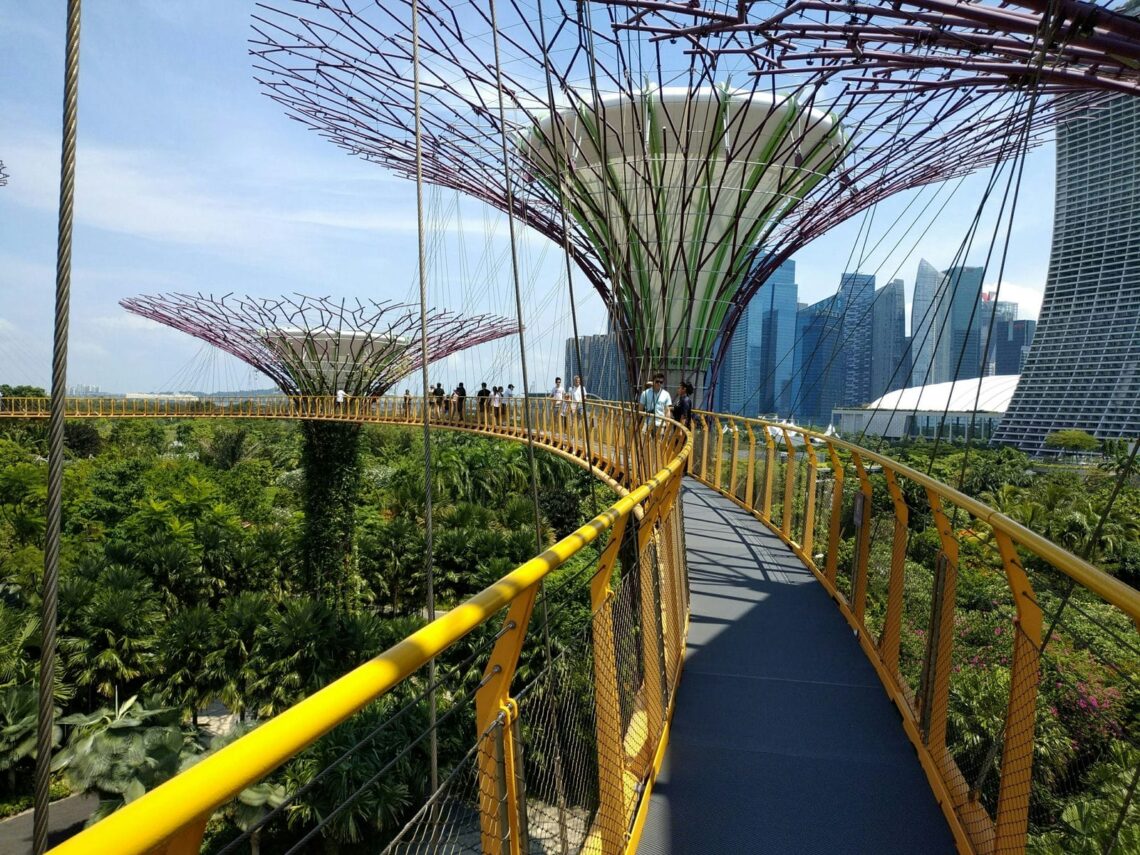
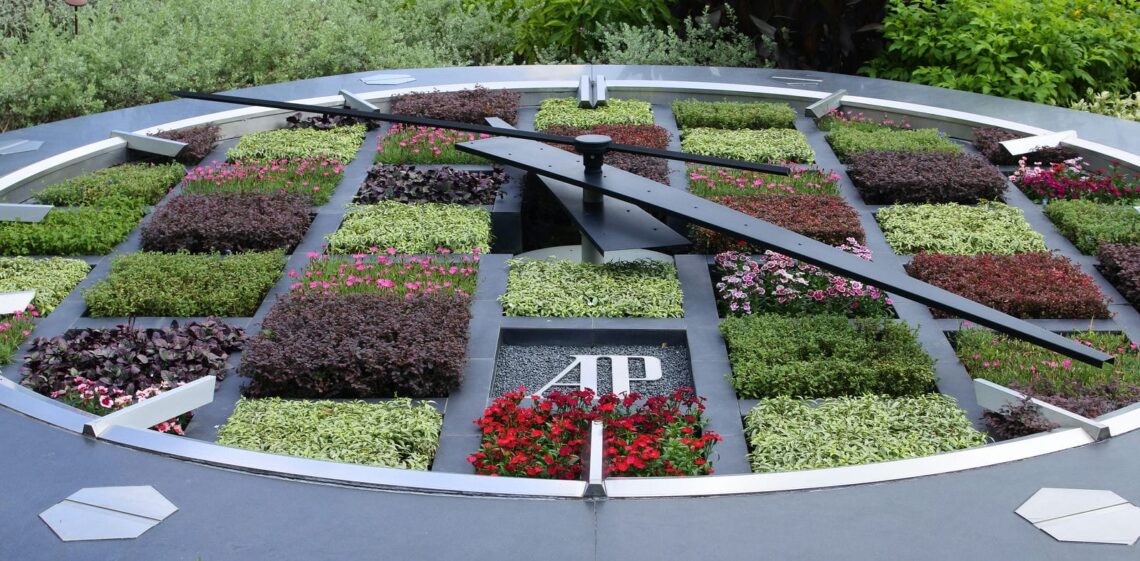
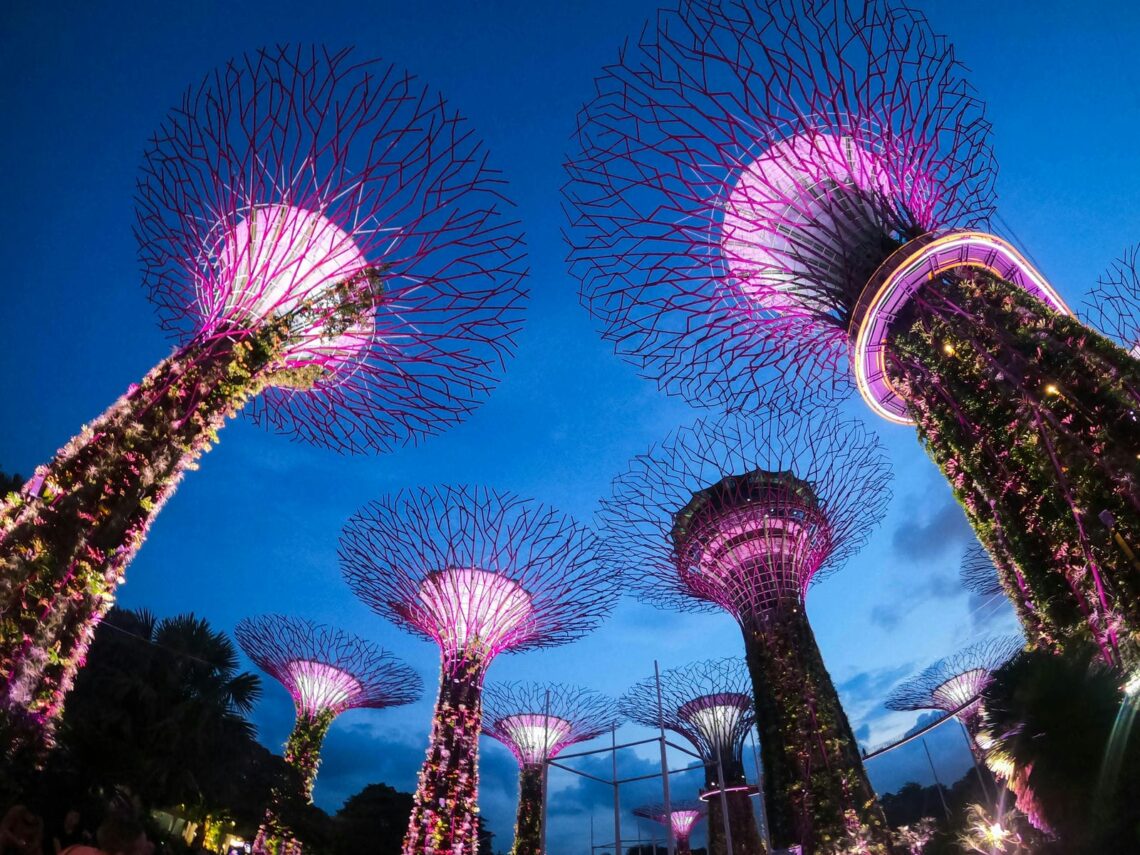
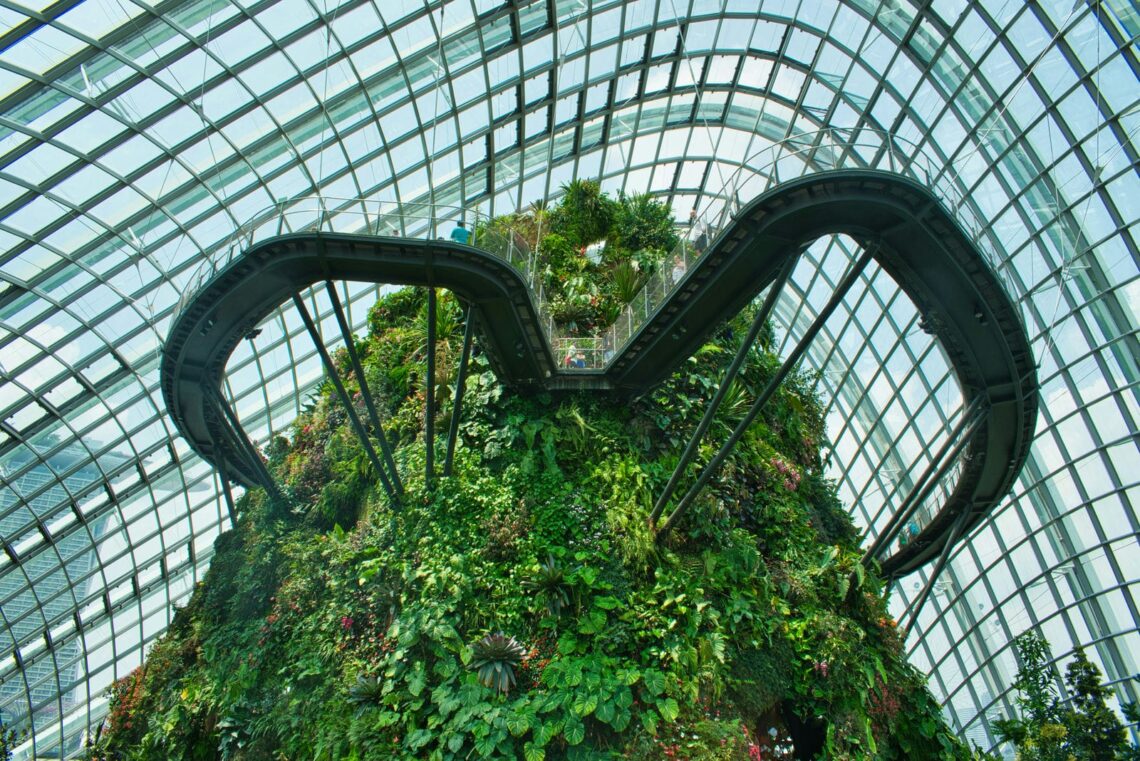
Gardens by the Bay has not required extensive restorations so far. General maintenance of living systems like the Supertrees, conservatories, and water features poses challenges. The site’s location on reclaimed land also necessitates ongoing coastal management. As a well-funded national project, preservation is a high priority, with proactive measures to uphold the architectural vision. The Gardens incorporate security systems, fire monitoring, emergency protocols, pedestrian routes with ramps or lifts between levels, accessible restrooms, and assisted transport like buggies to navigate the expansive grounds. Ongoing upgrades occur, too. Gardens by the Bay offers specialized tours like the “Architectural Circles” walking tour tailored specifically for architects, landscape designers, engineers, or architecture students. These expert-led tours provide insightful discussions around the design inspirations, sustainable features, engineering achievements, and horticultural considerations realized through the project.
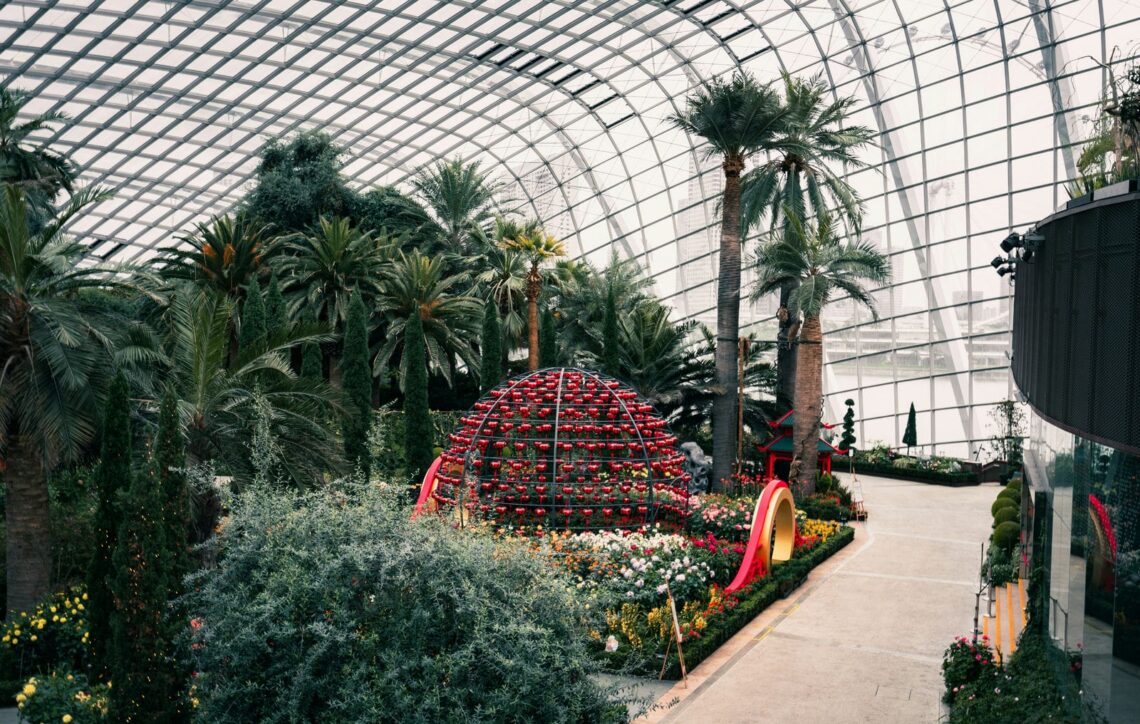
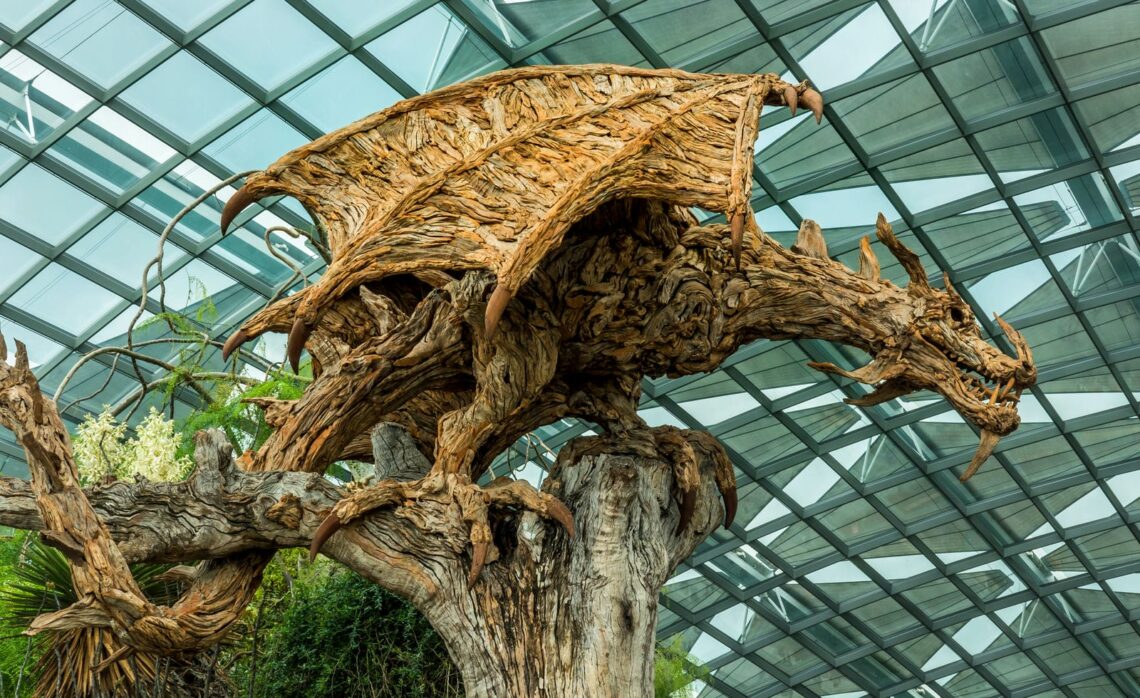
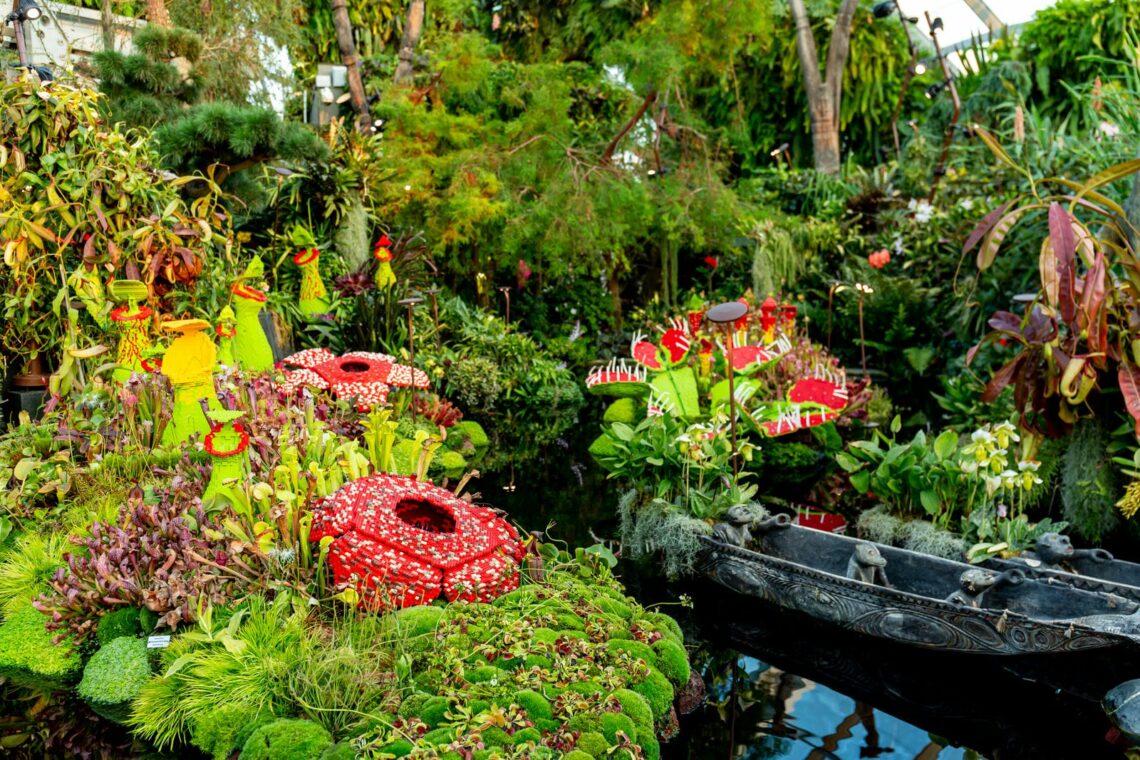
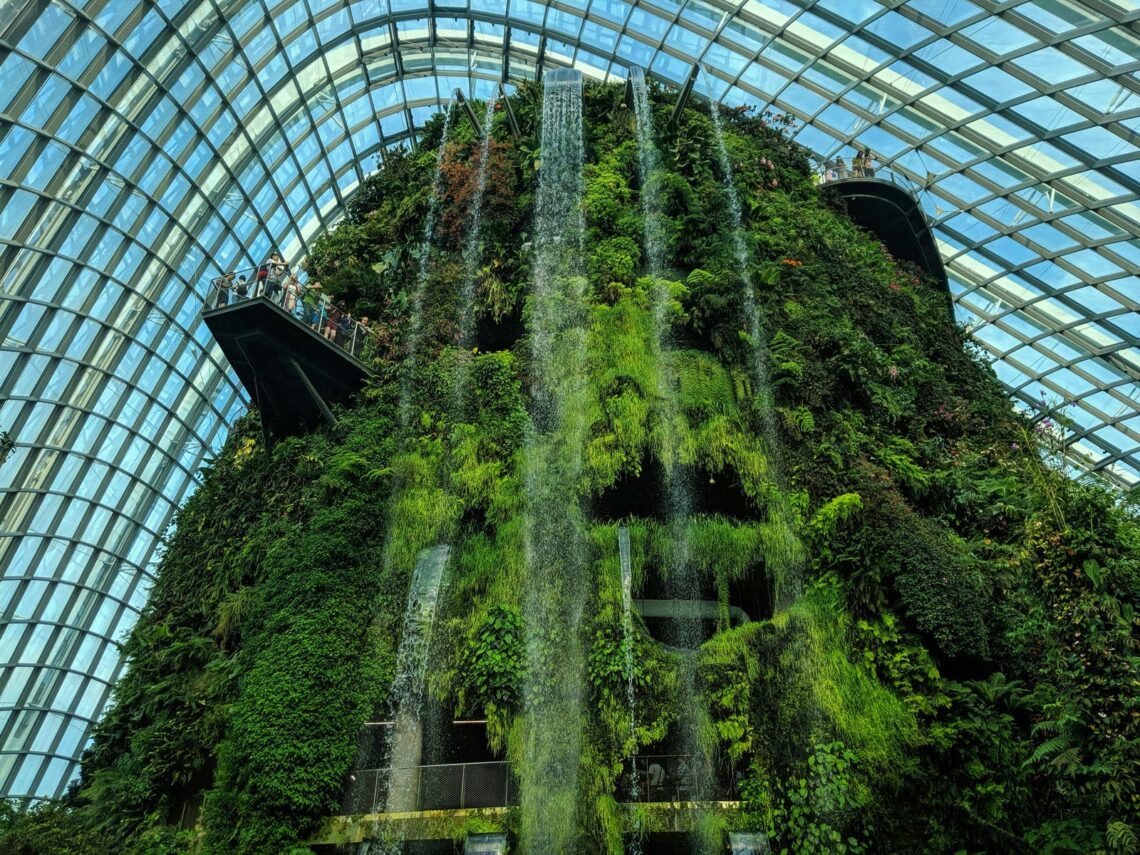
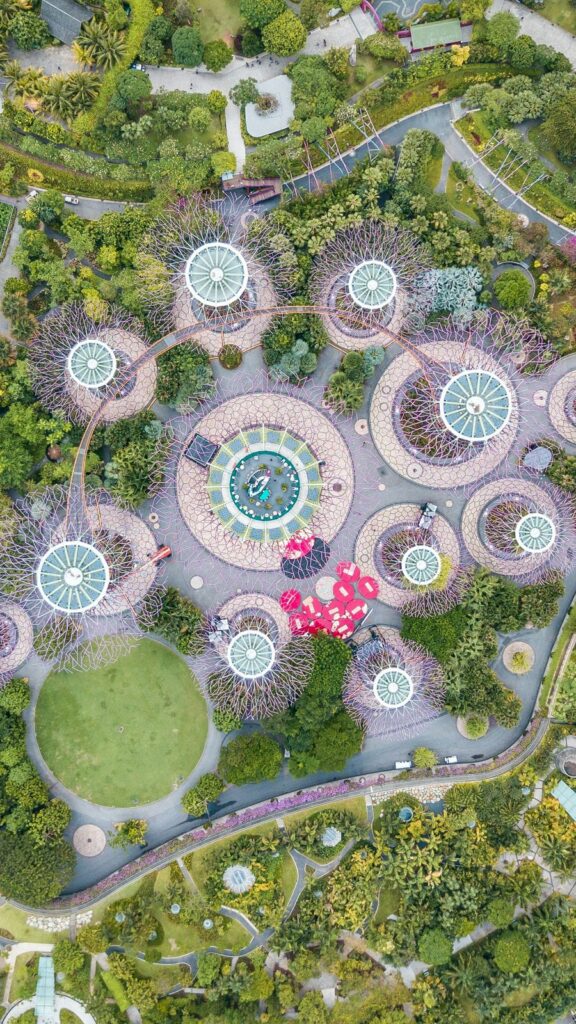
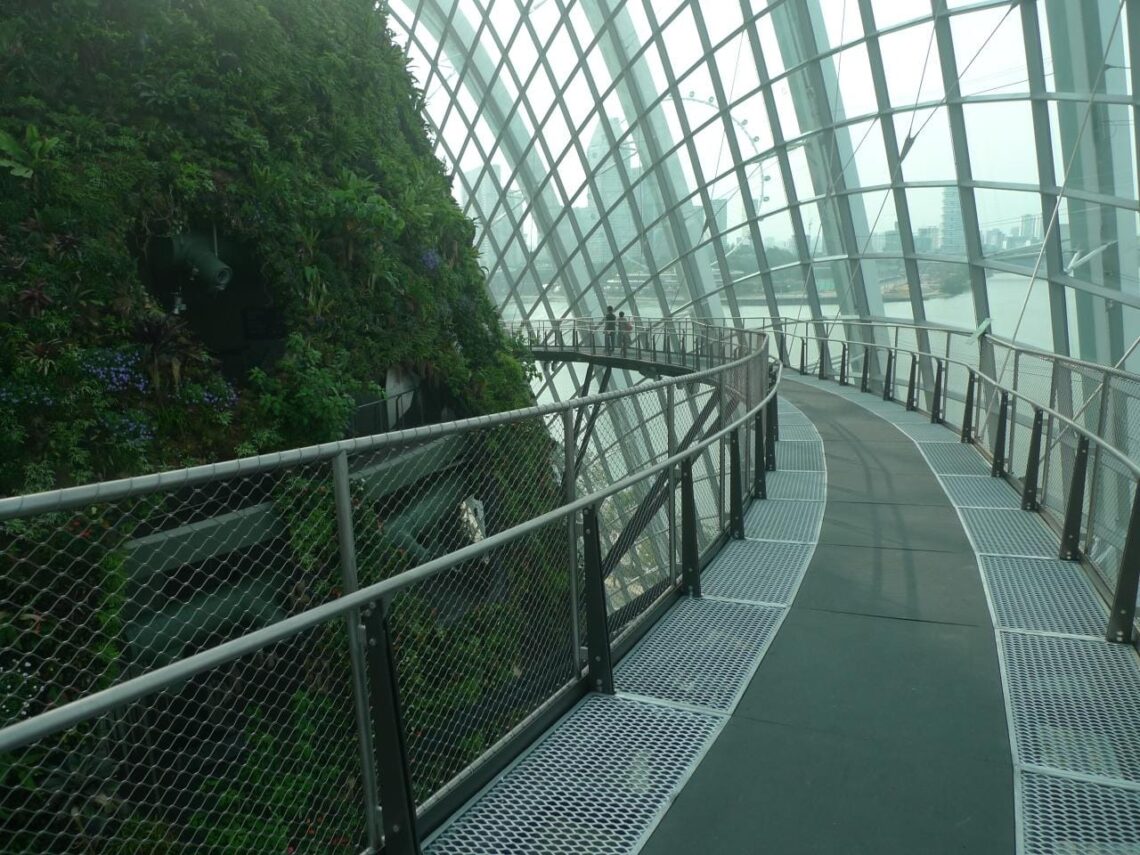
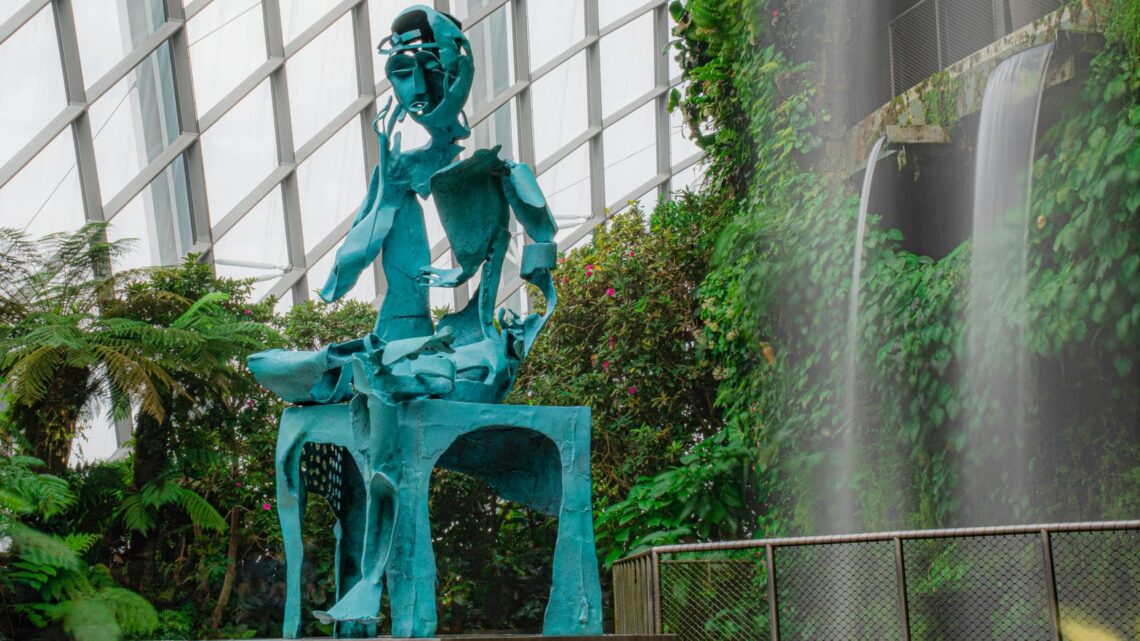
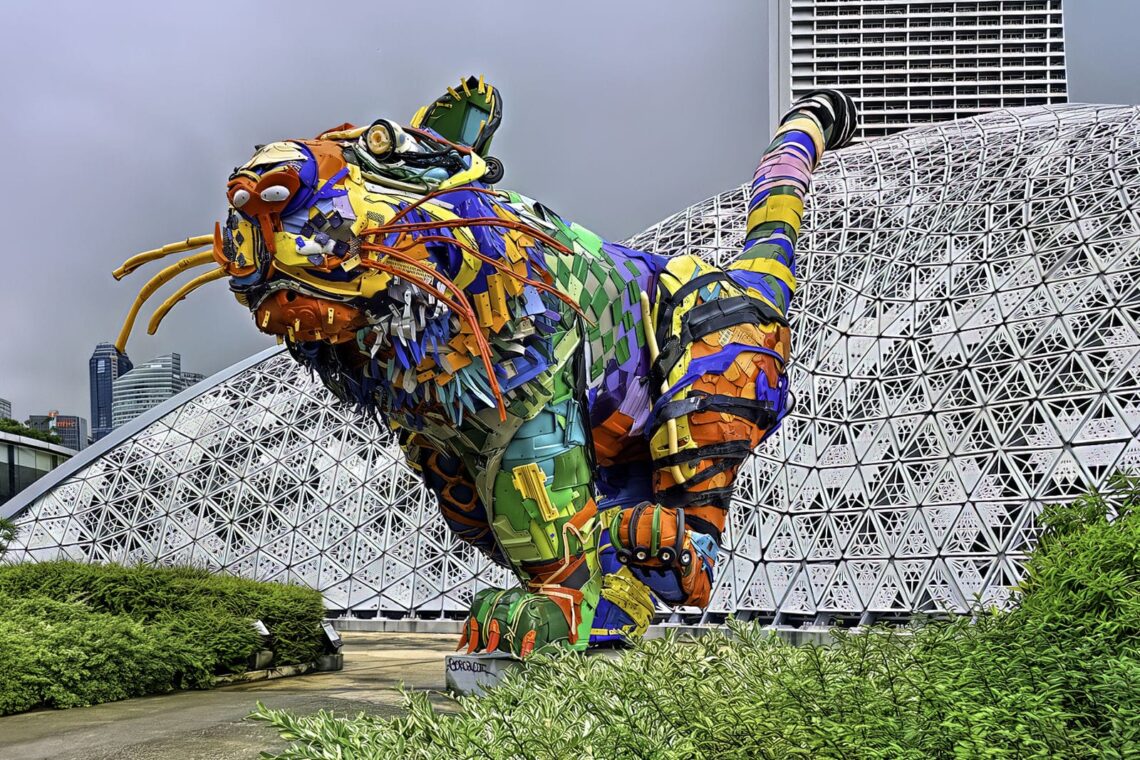
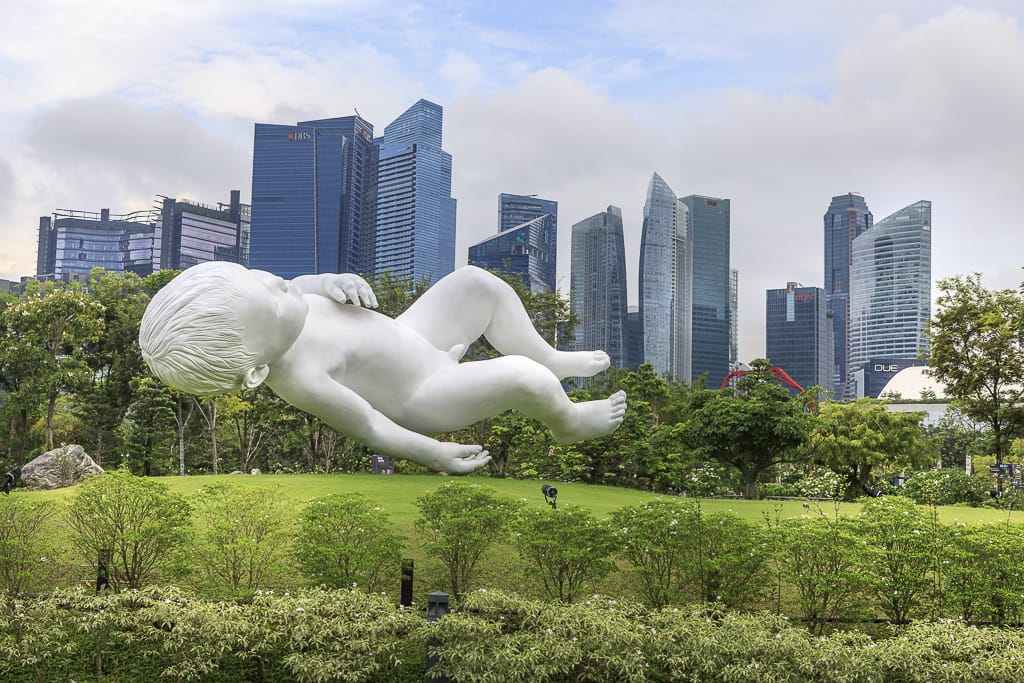
13. Burj Khalifa
The Burj Khalifa is a mixed-use skyscraper that is the world’s tallest building, according to all three main criteria, such buildings are judged: height to architectural top, height to the highest occupied floor, and height to tip. This mixed-use skyscraper contains luxury residences, corporate offices, fine dining, an Armani hotel, observation decks, art galleries, swimming pools, and the Dubai Fountain at its base. The Burj Khalifa is centrally located in downtown Dubai along Sheikh Mohammed Bin Rashid Boulevard adjacent to the Dubai Mall. Excavation work for the Burj Khalifa began in January 2004, with over 22 million man-hours dedicated to laying foundations and concrete reinforcement. Its construction was completed by 2009 after six years of ambitious structural works orchestrated by Samsung C&T. The Burj Khalifa was principally designed by architect Adrian Smith, working for architecture firm Skidmore, Owings and Merrill LLP (SOM). Smith delivered the initial conceptual design, and engineer Bill Baker developed the geometry for the tower and structural components. Samsung C&T and Turner Construction Company jointly oversaw construction.
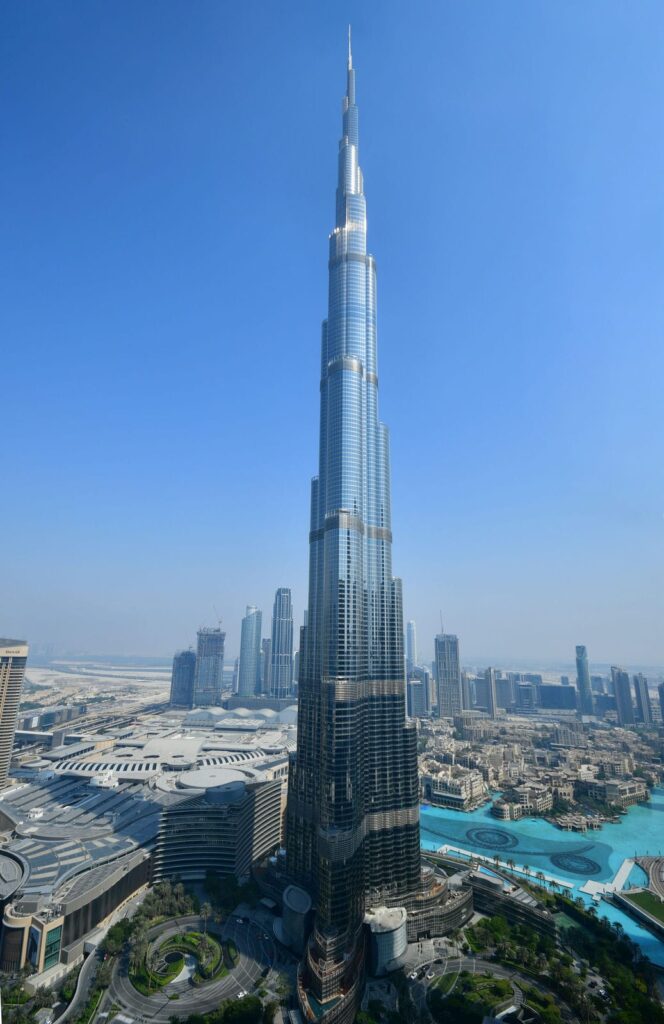
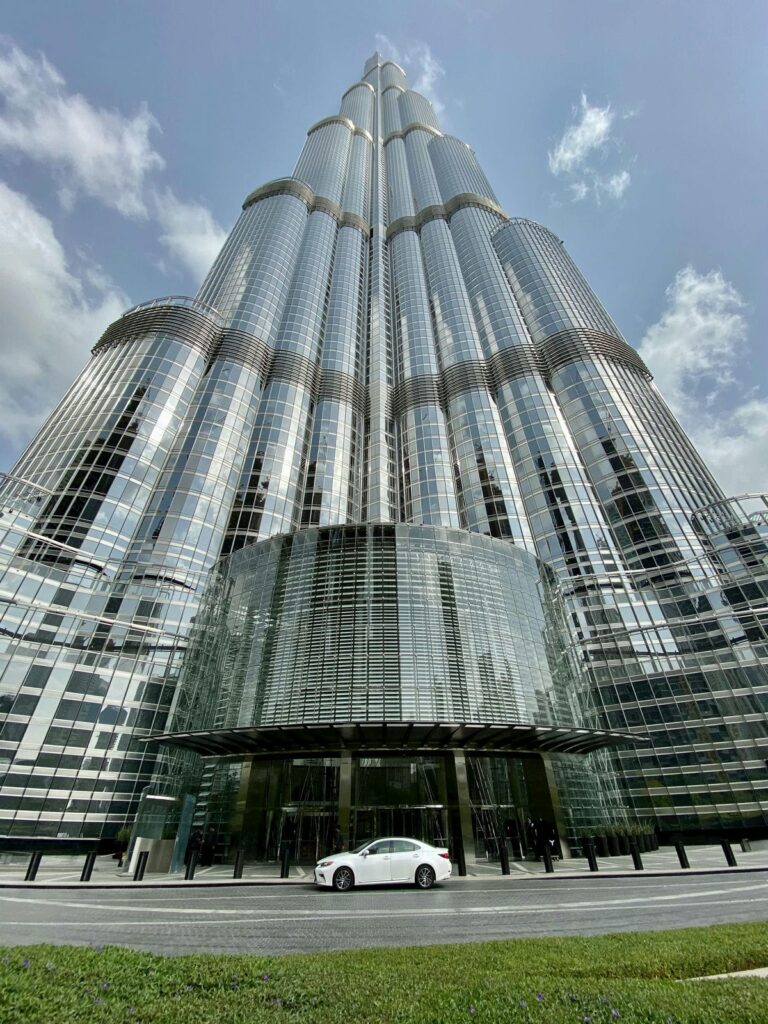
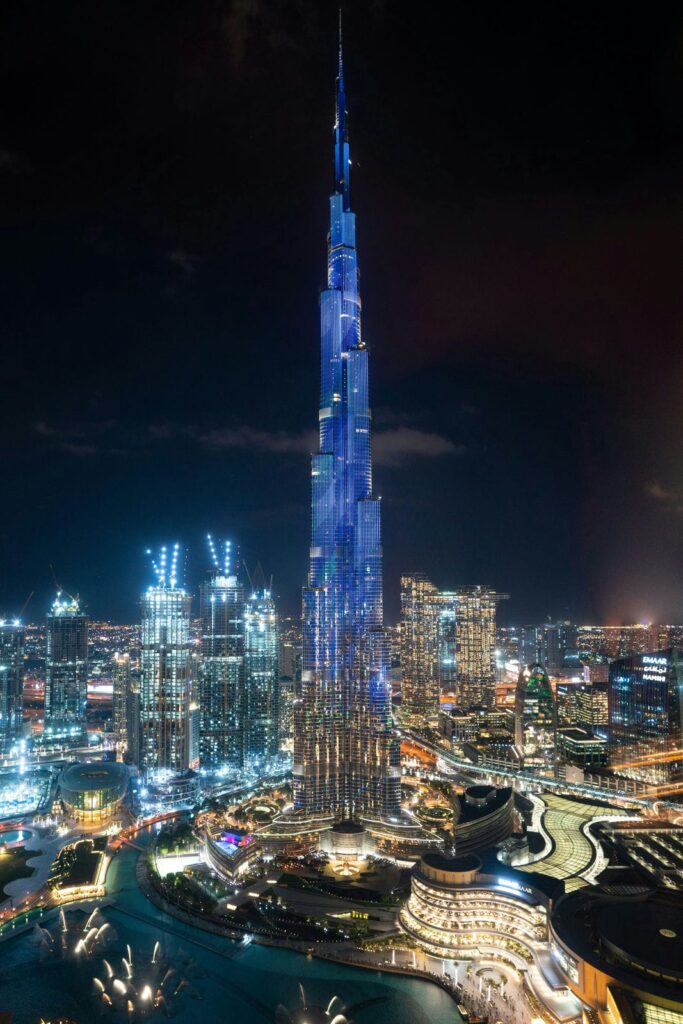
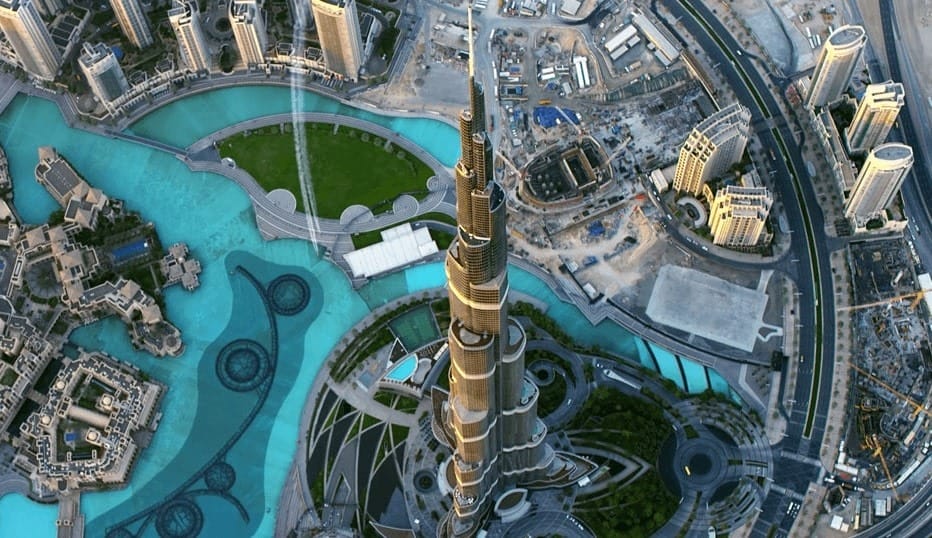
The Burj Khalifa represents advances in high-tech skyscraper designs with a triple-lobed Y-shaped plan integrating setbacks inspired by traditional Islamic architecture. The smooth glass facade contrasts the exquisite texturing from the cladding’s pattern. The triple-winged shape of the Burj Khalifa subtly references a Hymenocallis flower native to the region. Burj Khalifa represents the city’s cultural ambitions to be a global architecture, technology, and tourism leader. It integrates regional influences in form and patterns inspired by desert flowers. As the world’s tallest building, Burj Khalifa signifies the competitive race to construct more ambitious skyscrapers using the latest architectural engineering innovations.
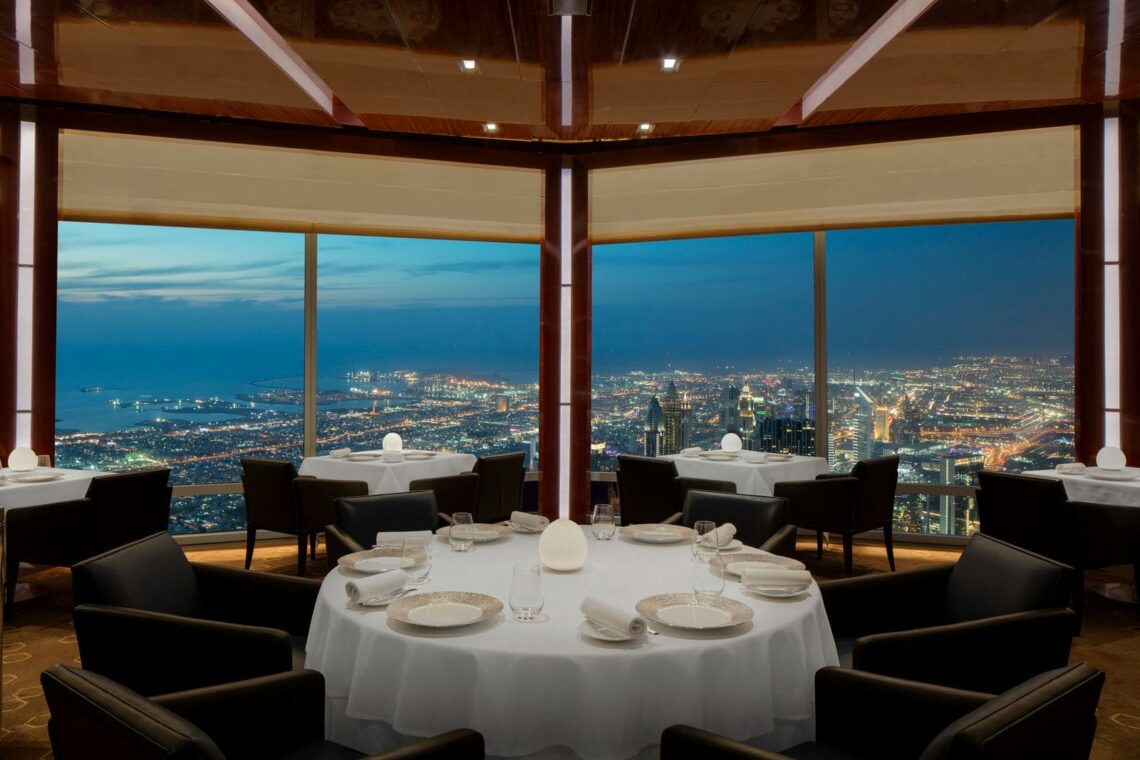
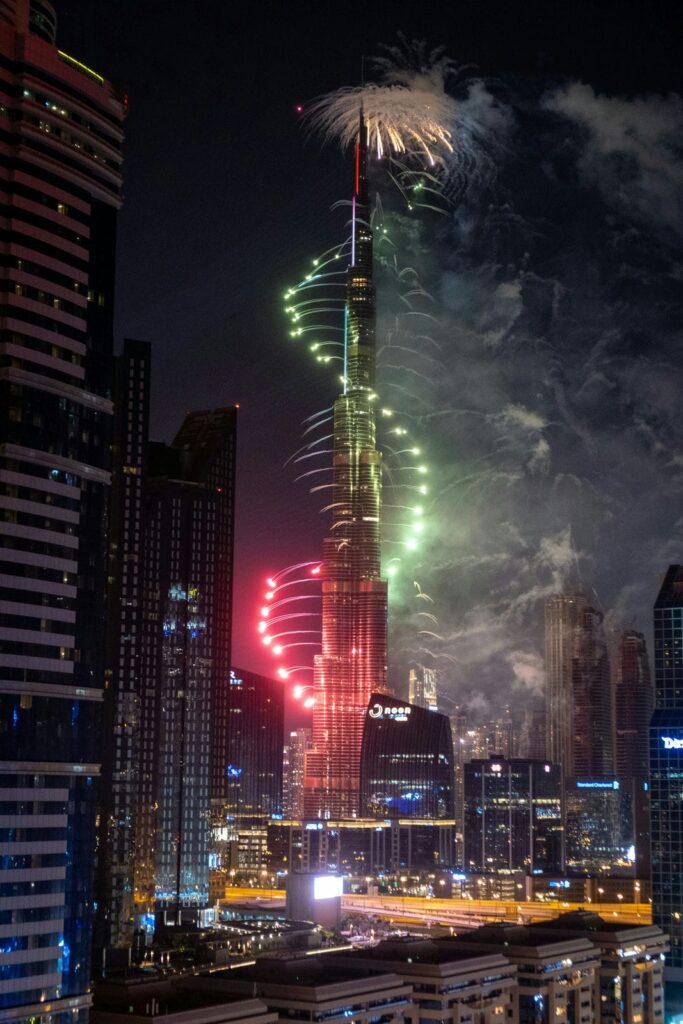
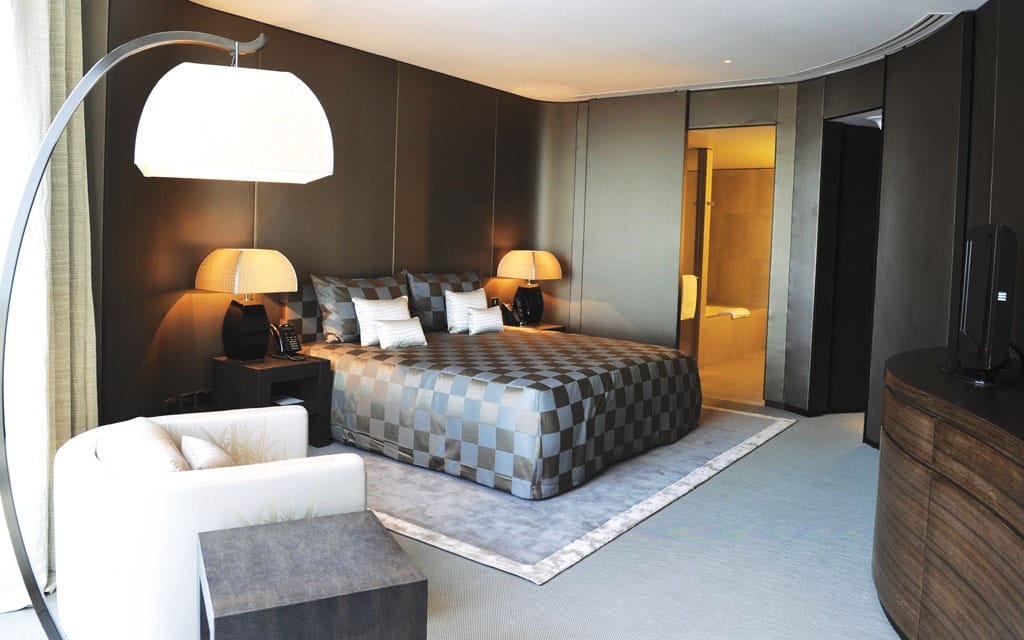
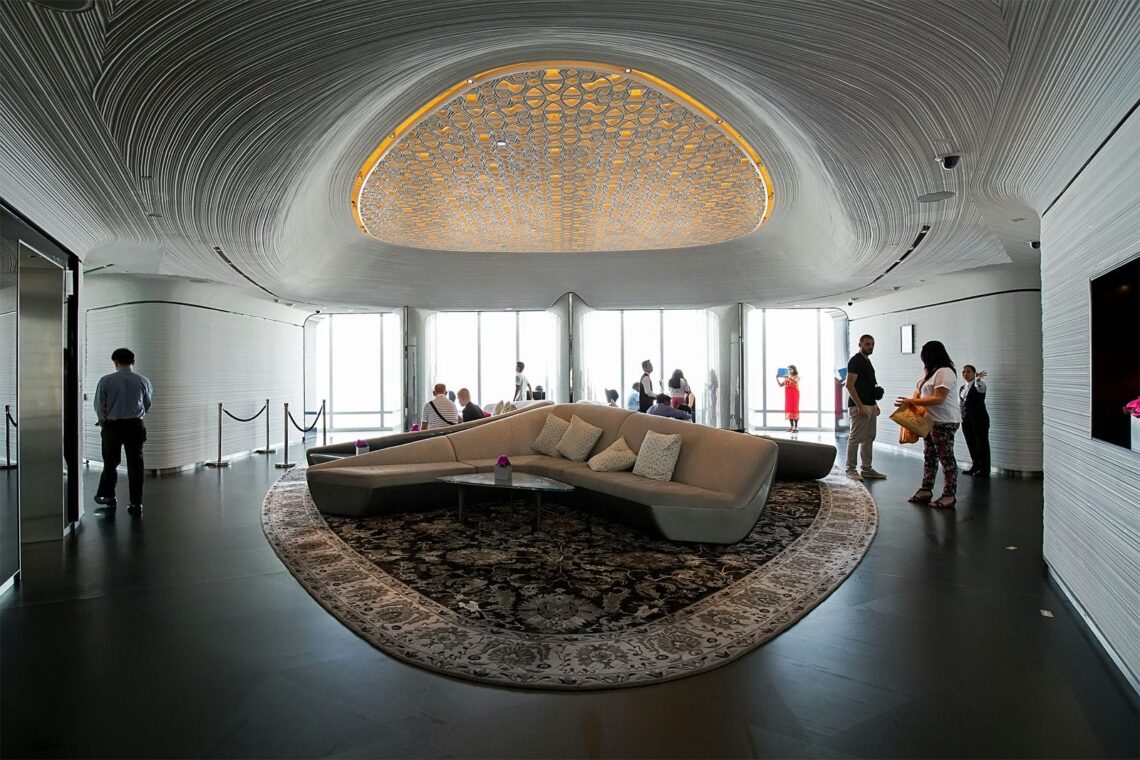
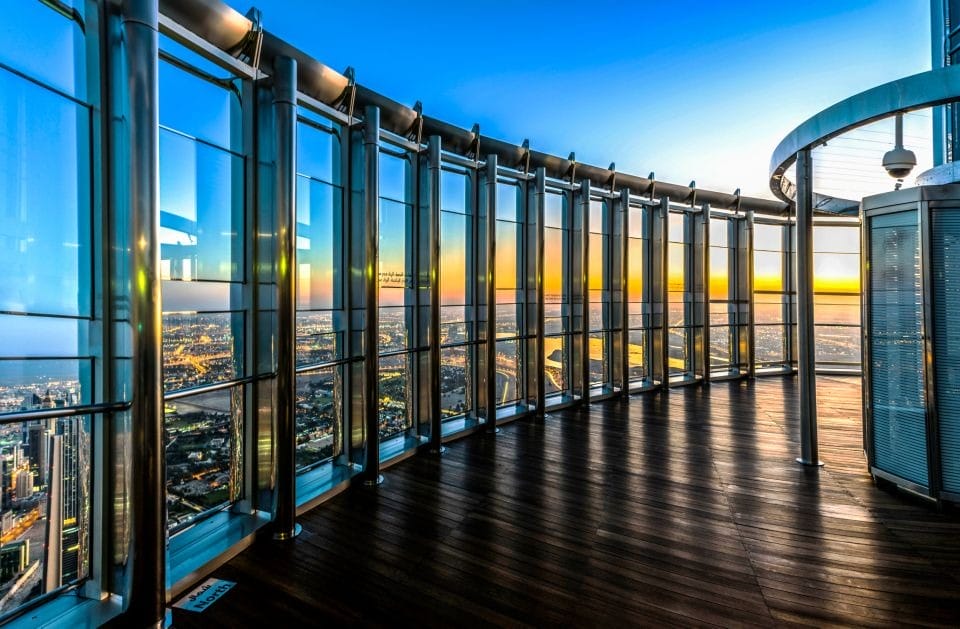
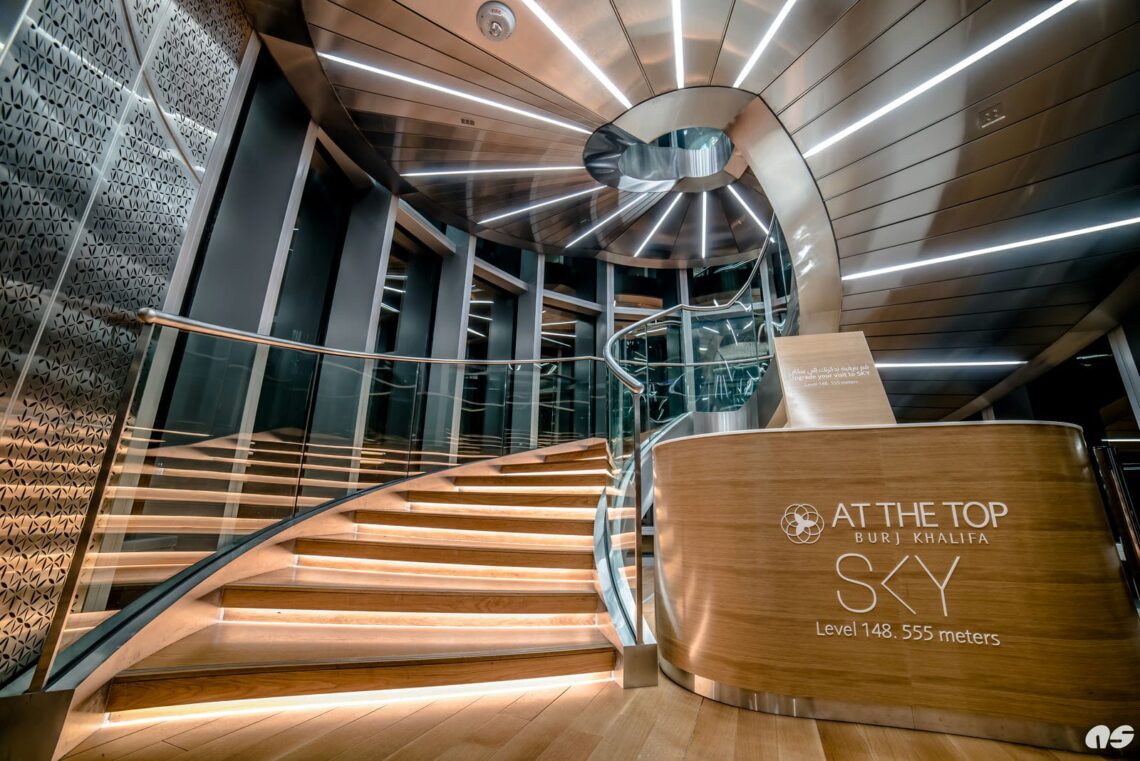
As an architectural feat completed in 2010, Burj Khalifa has required minimal extensive restoration beyond routine upkeep, given strict maintenance programs to preserve such a high-profile landmark asset. Potential future challenges may relate to upgrading mechanical systems and structural monitoring discretely within occupant spaces as analyzed by facility managers. The tower integrates extensive fire and life systems, including smoke alarms, sprinklers, fire-rated materials, emergency exits, and intercoms. For accessibility, there are accessible washrooms, building entrances, lifts, parking, and an assisted wheelchair route to the observation deck. Trained staff help visitors with special mobility requirements as needed. Safety barriers secure all viewing areas. Dubai tourism companies like Viator offer exclusive architecture-focused Burj Khalifa tours catering to architects, engineers, design professionals, and construction. These specialized tours provide unprecedented behind-the-scenes access and in-depth discussion of architectural details from expert guides regarding conceptualization, structural engineering, and tower construction.
14. Kuwait Towers
The Kuwait Towers are a group of three slender towers located in Kuwait City, Kuwait. They were the sixth and last group built as part of a larger system of 34 water towers supplying Kuwait. The Kuwait Towers have become an iconic modernist architectural landmark. The Kuwait Towers site is on a promontory in Ras Al Ard on the Persian Gulf seaboard in the Al Asimah Governorate, where Kuwait City is located. Construction of the Kuwait Towers complex began in 1976 and was carried out in five phases, completed in 1979 after around three years. The towers officially opened to the public in March 1979 as a landmark attraction. The main tower with two spheres was the last part finished to complete the sculptural concrete structures fully. The European enterprise Christiani & Nielsen carried out the concrete engineering work with local firm Ahmed Al Hassan Contracting under the Kuwait Ministry of Electricity and Water project commission.
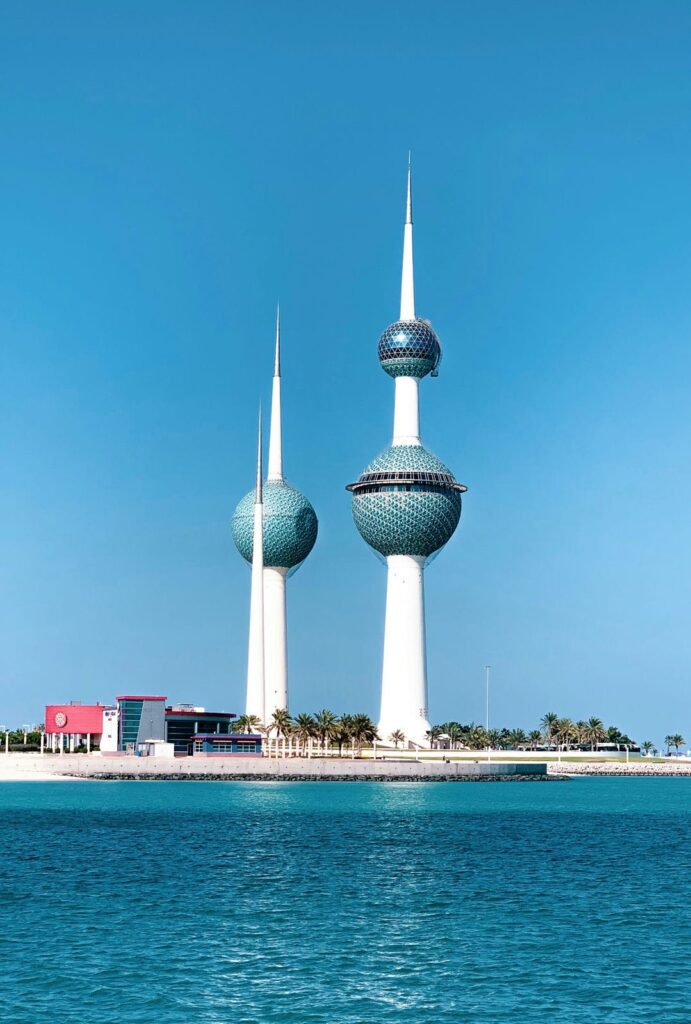
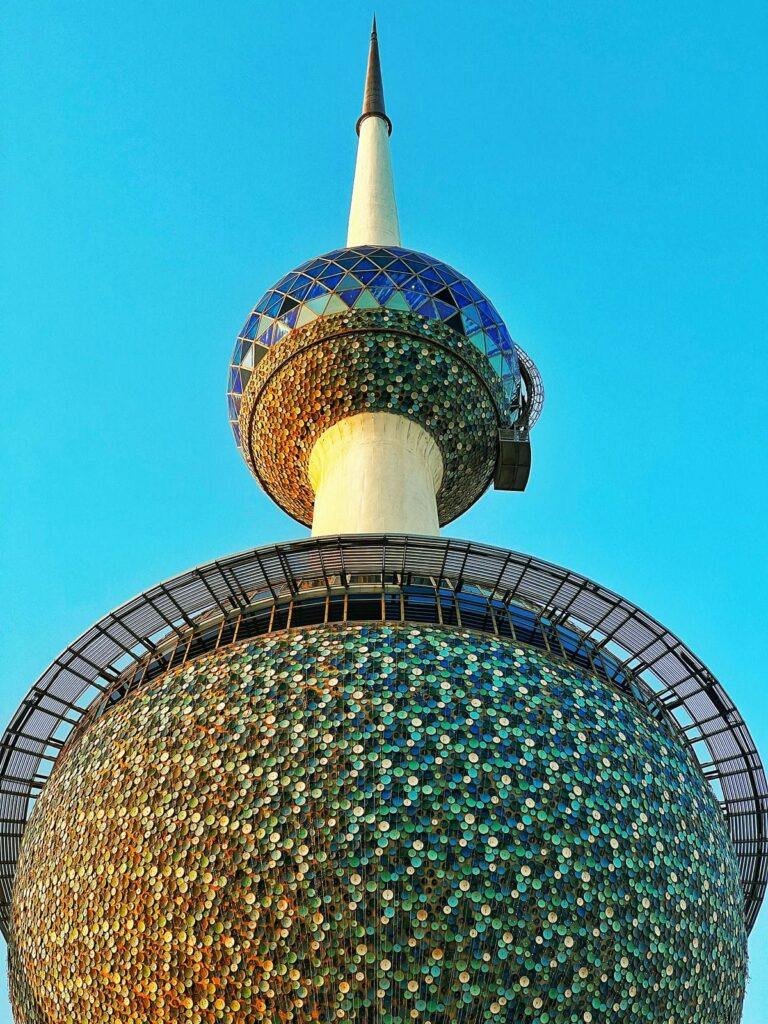
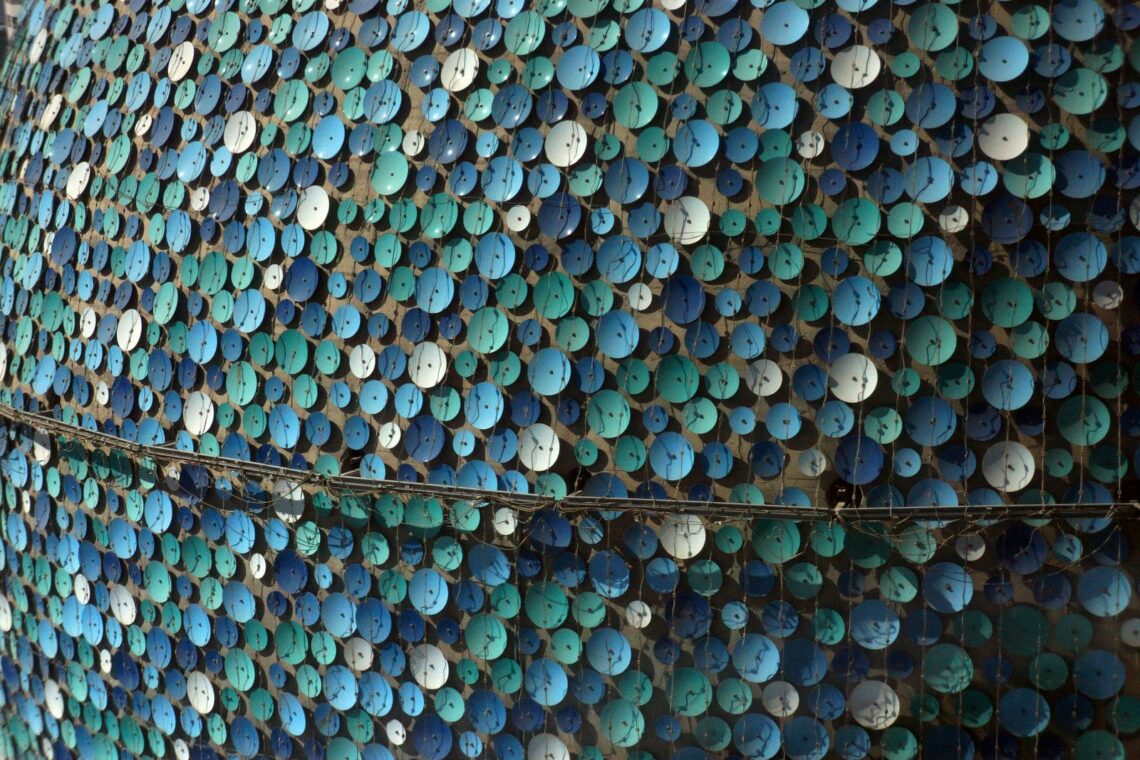
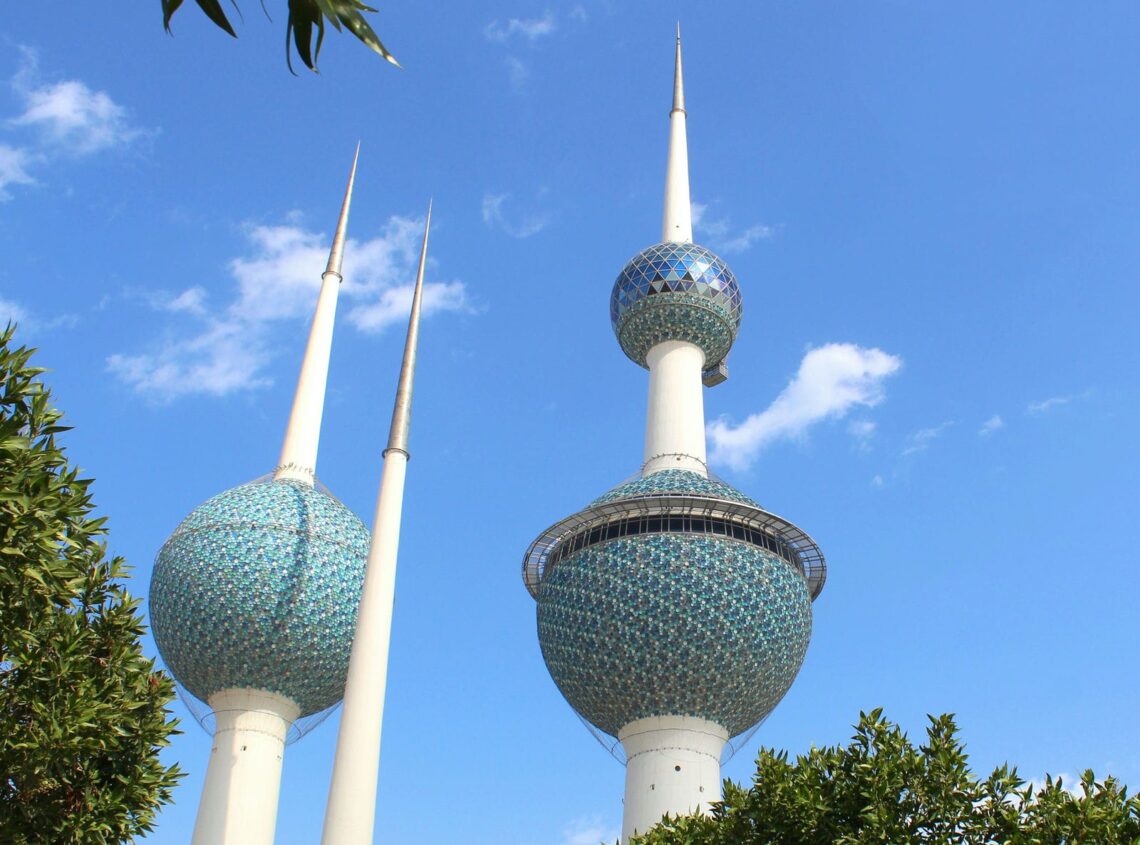
The Kuwait Towers display a modernist style with simple geometric shapes, precast sculptural concrete elements, open viewing platforms, and the absence of ornamentation. The thin parabolic columns and spheres contrast with the strong horizontal cantilever. This space-age style marked a new era for modern Kuwait. The Kuwait Towers’ design subtly references local culture through the motif of the pearl diving tradition on the stainless steel spheres. The most distinctive aspect is the color-changing LED light system outfitting the two water spheres, which creates dynamic scenes against the night sky. The sphere interiors also feature accent lighting displays. The nearby fountain jets provide cooling ambient water vapor. As an iconic national landmark, the Kuwait Towers manifest the country’s ambitions to utilize its oil wealth in creating dramatic architectural statements that placed Kuwait City onto the global scene during the modernization era of the 1970s.
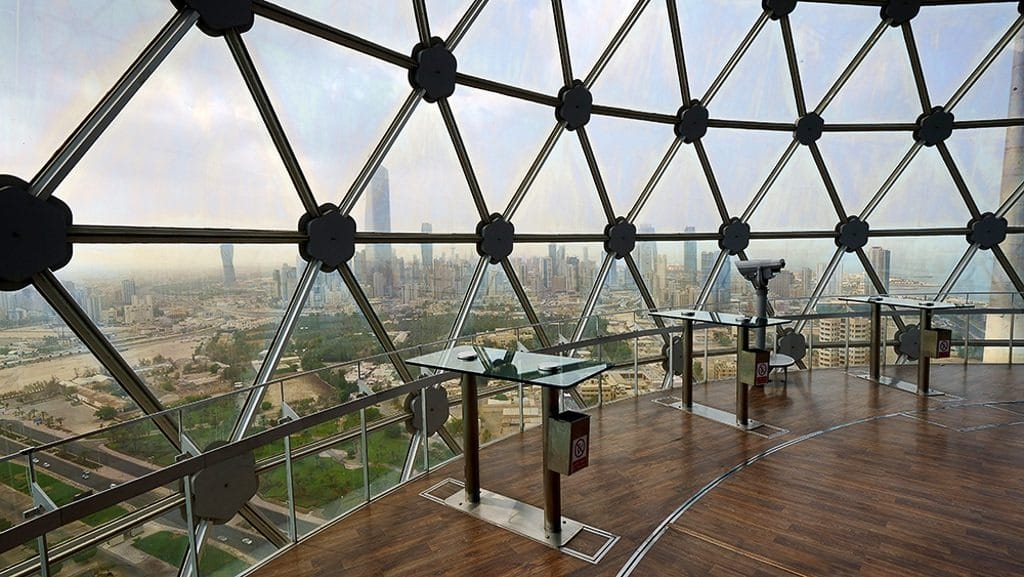
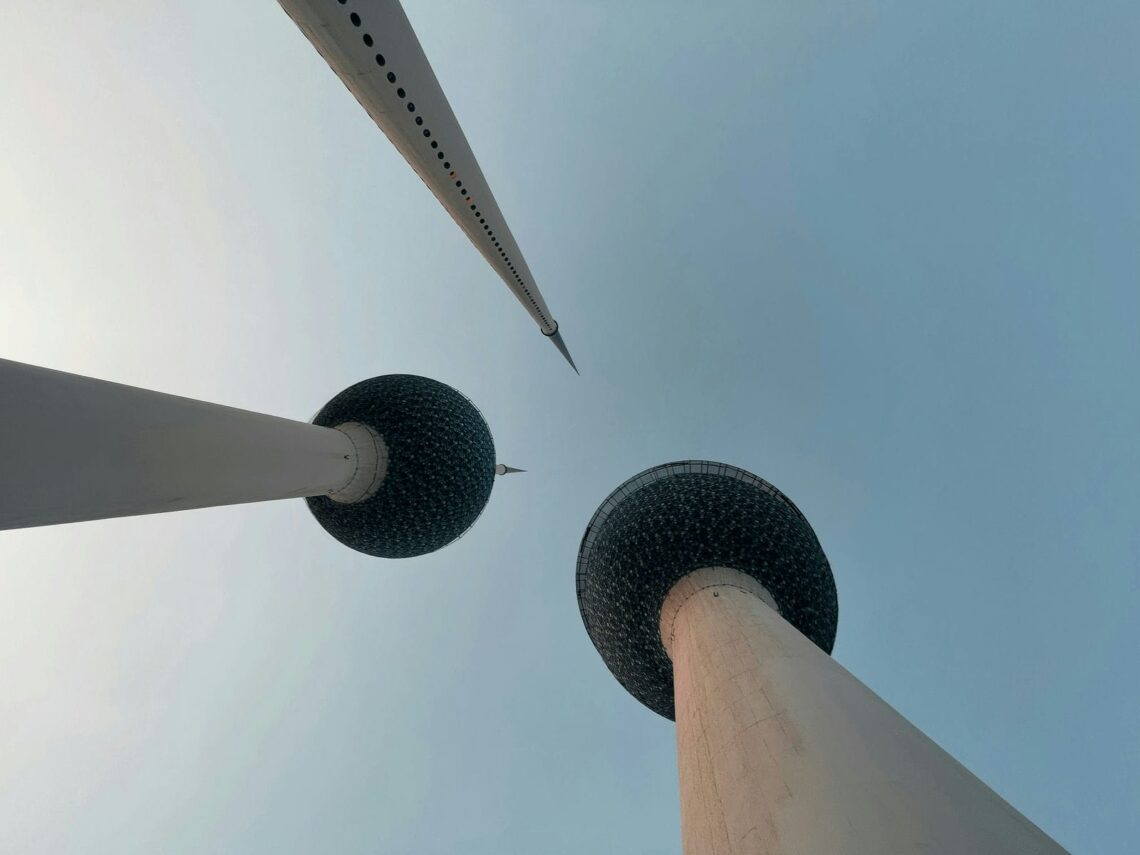
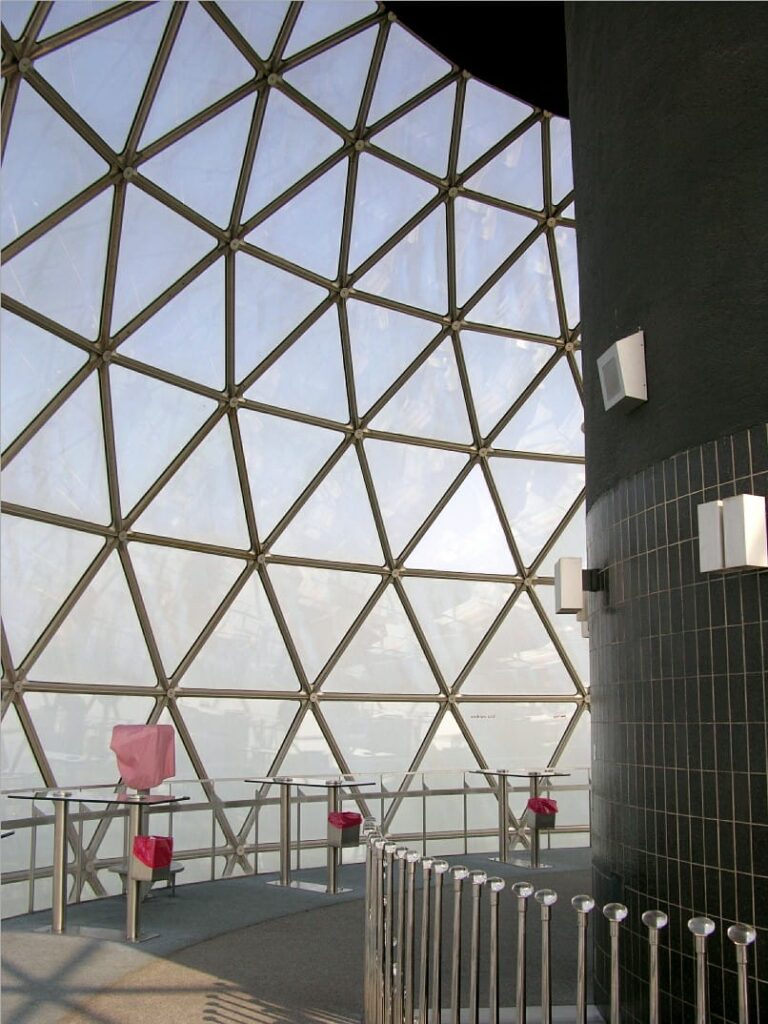
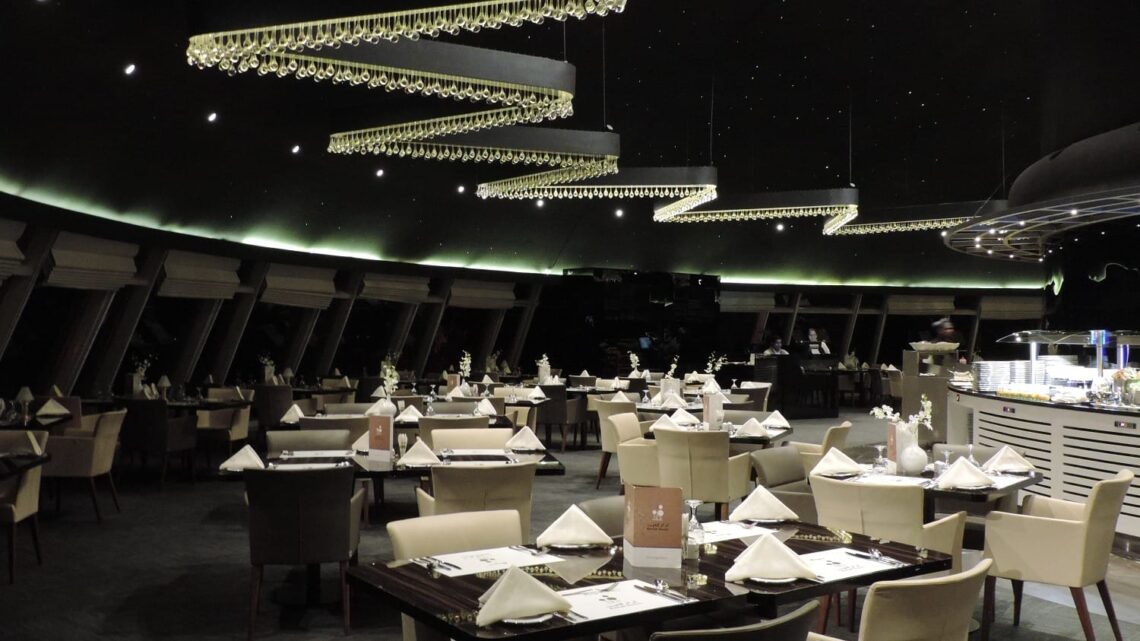
Restoration efforts in Kuwait Towers have focused on upgrading infrastructure within the towers and mechanical equipment like light displays without compromising the structural intent or external architecture. Conservation aims to retain original materials and appearance while accommodating safety improvements and visitor amenities. Funding constraints and saltwater corrosion pose issues. Future efforts may include adapting entry ramps, viewing platform lifts, or adding discreet elevators to improve disabled access while respecting modernist architectural integrity. Kuwait City tour companies like Viator offer customized itineraries catering to architects and building aficionados as advertised. These specialized tours provide architectural discussion of the Kuwait Towers’ design influences, engineering achievements, lighting capabilities, and structural detailing led by expert local guides who can elucidate technical aspects for design professionals and students.
15. Petra
Petra is an ancient city and World Heritage Site and sits within the Arabah Valley between the Dead Sea and the Gulf of Aqaba in southwest Jordan. It served as the capital of the Nabatean empire from 400 BC to 100 AD, given its strategic location along ancient trade routes. Petra is acclaimed as one of humanity’s most precious treasures and greatest archaeological sites for its monumental architecture integrated into a dramatic natural landscape. The Nabateans built Petra, industrious Arabs who settled the area and established an advanced civilization centered around caravan trade from the 4th century BC until the 2nd century AD. Nabatean architects designed the city’s signature rock-cut monuments and hydraulic infrastructure, enabling agriculture, urban planning, and global commerce, contributing to Petra’s glorious rise.
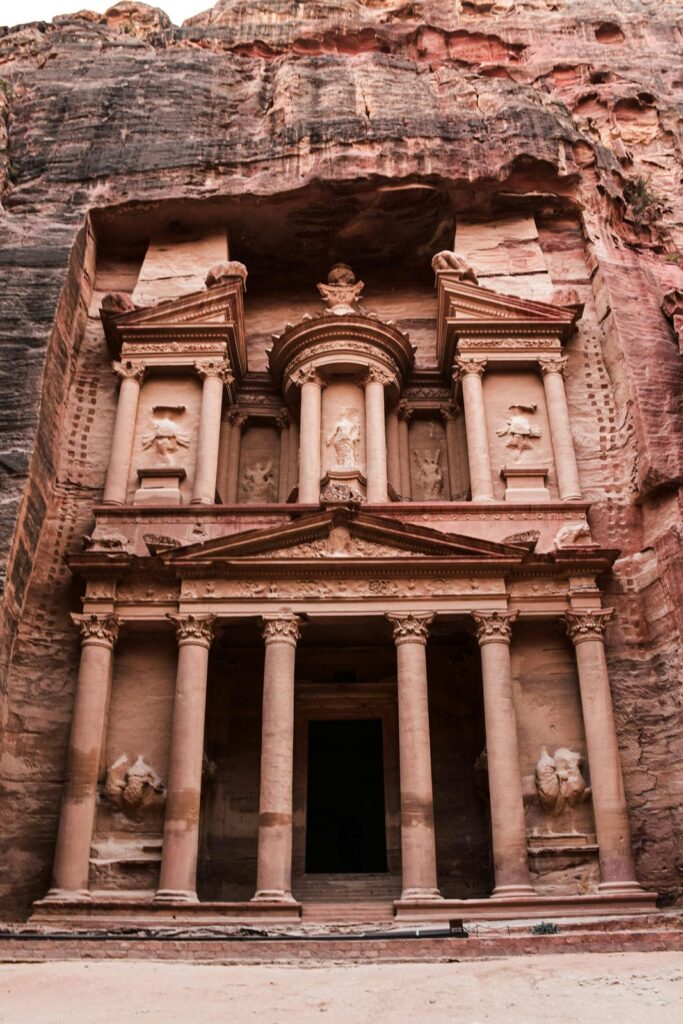
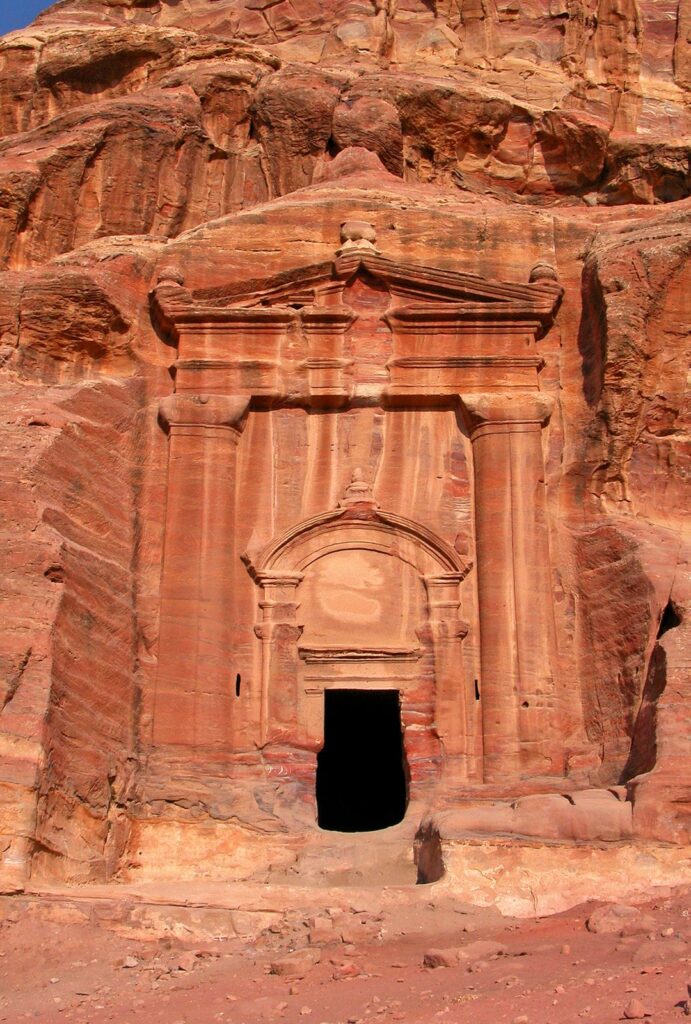
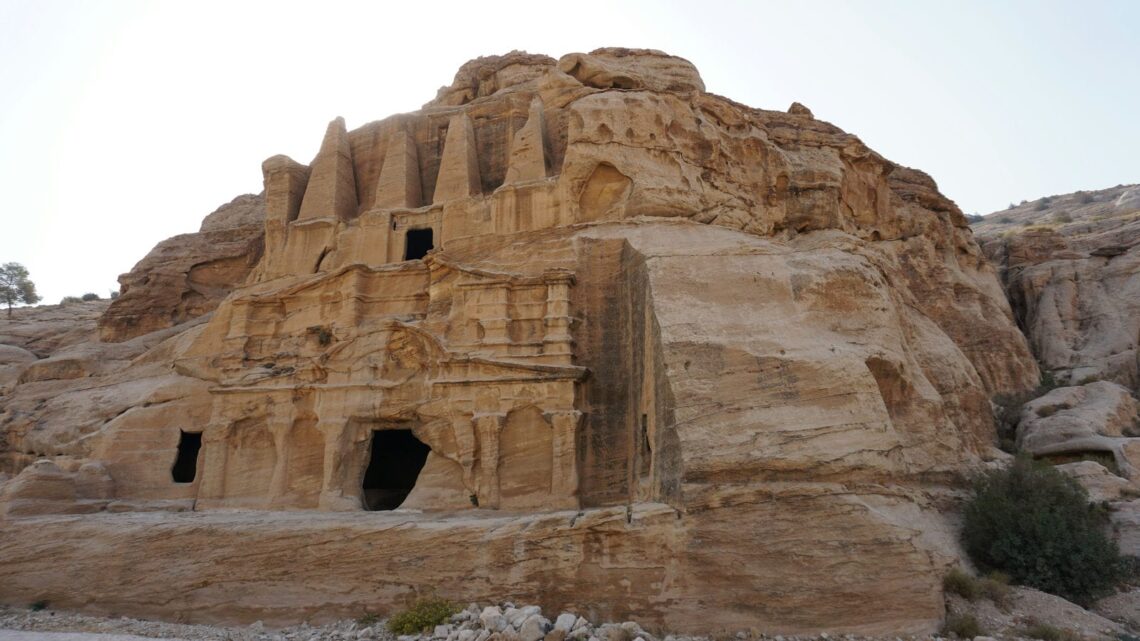
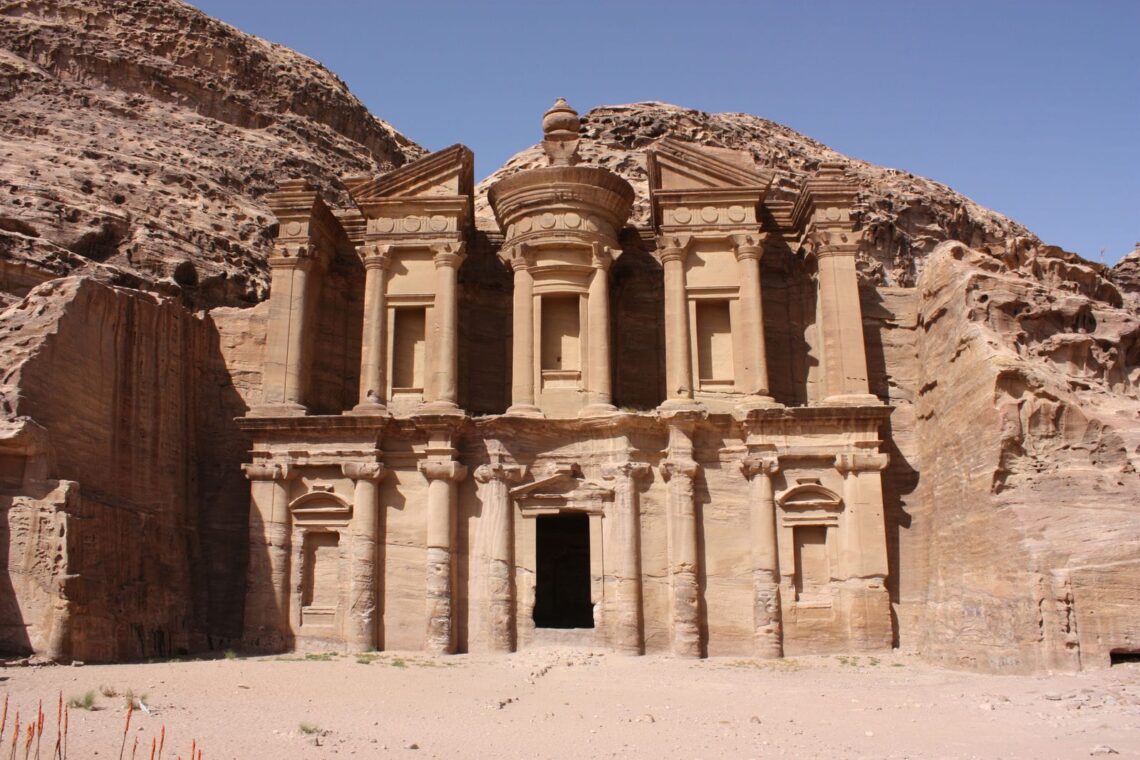
Petra features distinctly Nabatean architecture fusing Hellenistic, Egyptian, and Mesopotamian influences in its monumental tombs, temples, and public buildings, all ornately carved into sandstone cliff faces at a giant scale. Petra’s architecture directly manifests a civilization’s engineering capabilities, aesthetic tastes, and commercial dominance. Petra had religious structures underscoring Nabatean polytheistic beliefs until Christian and Islamic influences prevailed after the Romans. Petra represents a pinnacle artistic and engineering achievement of ancient Near Eastern civilizations. As an acclaimed UNESCO wonder, Petra’s sublime beauty has inspired modern architects and remains globally influential. The site’s integrity and rich cultural layers also signify evolving preservation ethics.
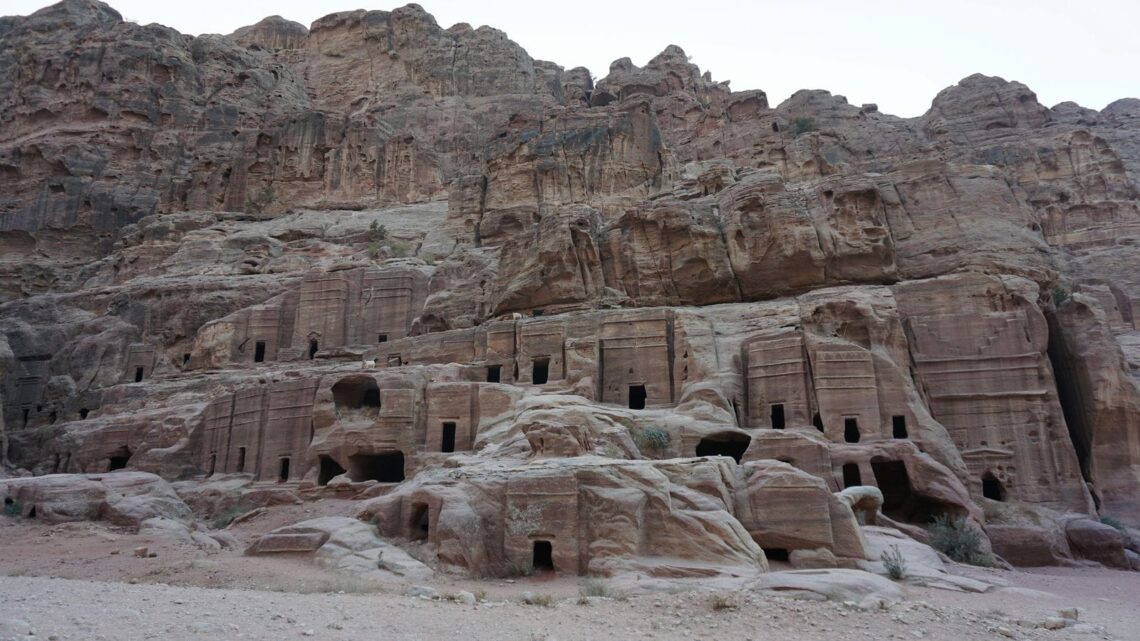
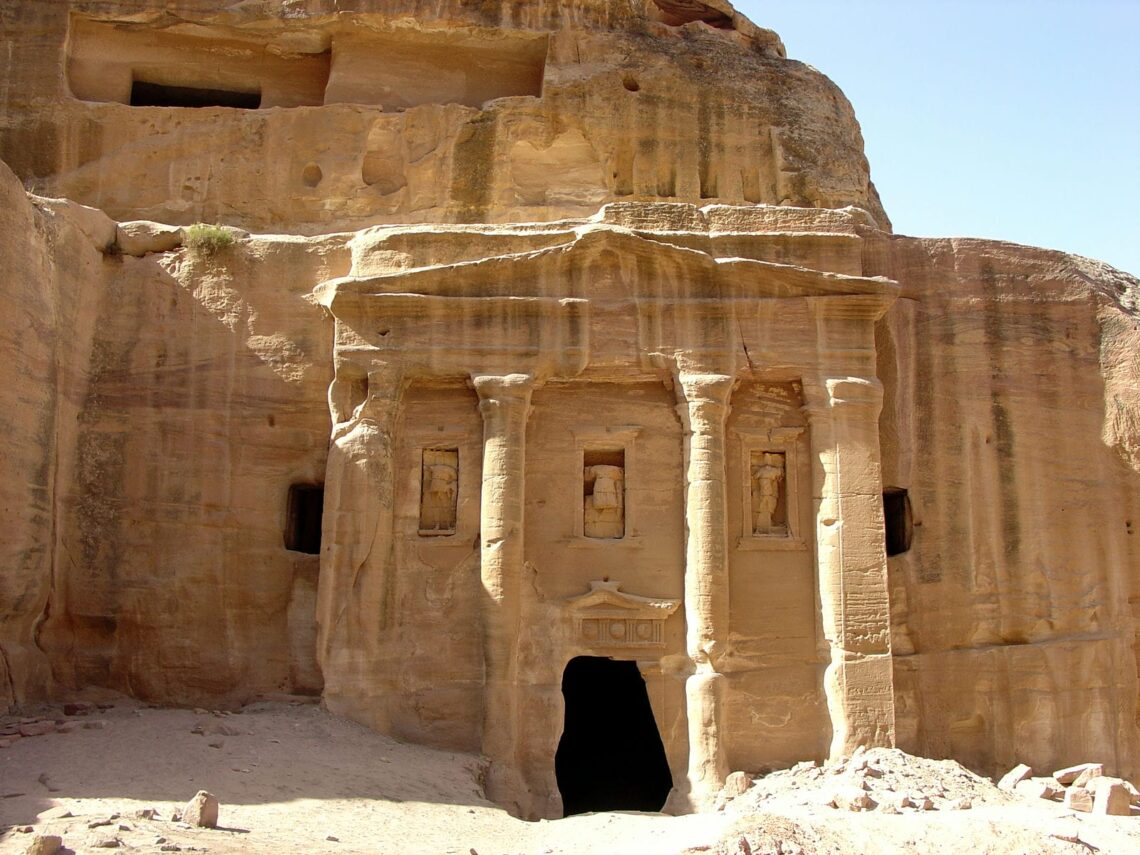
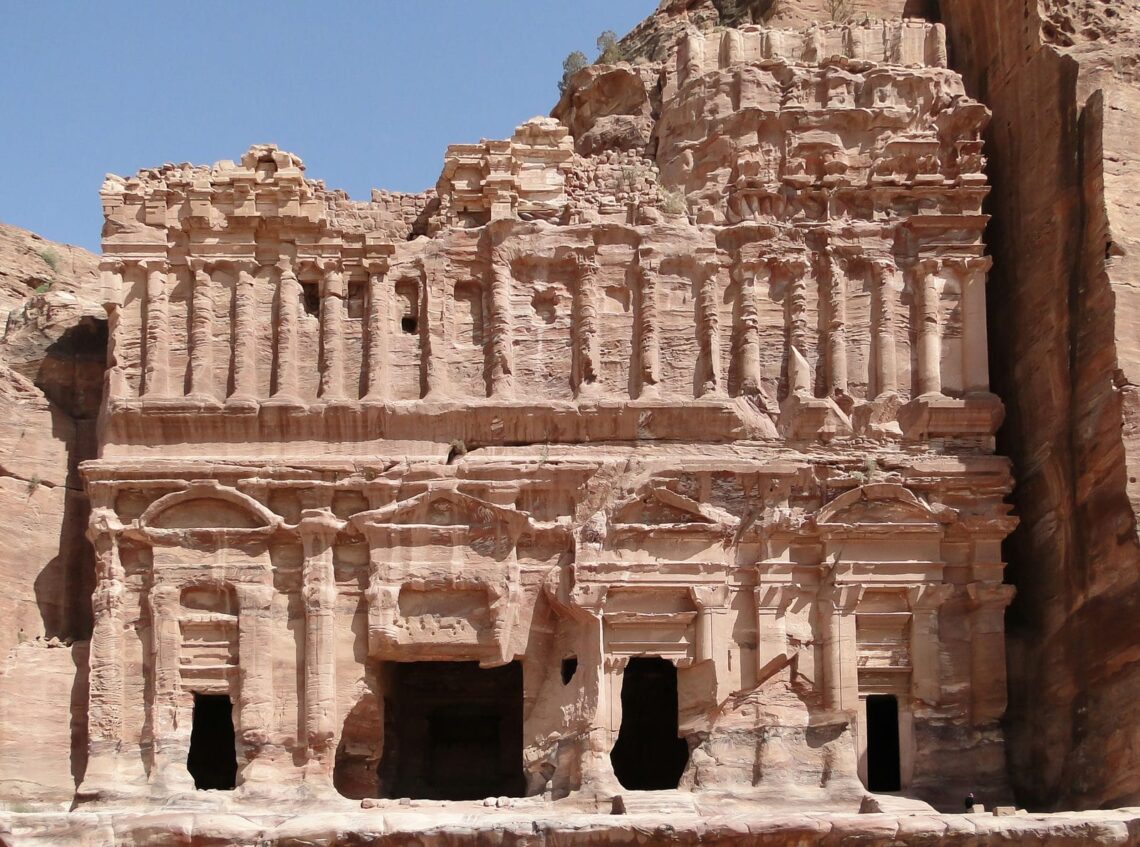
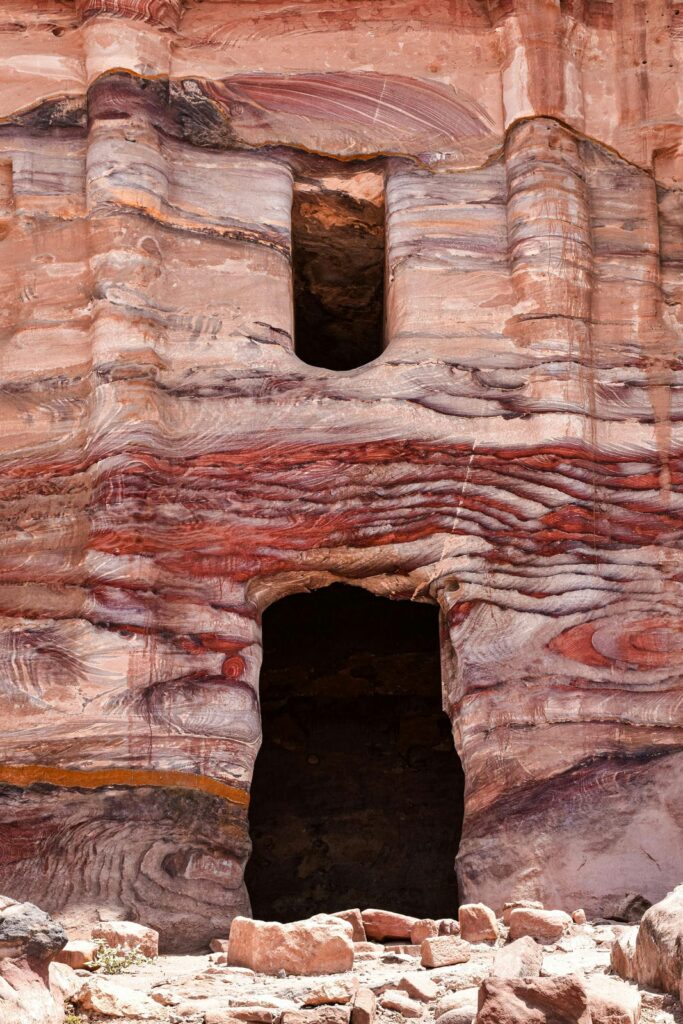
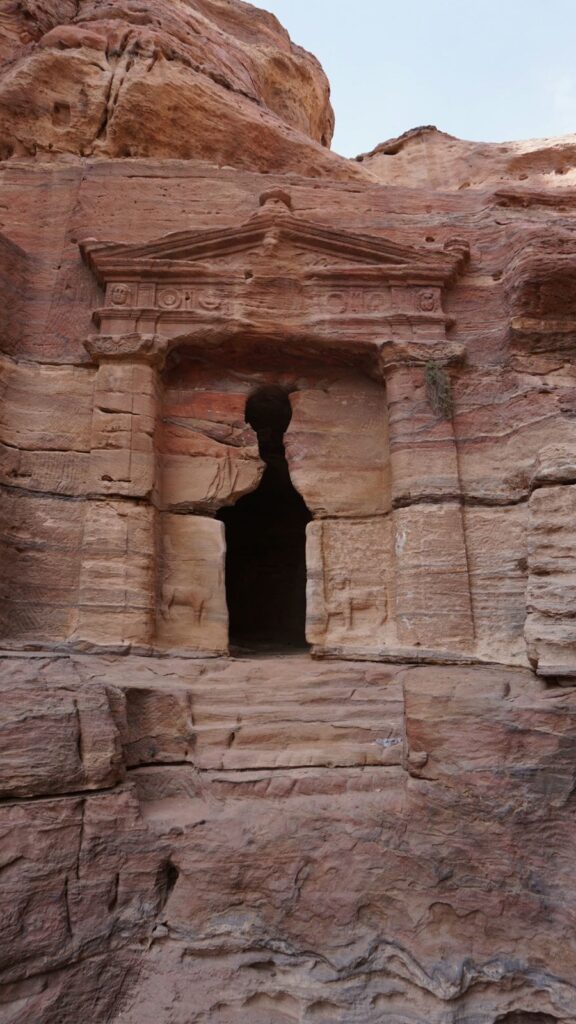
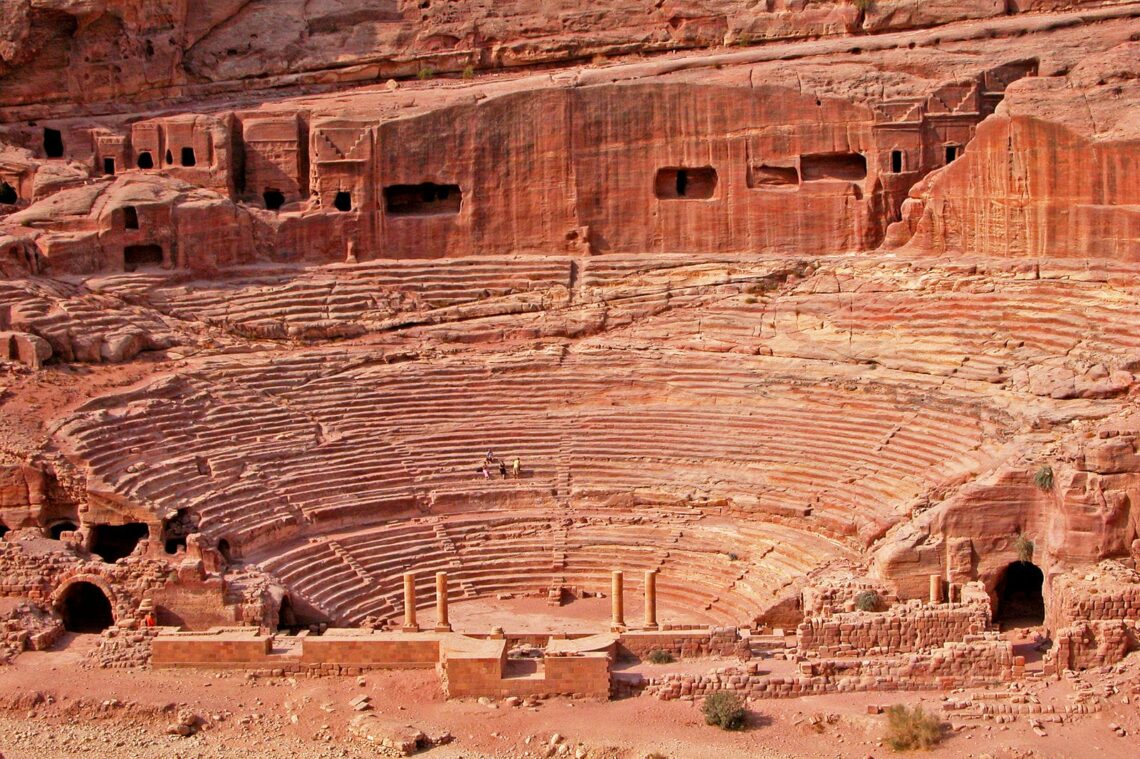
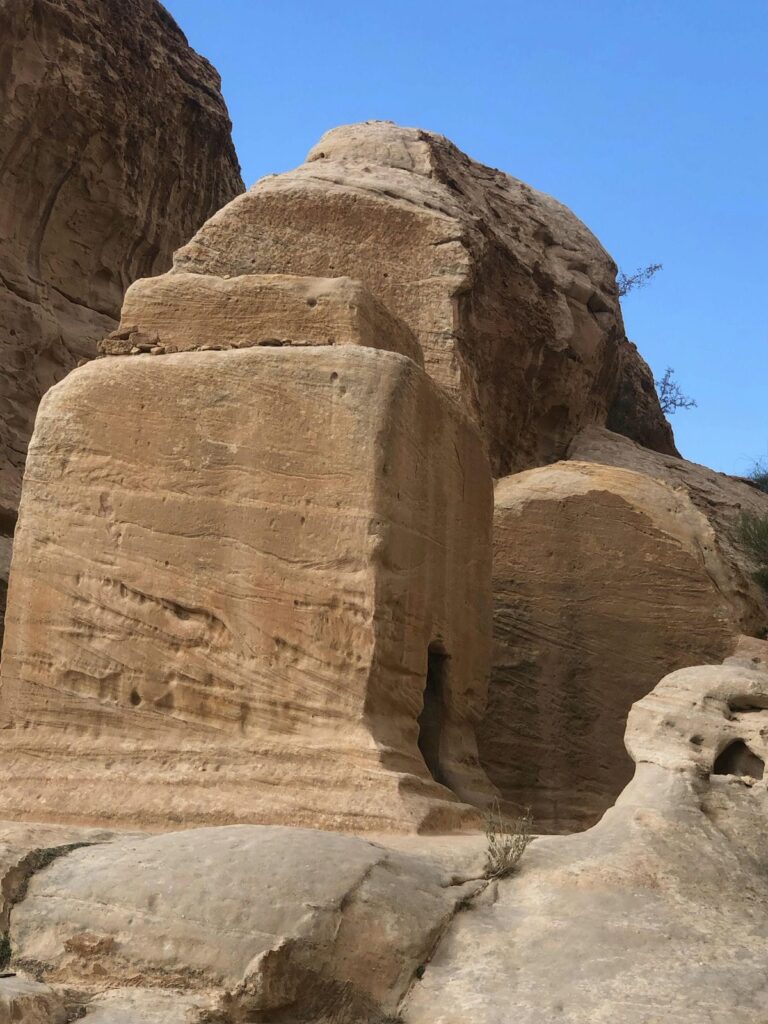
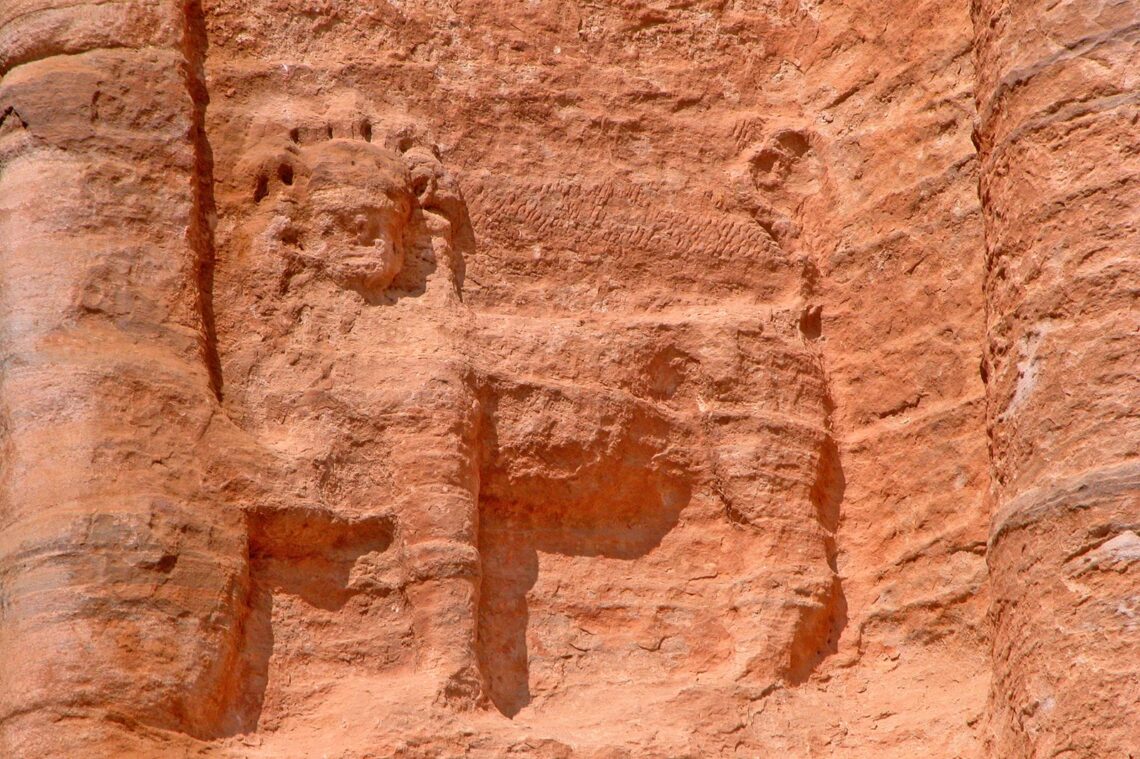
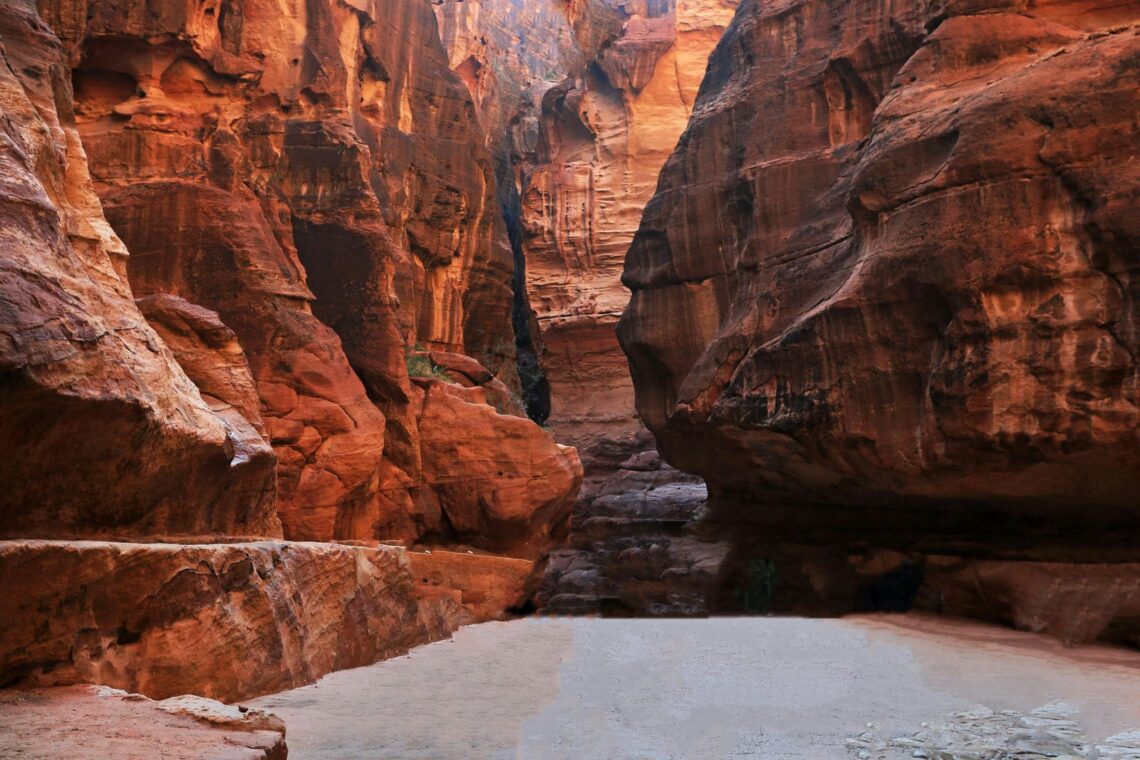
As a vast 2,000-year-old site exposed to harsh desert conditions, Petra’s ongoing conservation requires grappling with issues like wind and water erosion, structural instability threats to carved monuments, uncontrolled tourism, and urban encroachment pressures, as relayed by records. Jordanian authorities work with archaeologists to sensitively preserve the site per international standards while balancing visitor access and asset development. In recent decades, new trails were created to improve visitor navigation and safety throughout Petra’s expansive landscape of carved facades, tombs, canyon passages, and over 800 monuments. Site management aims to add more handrails and warning signs moving forward. Currently, accessibility provisions are still quite limited. Many Jordanian tour companies like Adventure Jordan offer customized private tours catered specifically to architects, cultural historians, archaeologists, designers, or engineers as advertised online.
16. Ruins of St. Paul’s
The Ruins of St. Paul’s refer to the stone facade and elaborate granite staircase that are the surviving remnants of the 17th-century St. Paul’s Church (Igreja de São Paulo). St. Paul’s complex was one of the largest Catholic churches in Asia and an important Portuguese architectural project showcasing a Baroque-style facade ornately carved with Christian and Asian motifs before being destroyed by fire in 1835. The iconic Ruins have become a famous Macau landmark representing the city’s unique East-meets-West history. The Ruins of St. Paul’s are located on a hilltop overlooking the central historic district of Macau. Construction of the original St. Paul’s Church and College began around 1602, soon after the Jesuits arrived in Macau. It took over 20 years to complete the elaborate stone facade and adjacent buildings by around 1637, during Macau’s golden age as a Portuguese trading post linking the West with China and Japan. The structures survived nearly 200 years before being destroyed by fire in 1835. St. Paul’s Church and College were constructed by Portuguese Jesuit missionaries with support from wealthy local Christian converts.
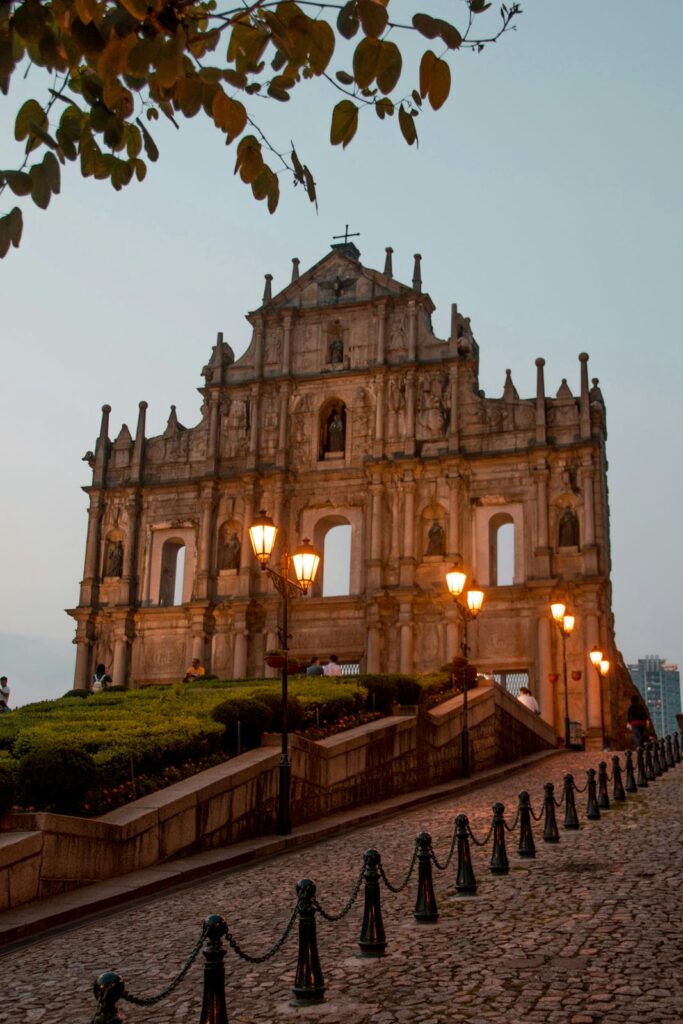
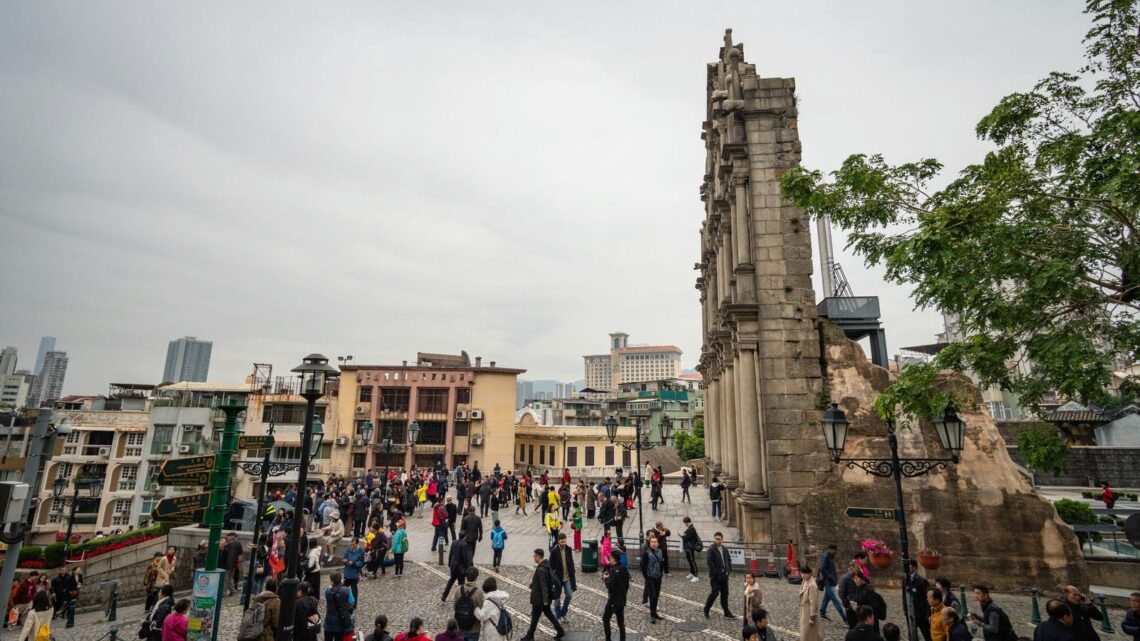
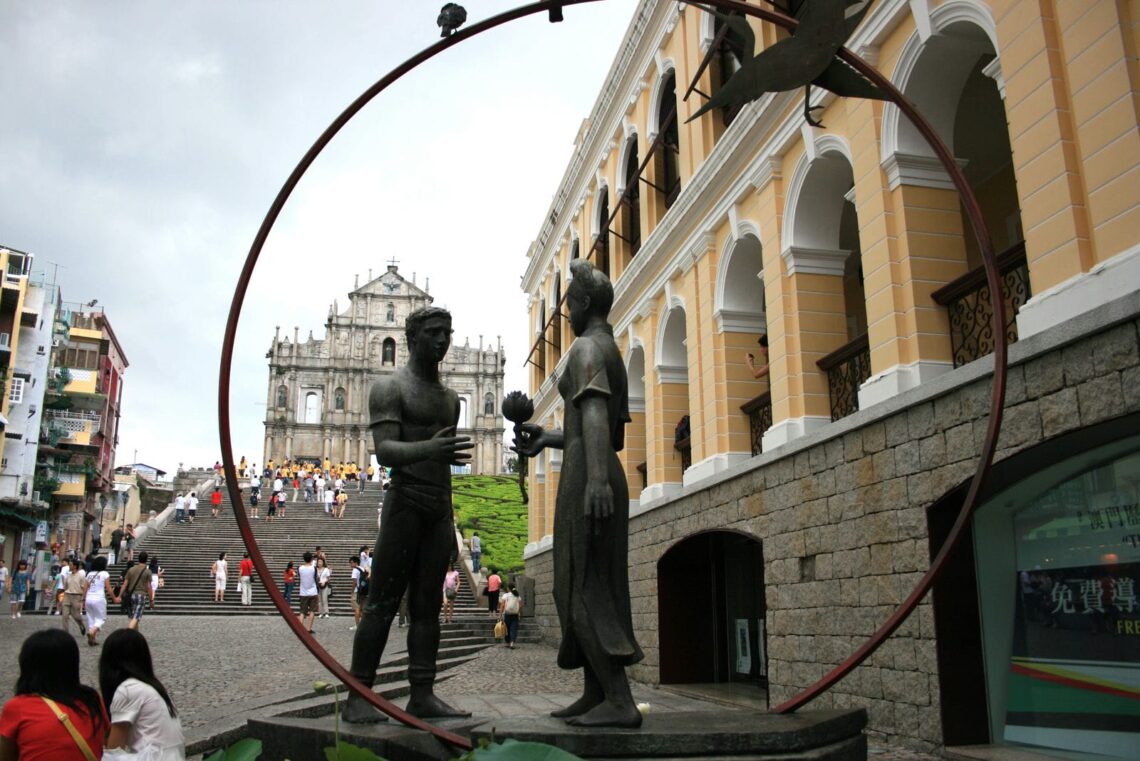
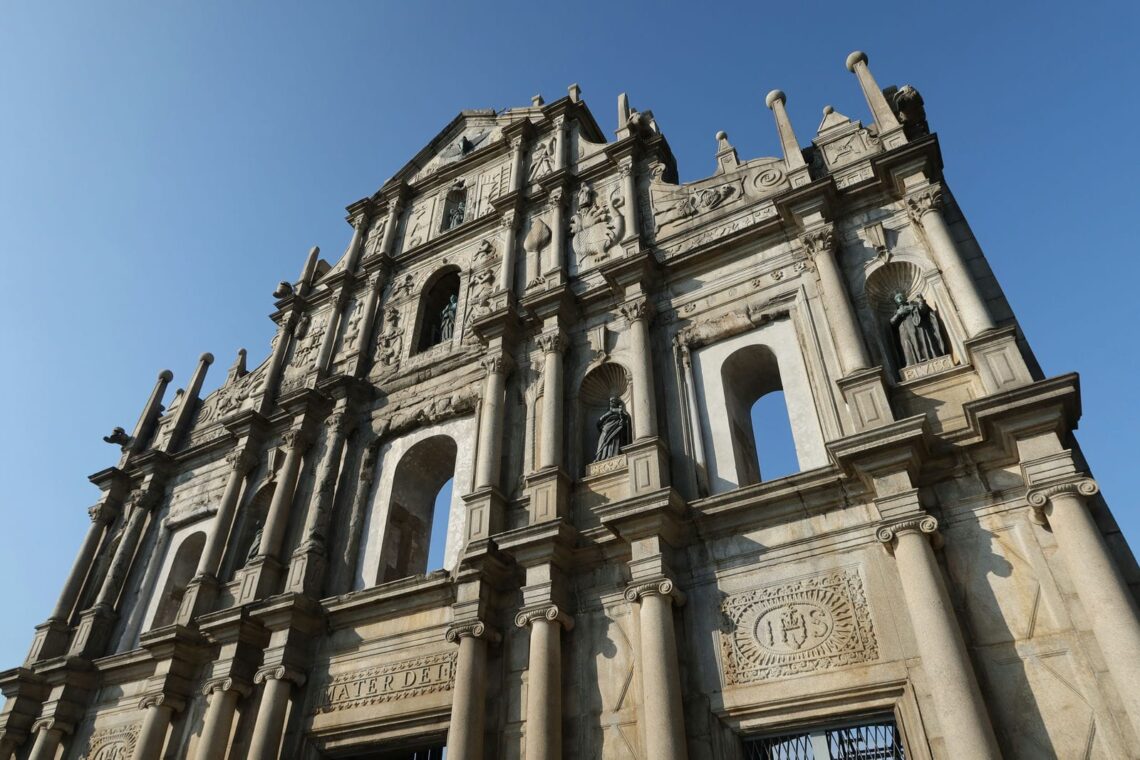
The Ruins of St. Paul’s facades feature an elaborate Baroque style with three tiers divided by slender Corinthian columns, volutes, statuary, bronze plaques, and an apex of Christian symbols. The Baroque facade references architectural styles popular across Counter-Reformation Europe during the 17th century. The grand front staircase preceding the Ruins creates a shaded processional approach from the tree-lined Rua de São Paulo below, offering a sheltered respite before the expansive plaza. The Ruins site continues to welcome millions of visitors through a symbolic historical gateway into Macau’s unique heritage, fusing colonial architecture with Asian spiritual iconography. The Ruins of St. Paul’s signaled an early flowering of what became known as the “Chinese Baroque” style in Macau and the Philippines, where local artisans interpreted European motifs through their cultural lens, creating hybrid buildings.
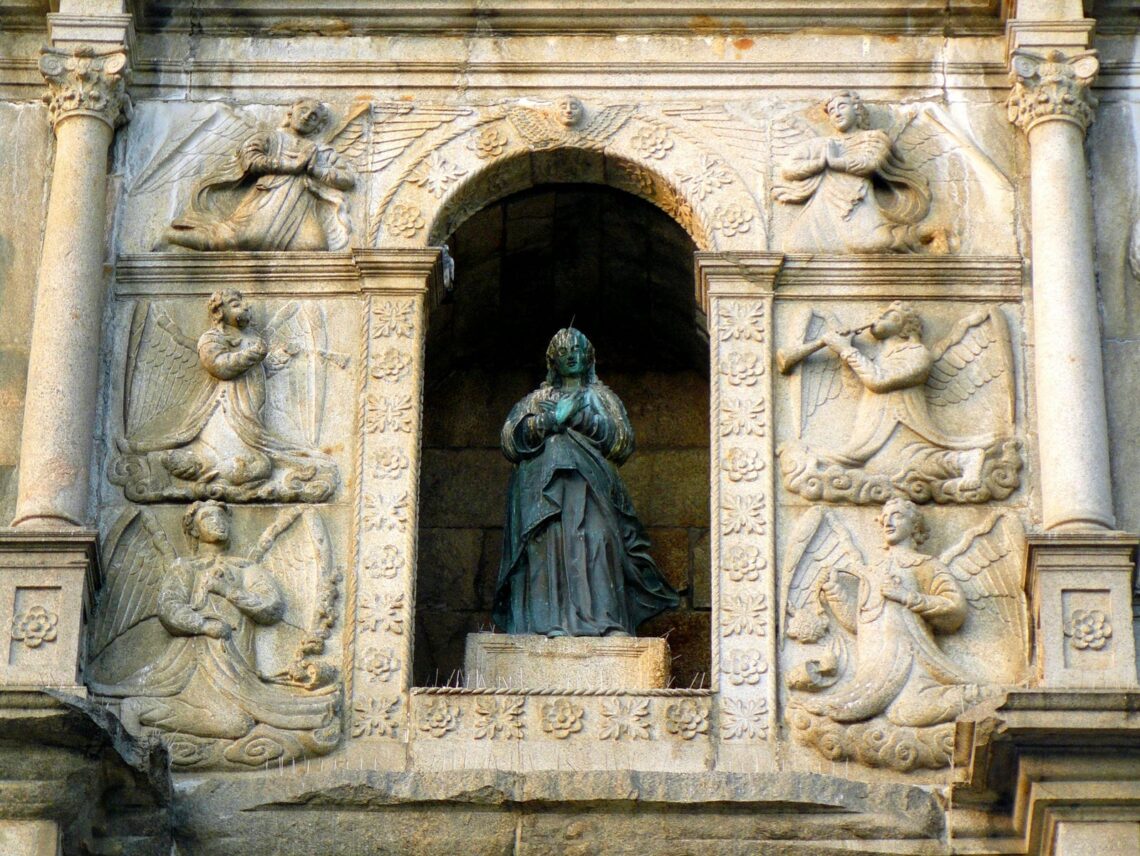
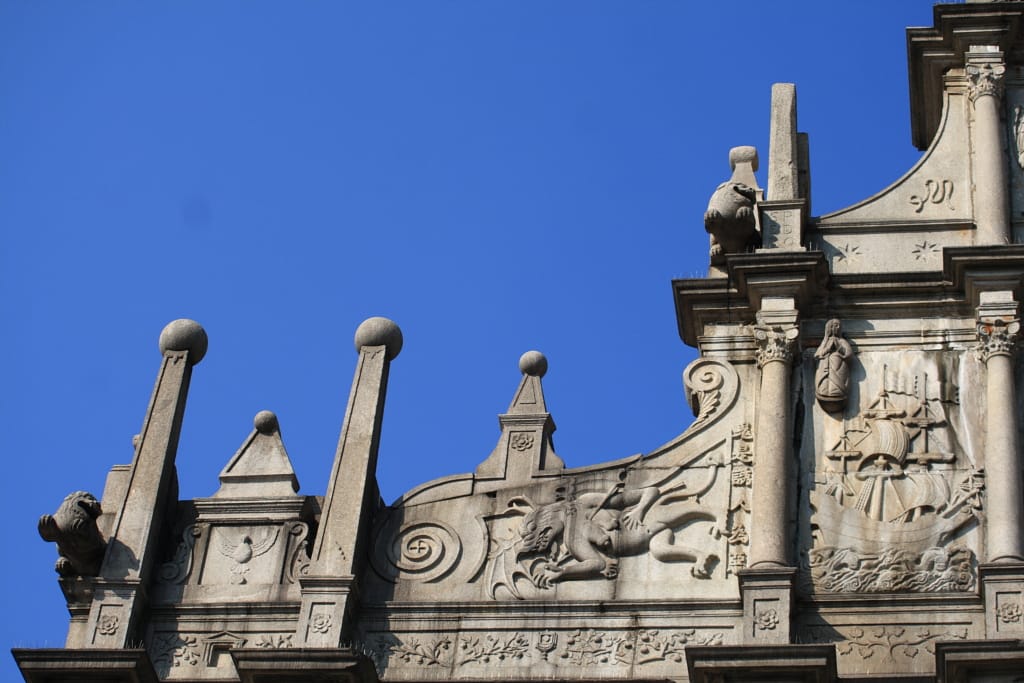
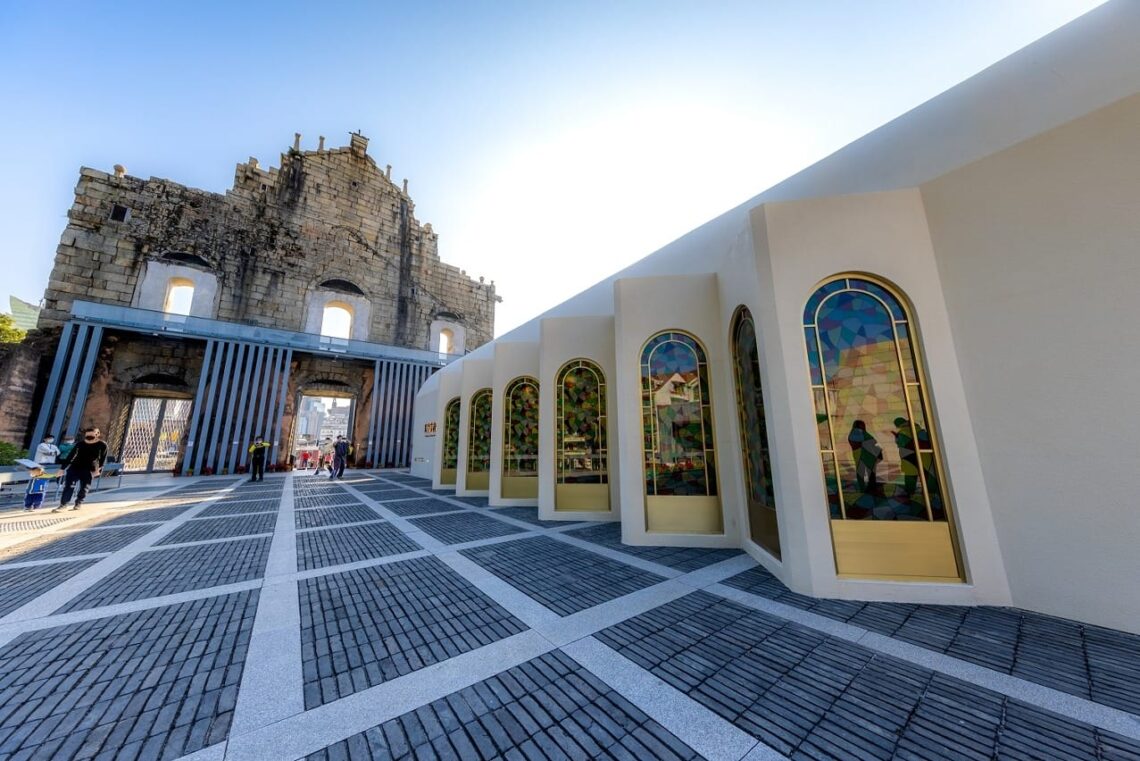
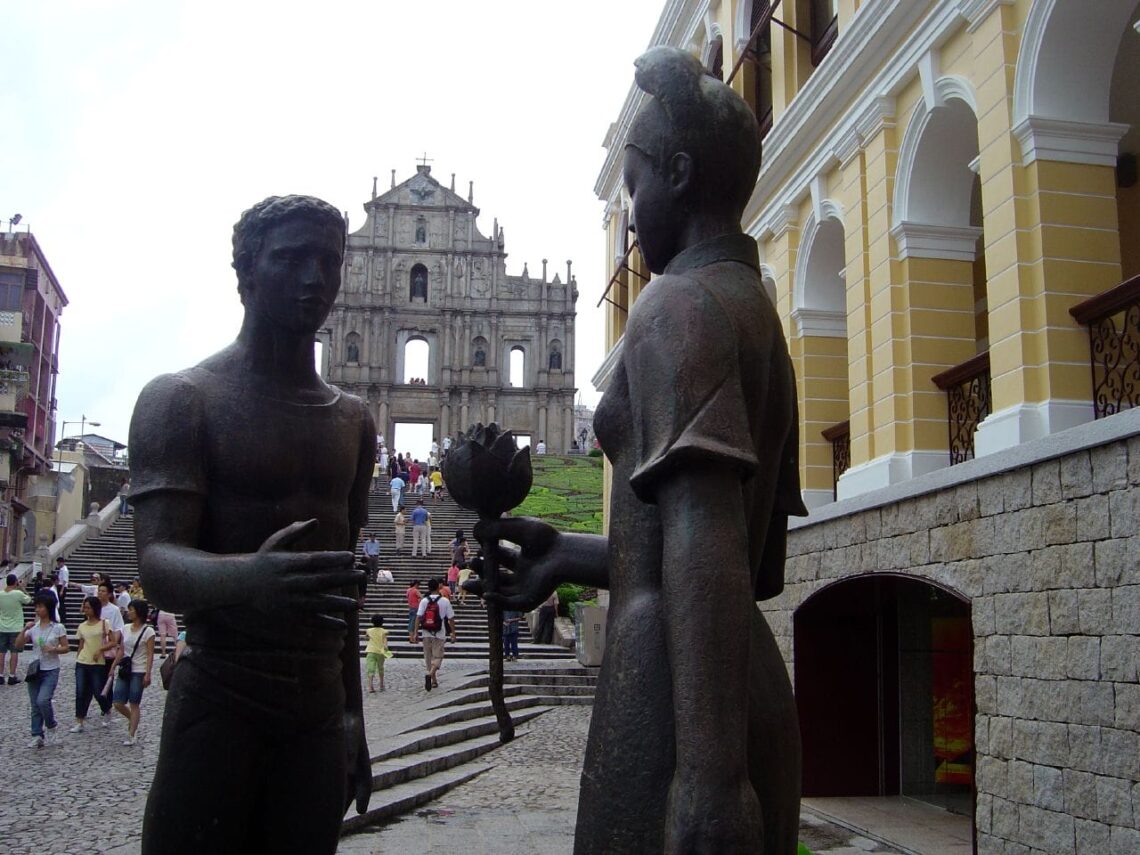
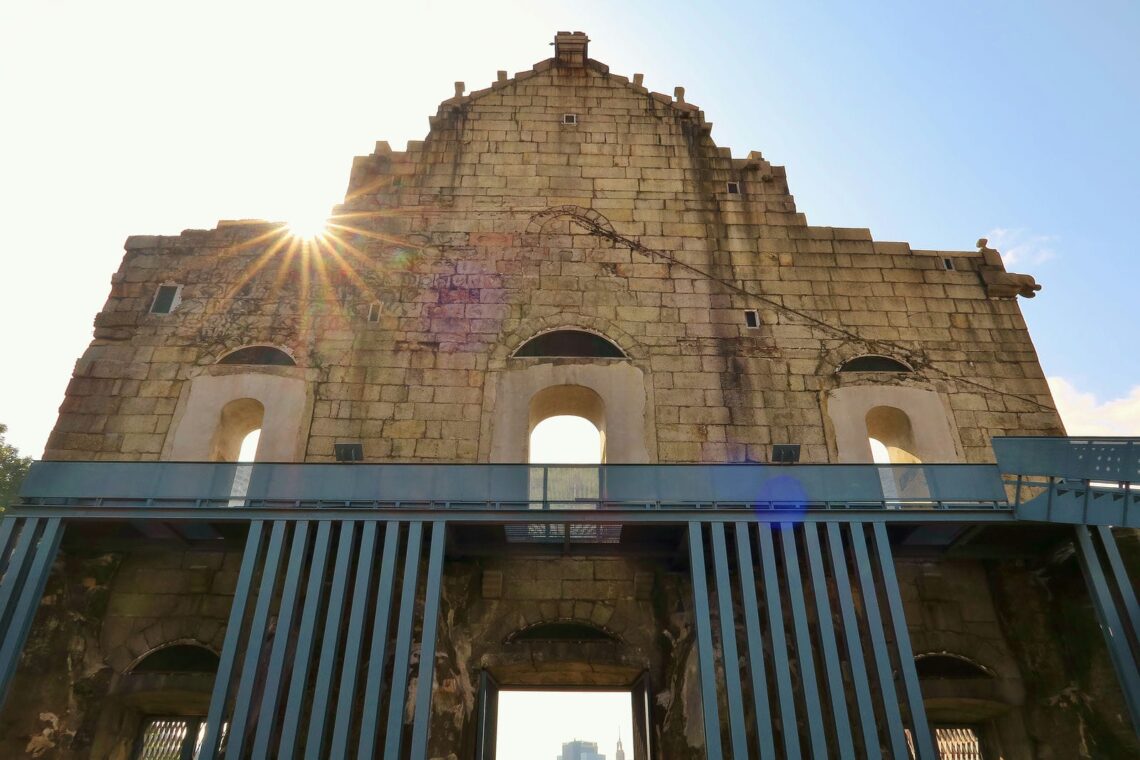
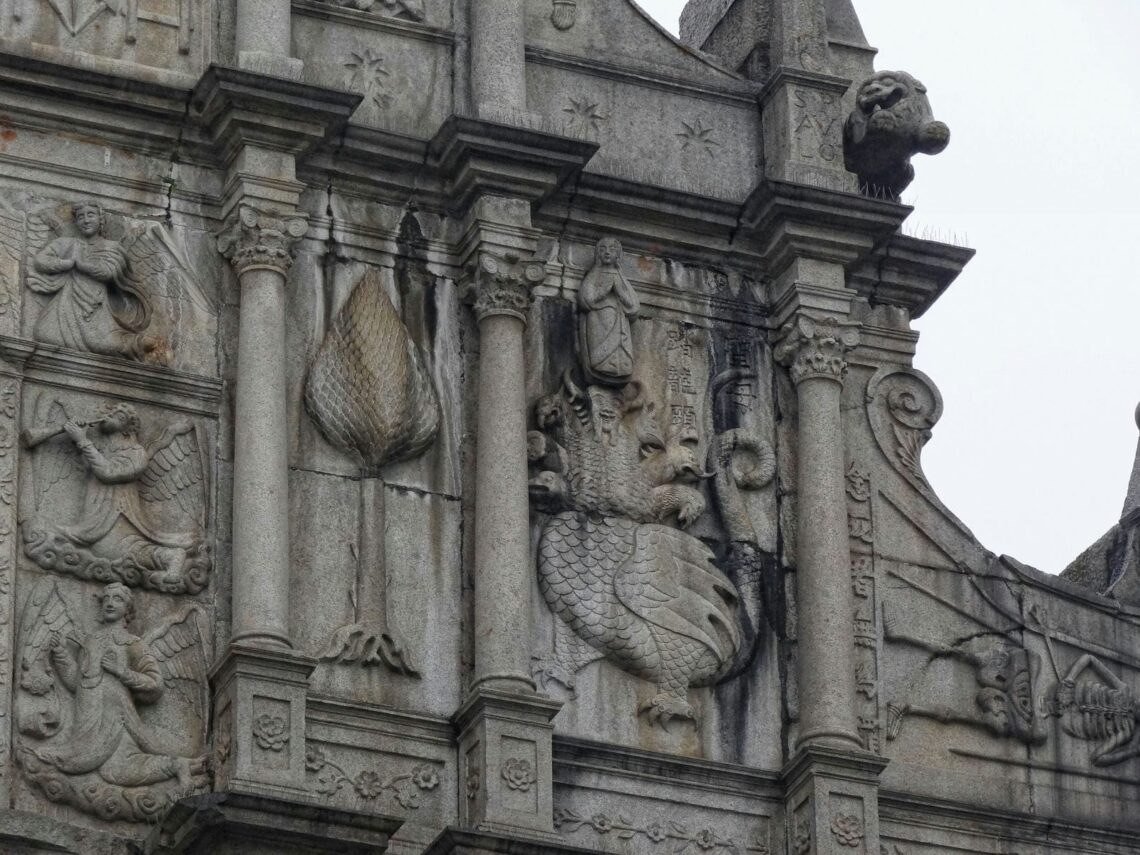
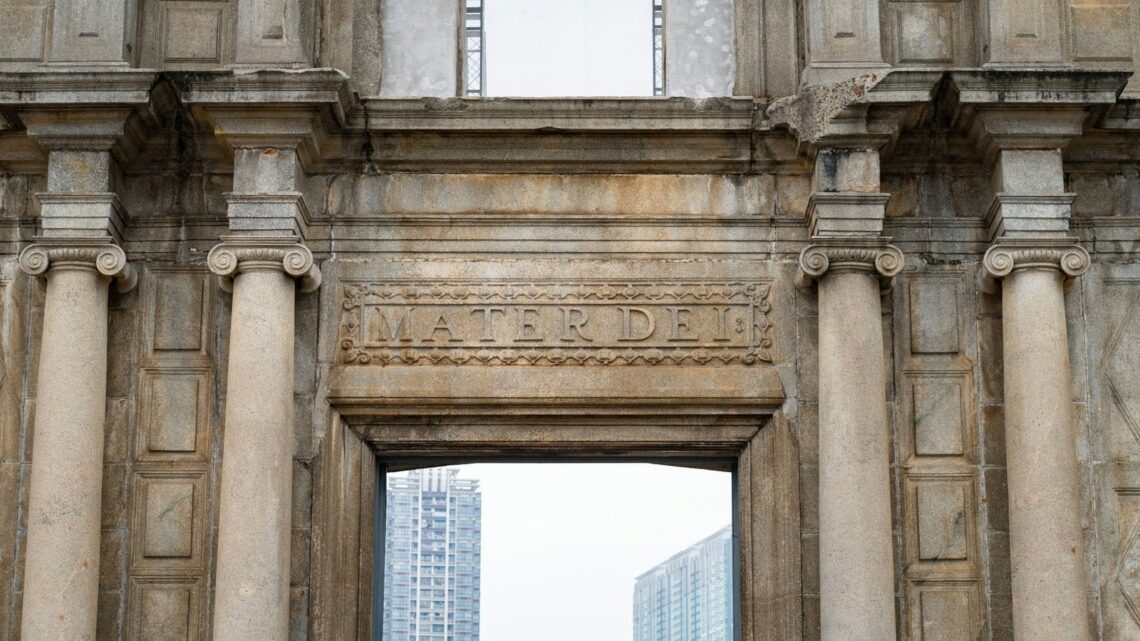
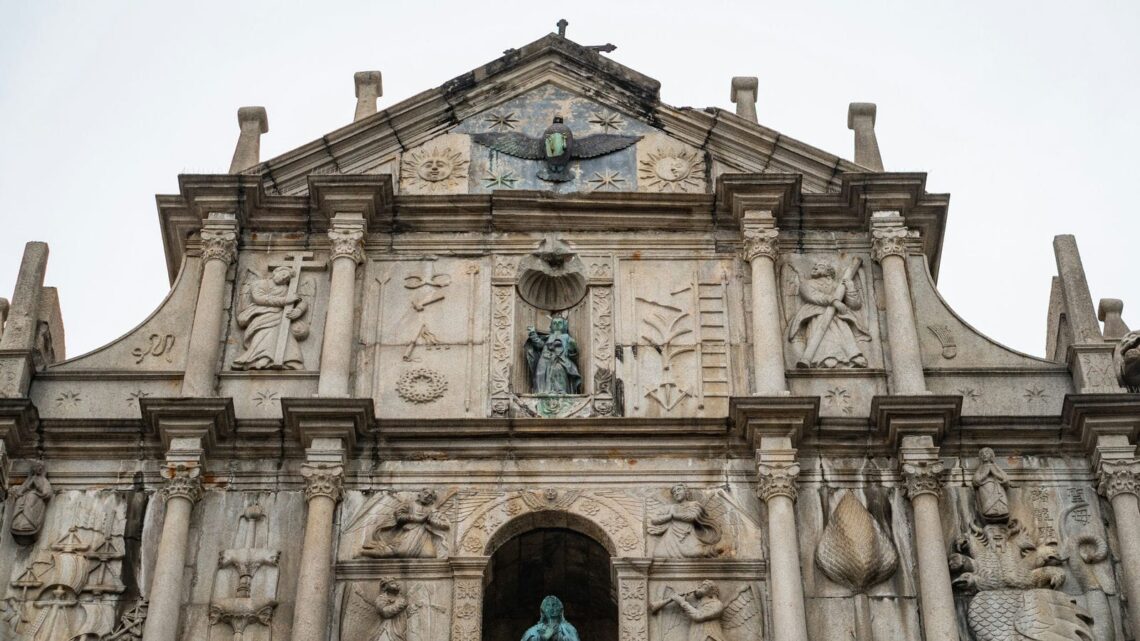
Restoration in the Ruins of St. Paul has focused on stabilizing and preserving these structures against weathering and wear using appropriate materials and techniques that maintain historical integrity. Challenges involve keeping surfaces clear of overgrown vegetation, inhibiting water ingress into masonry, and protecting carved details from deterioration over time and heavy visitor foot traffic. The Ruins site features railings, warning signs, and night lighting but currently has limited accessibility options. Potential future efforts may sensitively modify flanking stairs with subtle ramps, railings, and contrast markings to aid vision-impaired visitors while minimizing visual impact on the facade’s heritage aesthetics as recommended by ICOMOS principles. Macau tourism companies like Walk in Macau offer exclusive architect-guided tours of the Ruins of St. Paul’s tailored specifically for architecture professionals, students, and building aficionados as advertised.
17. Lotus Temple
The Lotus Temple, located in Delhi, India, is a Bahá’í House of Worship dedicated in December 1986 that has become one of the most recognizable buildings in India. Its distinctive lotus flower shape constructed of 27 free-standing marble “petals” Arranged in three groups has made it a prominent architectural landmark. Like all Bahá’í Houses of Worship, the Lotus Temple is open to people of all faiths or backgrounds to pray and meditate. The central hall can seat up to 2,500 people. Over 70 million have visited since its opening, drawn by the striking design incorporating themes of purity, beauty, and peace central to the Bahá’í belief in the spiritual unity of religions. Construction of the Lotus Temple began in 1976 when architect Fariborz Sahba was selected to design it. After extensive travel in India and working on the design for about three years, the building started on the temple in 1980. It was constructed in stages and completed over six years in 1986 when it opened to the public after a December dedication ceremony. The structural engineering was undertaken by the UK firm Flint and Neill, along with Indian engineer D.P. Kukreja. The general construction work was carried out by the Indian contracting company ECC Construction Group of Larsen & Toubro Limited under Sahba’s oversight.
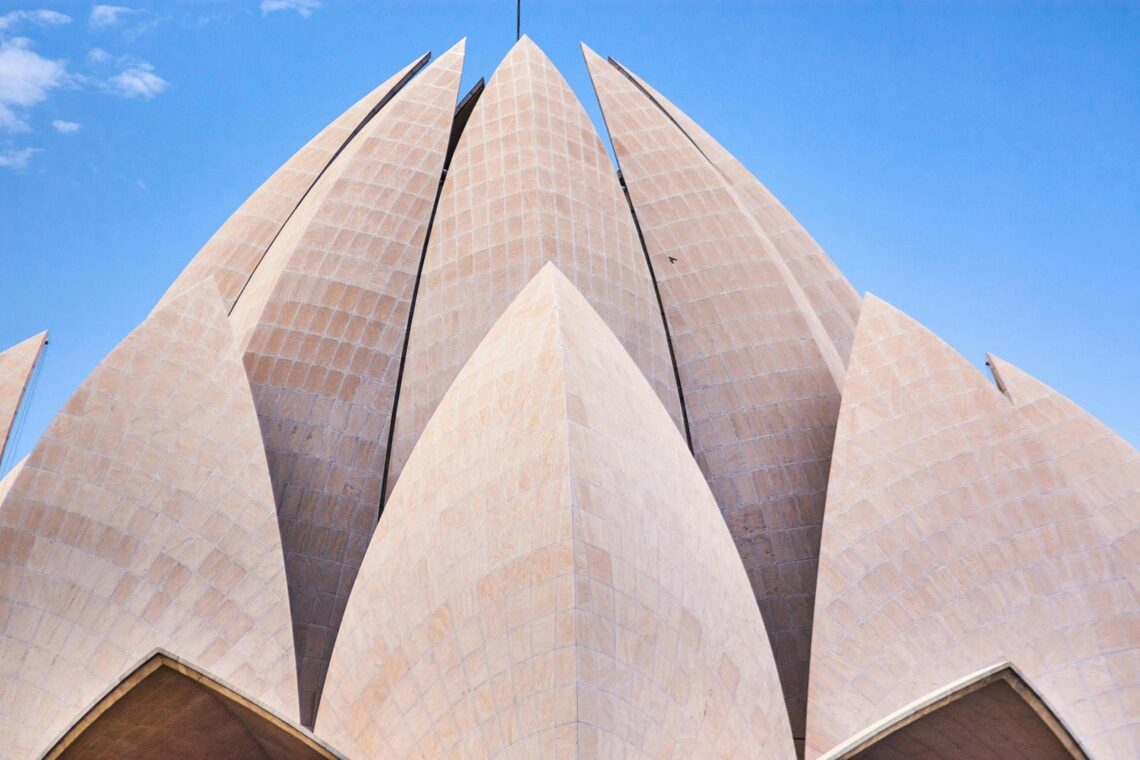
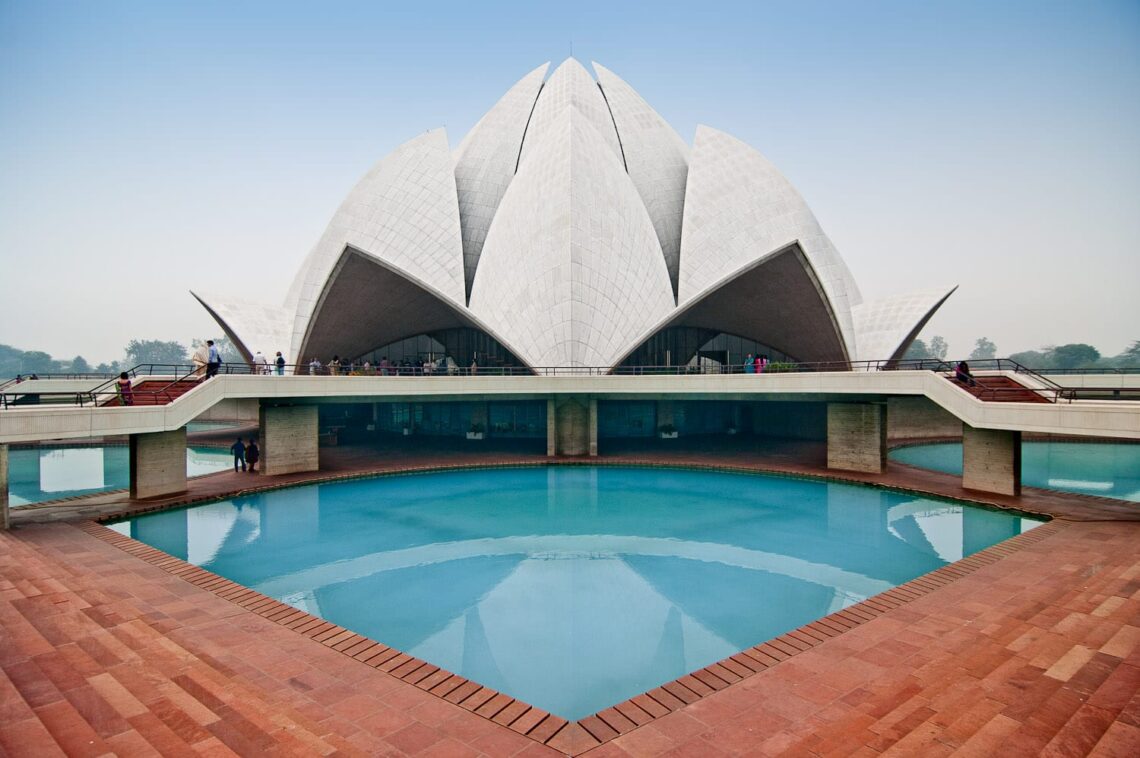
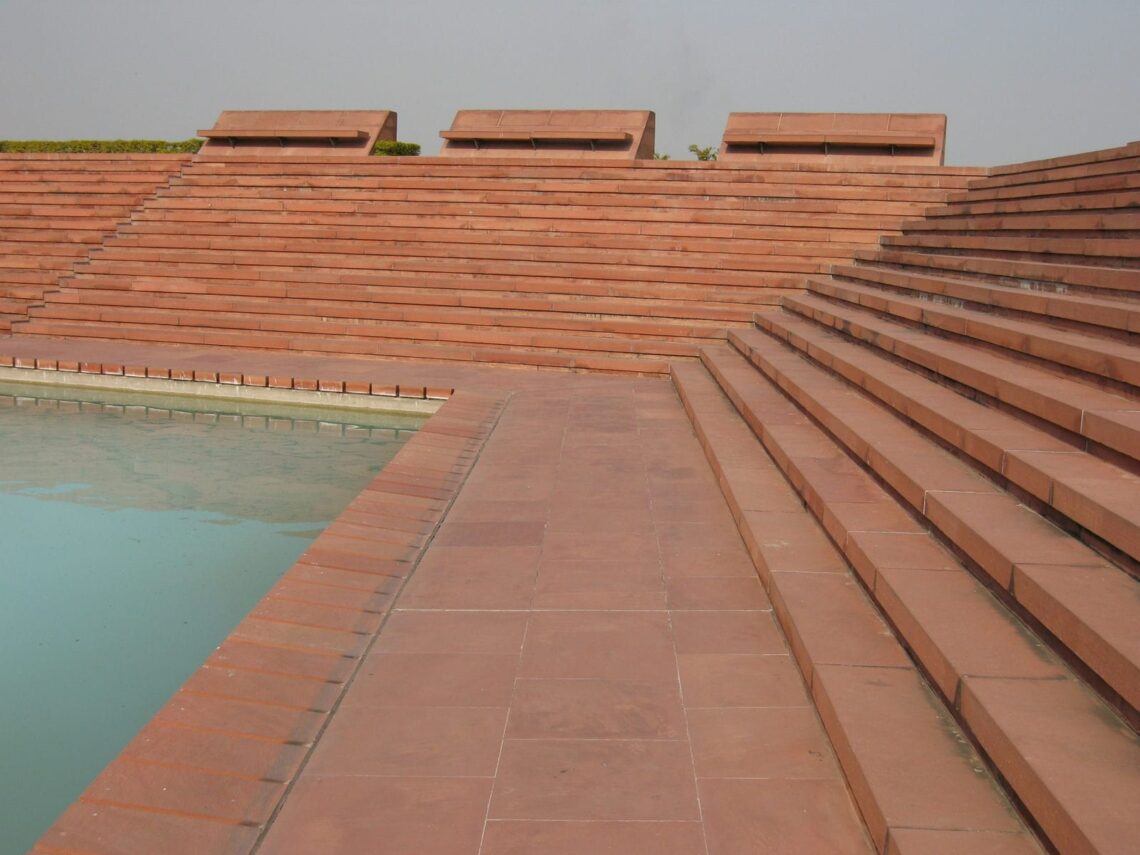
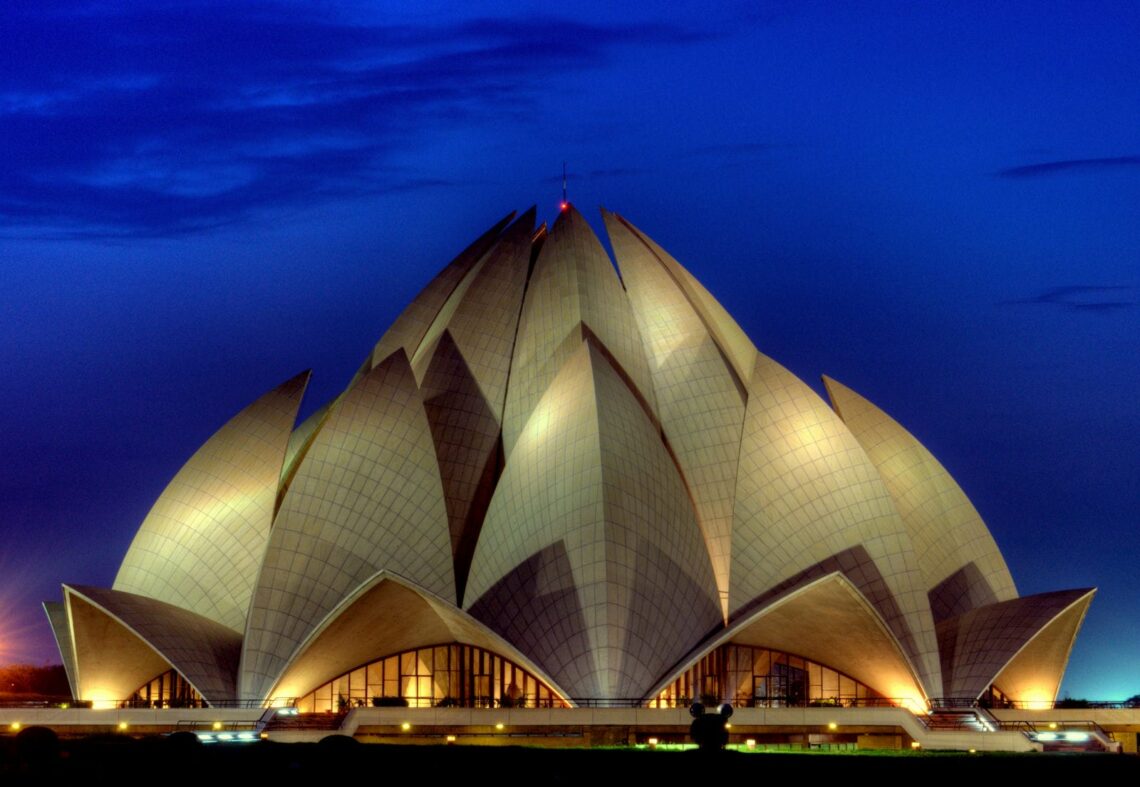
The Lotus Temple features an expressionist style of architecture marked by its bold, non-traditional lotus shape, comprised of free-flowing asymmetric white marble petals. The Lotus Temple’s design subtly connects to India’s long artistic and religious association with the lotus flower spanning history. The nine-sided circular shape also integrates traditional Bahá’í architectural themes. The petals create a lacy brise-soleil effect shading interiors. Skylights filter light through the glass apex. External spotlights accentuate the form’s white marble, dramatizing its lotus shape, while the ponds encircling it reflect ambient light. The Lotus Temple signifies a modernist structural engineering achievement pushing concrete and marble into an unconventional form, symbolizing peace. As an internationally famous Indian building, it advanced non-western representation in global architecture dominated by Eurocentric modernism as assessed by scholars. Its acclaim continues advancing integrated religious and cultural architectural themes.
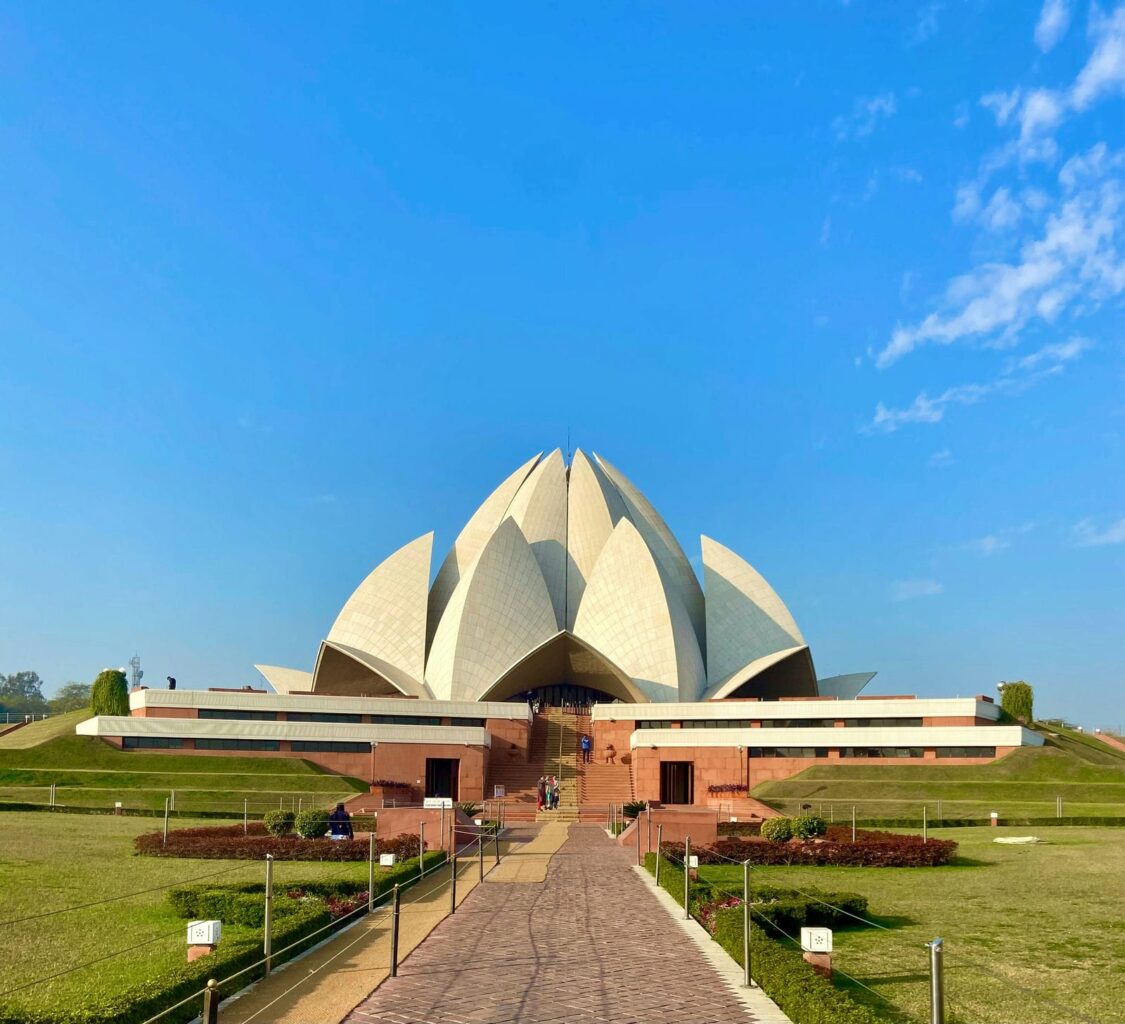
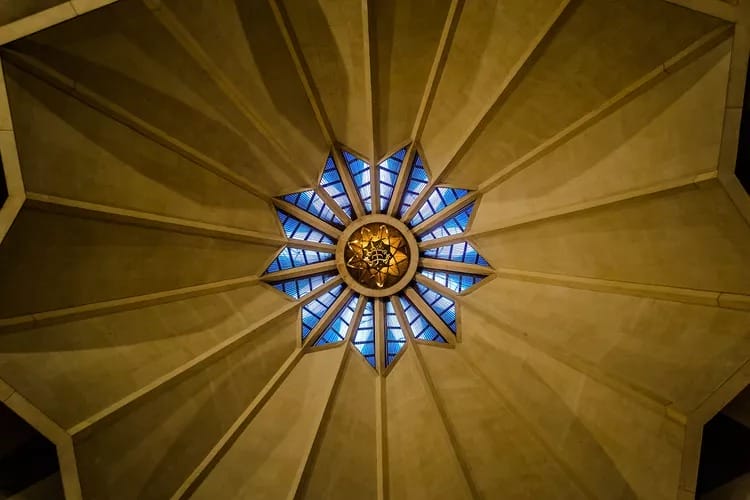
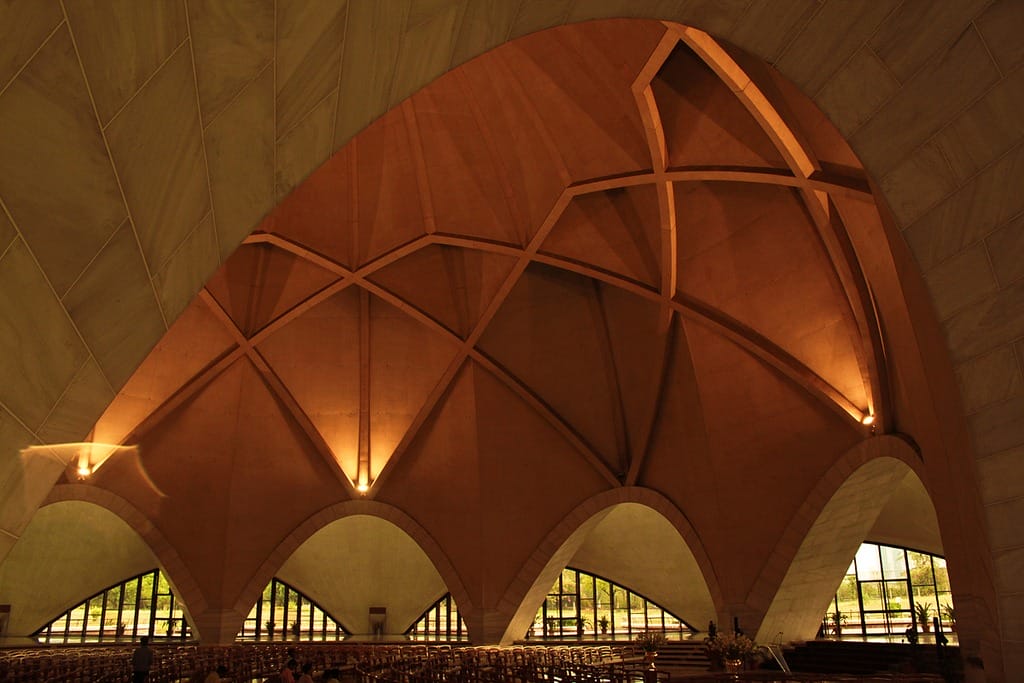
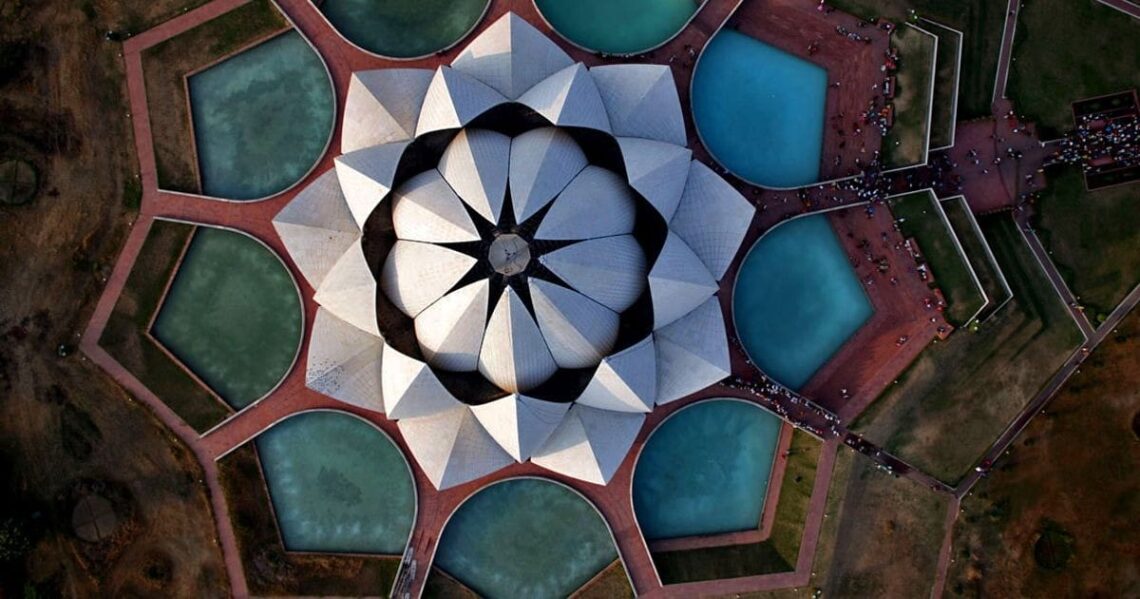
As a modern landmark completed in 1986, the Lotus Temple has required minimal extensive restoration beyond routine maintenance and facility upgrading to accommodate heavy visitor traffic without compromising architectural integrity. Potential long-term challenges include preserving white marble surfaces exposed to Delhi’s extreme pollution and weather conditions over decades. The Lotus Temple incorporates basic precautions like fire suppression systems, emergency exits, and staff assistance. Recent upgrades introduced ramps, accessible washrooms, and medical facilities to improve disabled access. Private Lotus Temple tour options tailored for architects, design students, engineers, or architectural interests are offered by various Delhi tour companies. These include technical questions regarding the temple’s structural engineering, geometry, materials, seismic resistance, and expressionist architectural style from expert local guides well-versed in its construction.
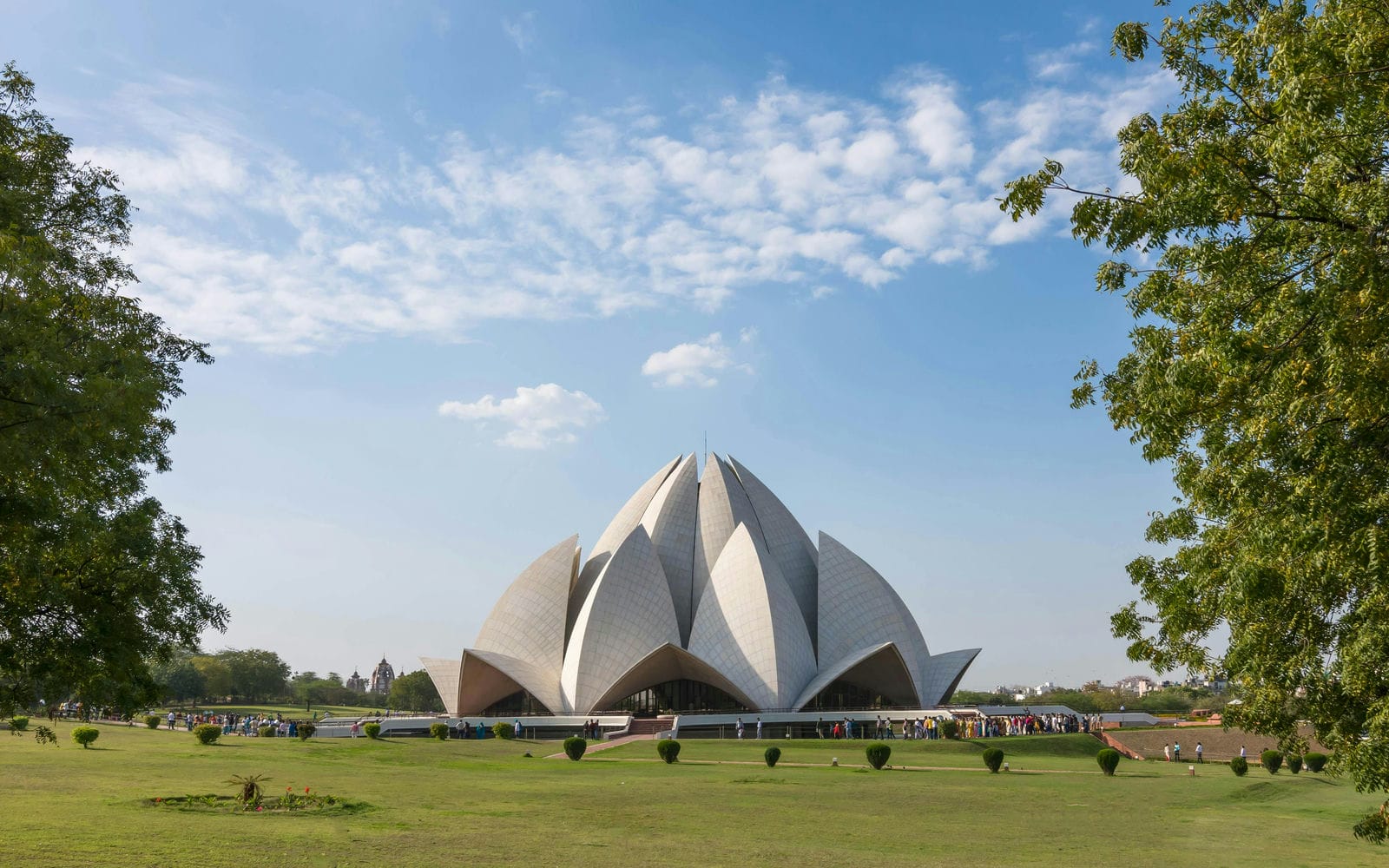
18. Konark Sun Temple
The Konark Sun Temple, located in Konark, Odisha, India, is a 13th-century Hindu temple dedicated to the sun god Surya. This architectural wonder was built in the shape of the sun god’s chariot drawn by seven horses. Its name comes from the Sanskrit words Kona (corner) and Arka (sun). The construction of the Konark Sun Temple began around 1250 CE under the reign of King Narasimhadeva I of the Eastern Ganga Dynasty. It likely took around 16 years to complete by around 1266 CE through the efforts of thousands of skilled architects, masons, and artisans sourced locally and from across India. The temple endured for over 600 years before falling into disrepair. Restoration efforts began during the early 20th century. The Konark Sun Temple was envisioned and commissioned by King Narasimhadeva I of the Eastern Ganga Dynasty around 1250 CE, as relayed across sources. He mobilized teams of architects, engineers, and artisans from across the kingdom and beyond to construct this architectural wonder as a grand spiritual complex honoring the Hindu sun god Surya.
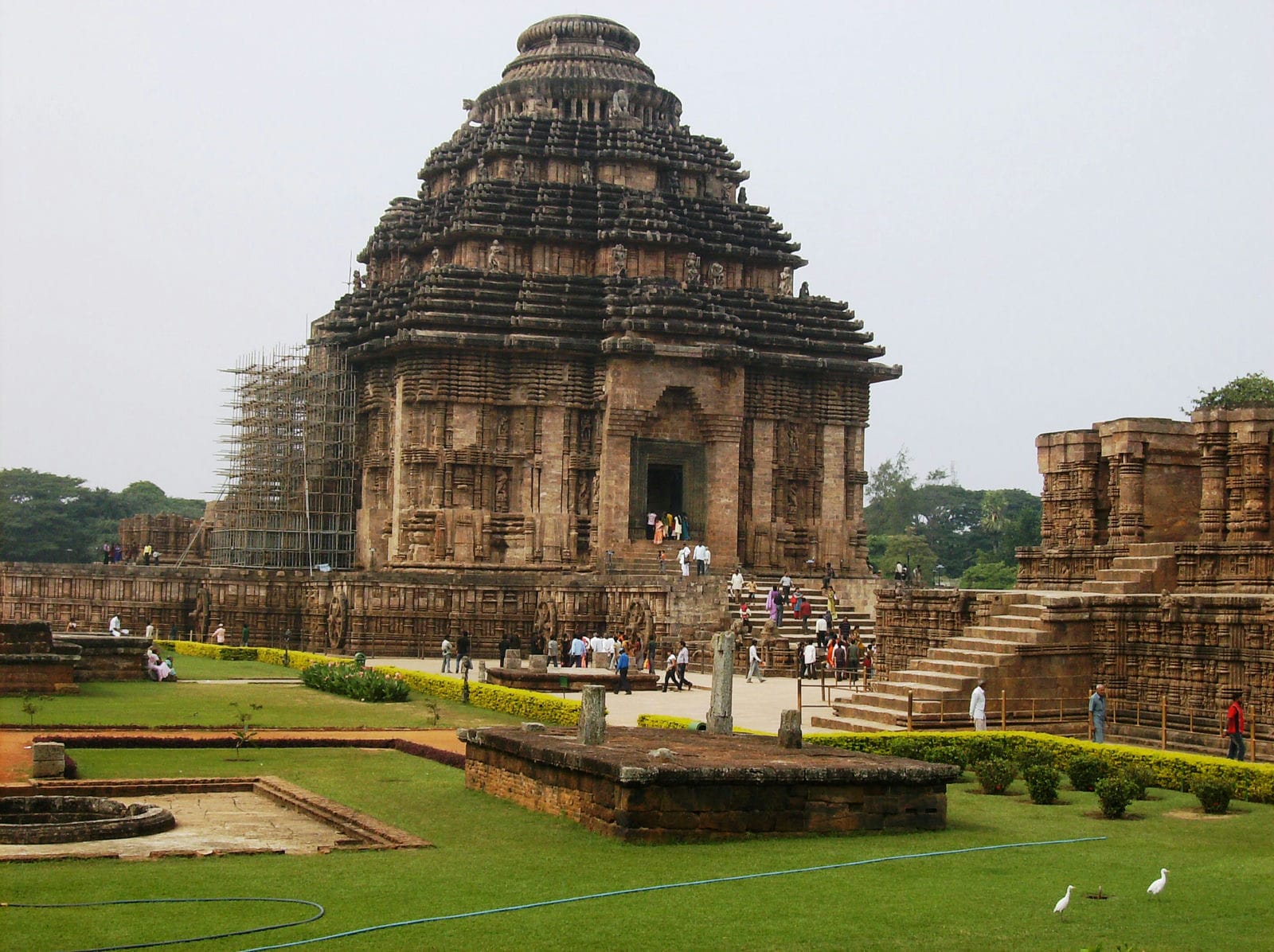
The Konark Sun Temple exemplifies the unique Kalinga style of Hindu temple architecture that flourished under the Eastern Ganga Dynasty, integrating a grand chariot-shaped sanctuary, extensive stone carvings, and structural dynamics like a pyramidal roof with horizontal tiers. Konark Sun Temple integrates distinctive elements of Kalingan sacred architecture like carved stone wheels, ornamentation, and a sanctum topped with a pyramidal roof, culminating in a round stupa. The temple’s east-west orientation allows the rising sun to strike the entrance and sanctum. The interior spaces likely used adjustable stone lanterns. Konark Sun Temple’s elaborate solar-aligned architecture and iconography reflect the cultural significance of sun worship in ancient Odisha and Eastern India, as shared across sources.
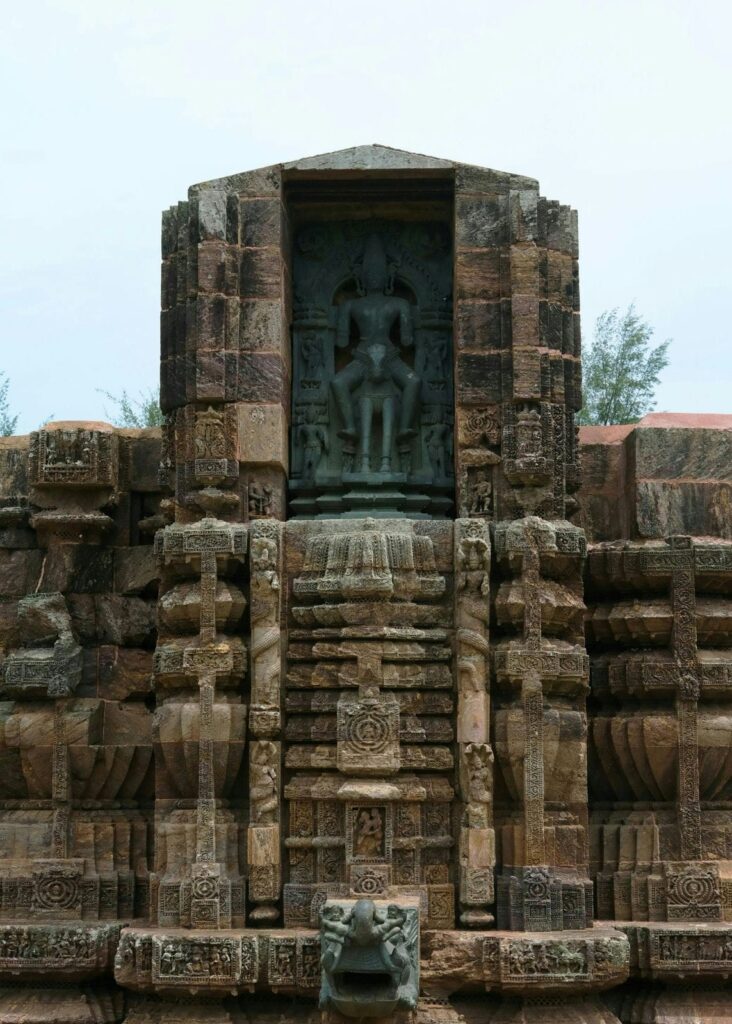
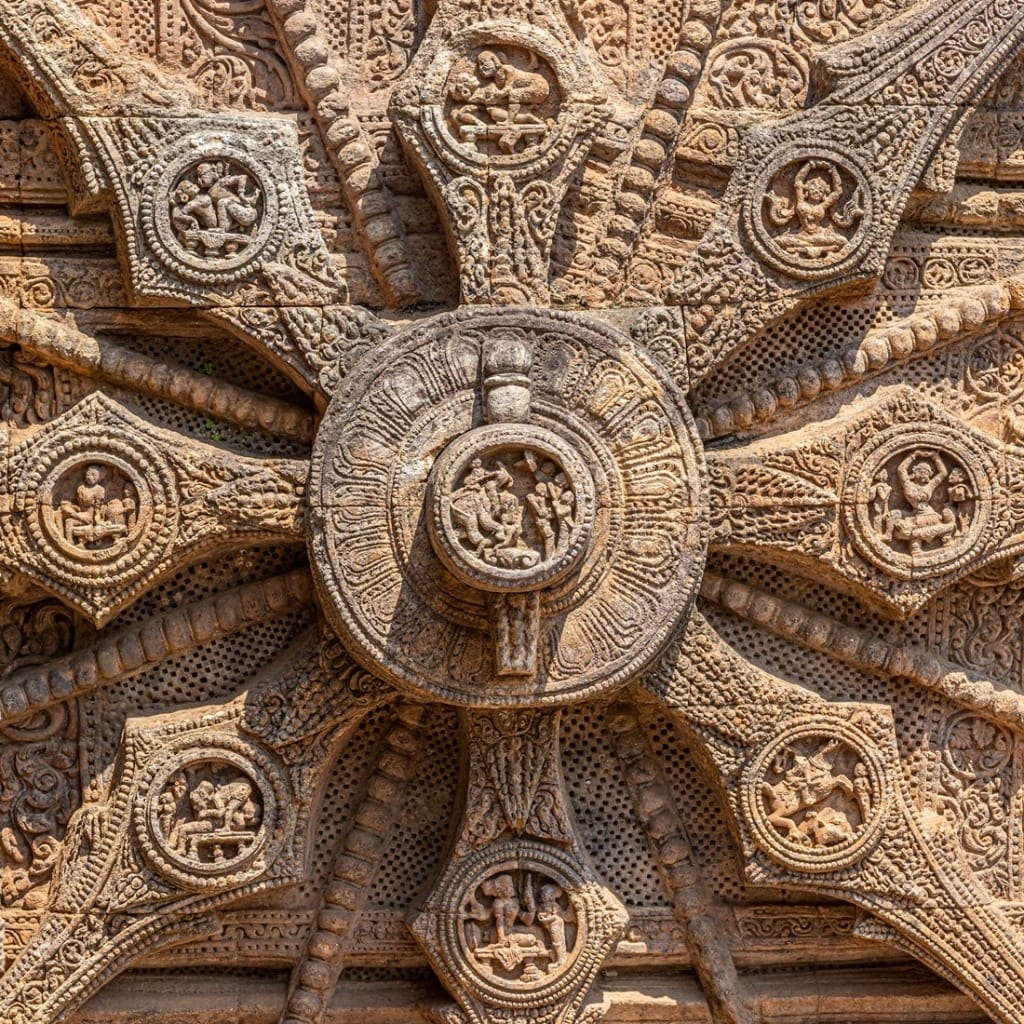
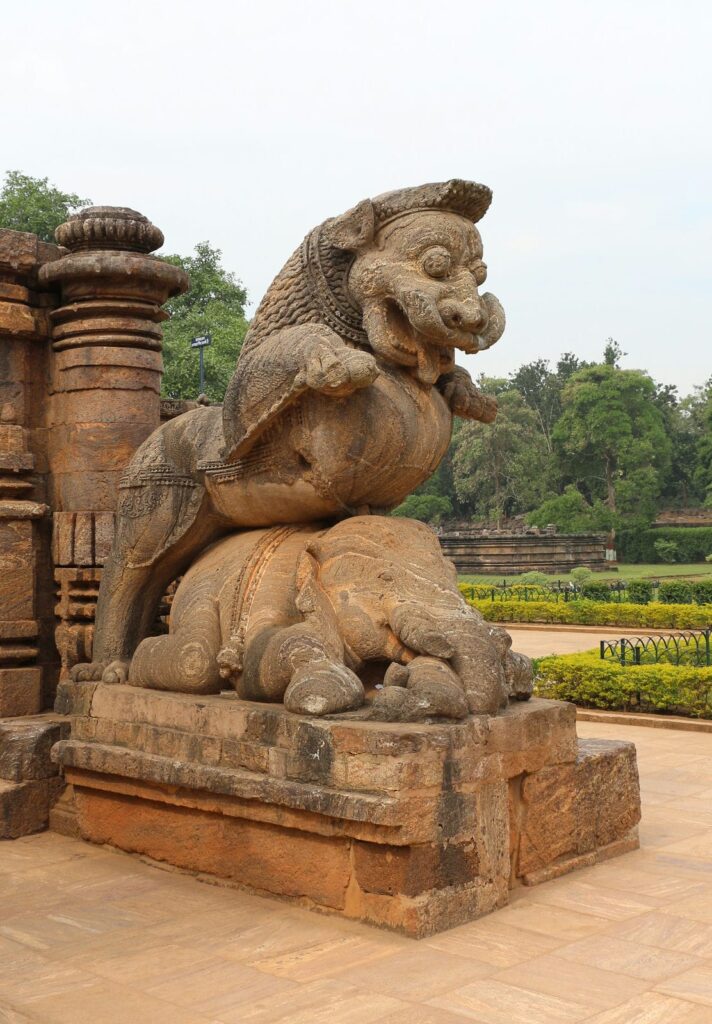
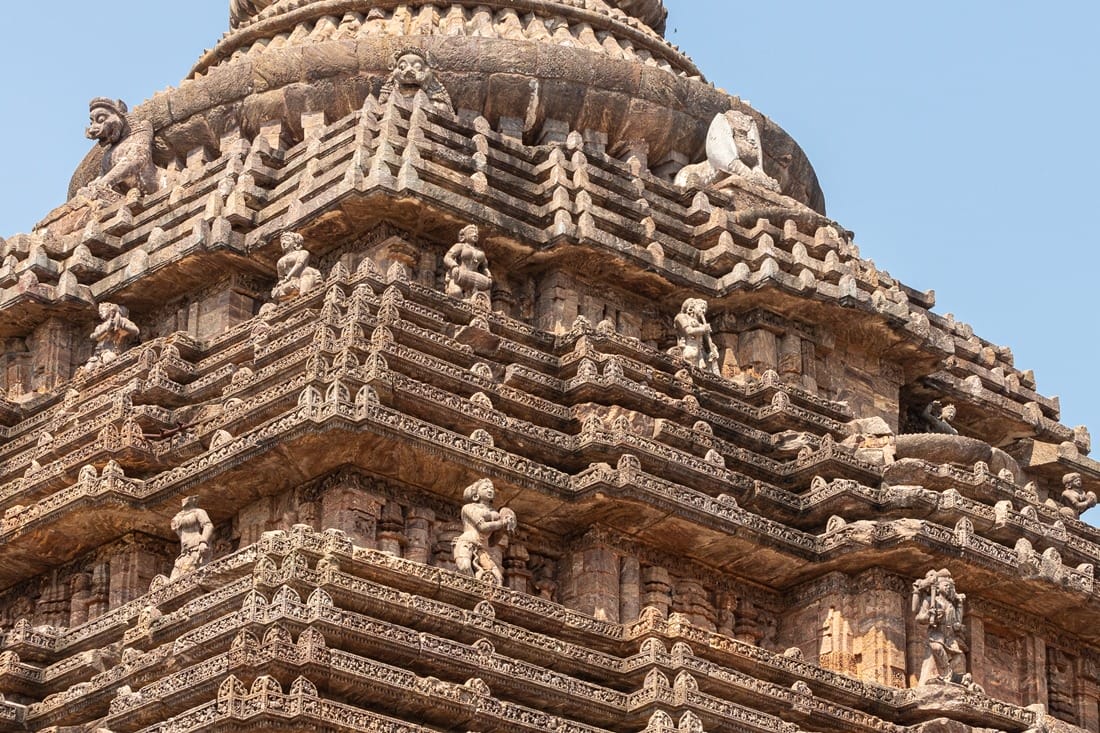
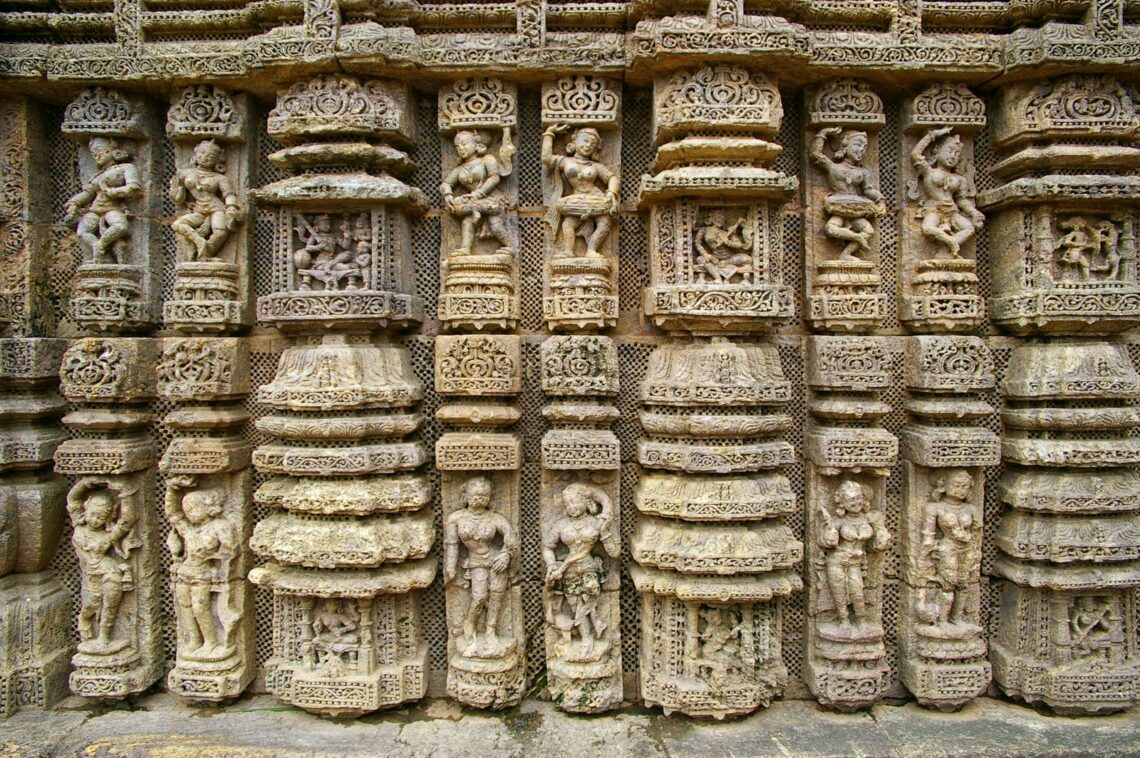
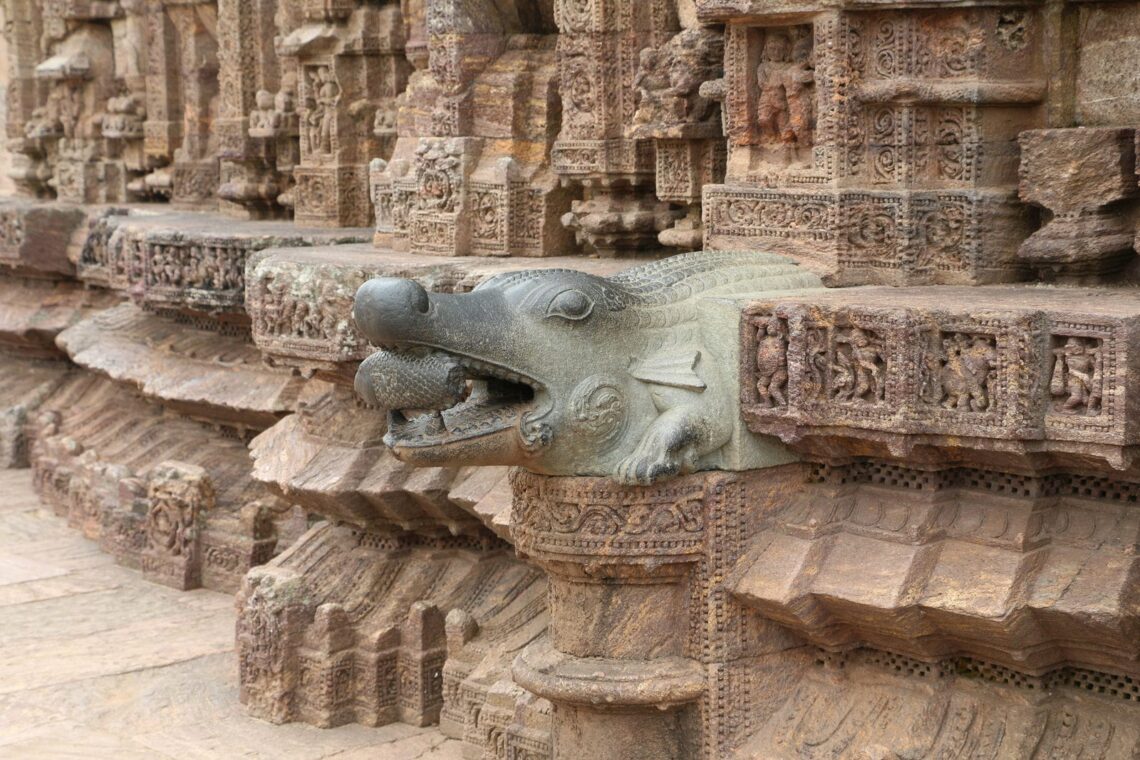
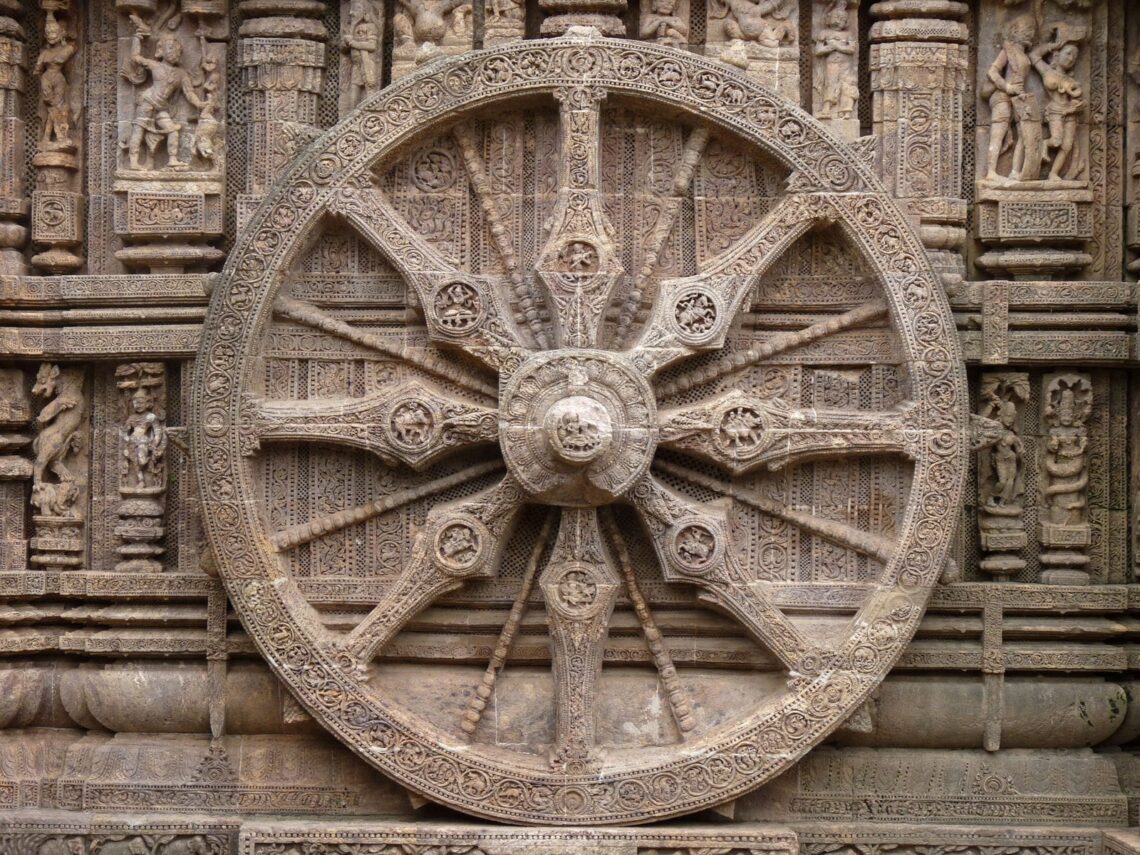
Konark Sun Temple’s ongoing restoration must balance preservation with accessibility. Core issues include conserving damaged carvings, replacing eroded stones appropriately, improving structural stability, controlling vegetation growth, managing heavy tourist activity, funding regular upkeep for a site of scale and significance, and meeting modern requirements while respecting its heritage status. Information is limited, but recent conservation efforts have likely introduced basic precautions like fire extinguishers, emergency routes, safety barriers, and site personnel to monitor visitors. Authenticity priorities restrict extensive contemporary upgrades. Many Indian travel companies like Exotic Heritage Group offer customized temple tours catering to architects, civil engineers, design professionals, and architecture students. These specialized tours elucidate architectural elements, layout, construction methods, sculpture techniques, and restoration processes in-depth from expert local guides well-versed in the site’s structural and artistic sophistication.
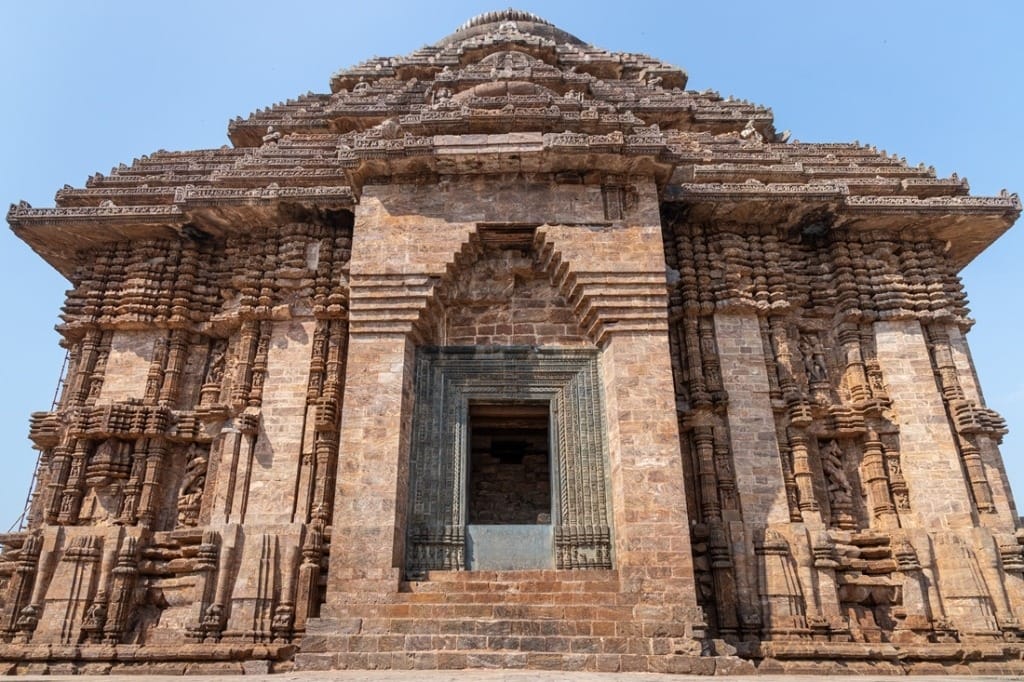
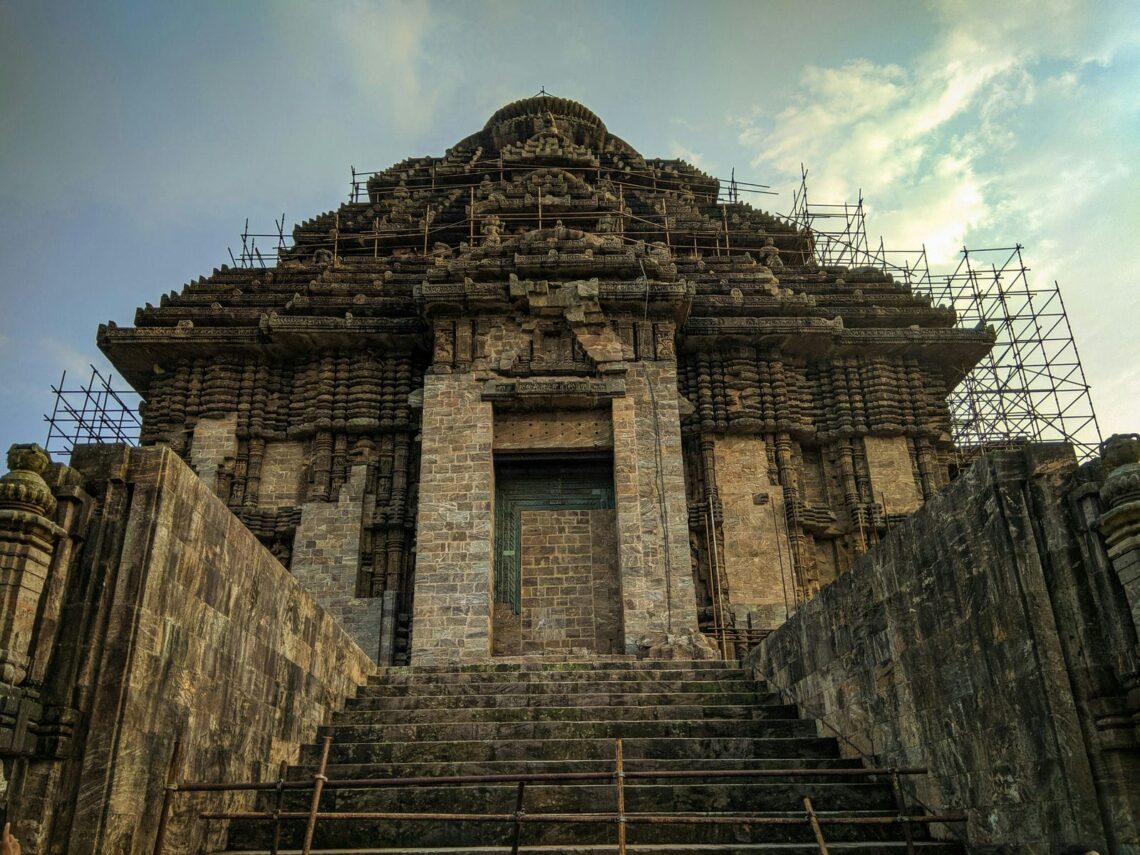
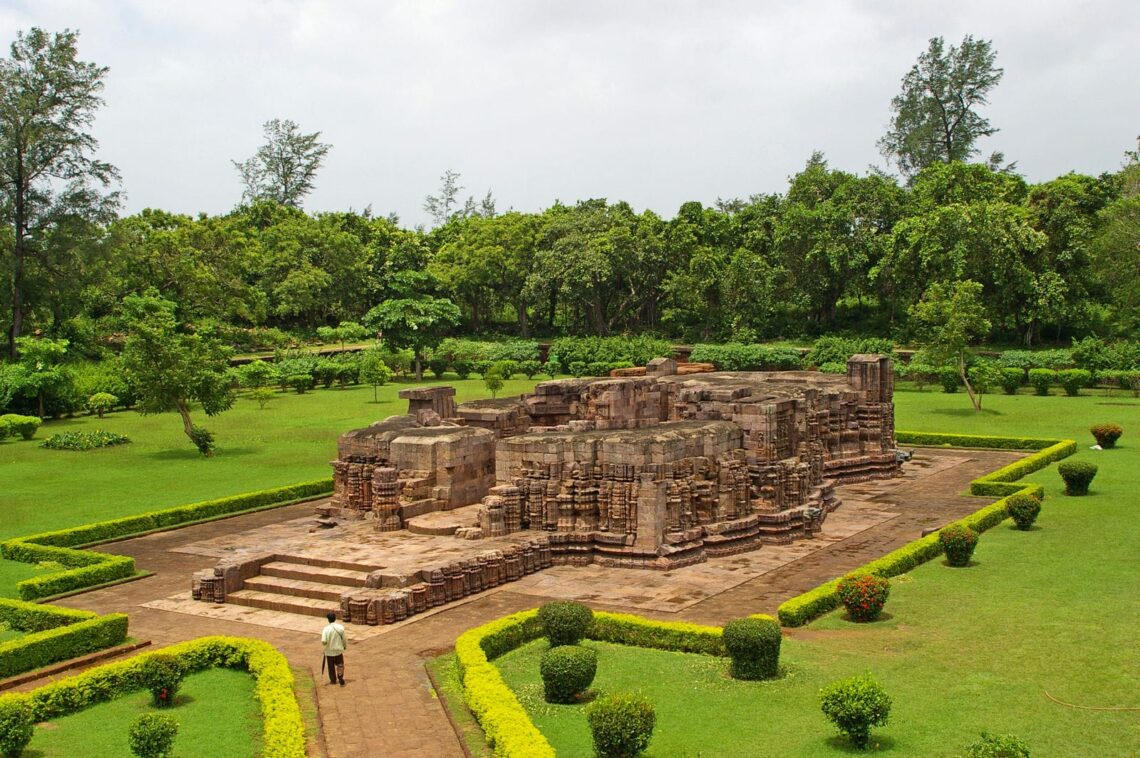
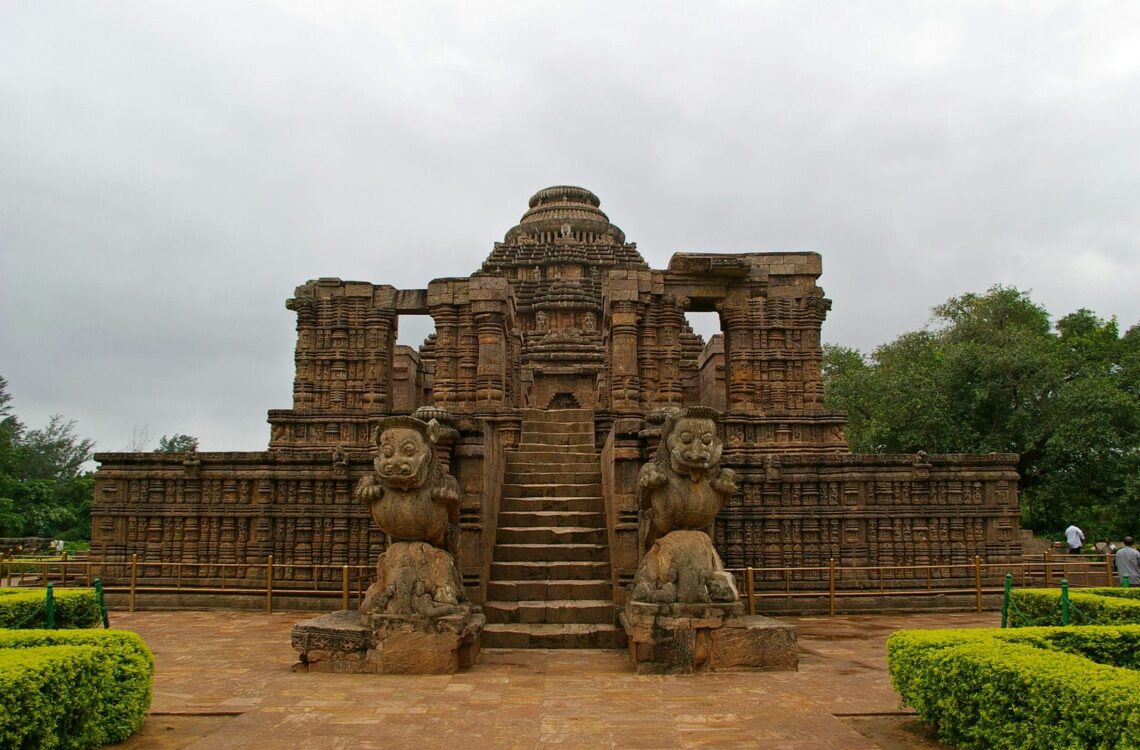
What are the top buildings in Asia with brutalist architecture?
Listed below are the top buildings in Asia with brutalist architecture:
- Shri Ram Centre for Art and Culture, New Delhi, India: The Shri Ram Centre for Art and Culture, located in New Delhi, is a prime example of Brutalist architecture in India. It was designed by Shiv Nath Prasad and completed in 1968. The building’s stark geometric form is characterized by extensive use of exposed concrete. Traditional Indian architectural elements are incorporated into the design, blending modernist principles with local design sensibilities. The building’s prominent location and unique design have made it a landmark in the city, attracting artists, intellectuals, and visitors worldwide.
- Tanglin Shopping Centre, Singapore: Tanglin Shopping Centre, located in the Tanglin area of Singapore, is an early example of Brutalist architecture in the city-state. It was designed in the 1970s, and its heavy use of raw concrete, boxy structure, and imposing presence make it a distinctive landmark. The building reflects the period’s rapid urban development and the embrace of modern architectural styles in Singapore. Tanglin Shopping Centre remains a popular destination for shoppers and visitors, showcasing the enduring appeal of Brutalist architecture.
- Tokyo Metropolitan Government Building, Japan: The Tokyo Metropolitan Government Building, designed by Kenzo Tange, is an example of Brutalist architecture. It was completed in 1991; its twin towers and unique, sculptural form of concrete and steel embody the Brutalist aesthetic while symbolizing Tokyo’s status as a global metropolis. The building’s design is intended to evoke images of traditional Japanese architecture, with its towers resembling pagodas and the use of concrete and steel representing modernity. The Tokyo Metropolitan Government Building is an iconic landmark and an important symbol of Japan’s post-war architectural heritage.
- Philippine International Convention Center, Manila, Philippines: The Philippine International Convention Center, designed by Leandro Locsin, is a hallmark of Brutalist design in the Philippines. It was opened in 1976, its bold, angular forms and raw, unfinished concrete surfaces are characteristic of the Brutalist style. The building’s unique design and prominent location have made it a landmark in Manila, attracting visitors from around the world. The Philippine International Convention Center is a testament to the country’s embrace of modernist architecture during national development.
- IIM Bangalore, India: The Indian Institute of Management Bangalore, designed by B.V. Doshi, is a prime example of Brutalist architecture in educational buildings. Its use of raw concrete, bold forms, and integration with the surrounding landscape reflects the Brutalist ethos of functionality and simplicity. The building’s unique design has been widely acclaimed for its ability to harmonize with the natural environment while providing a conducive learning environment for students. The Indian Institute of Management Bangalore is a testament to the enduring appeal of Brutalist architecture in educational settings.
- National Theatre and Concert Hall, Taipei, Taiwan: The National Theatre and Concert Hall in Taipei, Taiwan, completed in 1987, exemplify Brutalist architecture in Taiwan. Traditional Chinese architectural motifs soften their heavy, monumental forms and extensive use of exposed concrete, creating a unique blend of modernist and traditional styles. The buildings’ unique design has made them a popular destination for visitors to Taipei, showcasing the enduring appeal of Brutalist architecture in the region. The National Theatre and Concert Hall are important symbols of the country’s cultural heritage, embodying the ideals of tradition and modernity.
What are the top buildings in Asia with gothic architecture?
Listed below are the top buildings in Asia with gothic architecture:
- St. John’s Cathedral, Hong Kong: St. John’s Cathedral, located in Hong Kong, was constructed in 1849 and designed by British architect Robert Chisholm. One of the most significant religious landmarks in the city, this Anglican cathedral is a rare example of Gothic architecture in Hong Kong. Its pointed arches and stained glass windows are classic Gothic elements that make it stand out amidst the modern skyline of Hong Kong.
- San Sebastian Church, Manila, Philippines: The San Sebastian Church, located in Manila, Philippines, is a Gothic architectural landmark completed in 1891 and designed by Spanish architect Genaro Palacios. As the only all-steel Gothic basilica in Asia, this building features prefabricated steel parts shipped from Belgium, creating a Gothic structure with flying buttresses, pointed arches, and stunning stained glass windows made of metal. This church is a testament to the ingenuity and creativity of its designer and stands as a symbol of the Philippines’ rich cultural heritage.
- Meiji Mura Chapel, Inuyama, Japan: The Meiji Mura Chapel, located in Inuyama, Japan, was originally built in Kyoto in 1907 and later moved to the Meiji Mura Museum. It was designed by James McDonald Gardiner, an American missionary architect, and this chapel showcases Western Gothic architecture in Japan. It features Gothic elements like a pointed arch doorway and stained glass windows, representing the cultural exchange between Japan and the West during the Meiji period. The chapel’s location in the museum also highlights its importance as a historical and cultural artifact.
- Basilica of the Sacred Heart of Jesus, Pondicherry, India: The Basilica of the Sacred Heart of Jesus, located in Pondicherry, India, was built by French missionaries in the early 20th century and is a blend of Gothic and Neo-Gothic architecture. Its pointed arches, stained glass panels, and terracotta motifs reflect the influence of French Gothic architecture, making it a unique religious structure in Southern India. The design of this basilica is a testament to the skill and creativity of its French architects, who successfully blended their architectural tradition with the local culture.
- Cathedral of the Immaculate Conception, Chanthaburi, Thailand: The Cathedral of the Immaculate Conception, located in Chanthaburi, Thailand, is an example of Gothic Revival architecture in Thailand. Completed in 1909, this cathedral features characteristic Gothic elements like pointed arches and ribbed vaults, blended with local architectural styles, reflecting the multicultural influences in Thai architecture. The building is a testament to the ingenuity and creativity of its designers, who successfully incorporated local elements into the Gothic Revival style.
- Our Lady of Lourdes Church, Tiruchirappalli, India: Our Lady of Lourdes Church, located in Tiruchirappalli, India, is a Catholic church built in 1896 and is an example of Gothic Revival architecture in India. The church’s towering spire and detailed facade are a testament to the skill and creativity of its designers, who successfully adapted the Gothic style to the Indian context.
What are the top buildings in Asia with neoclassical architecture?
Listed below are the top buildings in Asia with neoclassical architecture:
- The National Museum of Western Art, Tokyo, Japan: The famous Swiss-French architect Le Corbusier designed the National Museum of Western Art. This museum, completed in 1959, is a premier example of Neoclassical architecture in Asia. The building showcases Le Corbusier’s interpretation of the Neoclassical style, featuring geometric simplicity, an emphasis on horizontal lines, and a rhythmic use of pilasters. The museum’s design, part of Le Corbusier’s unique approach to modern architecture, also incorporates elements of his “Five Points of Architecture” philosophy. The facade’s minimalist elegance and the balance of structural elements reflect a modernist reinterpretation of classical architecture, making it a landmark in Tokyo’s cultural landscape.
- The Presidential Office Building, Taipei, Taiwan: The Presidential Office Building was completed in 1919 during Japanese rule and exemplifies Neoclassical architecture in Taiwan. Japanese architect Uheiji Nagano designed it, and the building features a symmetrical facade, grand columns, and a prominent central tower. Its design reflects the influence of European Neoclassical architecture, adapted to the local context. The building has played a significant role in Taiwan’s political history. It is notable for its imposing presence, which includes ornate window frames, cornices, and a red-and-white color scheme.
- The National Museum of Korea, Seoul, South Korea: The National Museum of Korea, located in Seoul, is a prime example of Neoclassical architecture in South Korea. The museum’s design, completed in 2005, incorporates Neoclassical elements such as grand columns, a symmetrical layout, and a domed roof. The building blends these classical features with modern architectural principles, resulting in a majestic and functional structure. The museum’s facade, characterized by simplicity and harmony, creates a dignified and timeless appearance. Inside, the spacious, well-lit galleries provide a perfect backdrop for the museum’s extensive collection of Korean art and artifacts.
- Victoria Memorial, Kolkata, India: The Victoria Memorial is one of India’s most iconic examples of Neoclassical architecture. British architect William Emerson designed it. The building is dedicated to Queen Victoria and combines British and Mughal architectural elements. The structure features a large central dome, terraced gardens, and numerous statues and sculptures. White Makrana marble adds to its grandeur, evoking comparisons with the Taj Mahal.
- The Istana, Singapore: The Istana, the official residence of the President of Singapore, is a key example of Neoclassical architecture in the city-state. Built by the British colonial administration in 1869, the building features elements typical of Neoclassical design, including Doric columns, a symmetrical facade, and classical motifs. The Istana’s architecture reflects the colonial history of Singapore and serves as a symbol of the nation’s political heritage.
- Manila Central Post Office, Philippines: This building is an example of Neoclassical architecture in the Philippines. It was designed by Filipino architect Juan Marcos de Guzmán Arellano and completed in 1926. The post office features imposing Corinthian columns, a symmetrical facade, and a central dome. The building’s grandeur and elegant proportions reflect the architectural trends of the American colonial period in the Philippines. The Manila Central Post Office is a key functional building in the city and an architectural landmark, showcasing the Philippines’ rich historical and cultural heritage.
What are the top Asian architects in history?
Listed below are the top Asian architects in history:
- Kenzo Tange: A leading figure in 20th-century architecture, Kenzo Tange is known for his fusion of traditional Japanese styles with modernist design. Born in 1913 in Osaka, Japan, Tange’s work was heavily influenced by the destruction of Hiroshima, leading him to focus on architecture that fostered community and human interaction. His most famous work, the Hiroshima Peace Memorial Park, is a poignant example of this philosophy. Tange’s style evolved, incorporating elements of Brutalism and Metabolism, a movement he helped pioneer. His designs are characterized by their attention to the natural environment, use of modern materials, and respect for traditional Japanese aesthetics.
- I. M. Pei: Ieoh Ming Pei, born in Guangzhou, China, in 1917, was a master of modern architecture. Educated in the United States, Pei skillfully blended Eastern and Western architectural principles. His notable works include the iconic glass pyramid at the Louvre Museum in Paris and the Bank of China Tower in Hong Kong. Pei’s architecture is known for its emphasis on precision geometry, plain surfaces, and integration into the surrounding environment, making him one of the most celebrated architects of his time.
- Balkrishna Vithaldas Doshi: B.V. Doshi is a pivotal figure in modern Indian architecture. A Le Corbusier and Louis Kahn student, Doshi’s work uniquely blends modernist principles and Indian tradition. His designs often incorporate elements of Indian lifestyles, cultural traditions, and climatic considerations. The Indian Institute of Management Bangalore and his studio, Sangath in Ahmedabad, are testaments to his innovative approach, which emphasizes sustainability, functionality, and the spiritual dimensions of architecture.
- Arata Isozaki: Arata Isozaki is known for his diverse and futuristic designs and was born in 1931 in Ōita, Japan. His designs range from the Museum of Contemporary Art in Los Angeles to the Palau Sant Jordi in Barcelona. Isozaki’s architecture is characterized by its adaptability, global perspective, and the blending of Eastern and Western aesthetics. His work spans several decades, reflecting a deep engagement with architecture’s philosophical and cultural dimensions.
- Tadao Ando: Born in 1941 in Osaka, Japan, Tadao Ando is a self-taught architect famous for his minimalist designs and masterful use of concrete. Ando’s architecture is deeply rooted in Japanese tradition, particularly the concept of Zen, focusing on simplicity, natural light, and the harmony between interior space and the natural world. His notable works include the Church of the Light in Osaka and the Naoshima Contemporary Art Museum.
What are the top architecture firms in Asia?
Listed below are the top architecture firms in Asia:
- Nikken Sekke: Nikken Sekkei is one of Asia’s largest and most prolific architecture firms based in Tokyo. The firm is known for its diverse portfolio, which includes commercial, residential, and cultural projects. Nikken Sekkei combines contemporary design with sustainable practices, focusing on creating functional, aesthetically pleasing, and environmentally responsible structures. Their notable works include the Tokyo Skytree, the tallest structure in Japan, and the redesign of Camp Nou Stadium in Barcelona. The firm’s approach to integrating advanced technology with traditional design principles has made it a leader in innovative architecture.
- WOHA: WOHA, founded in 1994 by Wong Mun Summ and Richard Hassell, is known for integrating environmental and social principles in urban design. Their work, primarily in Asia’s densely populated tropical regions, is a testament to sustainable and green architecture. WOHA’s designs often feature extensive greenery, natural ventilation, and community spaces. Notable projects include the PARKROYAL on Pickering Hotel in Singapore and the Skyville @ Dawson residential complex. Their commitment to ecological sustainability and innovation in urban environments has earned them global acclaim.
- MAD Architects: Founded in 2004 by Ma Yansong, MAD Architects is a top architecture firm in Asia that has gained international fame for its futuristic and organic designs. The Beijing-based firm seeks to harmonize architecture with nature, often creating buildings that resemble natural landscapes. Their notable projects include the Absolute Towers in Canada, the Harbin Opera House in China, and the Lucas Museum of Narrative Art in the USA. MAD’s work is characterized by its bold, fluid forms and innovative use of space, making it one of the most distinctive voices in contemporary architecture.
- SANAA: Sejima and Nishizawa and Associates (SANAA), a top architecture firm in Asia, founded in 1995 by Kazuyo Sejima and Ryue Nishizawa, is known for its minimalist aesthetic. The Tokyo-based firm’s work is characterized by its clean lines, use of light, and transparent materials. Their design philosophy emphasizes simplicity and user experience. SANAA’s notable works include the 21st-Century Museum of Contemporary Art in Kanazawa, Japan, and the Rolex Learning Center in Switzerland. The firm received the prestigious Pritzker Architecture Prize in 2010, solidifying its status as a leading architectural firm.
- Bjarke Ingels Group: BIG is originally from Denmark but has significantly impacted Asia through its Hong Kong office. Bjarke Ingels founded the firm for its innovative and ambitious designs that challenge conventional architectural norms. BIG’s work in Asia includes the LEGO House in Denmark and the VIA 57 West in New York. The firm’s approach to sustainable development and playful yet functional design has set it apart in the international architectural scene.
- Herzog & de Meuron: The Swiss firm, led by Jacques Herzog and Pierre de Meuron, has a notable presence in Asia through its Hong Kong office. Known for their innovative approach to materiality and form, their work includes the National Stadium (Bird’s Nest) for the Beijing Olympics and the Tate Modern in London. Their Asian projects showcase a blend of local cultural elements with contemporary design, making them one of the most influential architecture firms in the region.


